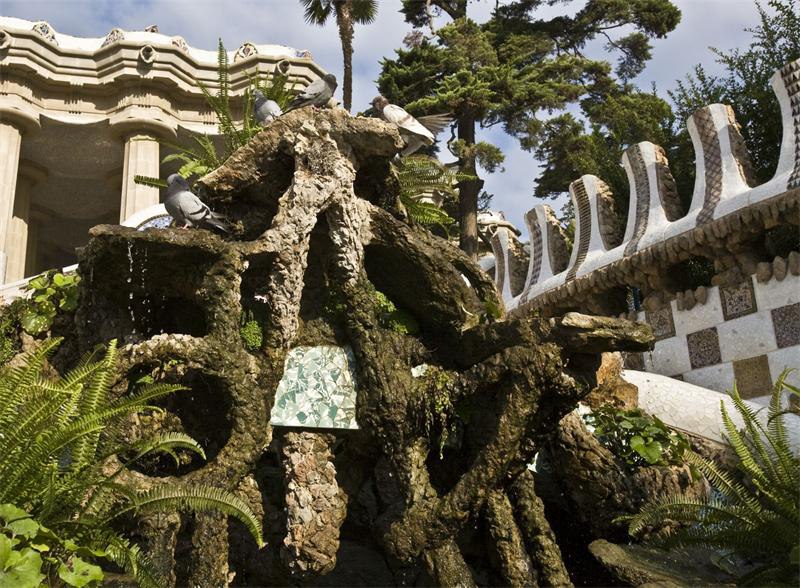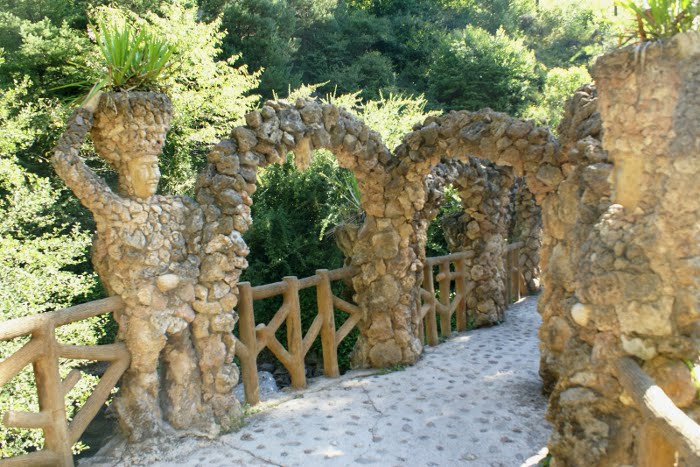Visiting Park Güell: History, Photobombs, and Gaudí’s Lizard
What do you get when you cross Alice in Wonderland with a Barcelona park? Antoni Gaudí’s psychedelic dreamland, Park Güell. Less walk in the park and more trip down the rabbit hole, visiting Park Güell has convinced many people that ‘God’s architect’ divined his inspiration from the mind-expanding properties of certain exotic fungi.
Whether that’s true or not, visiting Park Güell is enchanting, relaxing, and one of Barcelona’s essential cultural experiences. Unbound by the structural limitations of one single building, Gaudí’s artistic vision was set loose upon the side of Carmel Hill in all of its otherworldly glory, culminating in an urban green space that is quite unlike anything else.
The park provides an open-air walking tour inside the mind of a certified creative genius, which is an awesome experience, especially when it’s framed by spectacular rooftop views over the sun-kissed city he adored and very much defined.
So if you’re planning a trip to the Catalan capital, or you’re there already and squinting at this as the sun glares off your screen in the rabble of La Rambla, here’s everything you need to know about visiting Park Güell, as well as some quirky Park Güell history to make the experience all the more magical.
Skip to a section
1. Park Güell History
“Hmmm, still only one like from @realantonigaudi”
Named after its patron, Eusebi Güell, Park Güell was built between 1900 and 1914 in the quiet foothills of the Serra de Collserola mountains. It was originally intended to be an exclusive community for Barcelona’s affluent citizens, sort of a Hollywood Hills-esque escape from the smoggy bustle below, with luxurious mod cons like running water and breathable air.
So Güell hired architectural psychonaut, personal friend, and pioneer of Catalan Modernisme, Antoni Gaudí to design the private residential park. Interpreting “private residential park”, to mean “kaleidoscopic garden of earthly delights – go nuts!”, Gaudí set to work on designing a city park inspired by nature and heaven, and the results were fittingly divine.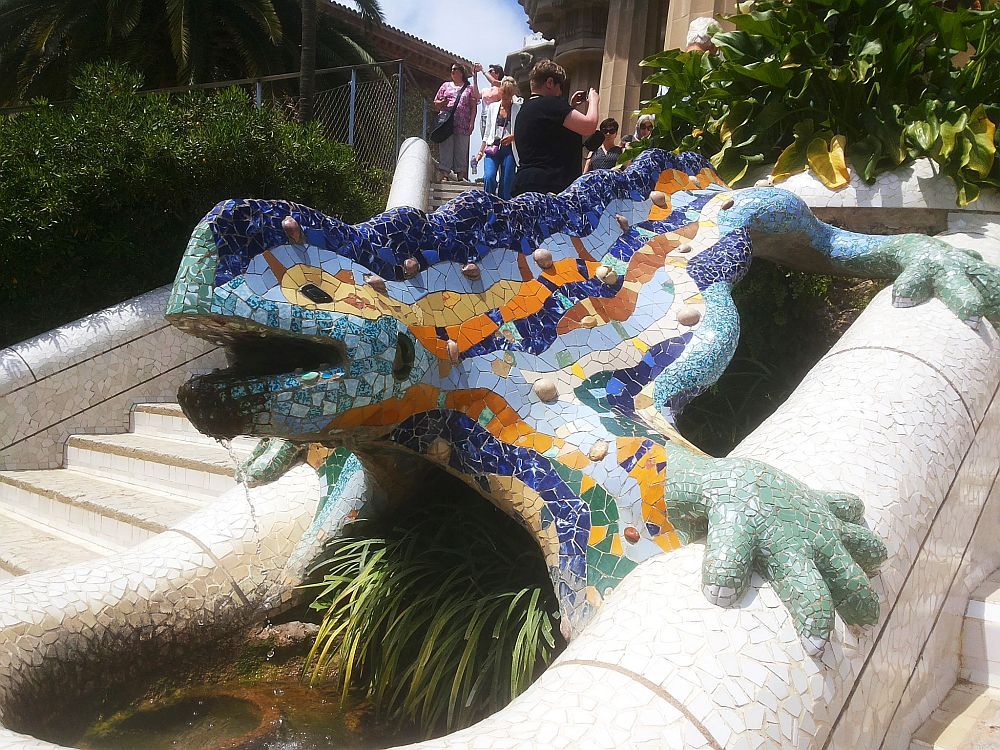
The project never gained very much traction though, with interest levels in the now-UNESCO World Heritage site hovering somewhere around whatever Catalan for “meh!” is. Of the 60 luxury villas that were planned, only two homes were ever built. Barcelona’s wealthy were apparently not ready for Gaudí – a penny for the thoughts of their grandkids now!
After consulting his trusty beard (and Güell), Gaudí decided to buy and move into one of the houses with his father in 1906, and they lived there for 20 years until the architect’s unfortunate death after a tram accident in 1926. Park Güell was opened as a public park later that year, and it’s left everyone who visits awestruck since.
2. Visiting Park Güell
How to get there:
A beautiful sunny day in Barcelona. Good thing I brought this hoodie.
Barcelona offers lots of transport options, so there are several ways to get to Park Güell. Taking the metro is possible, and there is a free shuttle bus to the gates of the park that departs from Alfons X metro station.
Regular buses will also take you within walking distance of the park, with lines 24 – 31 – 32 – H6 – 92 all operating within the vicinity. It is a steep walk up the hill though, so be prepared for some cardio if you go for this option!
By far the most convenient way to get to Park Güell is the Barcelona Hop-on Hop-off Bus. Stopping at all the city’s major attractions, this bus will take you directly to the gates of the park, and then on to wherever it is you plan on going after, while providing a breezy open-top road trip around the city along the way.
Park Güell opening times:
The park is open all year round, but the opening and closing times vary slightly throughout the year.
The park is currently open from 9:30 – 19:30.
The best time to visit Park Güell:
The best time to visit Park Güell all depends on who you are. If you’re lucky enough to live in the vicinity of the park or are a member of the Gaudir Més program, you get free entry to the park before and after its official opening and closing times.
Getting into Park Güell:
It appears the breadcrumb trail ends at this doorway…
First things first: Park Güell is big – 19 hectares big. It’s split into two zones, the unrestricted public area – comprising about 90% of the space, which is free to enter and amble around – and the monumental zone, where the vast majority of Gaudí’s fairy-tale handiwork is to be found. With so much free area to explore, some people ask if the Park Güell monumental zone is worth it? To put it mildly, the answer is yes, it is definitely worth it!
At just under €13 for an adult ticket and €9 for a child’s ticket, the monumental zone is relatively cheap for a must-see Barcelona attraction. However, the ticket queues to get inside tend to stretch as far as Madrid, and Barcelona is balmy at the best of times, so planning ahead is key.
Be smart and book your Park Güell tickets in advance to avoid slow-cooking for hours in the daytime scorch, while other smug-looking culture nerds waltz right by you, laughing with lighthearted merriment, and somehow summoning their own private air conditioning.
Tickets are time-slotted, so it’s best to arrive a few minutes early when visiting Park Guell. You have 30 minutes to enter the park from the time stated on your ticket. So, for example, if the allocated time on your ticket is 10:00, you have until 10:30 to enter the monumental zone.
Once inside, you’re free to stay as long as you like. If you want to know even more about the park as you explore, you can choose a skip-the-line ticket with a guided tour, and let an expert narrate all that fascinating Park Guell history in real-time – complete with some juicy insider knowledge! Either way, you can expect to be spoiled for all future parks. Be warned!
Tip – This is an equal-opportunities jaw-dropper, ideal for families, couples, groups of friends, and solo wanderers, but it’s not exactly stroller-friendly in some parts, and high heels are probably not a great idea either. Wear comfortable walking shoes, and bring your own water and snacks.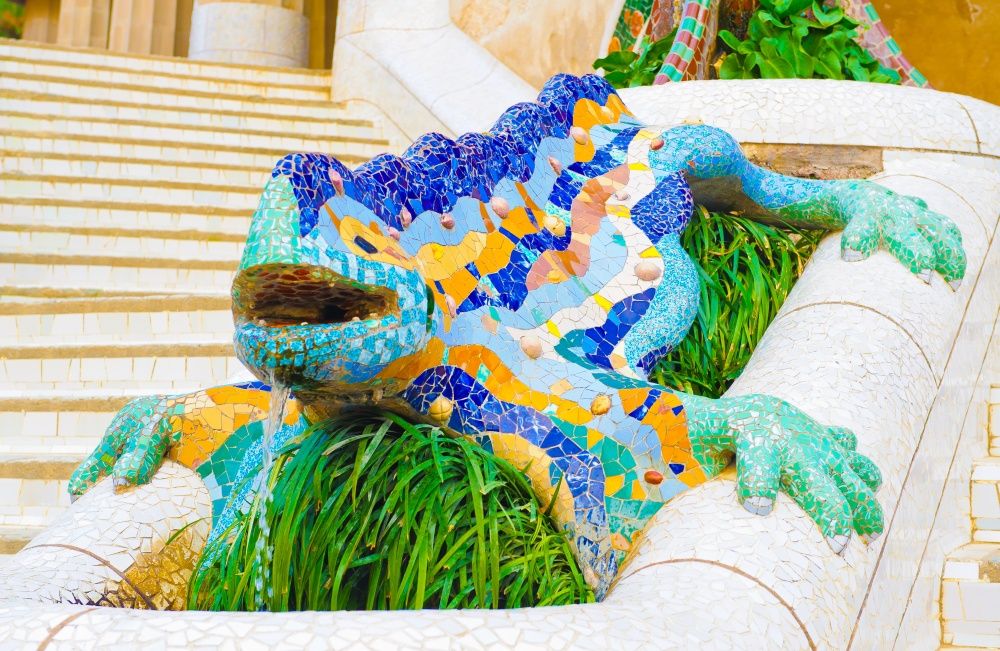
Update: To comply with local safety measures and ensure everyone can enjoy a safe experience, everyone is currently required to wear a face mask at all times when visiting Park Güell.
3.
Park Güell Highlights
The Porter’s Lodge
The first installment of enchanting architecture you’ll encounter in the real eye-candy zone monumental zone arrives in the form of two impossibly charming gate lodges. They appear to be constructed entirely out of gingerbread – complete with frosted rooftops and candy-cane spires. Classic Gaudí. The undulating curved lines are an ode to nature and a motif that features prominently throughout the park. Do not attempt to eat the houses. You will be removed.
The gate lodges are admittedly more impressive from the outside, as they now function as an information centre and a gift shop. You can take a look inside, but you will have to queue up, and you didn’t really come halfway up Carmel Hill to be cooped up indoors now did you? Onwards!
The Dragon Stairway
The Dragon Stairway
It’ll definitely have caught your eye on the way in, as it’s kind of hard to miss: the Dragon Stairway is exactly what you’d expect a stairway into wonderland to look like.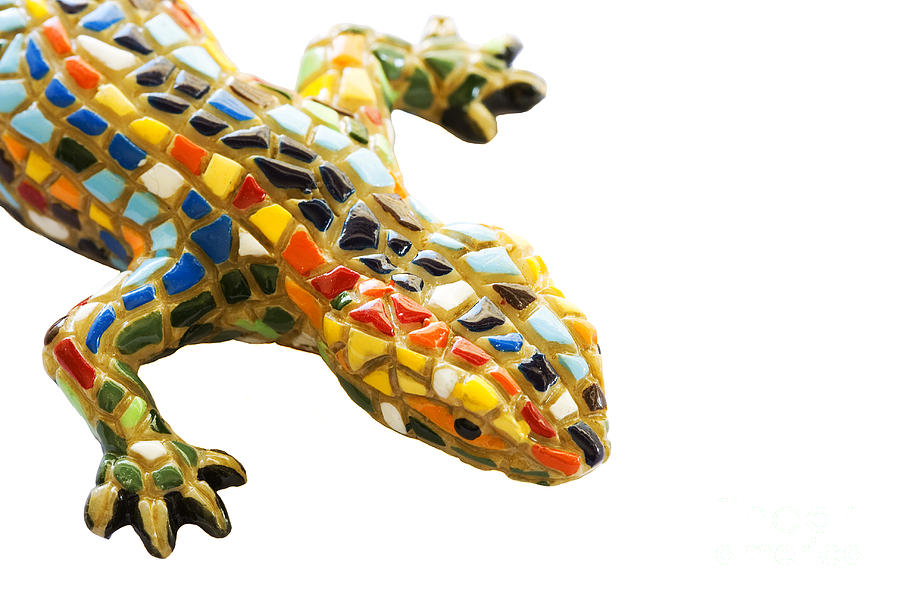
Halfway up the steps, on the first landing, there’s a small dragon fountain proudly poking out from the yellow and red emblem of Catalonia. He’s pretty cute, but it’s his big brother a few steps up that has grown into a symbol of Barcelona and a defining icon of Park Güell history, and hence tends to attract all the attention. He goes by the name of…
El Drac – the Park Güell lizard
Time to catch the dragon.
He might sound like the heavily mustachioed leader of a scary biker gang, but El Drac is, in fact, a flamboyant lizard and the friendly guardian of Park Güell. Meaning ‘the dragon’ in Catalan, El Drac’s fancy scales are fashioned out of broken shards of mosaic tiles, a style known as trencadís, which Gaudí helped to pioneer.
Gaudí’s asymmetrical arrangement of different shapes, sizes, and colors of the tiles is perhaps another nod to nature’s imperfect perfection, and you’ll see plenty of trencadís while visiting Park Güell.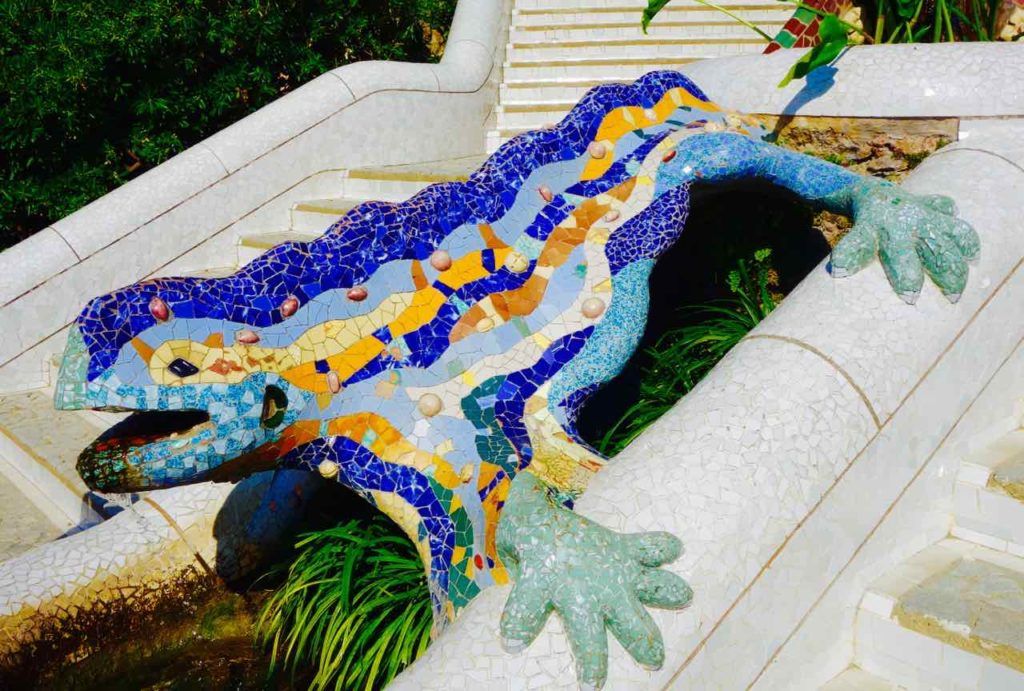
Arguably the most famous part of the park, El Drac singlehandedly keeps several dedicated Instagram servers overheating on a daily basis. At peak times, you might have to wait for the planets to align before you can snap a photobomb-free selfie. But every seasoned selfie-hunter knows that saintly patience and simmering misanthropy are all part of the fun.
The Hypostyle Room
The Hypostyle Room
After gaining an audience with the Park Güell lizard, hop to the top of the Dragon Stairway and you’re in Ancient Greece. Kind of. A big fan of Classical architecture, Gaudí designed the would-be marketplace of Park Güell with a colossal open hall supported by 86 Doric Order-style columns, called it the Hypostyle Room, and presumably enacted a strict toga-only dress code.
The ceiling of the Hypostyle Room is a pristine wave of concave domes decorated with beautiful – yep, you guessed it – mosaics.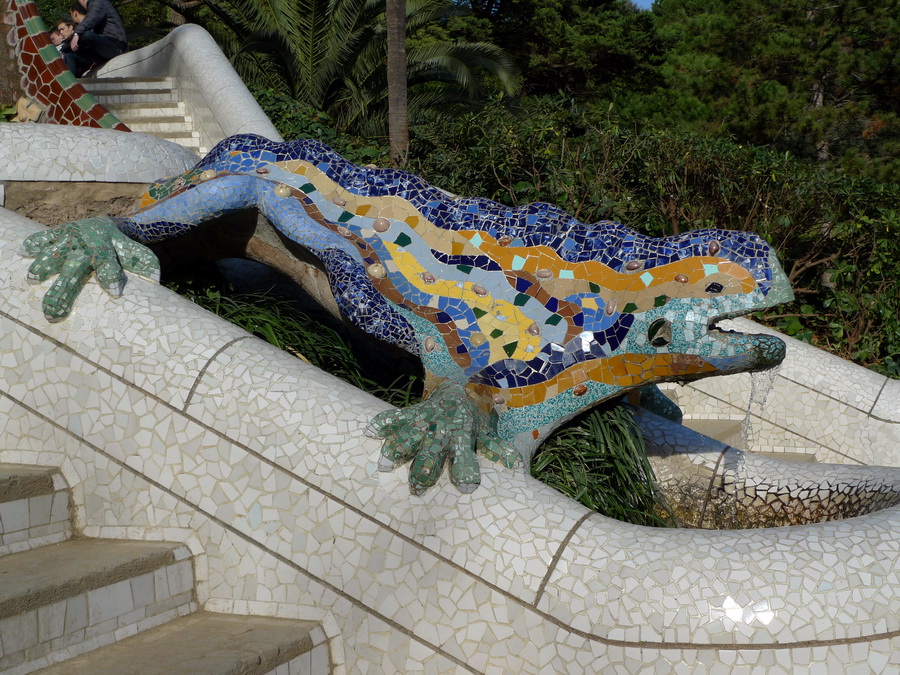
Speaking of the fluidity of nature and engineering trickery, the Doric columns were also designed as part of an ingenious water-drainage system. The system collected rainwater from the roof of the Hypostyle Room, filtered it through porous precast concrete, then channelled it down through hollows in each column and into a large reservoir. This ensured structural integrity, provided filtered water for the community, and irrigation for the park. Talk about spotting a gap in the market!
Cool, but was any potential overspill from the underground cisterns designed to shoot dramatically out of the mouth of El Drac during heavy rainfall, you ask?
Yes. Yes it was.
What engineering lizardry is this?
Plaça de la Natura
Plaça de la Natura
The Classical theme continues above the Hypostyle Room with an enormous open forum reminiscent of an Agora (central public space) of Ancient Greece.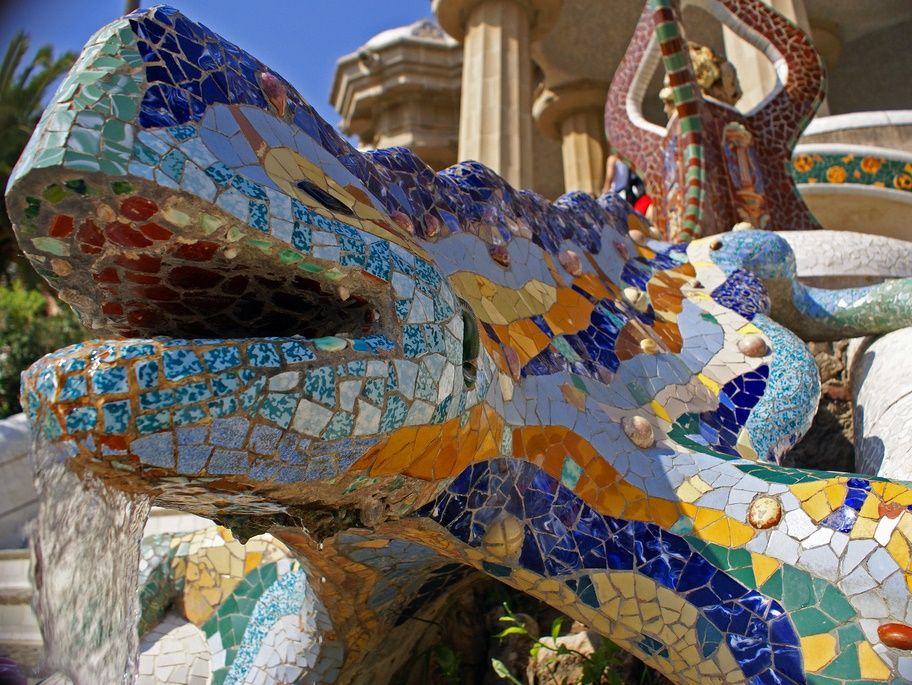
On a clear day, you’ve got swaying green palm groves on one side of the plaza, and on the other, a panoramic cityscape stretching languidly out to where the azure sky and the Mediterranean meet and melt into a fuzzy blue horizon line – all framed by a battle royale of fencing selfie-sticks! This is one of those moments everyone wants to capture. So wait for an opening in the crowd, then pounce!
While not striking your most windswept and ‘grammable poses with the coast of Catalonia, you might notice that the entire area of Plaça de la Natura is unpaved. As you are standing above the Hypostyle Room, the ground you’re walking on is designed to be porous to filter surface water, remember?
However, you might not notice this at all. Instead, your eye might be drawn to the conspicuously sidewinding rainbow bench that encircles the square like an enormous snake…
The Serpentine Bench
The Serpentine Bench
At this point in the adventure, with wanderlust levels and your ability to appreciate intricate mosaics plateauing off just a teeny bit, it’s time to chill, rest your weary bones, and take a break from all those mosaics.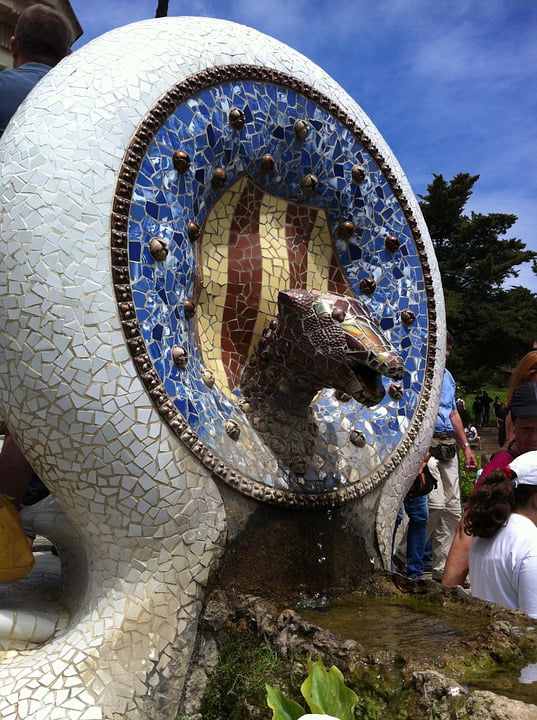
Wrong! Every inch of the spectacular Serpentine Bench is emblazoned with exquisite fragments of technicolor tiles, making it one of the park’s most iconic spots, and arguably Gaudí’s trencadís masterpiece – even if the Park Güell lizard is more famous. Just as awesome to look at as it is to sit down on, the Serpentine Bench is usually quite busy, but the sheer scale of it means you never have to wait too long to find a place to sit and inspect the artistic majesty.
The Serpentine Bench
It’s a good idea to bring your own food and bottled water while visiting Park Güell, and the Serpentine Bench makes for the perfect rest area where you can sit with a picnic, gaze out over the city, soak up some rays, and be at peace with nature. Or, taste the sweet venom of revenge, and deliberately photobomb other people’s perfect moment. Hey, they don’t call it the Serpentine Bench for nothing.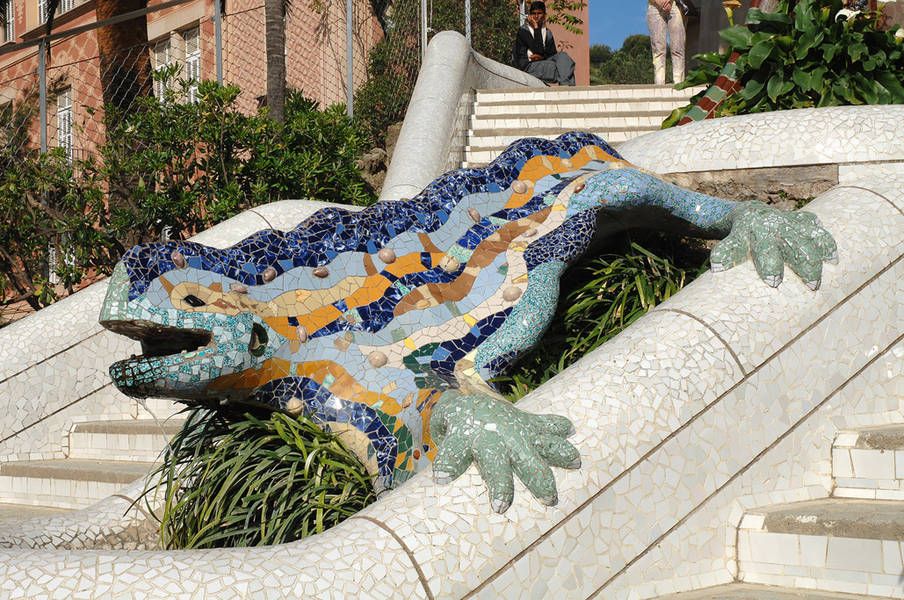
Walk this way! Park Güell’s viaducts and passages
The idea of a shared space was central to Park Güell’s foundation. However, nestled on the side of a mountain as it was, it presented Gaudí with the unique challenge of designing the space so that it felt like a community, rather than a series of disconnected villas in the hills. Mountains, after all, are famously difficult to move.
Unique challenges were Gaudí’s idea of fun though, and so he designed a winding web of walkways, bridges and viaducts to connect the higher and lower reaches of the park. He was never one to build a simple walkway where a beautiful one would do, so needless to say, these are some of the coolest parts of Park Güell. Picture gnarled, arching tree-like columns that look like they were forged by woodland elf-folk aeons ago, and you’re pretty close.
The three viaducts are called Pont de Baix, Pont del Mig, and Pont de Dalt, and each one is an engineering marvel.
The Austria Gardens
Given the zany, unconventional nature of Park Güell, perhaps the strangest part of the park is ironically its most normal. The Austria Gardens sit on the site where many of the community’s houses were intended to be built. After it was opened as a public park, this land was instead used as a plant nursery, and in 1977 many trees and plants were donated by Austria, hence the name.
Being the newest chapter of Park Güell history, the foreign flora of the Austria Gardens stands in stark contrast to the rest of the park, with northern conifers and evergreens looking decidedly non-tropical in the midst of all those sun-washed palms. Although the Austria Gardens came into being long after Gaudí’s passing, the master of quirky landscaping probably would’ve appreciated the weirdness of its conspicuous normality!
The public park – Park Güell free area
After you’ve basked in the glory of Gaudí’s sublime designs, admired the regal Park Güell lizard, and given your camera roll a decidedly mosaic-driven feel, take some time to explore some of the public areas of Park Güell.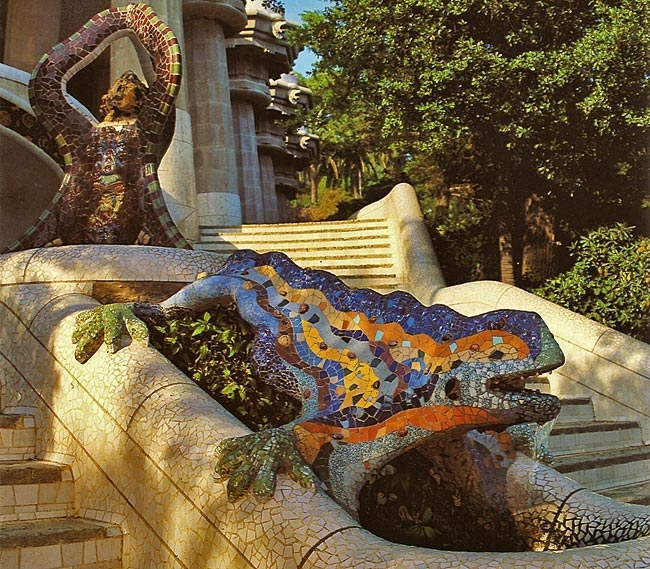
4.
What to Add to Your Barcelona Itinerary
Park Güell is definitely one of Barcelona’s essential cultural attractions. But there is so much more spellbinding architecture to see in the city. If the park piqued your interest in the fantastical buildings of Antoni Gaudí, you absolutely cannot leave the city without seeing his pièce de résistance, the mind-blowing Sagrada Familia.
“One of the most hideous buildings in the world” – George Orwell.
Widely considered Gaudí’s masterpiece, construction on this huge basilica began in 1882 and is scheduled to finish in 2026, one hundred years after his death. Every square foot of this towering temple is decorated with intricate spiritual and naturalistic art.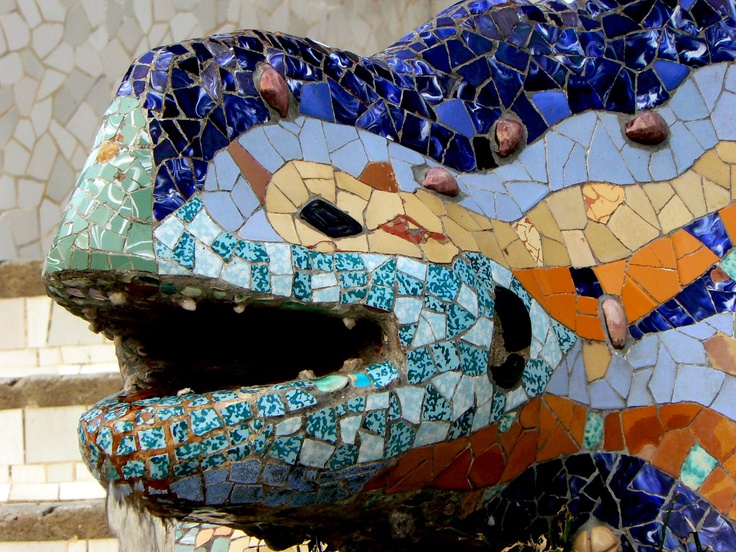
Ok, it’s definitely kicking in now!
For something slightly less bombastic, but equally quirky and quintessentially Gaudí, stop by some of his imaginative city residences, like Casa Batlló, Casa Milà (La Pedrera), or the first house he ever designed, Casa Vicens. Each one of these incredible dwellings is unique, but each also displays Gaudí’s limitless imagination and playful creativity.
If you’re all Gaudí’d out after visiting Park Güell there are plenty of other magical activities and attractions around Barcelona to keep you double-taking, from amazing art museums and galleries to world-class aquariums and zoos, cable-car rides high over the city, the home of one of the world’s best football teams, tours to the jaw-dropping natural splendor of Montserrat, flamenco shows, and plenty of pretty districts to wander around, chill on a terrace with tapas and a cold drink. Salutacions!
Make sure you book your Park Güell tickets in advance, to discover this playground of dazzling architecture during your stay in Barcelona.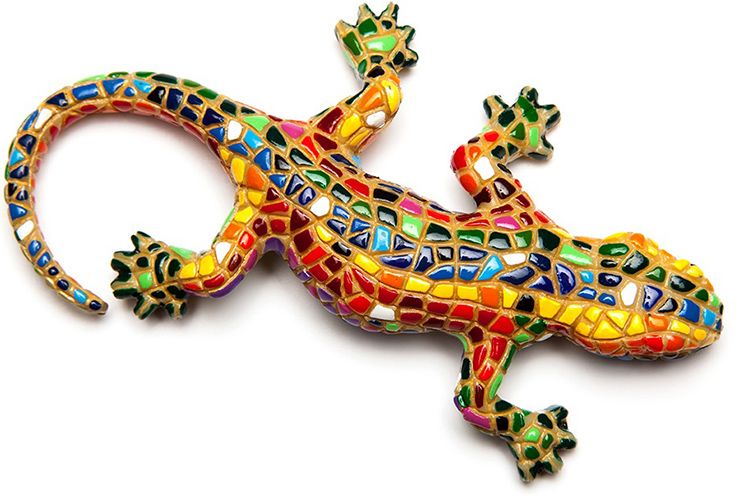
Tags: BarcelonaCulture
Park Güell – Gaudi’s Extraordinary Park
Home / About Barcelona / Park Güell – Gaudi’s Extraordinary Park
in About Barcelona
May 19, 2021
0
2,001 Views
Out of all the projects taken on by ANTONI GAUDÍ, no other encapsulates the complete and perfect harmony of nature and architecture than Park Güell. Eusebi GÜELL commissioned Park Güell. He sought to create a stylish and lavish park for the aristocrats of Barcelona. The park contains stunning stone structures, spectacularly detailed tiling and fascinating buildings, eventually becoming Barcelona’s most unusual public park.
The architect chose an uneven site covering a surface area of 15 hectares. The original project included the construction of 60 detached houses.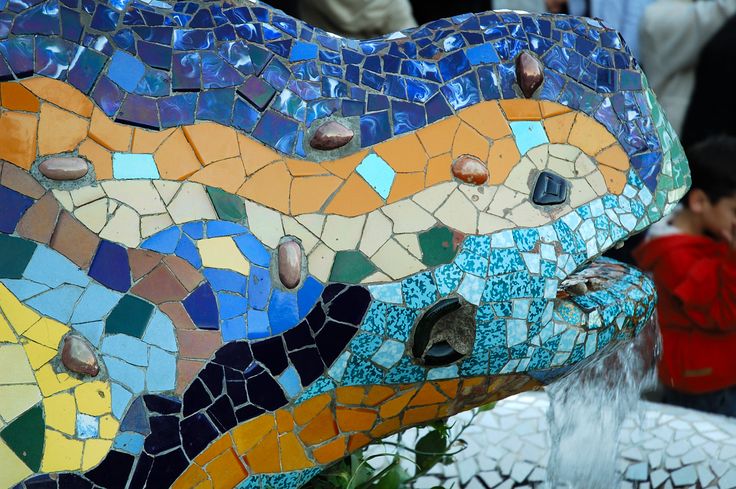
The Park
While passing through the entrance of Park Güell, the remarkable dragon fountain without fail captivates the attention of passers-by. This dragon is bejewelled in beautiful coloured tiling and there is something rather mesmerising and enchanting about it. There is a beautiful walkway supported by twisting rock pillars that appear to be growing out of the ground like tree trunks. Although these pillars are somewhat peculiar in shape, they somehow also feel strangely natural.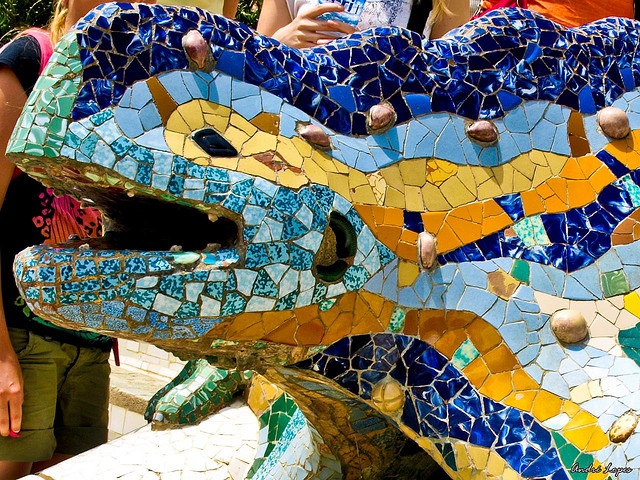
If you reach the top of Park Güell, there is a blissful terraced area overlooking the city. In there, you can get a sublime view of the park and of course Barcelona City. Here you will find an explosion of color with the beautiful tiled mosaic seats. Their vibrant colours are truly breath-taking. Park Güell also has a small house in the park, which is where Gaudí lived at one point. The house has now been converted into a museum and contains interesting furniture and artifacts which were also designed by Gaudí.
The pavilions and the most known symbol of the Park
In Park Güell there are two houses as well as pavilions for visitors and park keepers. The Hansel and Gretel story inspired Gaudí for the pavilions’ design: radiant coloured tiles and ornamented spires cover the curved roofs. The staircase at the entrance of the park is a magnificent sight.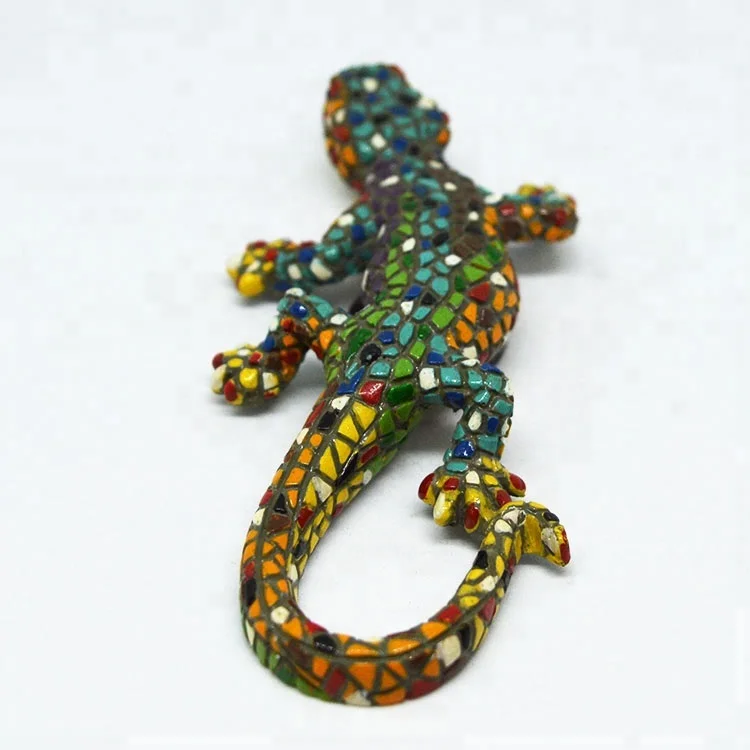
Tickets and Prices
Park Güell is located in the district of GRÀCIA. You have to pay to access the monumental area of the park where all the buildings are. We recommend to book a ticket online in advance to be sure you can enter the park. The number of visitors per day is, in fact, limited. However, you can also walk freely in other parts of the park. Remember that it is free the visit on the first Sunday of every month.
PRICES: For kids from 0-6 years old is free, for kids from 7 to 12 is €7 and the general ticket is €10
Ver esta publicación en Instagram
Una publicación compartida por Park Güell Oficial (@parkguell)
Information
TRANSPORT: By Metro – Vallcarca or Lesseps stations (Green Line, L3) On leaving the metro follow the street signposts for the park | Bus – 24 and 92.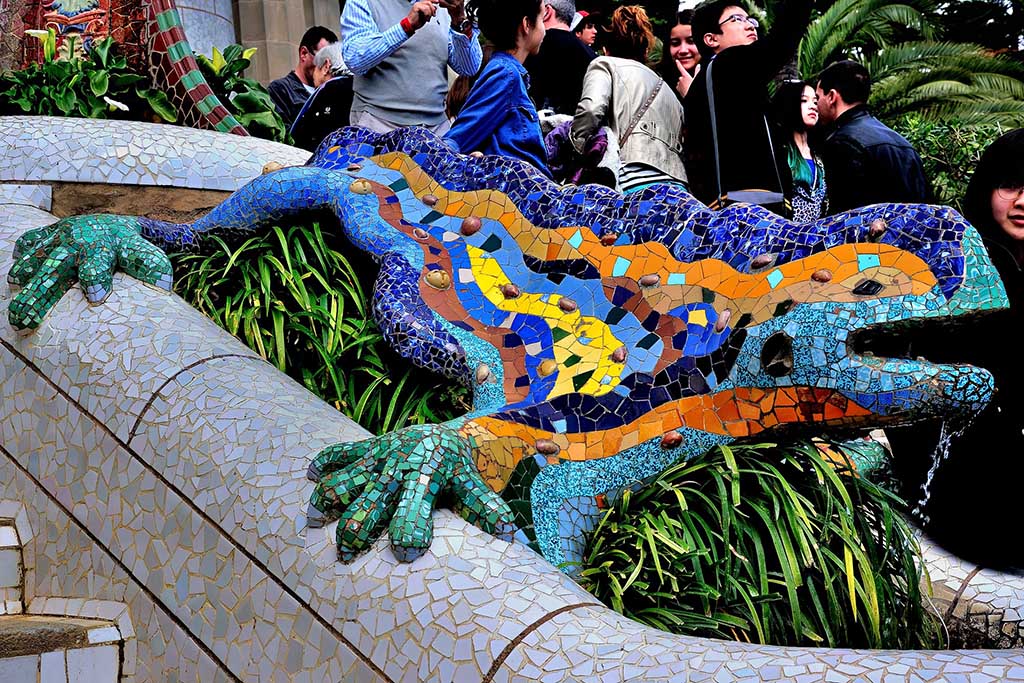
OPENING HOURS: Everyday 9:30-19:30
ADDRESS: Carrer d’Olot 5, 08024, Barcelona
Are you planning a trip to Barcelona and looking for somewhere to stay? Why not take a look at the available apartment rentals on our website! Please feel free to contact us with any questions you may have.
2021-05-19
- tweet
-
Previous: The Best Terraces in Barcelona
Next: Carrer del Parlament: a visit to food paradise
Written by: Barcelona-Home
Hello there! We hope you are enjoying our website full of interesting blogs to read. We absolutely love Barcelona and we hope that when you come to visit you will too!
Gaudí’s lizard – a symbol of Barcelona
In the Park Güell there is an impressive Gaudi’s mosaic lizard, which has become a true symbol of Barcelona.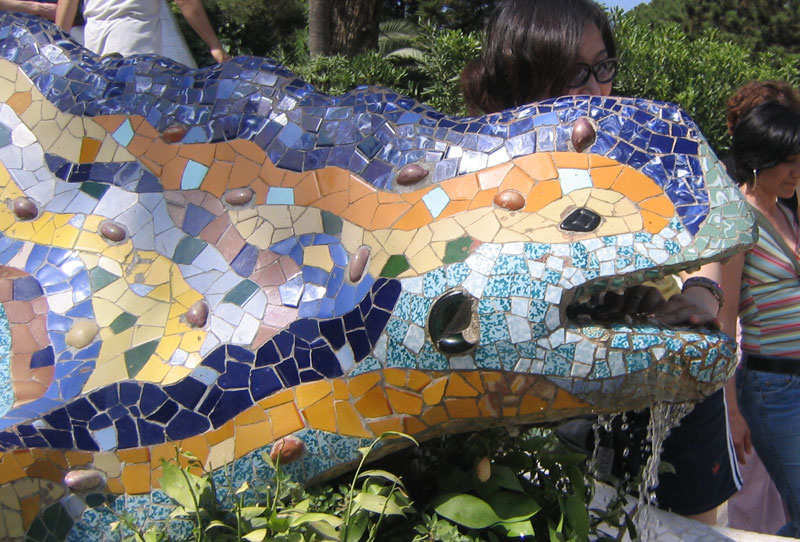
Gaudí’s lizard in Parc Güell
Antonio Gaudí’s lizard, 2 m long and 40 cm long, is the centerpiece of the fountain. The latter is located on the main staircase of the park – the Dragon Stairs. The reptile perched on an oval-shaped bowl. With her paws, she holds on to the edges of the bowl, and water flows from the ajar mouth.
Don’t forget to buy your tickets in advance to skip the lines. You can do this using the link .
Gaudí’s lizard and trencadis technique
Broken ceramic elements were used to finish and decorate the sculptures, including the famous lizard.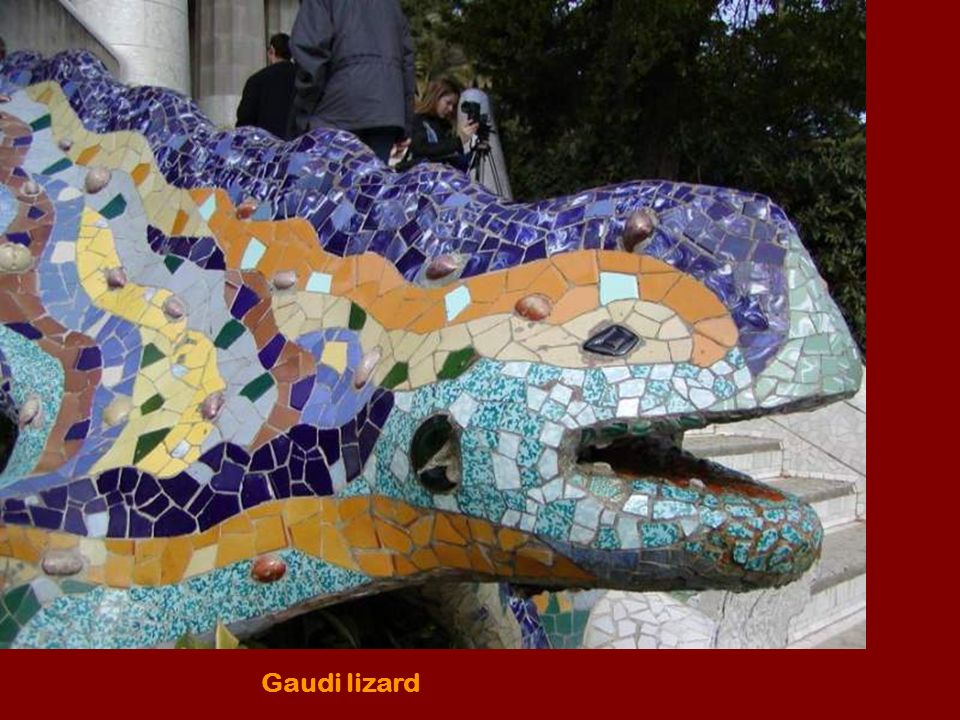
“Trencadis”
“Trencadis” (Trencadis) – a technique for creating compositions from improvised materials.
After the opening of the park, many began to consider Antoni Gaudí the inventor of this technique. In fact, the architect and his best student, Josep Maria Jujol, only helped develop the trendcadis technique.
Even the ancient Romans knew the mosaic technique opus tessellatum, then the fragments were used mainly to hide irregularities. In the 19th century, in the territory of Catalonia, in painting and architecture, they began to master the new technique of “trencadis” under the influence of a peculiar neo-mudejar style.
In America, trendcadis is known as crazy paving, and in France as pique assiette.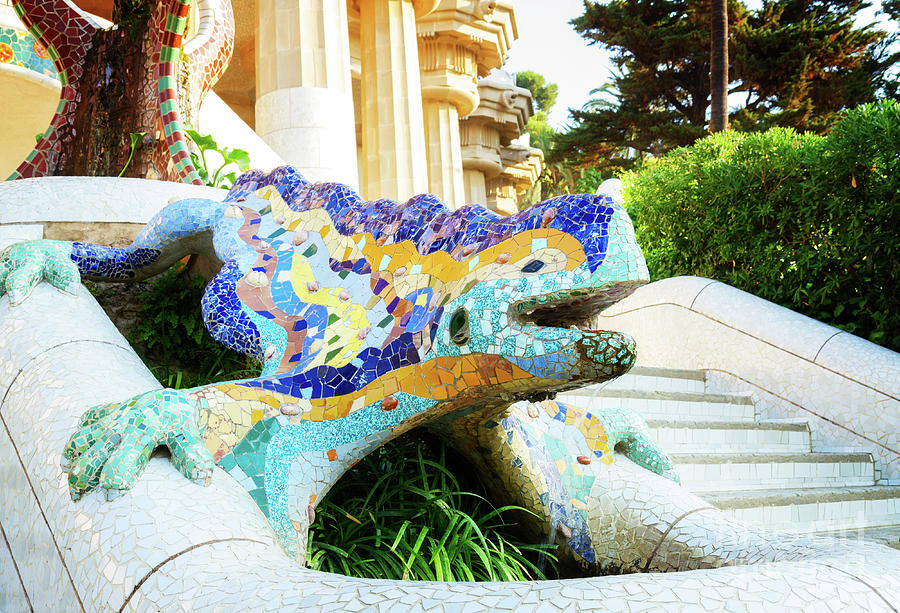
Parc Güell, Trencadis
Genuine works of art by Antoni Gaudí
In addition to the lizard, Gaudí and Jujol decorated with mosaics:
- the ceiling of the “Hall of 100 Columns”
- large sea serpent bench
- Sagrada Familia
- houses Casa Batllo and Casa Mila
Casa Batllo
Antonio Gaudi respected nature, so he was very inspired by the idea of creating original creations from rubbish, which under other circumstances would have migrated to the city’s landfills.
Don’t forget to buy your tickets for Gaudí attractions in advance. You can do this online using the link on the official ticket platform.
Serpent, salamander or crocodile
In 1969, a copy of the mosaic lizard took pride of place among the exhibits of the Madrid Museum of Modern Art. But since the architect did not give her a name, the researchers could not decide which of the mythical creatures the lizard embodied.
Various versions put forward:
Crocodile on the coat of arms of the city of Nimes
- The serpent Python is an evil and dangerous creature from ancient Greek mythology. He guarded the passage to the Delphic oracle and was killed by Apollo. Above is a tripod, which may indicate that the monster was destroyed by the golden-haired god of Light.
And in the center of the sculpture is a stone, as if symbolizing the “navel of the Earth” in Delphi. These elements support the snake theory.
- The alchemical salamander is undoubtedly a symbol of the element of Fire. Medieval legends speak of the amazing abilities of a cold-blooded creature, able, thanks to its low body temperature, not only to survive in fire, but also to extinguish the flame, no matter how strong it may be.
- Crocodile, which was depicted on the coat of arms of the city of Nîmes. In this French town, a friend of Antonio Gaudi and the former owner of the park, the Catalan industrialist and philanthropist Eusebi Güell i Basigalupi, spent his youth.
The lizard is not the first reptile the architect has created. The first salamander was designed by Antonio Gaudí before he became famous, and became part of the decoration of the Cascada Fountain, which he worked on with Josep Fonsere.
Gaudí’s Lizard in Ciutadella Park
The Parc Güell lizard looks more like its predecessor than an evil snake or a French crocodile.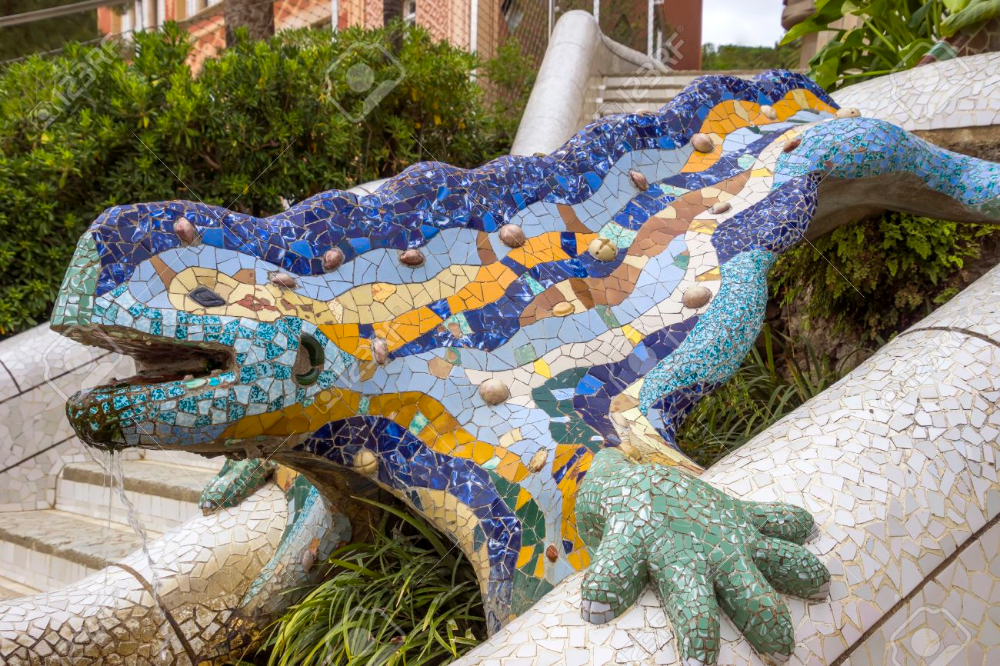
How to get there
Barcelona has an excellent transport interchange, so you can get to Park Güell using public transport:
- buses nos. H6, D40, V19 and 116
- by metro: lines 3 and 4 (L3 and L4)
- on suburban trains Nos. L7, S1 and S2
The Dragon Staircase, on which Antonio Gaudí’s lizard is located, is undeniably hard to miss and not notice. By the way, it is located right in front of the main gate of the park.
- How to avoid queues at Barcelona attractions. Tickets for the Sagrada Familia and Park Güell skip the line.
-
How not to be deceived by local taxi drivers.
Order a taxi in advance with fixed rates online. The most reliable service for ordering a taxi is KiwiTaxi .
- Excursions in Barcelona with locals will help you to get to know this city for real. The best way to get comfortable in an unfamiliar city is to walk around it with a person who has lived here for many years.
- We advise you to take out travel insurance so that there are no unpleasant surprises while traveling to Barcelona.
- Barcelona City Pass is a one-stop card that makes organizing your holiday in Barcelona easier and saves a lot of time and money.
- Barcelona Hotels: is our selection and recommendations.
- Bus Turistic is a tourist bus and a great way to get to all the necessary monuments of Barcelona quickly, with a breeze and comfort.
-
Drimsim is a universal international SIM card and a free travel application.
Best prices, fast internet and worldwide calls.
Why is Antoni Gaudí’s lizard from Parc Güell the symbol of Barcelona?
|
Main -> Eternal Questions 03/26/2015 According to ancient Greek legend, the beautiful city of Barcelona was founded by the legendary mythical hero Heracles. When, as part of a flotilla of nine ships, he went in search of the Golden Fleece, his ship was captured by a storm and carried to an unknown land. It was the shore of the Mediterranean Sea at the foot of Montjuic. Climbing the mountain, Hercules was struck by the beauty of the area spread before his eyes. He decided to found a city there and give it a name in honor of the ship on which he sailed to this wonderful country – “Barka Nona”. In memory of this event, another outstanding hero of his time, the brilliant architect Antonio Gaudí, who lived in Barcelona at the turn of the 19th and 20th centuries, decided to perpetuate the glorious name of Hercules in his creations. Gaudí’s genius was manifested in the ability to combine architecture and nature into a single whole. He managed to interweave one into the other in some incomprehensible way. Incompatible architecture, ancient Greek myths, astronomy, botany and poetry are combined in this magnificent creation. To the right of the entrance to the park, a sculptural composition of several orange trees is crowned with a branch with golden fruits, symbolizing golden magical apples. And the territory of the park is planted with willow and poplar, in which the gods, in a fit of anger, turned the unfortunate Hesperides. But the main focus of the park was another character of the legend – the mythical dragon Ladon, who guarded the apples and died at the hands of Hercules. It is this dragon that is symbolized by a huge, mosaic-decorated lizard that greets visitors at the entrance to the park. According to the architect’s idea, anyone who comes to the Garden of the Hesperides, be it the legendary Hercules or a tourist of the 21st century, before crossing the threshold of the park, will encounter a ferocious amphibious dragon vigilantly guarding the magical fruits. The unique lizard, created by the hand of the master, fell in love with the inhabitants of Barcelona so much that a belief arose from their light hand, picked up by tourists from all over the world. If you touch a lizard in Park Güell, you will definitely come back to sunny and hospitable Barcelona. A huge number of visitors strive to see the legendary lizard and imprint on its background. She became the most recognizable symbol of the first park, and eventually the city itself. Mosaics gaudi: The Best Gaudí Mosaics From Around the World | by MozaicoThe boulevard of broken tiles: Gaudí’s most known mosaicsOne of most famous symbols of Barcelona’s identity, the mosaic technique used by Gaudí, like many artists in Catalan Art Nouveau, is still in vogue.
The name of this technique comes from the main feature perceived at first sight: broken tiles, plates and cups. Trencar means in Catalan ‘To break’, hence trencadís is the equivalent for ‘breakable’. The breakable pieces were originaly recycled for finishing uneven corners, and it is inspired by the the neo-mudejar style during the Arabic invasions in Spain as well as Opus tessellatum technique employed by the ancient romans. Mosaics – Details from the Park Güell Therefore, the trencadís mosaic –also known in France as Pique assiette– is clearly not invented by Gaudí himself. Certainly however, he and his fellow colleague Josep María Jujol together with many other modernista artists became the some of the most imaginative figures employing this peculiar art to fulfill their tridimensional fantasies. It’s been said that the genius architect went to the ceramics factory from the company called Pujol i Bausis, and told them to literally take a handful of pieces.
The effects achieved are staggering and diverse. Casa Vicens: Even in his early creations, Gaudí applied the trencadís Gaudí’s skillful application of the trencadís has become so known worldwide that most people even call it “the Gaudí Mosaic”, and is featured in many books. Among the most popular mosaics by Gaudí we would like to highlight the ones from Casa Batlló, Casa Milà and Sagrada Familia, if you are in Barcelona, you can see the three of them in just one morning. Passeig de Gràcia, Casa Batlló and Casa MilàLampposts with benches, by Art Nouveau Architect P. Falqués The trencadís became Gaudí’s best ally for his two houses in the Passeig the Gracia, Barcelona’s most glamourous boulevard of broken tiles, where even the lampposts designed by Pere Falqués have benches covered with trencadís mosaic, perfectly matching the essence of La Pedrera: this house with no structural walls, nothing but pillars in charge, has no squared shapes, no edges. One of Gaudí’s most visited masterpieces, also placed in the Passeig de Gràcia, the house he restored a century ago for the Batlló family is with no doubt a fairytale. It lies somewhere between mythology, futurism and archeology. From the street you can see trencadís mosaics all over the façade, an architectural impressionist painting, whereas from the inside, made entirely of blue ceramic fragments a waterfall pours down through the lightwell. Trencadís detail from Casa Batlló The Japanese sculptor Etsuro Sotoo has been working for more than 35 years in the construction of the Sagrada Família with one question constantly popping in his mind: what would Gaudí do? No doubt the trencadís is such a resolutive technique, all pieces can be used, and Etsuro Sotoo has never doubted to apply it in the pinnacles and sculptures representing different simbologies of the Bible. Not only ceramics are being employed for the trencadís mosaics in the Basilica of the Sagrada Familia, other more priced ones such as gold or Venice glass are reflecting the towers of this marvel. Sagrada Familia: Fruits offered to the heaven Skip the line to enjoy this artistic fantasy in total comfort with some of the best licensed guides in town; come and meet the trencadís, come and join the Gaudí Tour, and don’t let your amazement fall into pieces! Art Nouveau, Gaudí, Modernisme Antoni Gaudì: the godfather of mosaicsImage: My Modern Met It’s hard to think about the history of mosaics without mentioning the name Antoni Gaudì. Not just a renowned Spanish architect of the early 20th century, Gaudì was also a born artist. His distinctive style has long been an integral part of Barcelona’s culture and design. The architectural genius behind the iconic Sagrada Família, Gaudì had an eye for beauty, Throughout Barcelona, countless Gaudì mosaics can be found. Each one seems more breathtaking and imaginative than the other. The beginning…Photo: Fine Art Images/Heritage Images/Getty Images The most logical place to start as we delve into the story of the man behind the mosaics. Antoni Gaudí was born in 1852 in Catalonia on the Mediterranean coast of Spain. The son of a coppersmith, he attended school in Barcelona, taking an early interest in architecture. He would later go on to graduate from the Provincial School of Architecture in 1978. Gaudí’s trencar mosaic techniqueMosaic design would not be the same without Gaudí and his special technique known as ‘trencar’.
This particular technique is still used today by artists across the globe. Trencar involves creating mosaic shapes by combining broken pieces of tile from items like ceramic tiles, plates and cups. Gaudì first used this method when decorating the Fincas Güell – the estate of which belonged to the patron, Eusebi Güell. Let’s take a look at some of Gaudì’s most famous mosaic works… Park Güell(Photo: Alamy Stock Photo/Jan Wlodarczyk) Opening in 1926, the Park Güell is one of Gaudi’s most beautiful designs, full of colourful mosaics. Inside, Gaudì was able to bring his ideas of creating colourful organic shapes and displays to life. Gaudì mosaics are on display across the park, including fountains, benches, columns, spires. Each is decorated with a kaleidoscope of bright colourful glass and ceramic mosaic tiles. Gaudi’s enchanting Park Güell includes the fairy garden, crypt of the Colonia Güell and Güell Palace. Two of the standout pieces of the park are the fabulous multicoloured balcony and giant salamander located at the entrance. A perfect place for a stroll, the Park Güell is a must-see for tourists visiting Baracleona. Be sure to embrace this true garden of mosaic art. Church of Colònia Güell Along with the Park Güell and Fincas Güell, Gaudì commissioned another piece dedicated to Güell – the Church of Colònia Güell. Crafted from basaltic stone, the church displays segments of colourful mosaic patterns. Much like Gaudì’s iconic Sagrada Familia, it showcases a wonderful contrast of natural materials and colours. El Capricho de GaudíEl Chaprico was one of the few artworks Gaudì commissioned outside of his native Barcelona. Gaudì experimented with art styles inspired by the Orient early in his career. He designed this particular building for Máximo Díaz de Quijano, which was used as a summer home. The colour scheme of this design differs to that of Gaudì’s more traditional works. The name ‘el chaprico’ comes from the freestyle music from that period. Gaudì chose to decorate the home with joyful colours (red and green) choosing sunflowers as the villa’s main motif. One thing is for sure, Barcelona wouldn’t be the same without the genius of Antoni Gaudì. Antoni Gaudí Mosaic: From Waste to ArtAntoni Gaudí Mosaic is famous by the name “trencadis”. Its essence lies in decorating the surface with various fragments of ceramics (ceramic tiles, dishes, tiles) and glass of different colors, sizes and relief. Antonio Gaudí’s mosaics are usually used in various architectural objects (for decorating facades, parks, gardens, bridges, benches, logos, as well as interiors). Mosaic technology can be used in art (when creating figurines and sculptures). Antonio Gaudí’s design has the advantage of preserving the surface of the project for years to come. How Antoni Gaudí’s mosaic came to be The author of the Trencadis mosaic (catal. Trencat – “broken”) is the world-famous architectural genius Antoni Gaudí. The first facility to use this technology was Parc Güell. A feature of Catalan Art Nouveau in architecture is the rejection of the use of straight lines, which Antonio Gaudí adhered to. Mosaic allowed Antonio Gaudí to realize his creative imagination in a new form. As a result, striking color schemes were created. Mosaics by Antonio Gaudi are great for non-trivial decorations due to the fact that ceramic fragments have their own patterns. The mosaic created combinations of incredible beauty that made it possible to highlight the projects of Antoni Gaudí. He liked to work with shards of rose water bottles, as they can create a delicate blue hue that adds extra value to the mosaic. “Colors used in architecture should be bright, logical and rich.” Antonio Gaudi Art recycling by Antonio Gaudi The mosaic is notable for the history of architecture because it is one of the best examples of art recycling. In Antoni Gaudí’s cult projects one can find the use of mosaics, unusual for that time. For example, in Parc Güell, upside down coffee cups are used to decorate the mushroom-topped roof of one of the “gingerbread houses”. Mosaics by Antoni Gaudí, using glass fragments and bottle necks, are used in the design of one of the chimneys of the Casa Mila. Mosaic by Antonio Gaudí Antonio Gaudí gave mosaics a special role in decorating architectural objects, giving them a symbolic meaning. Barcelona residents claim that the overturned coffee cups symbolized Antoni Gaudí’s abstention from coffee. Mosaic by Antoni Gaudí: Park Güell Founders of the “trencadis”Josep Maria Jujol Josep Maria Jujol, one of Antoni Gaudí’s students, made a great contribution to the creation of decorative mosaics. Park Güell Curved Bench Antoni Gaudí’s mosaic has become an important architectural element for artists working in the direction of Catalan Art Nouveau. The natural organicity and natural beauty of the objects were perfectly complemented with the help of mosaics. It was used to decorate facades and sculptures, to create benches and fountains. In especially refined projects, Antonio Gaudí’s mosaics were used to decorate residential premises. Santiago CalatravaPostmodernist architect Santiago Calatrava has great respect for the creative heritage of Antonio Gaudí and also uses mosaics in his projects. The City of Arts and Sciences in Valencia and the Opera Auditorio de Tenerife in the Canary Islands are the best proof of this. City of Arts and Sciences in Valencia Nevertheless, architects have fundamental differences in the implementation of the idea. Calatrava uses white mosaics to clad buildings, sometimes using cobalt. This gives architectural objects monumentality, and the facade – organicity with the environment. The mosaic in his performance cannot be considered as an object of art, unlike the work of Antoni Gaudí. The Trencadis by Santiago Calatrava is hard to spot from a distance, but the mosaic looks fantastic in the evening light. Mosaic by Antoni Gaudí in our time Today Antoni Gaudí’s mosaics are used to make decorative tiles for interiors. As a rule, drawings and photographs of mosaics are applied to standard tiles, the technology is also used for 3D tiles. The Latina Ceramica factory from Spain offers a colorful collection of floor decor and 3D wall panels “Gaudi”. Mosaic by Antonio Gaudí, which is more like the original idea, used by Trencadis Innovación S.L. She focused on releasing the trencadice mosaic, pre-cut into fragments, distributing her product around the world. The company creates Antonio Gaudí mosaics in monochrome and speckled designs, as well as with gradation. Customers can offer individual sketches of Antonio Gaudi’s mosaics. “Trencadis” is a common option for decorating interior items (pots, vases, countertops, picture frames), used for souvenirs. In the famous El Born quarter, you can find the Mosaiccos de Barcelona workshop (Corders, 11). Designers inspired by the work of Antonio Gaudí create decorative objects of any size with their own hands, using ceramics, Tiffany glass, Venetian smalt. Here, Antonio Gaudi’s mosaic is available for everyone to familiarize themselves in the format of courses. The shop-workshop has its own Facebook group, where you can explore the work of Antoni Gaudí’s mosaic students from all over the world (facebook. “Mosaiccos de Barcelona” (Corders, 11) Barcino, founded in Barcelona in 1998, uses Antonio Gaudi’s mosaics to create sculptures and figurines. Their products are quite popular, souvenirs and gifts can be purchased in online stores and in Russia. The mosaic made it possible to look at the decorations of objects from a different angle. Now the production is established, which creates elegant and high-quality solutions. One way or another, it seems that in order to reproduce the original idea of Antoni Gaudi, you need to use the “waste” of ceramics in bright colors and shades. After that, collect the final picture with great attention to detail and gradually embody the creative idea. Antonio Gaudí always treated the details of the project with great trepidation.
Trencadis – mosaic by Antoni Gaudí
The World of Antoni Gaudí Mosaic by Antonio Gaudí – trencadis
Today we will talk about trencadis – mosaic Antoni Gaudí . If
Souvenirs in this style dominate, they are everywhere, forming, in the end, among tourists the idea that this is the corporate identity of Barcelona. Yes, it is, and
Trencadis (from the Catalan verb trencar, which translates to “break”) – facing curvilinear (convex-concave), surfaces with fragments of polychrome (less often
The source of facing material is most often ceramic tiles and colored glass, although, in theory, they can be anything – from broken dishes to broken dolls or empty bottles from
The pre-prepared (that is, broken into fragments) material is fixed on the surface of any configuration with the help of a cement mortar, forming bright, conceived and embossed, in And the inventor and ideological father of the “trencadis” technique is, as you must have guessed, none other than Antonio Gaudi – the most unusual architect who has ever lived in the world. Otherwise, it seems, it could not be. Recall the architect’s statement that “nature does not tolerate monochrome.”
Let us recall his conscious departure from straight lines and flat surfaces, which he considered unusual for the same nature, towards complex three-dimensional structures of a very intricate shape; remember
But if Gaudi invented the technique itself, then one of his closest assistants, Josep Maria Jujol, was involved in bringing it to life in the projects of the architect, thanks to whose talent many works
For the first time, the “trencadis” technique was used in the construction of entrance pavilions of the Güell estate – an early work Trencadiz – Pavilions of the Güell Estate
The experience continued with the construction of Palace Güell , where 14 of the 20 chimneys were lined with
And Park Güell is a real feast of style, where Gaudí’s trencadis in the embodiment of Jujol Plafond of the Hundred Columns in the Park GüellPark Güell. Gatekeeper’s housePark Güell. Hall of the Hundred Columns, Park Güell. Bench at Priroda Square
By the way, the photo of the snake bench in Park Güell is unique – you can see snow (!) – snow in Barcelona, which happens very infrequently, about once every 50 years. Snake Bench – Place de la Nature in Parc Güell
And here is another unique situation – squally rain that has just fallen on the same square. In passing, I note that Barcelona is famous for its huge amount of sunshine.
But back to trencadis – I emphasize once again that the starting material for cladding surfaces in this technique was most often the waste of the ceramic industry, or even
In other words, we are talking about art from waste, about the same “recycling art” , which is now only talked about, considering it as “the direction of the global environmental But if the term “recycling art” appeared and became popular relatively recently, then the phenomenon itself, as we see, already existed in the 19th century – and was born thanks to Antonio Gaudi. Crucifer, veneered in the technique of “trencadice”. Torre Bellesguard
And this is what a massive crucifer looks like, crowning another Gaudí work: Torre House Mila (La Pedrera) – Rooftop Well, and, of course – where without the famous “Pedrera” – Mila’s house? The staircase exit, as we can see, is lined with trencadis mosaics. And for lining the chimneys on the same roof, fragments of champagne bottles were used, more precisely, cava – we are in Catalonia – previously, as they say, used here. Sagrada Familia. Trencadis pinnacles
As you can see, the construction of Holy Temple Roof of Batllo’s houseFacade of Batllo’s house
And House Batllo , one of the most interesting projects of Gaudí, is also famous for its widespread use. Gaudi home: Access denied | www.casabatllo.es uses SysAdminOK WAF to restrict malicious requestsGaudi House Museum | Barcelona City GuideOne of the defining figures of the city of Barcelona, Antoni Gaudi was a world-renowned architect and the greatest exponent of Catalan Modernism. The Gaudi House Museum pays homage to his brilliance and happens to be a house he resided in. The museum contains furniture, objects, and memorabilia designed by Gaudi himself from when he lived in the house, between 1906-1925. The mansion is situated in Park Guell, a residential project dreamt up by Gaudi himself. The museum shows us a glimpse into his life. The bedroom and the studio are left as it was when Gaudi lived here, giving visitors a chance to discover a place where the master architect was ruminating his ideas. Why visit the Gaudi House Museum?
Things to Do at Gaudi House MuseumVisit the homeWhat is now a museum was once the home of the legendary architect Antoni Gaudi, who called the place his home for over twenty years. It is one of the first houses that Gaudi had built in the Park Guell project and remains one of only two houses to be completed out of the 62 originally planned. Look at some of Gaudi’s furnitureAntoni Gaudi’s eye for detail meant that he would be a part of the creative process for every single aspect of his project, which includes the furnishing. Some of his works from Casa Batllo, Casa Calvet, and the crypt at Colonia Guell showcase his unique take on furniture. Enjoy the gardenA place where the master architect contemplated ideas and enjoyed the idyllic life in the early 20th century. The garden still contains pieces of his work such as the wrought iron gates from his other houses and the cross from the Mirella’s estate. Image Credits Terrace and TowerThe highest points in the house, the terrace is one of the places where you can get a great view of the park and the city. The tower is one of Gaudi’s favorite places, it provides a panoramic view of the city and overlooks his precious Sagrada Familia. Watch the movieSoak in the life and journey of Gaudi with the audiovisual experience at the museum. It is an eye-opening trip into the life of a man who is synonymous with the city of Barcelona and whose dedication to his work was unrivaled. Stroll in Park GuellApart from housing the Gaudi Museum, the garden has many attractions. There is the Casa Batllo, one of his finest works and a UNESCO world heritage site. Know More Go to Casa BatlloOne of his most famous works, this house was one of the first projects. The building itself is quite old and Gaudi mainly worked on the remodel of the house. The design of the building has earned it the nickname Casa del Ossos or the house of bones as the building looks like it has been structured out of bones. Know More Essential InfoTimings Best Time to Visit Getting There Hotels near the Gaudi House Museum The museum is open from 10:00 AM to 6:00 PM throughout the year. The full tour of the house takes around 30 minutes and if you want to visit Park Guell and surrounding attractions it might take you up to one and a half hours. The museum is open from 10:00 AM to 6:00 PM every day, throughout the year. As the museum is frequented by visitors, the best time to visit it would be the siesta time, which is between 2 PM to 6 PM. TaxiThe Gaudi House Museum is located in Park Guell, which lies in the Garcia district. The museum is located to the north of the city center and taxis’ starting price begins from 3.40 Euros and 1.10 Euro per kilometer. The taxi rates vary according to the time of day and week, T1 operates between the workdays 8 AM to 8 PM, T2 operates between 8 PM and 8 AM and T3 operates on weekends. There are taxis available from the airport, which can vary by up to 5 Euros depending on whether you are in T1 or T2. MetroThe metro connectivity in Barcelona is spectacular, with lines running through virtually every corner of the city. The closest stop to the Gaudi Park is Lesseps, Vallacara, and Fontana. Each of these stations is at a walking distance from the museum. BusIf you are taking the Hop-On Hop-Off bus, the nearest stop for the museum is Park Guell and you can board another bus approximately every 10-15 minutes. For public buses run by TMB, there are mainly three stops you can get off at, which are: Park Guell, Olot/ Marianao and CAP Larrard. The buses you can take are 24, 92, 116, 32 and H6. All of these busses run frequently and you can catch them in 15-minute intervals. From the AirportThere are numerous options to reach the Gaudi House Museum. You can take the metro from the terminal to Passeig De Garcia and then take the L3 to Vallacara. You can also take the bus which goes from the terminal to Pl. Espana and change the bus to the one going from Tarragona to Trav de Dalt. The taxi, however, is the quickest option and the most expensive one as well. The tariffs will cost you nearly 6 times that of what you can pay via the metro.
Handy Insider Tips
Gaudi House Museum FAQsQ. Is the Gaudi House Museum worth visiting? Q. Is Park Guell free? Q. How much time do I need in Park Guell? Q. How many Gaudi buildings are in Barcelona? Q. Can I Uber to the Gaudi House Museum? Q. When did Gaudi live in the house? Q. Can I buy tickets on the spot or do you have to pre-book it online? Q. Can children visit the Gaudi House Museum for free? Q. Can I get an audio guide? Casa Vicens Gaudí | Gaudí’s first house in BarcelonaCasa Vicens Gaudí | Gaudí’s first house in Barcelona
Previous Next After the fog, the first flowersTemporary exhibition Orient and orientalisms, from modernism to modernity. More information Spring VicensOur most delicious visit! Embrace this spring and discover Gaudi’s first house! The experience includes an artisan hazelnut ice cream. More information Family pottery workshop & Ceramic workshop for adults14 May Led by the master artisan ceramist Manel Diestre More information Drawing visit to Casa Vicens by Daniel Pagans21 May 3 hours • Visit, workshop and materials included More information Photo challenge#CasaVicensNatura Author: @jramonbadia New challenge
NewsletterGet the latest news about Casa Vicens in your inbox. There was an error while processing your request. Please try again later. Thanks for subscribing! You will receive the latest news about Casa Vicens in your inbox. Permanent CollectionCasa Vicens, the first masterpiece of Antoni Gaudí: Manifesto of his work The second floor is home to the permanent collection, where visitors can discover the more than 130 years of history at Casa Vicens, its social, cultural and artistic context, and the essential manifesto of the work of this genius and how he anticipated Modernisme. More information
More videosWatch more videos
Previous Next Casa Batllo, Barcelona – price, opening hours, how to get there
Batlló House or Casa Batlló is one of the architectural masterpieces of Catalan architecture, which is included in the top tourist attractions in Barcelona.
History of Casa BatllóIn 1860, a new urban plan was approved in Barcelona, and wealthy citizens began to build their houses on Passage de Gracia. The building was originally built in 1877 by the architect Emilio Sala Cortes, who was one of the professors of Antoni Gaudí. In 1903, this house was bought by the famous Barcelona merchant Josep Batllo, who owned several textile factories. He decided to rebuild the house and hired Antonio Gaudi for this, to whom he gave complete freedom of action. Interior of Casa BatllóThe interior of the house deserves special attention. Antoni Gaudí used the finest craftsmen to create the interior, working with wood, stone, glass and wrought iron to create the home’s interior design. It is difficult to convey all the splendor and harmony of the interior decoration of the house. The uniqueness of the elements in every corner of the building and at the same time the perfect match with each other from the lobby to the roof. This is the case when it is better to see once. A mushroom-shaped fireplace, a stained-glass grandstand window overlooking Passeig de Gràcia, oak doors with stained-glass inserts and much more that makes you admire at every step of the journey through Casa Batlló. The attic of the house, where utility and utility rooms used to be located, is made in the form of parabolic arches. Something similar can be seen in another house designed by Gaudí – Doma Mila. Rear façade of the Casa BatllóFacade and roof of the Casa BatllóEven without going inside the building and not seeing its interior, it is impossible not to admire the Casa Batlló. Moreover, its view is beautiful at any time of the day. Its architectural and artistic decoration seems to embody the sea element. The facade of the building stands out for its color and wavy shapes, sculptural elements that look like flowers, bones, masks. The roof is covered with tiles in the form of multi-colored scales, shimmering in the sun. Multi-colored chimneys emerge from the roof, made in the form of curved pipes with unusual caps. A turret with a St. George’s cross rises above the house. Someone sees in it the hilt of the sword of St. George, the patron saint of Catalonia, and in the surface of the roof – the body of a defeated dragon. The patio of the house deserves special attention. In order to allow more sunlight into the rooms, Gaudí expanded the original courtyard and lined the walls facing it with ceramic tiles of different shades. By doing this, he achieved an even distribution of daylight between floors. In the center of the courtyard there is an elevator, the original wooden cabin of which still functions today. House of Lleo y Morera in the Quarter of DiscordQuarter of Discord and Casa Batlló During the rebuilding of Casa Batlló, other houses were rebuilt in the immediate vicinity. Every Catalan rich man living in nearby houses hired the best, in his opinion, architect and tried to outdo his neighbors with his house. In addition, a solid mayor’s award was awarded for the best completed building project. As a result, several Art Nouveau houses grew nearby, forming a whole block, popularly called “la Manzana de la Discordia”, which literally translates as “Apple of Discord”. The “Quarter of Discord”, which forms an architectural ensemble in the Art Nouveau style, includes:
House of Amalie next to Casa BatllóThe Batlló family has owned the house for almost half a century. The house was sold in the 1950s and changed hands several times over the following decades. In the 1990s, the house passed into the ownership of the Bernat family, who still own it. The new owners restored the house and opened it as a museum that welcomes over a million visitors every year. Casa Batlló is listed as a UNESCO World Heritage Site. Opening hours Casa Batlló is open daily from 9:00 to 20:00. You can visit the museum before its official opening. To do this, you should buy a ticket “Be the first!” and then you, among a small number of selected participants, will enter the museum at 8:30. You will be able to explore the museum without crowds of other tourists and take cool pictures without strangers. Free Wi-Fi is available at the Museum. Visitors are provided with an audio-video SmartGuide, available in 11 languages (Russian, English, French, German, Italian, Portuguese, Spanish, Catalan, Chinese, Japanese and Korean). Price of tickets to Casa Batllo Tickets can be bought online on the museum’s website casabatllo.es (there is a version in Russian) or at the box office in front of the entrance. We have indicated the prices of tickets to Casa Batlló when buying on the website. At the museum box office, the price of tickets is 4 euros more expensive. Children under 7 years old – free of charge for any type of ticket and method of purchase. Regular visit (Blue ticket)The price includes a visit to the museum and the use of an augmented reality guide. Entrance ticket when purchased on the museum’s website costs 25 euros. Access from the Private Hall (Silver ticket)The price of the ticket additionally includes the possibility of visiting the Private Hall, a hall of Catalan modernism with 1900 furniture. The ticket price on the website is 33 euros. All inclusive (Gold ticket)In addition, there is the possibility of an extraordinary pass and the possibility of a photo session. You will be able to take pictures in ancient interiors in costumes of that era and get an “old portrait” as a keepsake. Ticket price online – 35 euros. Ticket “Be the First!” Don’t like queues and you are constantly bothered by other tourists who prevent you from enjoying the contemplation of art objects, can’t take good pictures because strangers constantly get into the frame? Then this option is for you! With this ticket, you will be allowed into the museum half an hour before its official opening. Ticket price for all categories – 39Euro. Theatrical tourIf you want an unusual visit to Casa Batlló, then buy a ticket with the theatrical tour. You will be guided around the house by Gaudí himself or by the housekeeper of the former owner’s family, Señor Ramoneta. They will tell secrets and funny stories about the construction of the house, the daily life of its inhabitants and the bourgeoisie of the early twentieth century. The tour takes about an hour on average and is in English. A walk through the house, accompanied by a professional actor, will make the visit atmospheric and allow you to dive deeper into the creative world of Gaudí. This tour is available only on Sundays at 17:00. The price of tickets for all categories is 37 euros. Rooftop concert During the summer (usually from June to November) the museum offers unusual concerts. Seats are limited. Prices from 39 euros per person (children under 7 years old, as with all visits, are free). How to get to Casa Batlló for free Not many people know, but you can look into the courtyard of Casa Batlló from the other side and see elements hidden from ordinary visitors. And, you can do it completely free of charge. Go around Casa Batlló on the right and you will see the entrance to the building supermarket. Go inside and go up to the second floor. Don’t be put off by the “Only Staff” sign on the doors. Stepping into them, you will find yourself on a balcony, just opposite Casa Batlló. Enjoy the new views of the house, the hidden Gaudí mosaics, and let the museum visitors look at you with envy that they cannot see the magnificence that is available to you. Courtyard of Casa BatllóHow to get thereCasa Batlló is located in the center of Barcelona on Passeig de Gràcia, 43 Barcelona. You can get here by metro and Passeig de Gràcia: L2, L3 and L4. You can also take buses h20, V15, 7, 22 and 24 to Casa Batlló – Fundació Antoni Tàpies stop. Read more about the fare in the article “Transport in Barcelona”. A 5-minute walk away is another of Gaudí’s architectural masterpieces, Casa Mila.
card loading… Dom Mila >>
Return to Barcelona
description, what to see inside and on the roofAntoni Gaudí’s masterpiece. Casa Batlló in Barcelona, whose second name sounds like the House of Bones, is one of the most famous creations of Antonio Gaudí. The only modernist building built by the great architect has been protected by UNESCO since 2005. Let’s find out why Casa Batllo is considered a masterpiece and whether this attraction is worth seeing.
Contents History of Casa Batlló The architect worked on the design of the house from 1904 to 1906. The order was made by the textile magnate Josep Batllo. The manufacturer and his wife wanted to get an unusual mansion. The craftsman got creative and started working on the drawings. He left the old foundation and completely remade the walls, created a new ventilation system, lighting and original wooden decor items.
Walls inside the Casa Batlló. Architectural features The House with Skulls (sometimes called the famous mansion) owes its name to the facade. The exterior of the building resembles a skeleton, with skull-shaped balconies and bone-like columns.
There is another name – Dragon House. Some fans of Gaudi’s talent believe that the mansion represents this mythical creature. The building has almost no straight lines and no symmetry, but it looks harmonious. Do not hesitate to go inside: there is something to see. Lots of interesting interior details inside:
Entrance. Tourists are greatly impressed by the irregularly shaped windows that resemble the windows of a fabulous house. It seems that the window structures are made of plasticine, but this is a misleading impression. The same stones were used to decorate the façade. Windows and stained-glass windows. From the facade, the roof of the house resembles a dragon’s backbone.
In addition, here you will see a variety of decor items made using the trencadiz technique. Gaudí was the first to apply this technology to the decoration of buildings, creating a mosaic of pieces of multi-colored ceramics. The building is crowned with a turret with a cross shifted to the left. This is another evidence that the great inventor loved asymmetry. The roof of the Dragon’s house. Ticket prices for Casa Batlló in 2021 When purchased online, the standard adult ticket price is 35 euros. Do I need a Fast Pass to skip the line? A must if you don’t want to queue at the entrance! You can pay for the entrance to the House of Bones at the box office or on the website online ⇒ . There are always a lot of tourists there, so it’s better to take care of purchasing tickets in advance. Possible ticket options, as well as detailed instructions for buying tickets online HERE ⇒ Free admission Children under 7 years old, guides with groups, people accompanying the blind, school teachers with wards (for 20 people) enjoy free admission 1 teacher). Eligible visitors: locals, students, visitors over 65, children and young people aged 7 to 18. Additional services Casa Battlo is one of the first private museums to take care of visitors with disabilities:
Video guide:
(Source: Franco Di Capua). Don’t worry about the safety of your belongings : the museum is equipped with lockers. If, nevertheless, something is lost, contact the lost and found office, where the found things are stored for a month. While walking around the museum, take a look at the shop. It sells souvenirs that will remind you of Gaudí and magnificent Barcelona: books, postcards, jewelry, handicrafts. Inner hall. Opening hours The museum welcomes guests all year round. Opening hours – from 09-00 to 18-30, the last visitors pass until 17-30. Changes in the work of the museum – on the official website https://www.casabatllo.es/en/. The museum tour takes about an hour. At the entrance, visitors are given a personal guide – a special mobile device. How to get there The house-museum is located at Passeig de Gracia, 43. There are three travel options for tourists using public transport:
From Plaça Catalunya or other places of interest in Barcelona, it is easy to reach on foot. Gaudi house: The 3 Houses of Gaudí in BarcelonaFour Best Gaudí Houses to Visit in BarcelonaLast Updated on December 17, 2022 by Natalia There are several wonderful Gaudí houses to visit in Barcelona, from the amazing Casa Batlló to Casa Vicens – the architect’s first major project. Each of the Gaudí houses has something different to offer thanks to the unique and eccentric architecture, so it can be hard to decide which is best to visit. Gaudí’s influence can be felt across Barcelona, from Sagrada Familia to Park Güell, and much of his work is inspired by nature. The architect’s two most famous houses are Casa Batlló and Casa Milà, both considered masterpieces in their own right. If you only have the time or budget to visit one, then we suggest Casa Batlló – find out why in our comparison between Casa Batlló and Casa Milà! As long as you have time though, it’s definitely worth visiting more than one of the Gaudí Houses in Barcelona – it’s just a matter of which to pick! Find out what each of the different Gaudí Houses in Barcelona has to offer with this guide. Looking for other things to do in Barcelona? Make sure to read our five day Barcelona itinerary for inspiration and don’t miss our helpful Barcelona travel tips! Table of Contents Best Gaudí Houses in BarcelonaPalau GüellOne of the lesser visited Gaudí houses in Barcelona is the impressive Palau Güell. Built between 1886 and 1888, it was Gaudí’s first commission for Eusebi Güell – for whom he would later build Park Güell. Situated just off La Rambla, this neo-Gothic mansion is an incredible work of architecture. The exterior is unsurprisingly impressive, particularly the twin parabolic arches with iron gates leading inside the building. It’s a bit hard to get a great view of the exterior as the building is on a relatively narrow street, but it’s still possible to appreciate the great architectural work. Like many of the Gaudí houses in Barcelona, the interior is very grand and reflects the owner’s wealth. The entrance hall and staircase are particularly impressive, as are the Central Hall and southern terrace. There is also a rooftop terrace that you can visit, which is home to some of Gaudí’s unique chimney designs. Entrance to Palau Güell costs €12 per person, and tickets can only be booked via the official website. Tickets include access to an audioguide which can be downloaded and listened to via your phone or other smart device. Casa MilàCasa Milà, often referred to as La Pedrera, is one of the most famous Gaudí Houses in Barcelona. Located on Passeig de Gràcia, this impressive building was built between 1906 and 1912, and was the last private home designed by Antoni Gaudí. The stone facade of Casa Milà is particularly eye-catching, with wavy balconies that give the exterior a unique shape. Like most of the other Gaudí Houses in Barcelona you can see the facade without taking a tour, but to see inside of the building then you will need to pay for a tour. A tour of Casa Milà gives you access to a number of areas inside the building, including the courtyard, the attic, the furnished Pedrera apartment and the unmissable rooftop terrace. The highlight of any visit to Casa Milà is the rooftop terrace with its unique rooftop guardians and city views making it the best Gaudi rooftop in Barcelona. The two main options to visit Casa Milà are via the standard audioguide tour, or a special night time visit which includes an audiovisual display on the rooftop terrace. We personally took the audioguide tour, which can be booked in advance via Get Your Guide from just €25 per person. Click here to book an auidoguided tour of Casa Milà on the Get Your Guide website! If you want a slightly different experience then the nighttime trip to Casa Milà costs just €35 per person, which includes projections around the building, skip-the-line access, and even a glass of champagne! Click here to book a unique nighttime visit to Casa Milà through Get Your Guide! Casa VicensCasa Vicens is considered to be Antoni Gaudí’s first major project, making it the first of the Gaudí Houses in Barcelona. The exterior architecture of Casa Vicens is captivating, with many green and white tiles adding some lovely colour to the facade. Despite being some of his early work, it still has the unique feel that makes it distinctively Gaudí. There are plenty of rooms to discover inside the house, with a particular highlight being the beautiful smoking room with its vibrant colour. Other areas you will have access to include the garden, dining room, bedrooms, the rooftop terrace and more. Casa Vicens is one of the cheaper Gaudí Houses in Barcelona to visit, with entrance starting from just €18 per person for an audioguide tour. Tickets can easily be booked through Get Your Guide with skip-the-line access included! Click here to book skip-the-line tickets to Casa Vicens on Get Your Guide! If you would prefer a slightly more interactive visit then there is also the option for a guided tour of Casa Vicens. Click here to book a wonderful guided tour of Casa Vicens through Get Your Guide! Casa BatllóIf we had to recommend just one of the Gaudí Houses to visit in Barcelona then it would be the stunning Casa Batlló. Josep Batlló bought the house in 1903 but didn’t like the design, and so the following year hired Gaudí to construct a new house. Gaudí convinced him that a better option would be to renovate the existing building, and the refurbishment was completed in 1906. Casa Batlló’s facade is visually striking, with vibrant colours and unique mask-shaped balconies. Located on Passeig de Gràcia, it easily stands out from the neighbouring buildings due to its unconventional exterior. The interior is equally impressive, particularly the elegant living room overlooking Passeig de Gràcia and the beautiful blue-tiled staircase. Entrance to Casa Batlló starts from €39 per person, which includes an informative audioguide to lead you through the building. There are a few other ticket options available if you’re happy to pay slightly more, with these premium tickets offering extras such as access to exclusive rooms, use of a virtual reality tablet and more! Click here to book your visit to the wonderful Casa Batlló through Get Your Guide! More Gaudí architecture in BarcelonaIf you’re looking to see even more of Gaudí’s famous architecture during your time in Barcelona then there are a couple of other spots you won’t want to miss. They may seem like obvious choices, but Sagrada Familia and Park Güell are two of the city’s biggest attractions! Sagrada FamiliaThe Sagrada Familia is unquestionably one of the best places to visit in Barcelona, and is one of Gaudí’s masterpieces. It’s a truly amazing sight to see, both in terms of the exterior and interior. Viewing the basilica from the outside it towers above the surrounding buildings, with several spires reaching towards the sky. The interior is breathtaking, from the vibrant stained glass windows to the forest of columns and much more! There is no way we could write anything that comes close to doing justice to this incredible building, so just make sure it’s on your list of things to do in Barcelona! Tickets to the Sagrada Familia start from €26 per person via the official website, but there are a few different options to consider before booking. The standard ticket gives you access to the main basilica and an audioguide to listen to via your mobile device, but if you’re happy to pay more then you can opt for a guided tour or for access to the Sagrada Familia’s towers. It’s also worth considering booking your tickets via Get Your Guide as they offer fast track entrance, so that you minimise your time spent queuing. Click here to book fast-track entrance to the Sagrada Familia via Get Your Guide! Park GüellBuilt between 1900 and 1914, Park Güell is one of the most popular Gaudí attractions in Barcelona. Although Park Güell is technically a public park, there is an entrance fee to access the park’s monumental zone. There are a number of interesting spots to visit in the park, but the main attraction is the huge terrace with a colourful mosaic serpentine bench stretching along its edge. The terrace has some great views of Barcelona, as well as a view of the park’s blue and white mosaic tower. Park Güell is also home to Gaudí’s famous ‘El Drac’ mosaic salamander sculpture, which is located on the stairs below the terrace. Other parts of the park you won’t want to miss include the Viaducte dels Enamorats, Passeig de las palmeras and the Hypostyle room. Tickets to visit Park Güell are available via the official website, with prices starting at €10 per person for a standard visit or €22 per person for a guided tour. If you’re pushed for time then you may want to book via Get Your Guide as they offer skip-the-line access for just €13 per person. Click here to book skip-the-line access to Park Güell with Get Your Guide! Please note that some links in this article are affiliate links, which means if you make a purchase we make a small commission at no extra cost to you. This money is used to support this website and cover the costs of keeping it online and free to access! Like this guide to the best Gaudí houses in Barcelona? Pin it!A Complete Guide To All 14 Gaudí Barcelona Buildings |Like it or not, a trip to Barcelona is all about Antoni Gaudí’s incredible architecture. But did you know that Gaudí’s Barcelona architecture goes far beyond the Sagrada Familia. It’s worth seeing his more lesser known work because in my mind, those are some of his best designs. So here’s a comprehensive Gaudí tour Barcelona to all the buildings he designed. P.S. Want to learn all about Gaudí’s life with beautiful illustrations? I absolutely love This is Gaudí. Psst! This blog post contains affiliate links in it which sends me a bit of extra money if you use them… at no extra cost to you! Plan your Barcelona vacation with these tools!Digital Travel Planner Printout: Etsy Book plane tickets: Skyscanner Quick Barcelona Reads: Need A Place To Stay In Barcelona?I stayed at an Airbnb in Gràcia for a more home away experience. If you’re looking to stay closer to the city centre, a great neighbourhood is El Born. Stay in a local apartment El Patrón with friends or family. With a fully equipped kitchen, 2 bedrooms, AND 2 bathrooms! See room rates & availability here. Or why not stay like royalty at Hotel Royal Passeig de Gràcia in Barcelona. This is the nicest street in Barcelona! See room rates & availability here. For more accommodation options on Booking.com here, or book find one of the top 3% of home rentals on Plum Guide here. Barcelona Budget Hotels To Stay InBooking.com Why Is Gaudí Architecture So Impressive?Modernism was taking off when Antoni Gaudí was starting out as an architect. But Gaudí was an impressive architect who pushed the boundaries even further. As others were designing homes and facades, he was creating masterpieces. It’s easy to see why Gaudí Barcelona buildings stand out from all the other modernist works of the time. You see, Gaudí took inspiration from nature and religion. If there’s one thing that all Gaudí architecture has in common, it’s their connection to nature, with movement. He would very rarely use straight lines. Every year, millions of tourists are drawn to admire the beauty of the unique Gaudí Barcelona architecture that you won’t find anywhere else. How Many Gaudí Buildings Are There In Barcelona?Gaudí designed a lot more than the Sagrada Familia, Casa Batllò, and Park Güell (although those are his most famous works). Keep in mind that he also didn’t just design buildings. As I mentioned, some of the stops on the Gaudí tour Barcelona will include lampposts, parks, and even floor tiles! Plan the ultimate vacationMy digital travel planner template has everything you need to plan your vacation: research templates, travel planner itinerary, travel budget templates…etc. . You can print it out or use it digitally on your phone, tablet, or computer. So, What Did Gaudí Build In Barcelona?Get The Full Gaudí Barcelona Tour1. Gaudí Barcelona Church: The Sagrada FamiliaThe Sagrada Familia is easily one of the most well known Gaudí buildings. You can see it towering above the city in practically every skyline view. He started working on this Barcelona church in 1882, when he was only 31 years old. It’s a bit outside the main city centre, and there isn’t too much else in the area but I’d say it’s worth making the trip there to see it – even if you aren’t into religion. You can’t appreciate all the detail in the facade from far, and the sheer size of it is just incredible. Despite having an obscenely high ticket price for a church, I think it’s still worthwhile (FYI there are a few ways to save on the Sagrada Familia ticket, read my money saving tips for Barcelona). Even if you’re not religious, you can still appreciate the sheer amount of work that went into it. It’s truly unlike any church I’ve ever seen. If you’re travelling during high season, you’ll definitely want to book your tickets well in advance for this. The goal is to have it finished in time for the 100 year anniversary of Gaudí’s death, in 2026… so fingers crossed! They’ve already been working on it for over 100 years, so what’s a few more? 2.
Casa Batlló is another main Gaudí Barcelona site. It’s along Passeig de Gràcia and it’ll shock you when you first walk by…. it’s also hard to miss, it kind of stands out quite a bit! The design alludes to the legend of St. George slaying a dragon to save the princess. The building is the dragon and the chimney is the sword that kills it. Unlike the Sagrada Familia, the ticket price here is too high in my mind to merit going inside. I’d recommend saving your money and instead admire the exterior for free, it’s the most impressive part of Casa Batlló anyway. But read my full review of Casa Batlló to decided for yourself! 3. Park GüellThe next stop on your Gaudí tour Barcelona, is Park Güell. It’s even further from the city centre than even the Sagrada Familia but it’s worth it! Plus if you buy your ticket in advance (which you should) a bus from the city centre to the park is included in your ticket. The park is divided into three areas: the restricted zone, monumental zone, and the forest. But despite all that, it’s still worth paying for. You can see part of the restricted zone from the free areas but it isn’t the same as being surrounded by it all. It’s also one of the cheapest entry fees for a Gaudí Barcelona site at €10. Gaudi Organized Tours BarcelonaFor more activities and tours in Barcelona, click here. Park Güell is such a magical place full of colour and life that you’ll want to see it up close to appreciate all the detailed mosaic work. The views are also better from the restricted zone. It was honestly a highlight of Barcelona for me. Heads up! Buy your tickets in advance online! You risk waiting in an hour-long line (or longer) if you buy at the park. Also, once you leave the restricted zone, you can’t go back. So make sure you took all the pictures and saw everything you wanted to before you leave. 4. Gaudí House Museum (In Park Güell)In the unrestricted zone of Park Güell is Gaudí’s house. The park was originally designed as a gated community but it wasn’t successful enough to be completed. Only two homes were ever built; the model house that Gaudí eventually moved into, and another one further up the hill. Today, it’s a museum you can visit that nicely rounds out your visit to the park. It also showcases some of the furniture that Gaudí designed. Just be aware that the house is NOT a Gaudí Barcelona building – I repeat! It was not designed by Gaudí. He did make his own additions though, like adding a window and some mosaics to the chimney. 5. Palau Güell (Güell Palace)Palau Güell (yes it’s the same Güell from Park Güell) is back in the city centre and is often overlooked. Gaudí actually worked on several projects for Eusebi Güell, one of them being an extension to his family home – Palau Güell. Today you can tour the home and they have permanent and temporary exhibits. Never forget a favourite travel memoryKeep track of your travels every day with my digital and printable travel journal. Use it on the go on your phone or tablet, or print it out! 6. Lampposts by GaudíOne of the first solo projects Gaudí was commissioned to design in Barcelona was a set of lampposts by none other than Eusebi Güell in Plaça Reial. The first time I visited I didn’t even notice them. There are two sets of lamps in this Plaça, and no, they’re not the beautiful looking ones. They’re the ones that will make you wonder why the city would put them up at all. They were meant to be installed throughout the city, but the design was so expensive they only ended up putting in the two! He also made similar ones in Plaça de Plau. 7. Casa Mila (La Pedrera)Further along Passeig de Gràcia is Gaudí’s Casa Mila, also known as La Pedrera. This is a lesser known Gaudí Barcelona building and I’m not really sure why. The outside is stunning – it’s meant to resemble a mountain and the sea, representing the landscape surrounding Barcelona. Notice how the building is much larger than all the others? He actually extended the facade to get this look and got into trouble for doing that. A ticket to Casa Mila also gets you a lot: access to the rooftop, a museum about his work, and an example of what an apartment looks like inside. It’s worth it just for the rooftop alone. No, seriously, it’s like you’ve been transported out of Barcelona to another world up there. 8. Passeig de Gràcia Cement TilesIf you’re shopping along Passeig de Gràcias don’t forget to look down while you’re walking. Stop to admire the cement tiles… it might surprise you that these are in fact Gaudí Barcelona originals! The tiles were originally designed for Casa Mila, but the owner hated them! They’re inspired by nature, can you find the octopus and sun!? Need A Place To Stay In Barcelona?Casa GràciaReally feel like you’re living the local Barcelona life in an apartment style hotel. Book Your Stay Hotel Royal Passeig de GraciaStay like royalty at Hotel Royal Passeig de Gràcia. This is the nicest street in Barcelona! Book Your Stay Hotel del MarWant to be a bit closer to the city? Stay at Hotel del Ma in El Born. Book Your Stay 9. Gaudí’s First Home: Casa VicensIf you walk along Passeig de Gracià until pretty much the end, you’ll find the first ever Gaudí Barcelona buildings, Casa Vicens. Although it might not be the most extravagant facade, I assure you, the interior will not disappoint. The house was of course, inspired by nature, but also by Arabic style architecture and art. So much care went into every last detail of the many rooms; they’re each like an art piece themselves and a must visit on any Gaudí Barcelona tour. 10. Casa CalvetCasa Calvet is another example of early Gaudí Barcelona architecture. It isn’t open to the public (yet), but you can still appreciate the magnificent facade. I noticed there is a restaurant inside, so maybe you can even sneak a peek inside if you’re lucky! 10. BellesguardBellesguard (in my mind) is one of the coolest Gaudí Barcelona buildings. Not only is it beautiful (like all his other works) but it has so many hidden gems to discover. It’s the furthest building to get to but it’s worth making the effort. The site upon which the building lives has such historical significance, and Gaudí was clearly inspired by it. It’s where Martin the Humane, the king of Aragon (before Barcelona was Barcelona) had his palace in the 1400s. The interior of the house was never completed but it adds to the charm. You’re able to see a bit of Gaudí’s process, and the progression of building a house. The ultimate digital travel bundle: travel planner & daily travel journalMy digital travel planner template has everything you need to plan your vacation. Buy The Bundle Today >> Bellesguard also has one of the most impressive rooftops I’ve ever seen! Not only is the view of Barcelona spectacular, but it’s like walking into a whole hidden world on top, a bonafide maze. And then you realize that it’s actually a dragon! You can’t see it from anywhere else, so it’s totally surreal! Because of how far it is, I recommend joining it with either a visit to Mount Tibidabo or the Science museum which are in the area. 11. Santa Teressa GanduxerSanta Teressa Ganduxer is yet another Gaudí Barcelona buildings that aren’t too well known. It’s actually a bilingual primary and secondary school that Gaudí designed. We made the mistake of visiting on the weekend when it’s closed, so we could only see the top of the building, but it was still incredible from what we could see! You obviously can’t go inside if you visit during the week, so be respectful, as it’s a functioning school. 12. Portal MirallesYou can go to Portal Miralles to actually meet Gaudí! Well not really, but you can see a statue of him… which I think is life size, he was quite small. These gates are an entryway to the condo buildings behind it. I wish the condos in Montreal had gates like these to welcome me home every day! 13. Güell PavilionsUnlike Park Güell, Güell Pavilions was always designed to be a park. Right now you can only see the entryway though because it’s under renovations until 2024… and has been for the last 5 years… so who knows when it’ll actually be done. I’d say it’s only worth adding to your Gaudí tour Barcelona if you’re in the area (like going to a football game). Otherwise, it’s a bit out of the way just to see gates and try to peak inside. I hope I can go back to Barcelona once the park opens though, it looks like it’s going to be surreal – just as Gaudí intended it to be! But once you’re here, the Portal Miralles and Santa Theresa Ganduxer are close by so you can easily walk to them. The ultimate digital travel bundle: travel planner & daily travel journalMy digital travel planner template has everything you need to plan your vacation. And keep track of your travels every day with my digital and printable travel journal. Buy The Bundle Today >> Here’s a map of the Gaudí Barcelona tour! And if you’re interested in learning more about Gaduí’s life, I highly recommend picking up This is Gaudí! Visiting all of Gaudí’s Barcelona can really rack up a bill. If you’re smart about it, there are some ways to save money in Barcelona to feed your inevitable churro addiction! You might also be interested in…My digital and printable packing guide on Etsy here. Filled with packing planning prompts for your next trip! Check Out More Barcelona Guides
Click Image To Share Or Save For LaterGaudí Houses in Barcelona – Guide Barcelona TM At the mention of Barcelona, the first associations are usually the whimsical architecture of Antonio Gaudí and FC Barcelona. Who was Antonio Gaudí
A fateful acquaintance is associated with the name of Eusebio Güell. One of the richest people in Europe at that time becomes a close friend and regular customer. It was Guell who introduced to the elite such a beautiful city as Gaudí’s Barcelona. Eusebio not only introduced the young Gaudi to the wealthy Barcelona elite, contributed to obtaining orders, although at that time the public was very specific about the style of the architect’s work.
Temples, parks and houses of Gaudí in Barcelona Gaudí houses in Barcelona occupy a central place, because this city is the capital of architectural delights.
The perfection of Gaudí’s nature is duplicated in the impeccability of architectural forms.
We bring to your attention the brightest works of the genius. 1 Casa BatlloCompletion date: 1906 Client: Josep Batllo y Casanovas Casa Batllo will be the first to present Gaudi’s houses in Barcelona. Address: Consell de Cent, 381, Passeig de Gracia metro station (green line L3 or yellow line L4). Tickets: Barcelonatm.ru/tickets/casa-batllo
2House Mila – La PedreraCompletion date: 1910 Customer: Pere and Roser Mila Antoni Gaudí finished work on La Pedrera and never returned to private buildings, devoting himself to the construction of the Sagrada Familia. The reaction to Dom Mila was mixed, but it’s undeniably a masterpiece. Mila’s house is an example of the perfect balance of fragility and bulkiness. They say that the master drew inspiration from nature. The prototype of Casa Mila is rocks and mountains washed by the sea. The house is often compared to a large hewn rock, which grew up in the middle of the Catalan capital with the light hand of a master. And as happens with all Gaudí houses in Barcelona, an ordinary residential building, under the strict guidance of an architect, has become an adornment of the Catalan capital and a world heritage. Address: Passeig de Gràcia 92, Diagonal or Passeig de Gracia metro station (L3 green line or L4 yellow line). Tickets: Barcelonatm.ru/tickets/casa-mila Completion date: 1889 Client: Manuel Vicens Vicens House is one of Gaudí’s earliest works. The style of the family residence is Spanish-Arabic with oriental, complemented by the influence of nature characteristic of the architect. Attention to bright colors and details. Only after receiving the order, Gaudi went to study the site of the future construction site and saw a beautiful blooming palm tree there. Marigolds framed the foot of the palm tree, creating a real yellow carpet. The master combined natural ideas and his own idea. The architect decided to decorate the fence grating with palm leaves, and ceramic tiles with marigolds. Address: Carolines Street 18-24, next to the metro Fontana or Lesseps (green line L3). Tickets: Barcelonatm.ru/tickets/casa-vicens A pre-purchased e-ticket helps you skip the line. House Calvet Date of completion: 1900 Client: Pere Martin Calvet Gaudí Houses in Barcelona is another wonderful building. It does not reveal itself instantly, you begin to appreciate its characteristic features by looking at the details. It was for the most traditional design of the House of Calvet, the architect’s first project in the Eixample district, that in 1900 Gaudí received the Barcelona Municipal Award for the best building of the year. The facade is masonry and carved balconies, but inside there is a well-known three-dimensional composition, with endless lines and planned asymmetry, and the architect’s crowning technique is the organization of space around two central patios. Address: Casp Street 48 Urquinaona Metro Station (optional L4 or red line L1) Completion date: 1900 Customer: Maria Sages The place that Gaudi chose for his creation attracted builders even at the beginning of the 15th century, when the monarch Marty the Humane erected a delightful medieval castle, calling it Bellesguard (translated from Catalan as “beautiful view”). In 1900, this place became the base for the construction of a new neo-Gothic palace by the architect Antonio Gaudí. The building, built on the site of the ruins, was designed as a second home for a wealthy local family. The project was not completed on time, so the family of customers celebrated their housewarming. After it was named the House of Figueres. Address: Bellesguard Street 16 Av. Tibidabo (line L7). Sagrada Familia The most discussed long-term construction in the world. Gaudí took over the project in 1884, taking over from architect Francisco de Paula del Villar. Modernized and began construction, which continues to this day. Completion is planned for 2026, in which case the duration of the process will be 144 years.
Gaudi basilica: Sagrada Família – Official ticket vendorsLa Sagrada Família Basilica By Antonio GaudíPage ContentLa Sagrada Família is one of Gaudí’s most famous works in Barcelona. It’s a giant Basilica that has been under construction since 1882 (that’s not a typing error) and it’s not expected to be completed for some time yet.
Much controversy surrounds the building of the Sagrada Família. Today new construction materials are being used which, some feel, Gaudí himself would not have used. Book your Sagrada Família tickets online to avoid the queues
Click to book your skip the line tickets online for Gaudi’s Sagrada Familia Basilica The Sagrada Família express entry tickets are included FREE with the Barcelona City Pass. Click here to learn more.
Your Sagrada Familia Tickets included with the Barcelona City PassThe Sagrada Familia Skip the Line Entry tickets are included FREE with the Barcelona City Pass.
Tickets will be sent directly to your smartphone and you won’t need to print them out. The tickets will enable you to visit the Sagrada Familia and the Park Guëll using the fast-track entry lines so that you do not waste time in queuing.
Click to book your Barcelona City Pass online Map showing the location of Sagrada FamíliaTetuan Metro This map is copyright registered and protected and may not be copied. Hospital de Sant Pau Metro Sagrada Família Hotel Abalon Hotel Medicis Hotel Acta Antibes Hotel Barcelona Aranea Hotel Barcelona Carlit Hesperia Hotel Eurostars Cristal Palace Hotel Sagrada Família Sagrada Família Metro Sagrada Família Metro Verdaguer Metro Monumental Metro PROMOPARC Industria 9 Car Park BSM Avenida Gaudí Car Park Rasina House Car Park BSM Sagrada Família Car Park NN Valencia III Car Park NN Valencia Car Park When you visit the building you will see the contrast in the stone colour between the front and back of the building. Gaudí played an active role in directing the construction of the Sagrada Família until his death in 1926. He would often request that work be modified and adjusted until it was exactly what he had in mind. However today, because of the nature of the existing designs, his work is partly open to interpretation. Interpretation of the designs by present day architects is particularly challenging because the actual construction stones are irregularly shaped. The building is still under construction so be prepared to see a lot of work continuing when you visit. However this in itself is interesting, especially if you visit the museum inside the building. Regardless of all the controversy surrounding the Sagrada Família it is a truly magnificent building and an absolute must-see when you visit Barcelona. Address: La Sagrada Familia Opening hours:
Access For People With A Disability: Yes How to get to La Sagrada FamíliaMetro: Sagrada Família (Blue Line, L5) and (Purple Line, L2) Hop on hop off sightseeing tourist bus stopNearest stop for La Sagrada Família is “Sagrada Família” with the “hop on hop off” sightseeing bus Public busMallorca / Marina: 19, 33, 34, 50, 51, h20 Car parkingCar parks near Sagrada Família Luggage StorageClick to see luggage/bag storage facility near Sagrada Familia Admission: Book your Sagrada Família tickets online to avoid the queues
Click to book your skip the line tickets online for Gaudi’s Sagrada Familia Basilica The Sagrada Família is not only famous for being Barcelona’s no.1 tourist attraction it’s also famous for its entrance queues. Up to 2 hours or more is not uncommon. Bear in mind you could be queuing for hours in the hot Spanish sun making this a particularly unpleasant experience. Make sure to bring plenty of water and sunscreen. For those who would rather not queue we have put together a page that explains how you can avoid the queues at the Sagrada Família. How to beat the entrance queues at the Sagrada Família
In addition to the problem of long entrance queues if the Sagrada Família reaches capacity it will not permit more visitors to enter for safety reasons. This means that even after standing in a long queue for hours you could be further delayed while the Basilica empties to a safe number of visitors. To avoid both of these issues we’ve put together a page on how to avoid the queues at the Sagrada Família and be guaranteed access. We also give recommendations on what to bring if you decide you want to brave the queues. Photos of the Sagrada Família Learn more about the Sagrada Família. Sagrada Familia | Description, History, Design, Church, & FactsSagrada Família, in full Templo Expiatorio de la Sagrada Família, English Expiatory Temple of the Holy Family, Roman Catholic minor basilica in Barcelona, Spain, designed by Antoni Gaudí. Begun in 1882 and still unfinished in the first quarter of the 21st century, the Sagrada Família, notable for its tactile organic form, is one of Barcelona’s most famous landmarks. The project, originally envisioned by Francisco de Paula del Villar, was funded by donations to encourage Christianity in Barcelona, which was becoming increasingly secular. In 1883 Gaudí took over as chief architect, and the project would occupy him throughout the rest of his career. In his drawings and models for the church, Gaudí equilibrated the original Neo-Gothic design into a structure designed to stand on its own without internal bracing or external buttressing. The result, modified beyond recognition, was a complexly symbolic forest of helicoidal piers, hyperboloid vaults and sidewalls, and a hyperbolic paraboloid roof. It was to be Gaudí’s Expressionist vision of a 20th-century cathedral, where he would use visual symbolism to express the many mysteries of the Christian faith. He became increasingly pious while working on the church; after 1910 he abandoned virtually all other work, and he eventually secluded himself on its site and resided in its workshop. In addition to being devoted to Christianity, Gaudí was an important participant in the Renaixensa, an artistic revival of the arts and crafts combined with a political revival in the form of fervent anti-Castilian “Catalanism.” Both revivals sought to reinvigorate the way of life in Catalonia that had long been suppressed by the Castilian-dominated and Madrid-centred government in Spain, and the Sagrada Família became the religious symbol of the Renaixensa in Barcelona. Gaudí’s design and models, most of which were destroyed during the Spanish Civil War, show an enormous form capable of accommodating some 13,000 people. Built on a basic basilica plan, the Latin cross is surrounded on three sides by porticoes. To the east stands the Nativity facade with scenes celebrating Jesus’ birth; on the west is the Passion facade, depicting Jesus’ Crucifixion; and the main entrance boasts the Glory facade, showing how humans can celebrate the divine glory. Overhead, 18 huge spindle-shaped towers rise to the heavens, each symbolizing different biblical figures: the 12 Apostles, the four evangelists, the Virgin Mary, and Jesus (represented by what will eventually be the tallest, central tower). When Gaudí died in 1926, only the Nativity facade, one bell tower, the apse, and the crypt were finished; his disciple Domènec Sugranyes subsequently took over the project. Gaudí, whose tomb is beneath the cathedral, knew he would not live to see the completion of his vision, believing it would take 200 years—but, as he said, “The patron of this project is not in a hurry.” The works of Gaudí, including the Nativity facade and the crypt of the Sagrada Família, were designated as a UNESCO World Heritage site in 1984. In 2010 the uncompleted church was consecrated for religious worship and designated as a minor basilica by Pope Benedict XVI. Work on the project has continued since Gaudí’s death. The remaining three bell towers of the Nativity facade were completed in 1930. The Spanish Civil War in the late 1930s interrupted construction, and the subsequent loss of most of Gaudí’s designs and models greatly hampered efforts to continue. The present design, parts of which have been met with criticism, is based on surviving and reconstructed materials and a number of modern adaptations. In 1954 the foundation was laid for the Passion facade, the four bell towers of which were completed in 1976. The central nave vaulting was completed in 2000 and finally covered in 2010. Construction was halted in early 2020 because of the COVID-19 pandemic and was resumed in October of that year. The tower of the Virgin Mary, located above the apse of the church and rising to a height of 138 metres (453 feet), was inaugurated in December 2021. It is topped with a 12-pointed star that is illuminated at night. In 2022 the towers representing the evangelists St. Get a Britannica Premium subscription and gain access to exclusive content. Jamie MiddletonMelissa Petruzzello Basilica La Sagrada Família by Antonio GaudíPage ContentLa Sagrada Família is one of Gaudí’s most famous works in Barcelona. This huge basilica has been under construction since 1882 (this is not a typo!), and they plan to complete the construction in 30-80 years (according to various sources).
There are many controversies surrounding the construction of the Sagrada Família. These days, new building materials are being used, which, according to some, Gaudí himself would not have used. Book your tickets for the Sagrada Família online to skip the linesClick to book your skip-the-line tickets online for Gaudí’s Sagrada Família Skip-the-line tickets for the Barcelona Sagrada Família are included FREE with the City Tourist Card pass. Click here to find out more.
Map showing the location of Sagrada FamiliaTetuan Metro Station This map is copyrighted and protected, copying is prohibited. Metro Station Hospital de Sant Pau Hotel Sagrada Familia Hotel Abalon Medicis Hotel Hotel Acta Antibes Barcelona Aranea Hotel Barcelona Carlit Hesperia Hotel Hotel Eurostars Cristal Palace Sagrada Familia Sagrada Familia metro station Sagrada Familia metro station Verdaguer metro station Metro Station Monumental Parking PROMOPARC Industry 9 Parking BSM Avenida Gaudí Parking Rasina House Parking BSM Sagrada Familia Parking NN Valencia III Parking NN Valencia You can see the difference in stone color between the front and back of the building. Gaudí played an active role in supervising the construction of the Sagrada Família until his death in 1926. He also frequently demanded changes or corrections to work already made until it was in line with his ideas. However, these days, due to the nature of pre-existing forms, his work is partly open to interpretation. Interpretation of forms by modern architects is particularly difficult due to the fact that the building stones themselves are irregularly shaped. The building is still under construction, so be prepared to see a lot of construction work during your visit. However, this in itself is interesting, especially if you go to the museum inside the building. Despite all the controversy surrounding the Sagrada Família, it is truly a majestic building and a must see if you are in Barcelona. Address: La Sagrada Familia
Working hours:
Access for people with disabilities: Yes
How to get to the Sagrada FamíliaMetro: Sagrada Família (Blue Line, L5) and (Purple Line, L2) Tourist bus stop Barcelona Bus TuristicIf you take the Barcelona Bus Turistic, the closest stop to the Sagrada Família is Sagrada Família Public Transport – BusMallorca / Marina: 19, 33, 390, 510, 50, 50 Car parkingCar parks near the Sagrada Família Admission fee: Book tickets for the Sagrada Família online to skip the linesClick to book your tickets to skip the line online for the Sagrada Basilica Surname Gaudí The Sagrada Família is not only known as Barcelona’s No. 1 attraction, but it is also known for its queues at the entrance. Queues up to 2 hours or more are quite common. Be aware that you will have to queue for many hours in the hot Spanish sun, which is quite unpleasant. Remember to bring plenty of water and sunscreen with you. For those who don’t want to queue, we have created a page explaining how to avoid the queues at the Sagrada Família. How to skip the queues at the Sagrada Família
In addition to the problem of long entry lines, if the Sagrada Família reaches its capacity, the next visitors will not be allowed to enter for security reasons. This means that even after standing in a long line for many hours, you may still be delayed until the basilica is empty to its usual level. To avoid both of these problems, we have created a page on how to skip the lines at the Sagrada Família and guarantee entry. We will also recommend what to bring if you decide to brave the queue. Pictures of Sagrada Familia Find out more about the Sagrada Família. Sagrada Familia – the pearl of Barcelona. Spain in Russian Sagrada Familia (cat. Temple Expiatori de la Sagrada Família ) is a unique creation of the Catalan architect Antonio Gaudí. The temple has become a symbol not only of Barcelona, but of the whole of Spain as a whole. It is the most visited attraction in Barcelona and Spain (3. Construction of the Sagrada Familia began in 1882 and continues to this day. It was originally planned to build a temple in the traditional Gothic style. The first project was designed by the architect Francisco del Villar. On March 19, 1882, the ceremony of laying the first stone took place, where one of the assistants to the young architect Antonio Gaudi, who then could not even imagine that he would soon become the chief architect of the temple, was present. In 1883, as a result of disagreements that arose between Francisco del Villar and the organizers of the project, the position of the chief architect of the Sagrada Familia was offered to the 31-year-old Gaudi. Gaudi abandoned the Gothic style and took as a basis the natural forms that he considered ideal, among them he especially noted the structure of a tree trunk and the human skeleton. As a result, the structure of the Sagrada Familia took the form of geometric shapes that organically combined with each other and made it easy to connect various parts of the structure. The main load-bearing element of the temple are the columns, which, as they approach the vaults, branch out and create the illusion of a forest. The interior decoration, as well as the exterior, were so unusual for the beginning of the 20th century that the design of the temple was perceived as truly revolutionary. Antonio Gaudí was a religious man, and his view of the world is reflected in the project: there are all the necessary elements – a church in the shape of a Latin cross, a crypt, chapels and a gallery for the choir. Most of the nativity façade and crypt were built during Gaudí’s lifetime. The construction of the facade of the Passion of Christ began in 1923 after the death of the architect. Presumably, the Sagrada Familia will be completed no earlier than 2026. One of the reasons for the long-term construction is the fact that the construction of the temple is carried out, as it was planned, only with funds from donations. In 2010, the church was consecrated by Pope Benedict XVI and declared fit for church services. More details about the temple, its history and architecture can be found on its main page of our website. Ticket prices for Sagrada Familia for 2016Without tour: 15 euros. Guided: 24 euros (Spanish, English, French, German). Sagrada Familia opening hours November-February: 9:00 am to 6:00 pm. Shortened day: December 25, 26, January 1, 6: from 9:00 to 14:00. Official website: http://www.sagradafamilia.org/en/
Center for services for life and business “Spain in Russian” is your guide in the world of individual tourism. Works by gaudi: Works of Antoni Gaudí – MapsWorks of Antoni Gaudí – Maps
| |||||
| ID | Name & Location | State Party | Coordinates | Property | Buffer Zone |
|---|---|---|---|---|---|
|
320-001 |
Park Güell |
Spain |
N41 24 59. E2 9 7.7 |
10.79 ha |
9.4 ha |
|
320-002 |
Palacio Güell |
Spain |
N41 22 50.50 E2 10 30.60 |
0.17 ha |
3. 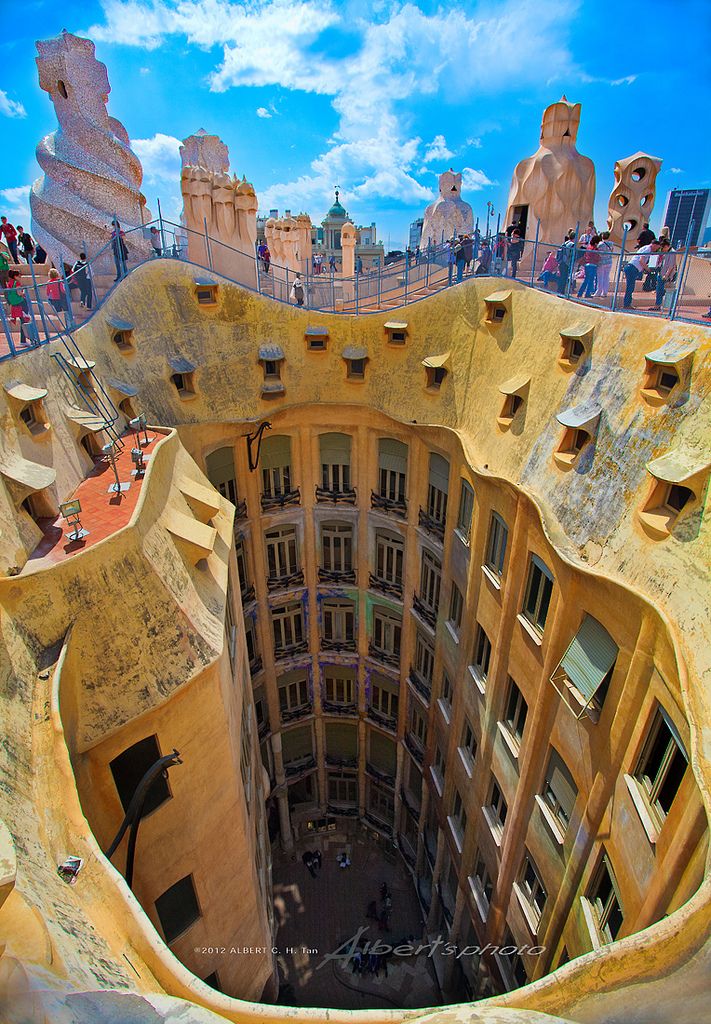 66 ha 66 ha
|
|
320-003 |
Casa Milà “La Pedrera” |
Spain |
N41 23 51.3 E2 9 46.9 |
0.5 ha |
11.17 ha |
|
320-004 |
Casa Vicens |
Spain |
N41 24 19. 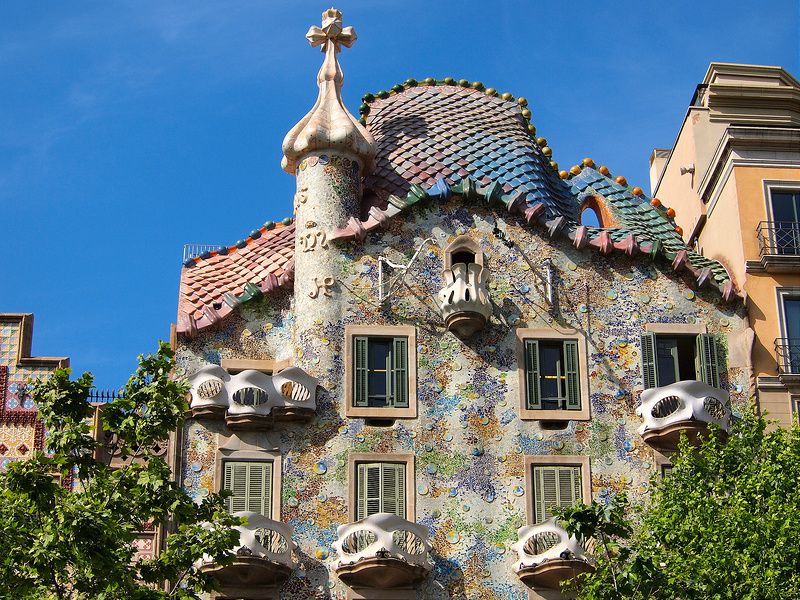 10 10 E2 9 6.30 |
0.12 ha |
4.23 ha |
|
320-005 |
Nativity Façade and Crypt of the Basílica de la Sagrada Família |
Spain |
N41 24 19.8 E2 10 30.2 |
0.19 ha |
7. 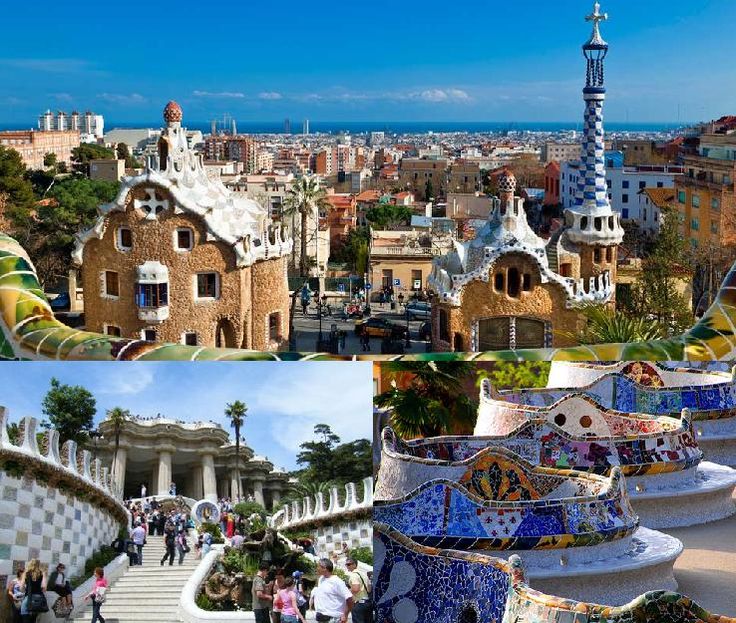 22 ha 22 ha
|
|
320-006 |
Casa Batlló |
Spain |
N41 23 29.89 E2 9 53.17 |
0.46 ha |
1.02 ha |
|
320-007 |
Crypt at the Colònia Güell |
Spain |
N41 21 56.  40 40 E2 1 44.10 |
0.22 ha |
0.32 ha |
Download World Heritage Properties into different formats (RSS/XML/KML)
Maps
| Date | Title | |
|---|---|---|
|
|
2004 |
Works of Antoni Gaudí. Map showing Parque Güell |
|
|
2004 |
Works of Antoni Gaudí.  Map showing Palacio Güell Map showing Palacio Güell
|
|
|
2004 |
Works of Antoni Gaudí. Map showing Casa Mila |
|
|
2004 |
Works of Antoni Gaudí. Map showing Casa Vicens |
|
|
2004 |
Works of Antoni Gaudí. 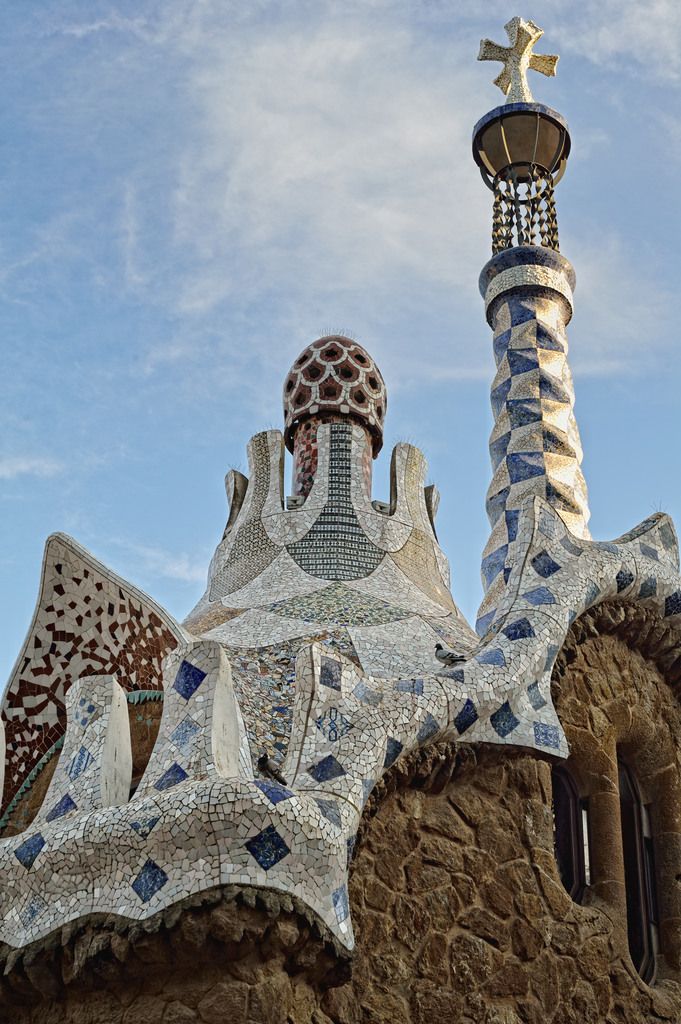 Map showing Casa Batlló Map showing Casa Batlló
|
|
|
2004 |
Works of Antoni Gaudí. Map showing Gaudí’s work on the Crypt at the Colònia Güell |
|
|
2012 |
Works of Antoni Gaudí. Map showing the Gaudí’s work on the Sagrada Familia Clarification / adopted |
top
remember my profile
Forgot your username or password?
Become a member
Works of Antoni Gaudí – Documents
Your browser does not support JavaScript.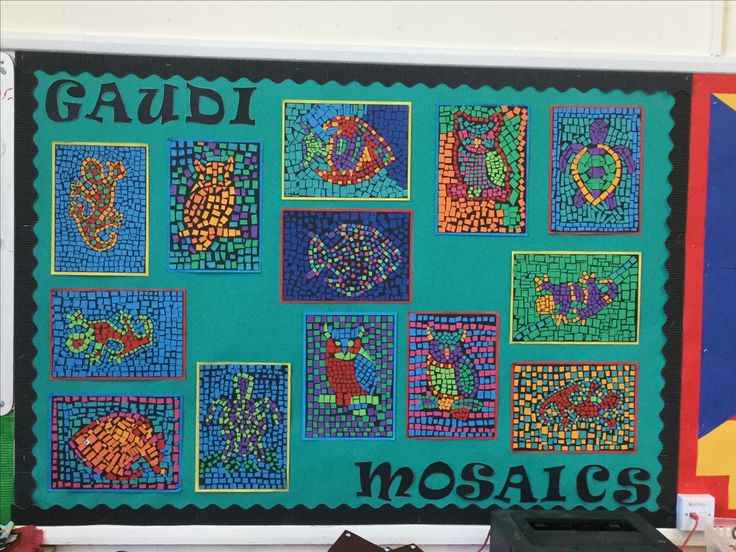
tune Filter
The List
Works of Antoni Gaudí
- Description
- Maps
- Documents
- Gallery
- Video
- Indicators
| Advisory Bodies Evaluations | |
|---|---|
|
2005 |
Advisory Body Evaluation (ICOMOS) |
|
1984 |
Advisory Body Evaluation (ICOMOS) / Évaluation de l’organisation consultative (ICOMOS) |
| Maps | |
|
2012 |
Works of Antoni Gaudí. 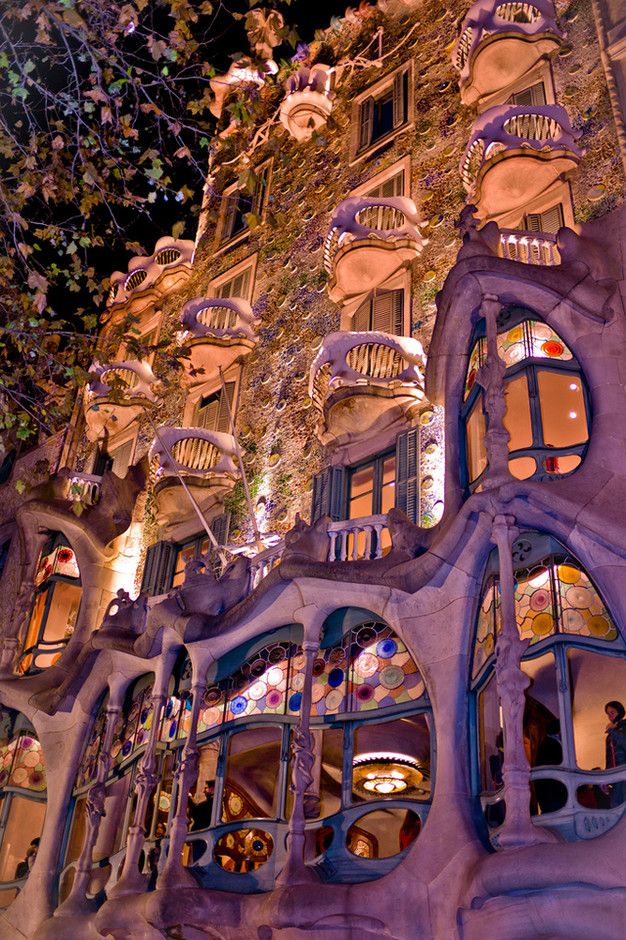 Map showing the Gaudí’s work on the Sagrada Familia Map showing the Gaudí’s work on the Sagrada Familia
|
|
2004 |
Works of Antoni Gaudí. Map showing Parque Güell |
|
2004 |
Works of Antoni Gaudí. Map showing Palacio Güell |
|
2004 |
Works of Antoni Gaudí. Map showing Casa Mila |
|
2004 |
Works of Antoni Gaudí. Map showing Casa Vicens |
|
2004 |
Works of Antoni Gaudí. 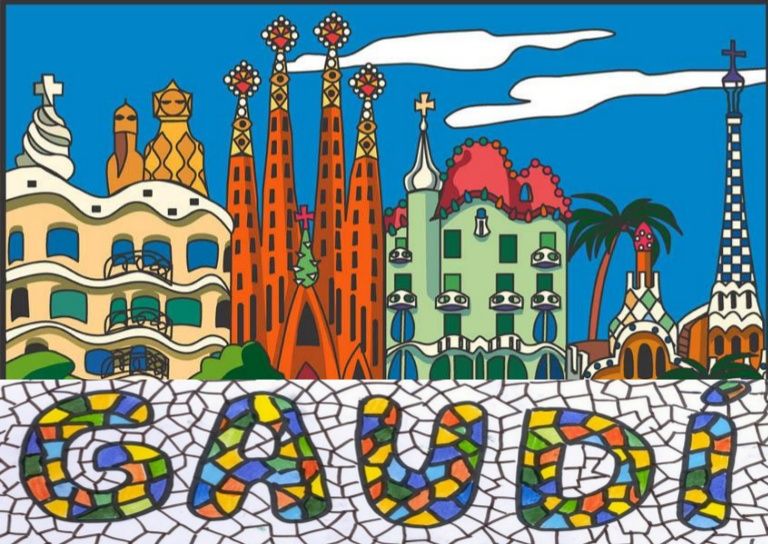 Map showing Casa Batlló Map showing Casa Batlló
|
|
2004 |
Works of Antoni Gaudí. Map showing Gaudí’s work on the Crypt at the Colònia Güell |
| Decisions | |
|
2014 |
38COM 8E – Adoption of Retrospective Statements of Outstanding Universal Value |
|
2013 |
37COM 7B.103 – Omnibus Decision |
|
2012 |
36COM 8D – Clarifications of property boundaries and areas by States Parties in response to the Retrospective Inventory |
|
2011 |
35COM 7B. 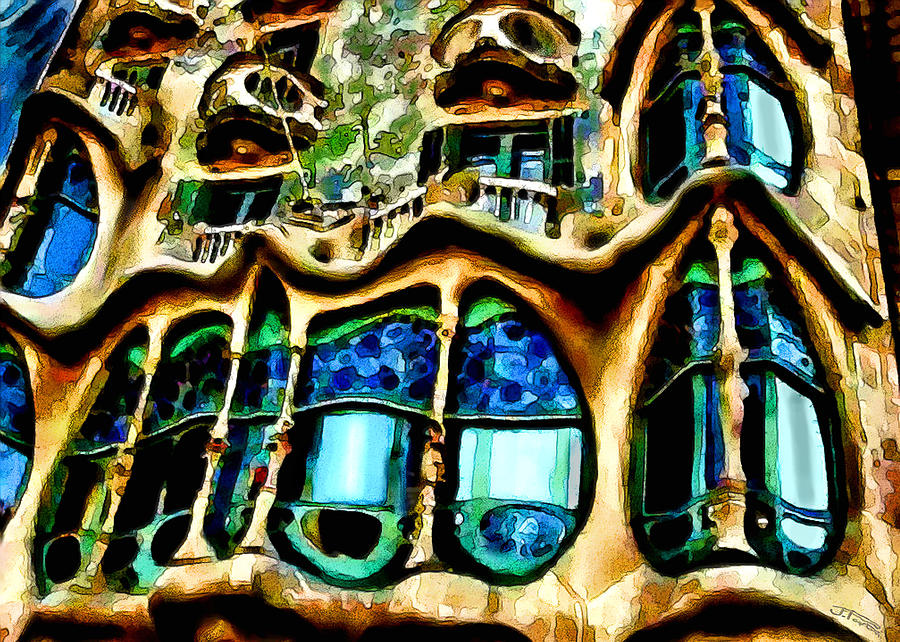 109 – Works of Antoni Gaudí (Spain) (C 320bis) 109 – Works of Antoni Gaudí (Spain) (C 320bis)
|
|
2010 |
34COM 7B.98 – Works of Antoni Gaudí (Spain) (C 320bis) |
|
2009 |
33COM 7B.121 – Works of Antoni Gaudí (Spain) (C 320 bis) |
|
2008 |
32COM 7B.108 – Works of Antoni Gaudí (Spain) (C 320 bis) |
|
2005 |
29COM 8B.47 – Extension of Properties Inscribed on the World Heritage List (Parque Güell, Palacio Güell and Casa Mila in Barcelona) |
|
1984 |
Report of the 8th Session of the Committee |
|
1984 |
08COM IXA – Inscription: Parque Guell, Palacio Guell and Casa Mila, in Barcelona (Spain) |
| Periodic Reporting | |
|
2014 |
Periodic Reporting Cycle 2, Section II |
|
2006 |
Periodic Reporting Cycle 1, Section II (Summary) |
| State of conservation reports | |
|
2013 |
State of conservation reports |
|
2011 |
State of conservation reports |
|
2010 |
State of conservation reports |
|
2009 |
State of conservation reports |
|
2008 |
State of conservation reports |
top
remember my profile
Forgot your username or password?
Become a member
Architect Antonio Gaudí: 7 best projects
Once you see a building designed by this architect, you will remember its style forever.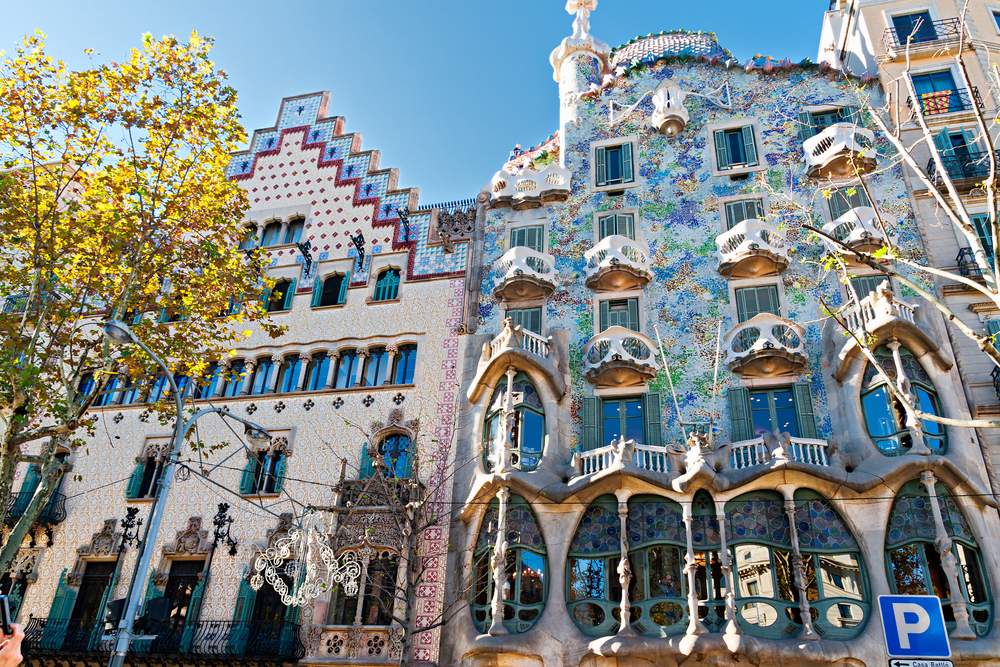
Photo: Shutterstock
The lack of straight lines, colorful mosaics, the play of light and color, exceptional attention to detail, and as a result – architectural objects that appeared in an ordinary city as if from another world. Gaudi is called the “genius of the place”, most of his creations are in Barcelona, and it was they who became the face of the capital of Catalonia. Gaudi considered nature to be his main inspiration and tried to convey the beauty of the world around him in color schemes, architectural curves and forms.
Gaudí’s Catalan Art Nouveau: 7 buildings that made Barcelona famous
- Biography
- Best projects
- Architects’ comments
adv.rbc.ru
Short biography of Antonio Gaudí
Antonio Gaudí y Cornet was born on June 25, 1852 in the small Catalan town of Reus.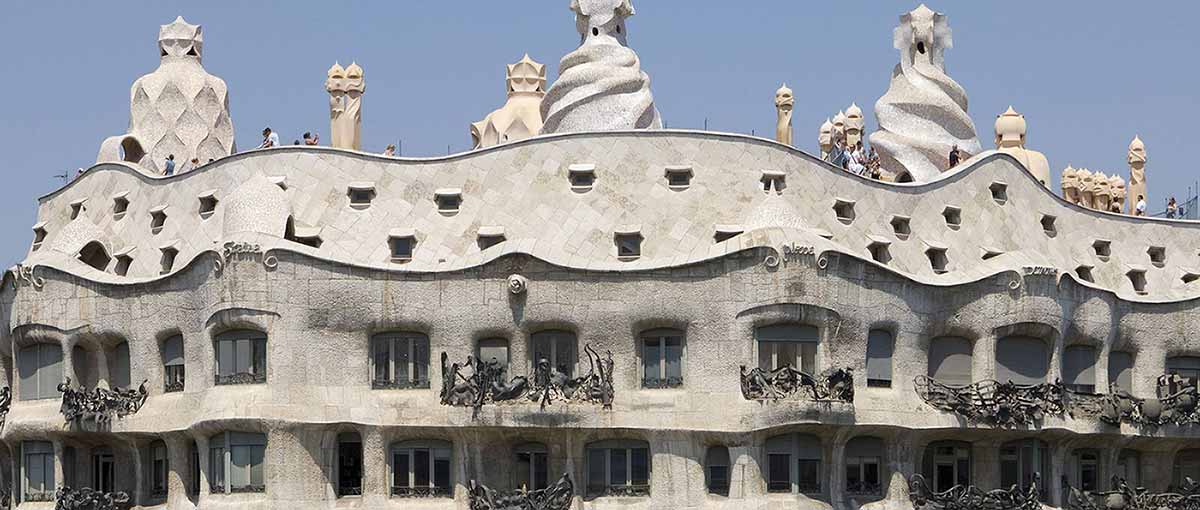
Photo: Public Domain
Güell and Gaudí’s collaboration resulted in such architectural objects as Güell Palace, Güell Park, Güell wine cellars, pavilions of the estate in Pedralbes near Barcelona, chapels and crypts of Colonia Güell. After the construction of the palace was completed, Antonio became one of the most fashionable architects in Barcelona. Between 1898 and 1912, he built three residential buildings – Calvet, Mila and Batllo, which soon became significant landmarks of the city.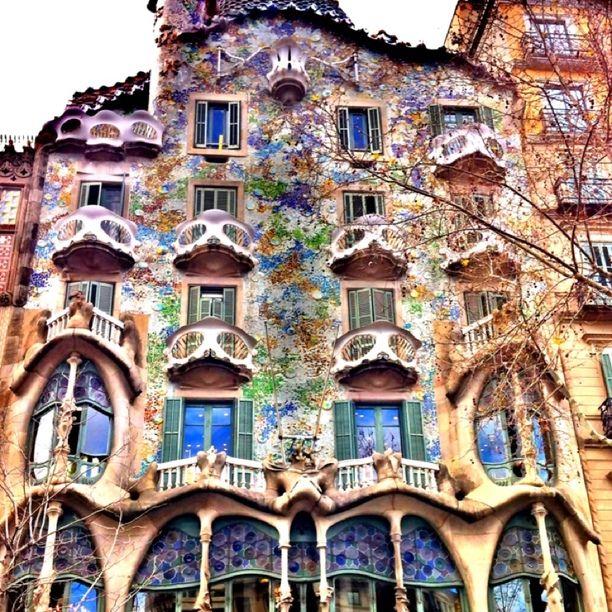
At the same time, in the 1880s, Gaudí implemented no less significant projects – the House of Vicens, the Villa El Capriccio – one of the few of his works that are located outside of Barcelona.
In 1884, Gaudí led the construction of the Sagrada Familia. He replaced the architect Francisco de Paula del Villara, who, due to disagreements with the customer, refused to work. Antonio devoted himself entirely to the construction of the temple.
At the age of 73, before he could complete his main project, Gaudí, who always preferred to walk, was hit by a tram. Due to the fact that the last years of his life the architect did not particularly follow his appearance, local taxi drivers mistook him for a beggar and refused to take him to the hospital for a long time. So the once most successful master, who had a line of rich customers, ended up in a hospital for the poor. When Gaudí was finally found out, it was too late – they couldn’t save him.
From Gaudí to Hadid: 7 projects that were not realized
House of Vicens
Gaudí’s first significant work is considered to be this building.
Photo: Pol Viladoms/wikipedia.org
The design of the house is made in neo-Mudéjar style, referring to the Spanish architecture of the Middle Ages. But even then, the recognizable handwriting of Gaudi was noticeable, and one of his first works immediately attracted attention with its originality compared to the general view of Barcelona at that time.
Photo: Andrea G/Pexels
A garden was laid out around the house, in which Gaudí designed a fountain, part of the fence and a rotunda in the form of palm leaves.
Bellesguard Tower
In 1900 Antonio Gaudí was approached by the wife of the industrialist Jaume Figueres with a request to build a house on the site of the former residence of King Martin of Aragon, with whom the heyday of Catalonia is associated. When the architect got down to business, only a few walls and a courtyard remained from the residence. Gaudi was a patriot and cared about history, so he tried to convey the spirit of the Middle Ages in his project as much as possible. Externally, the house looks like a castle of that time, complemented by bright details in the style of an architect. The project was handed over at 1909 year.
Photo: Catalan Art & Architecture Gallery
The Torre Bellesguard is surmounted by the typical cross of Gaudi architecture, decorated with red and yellow mosaics, the colors of the Catalan flag.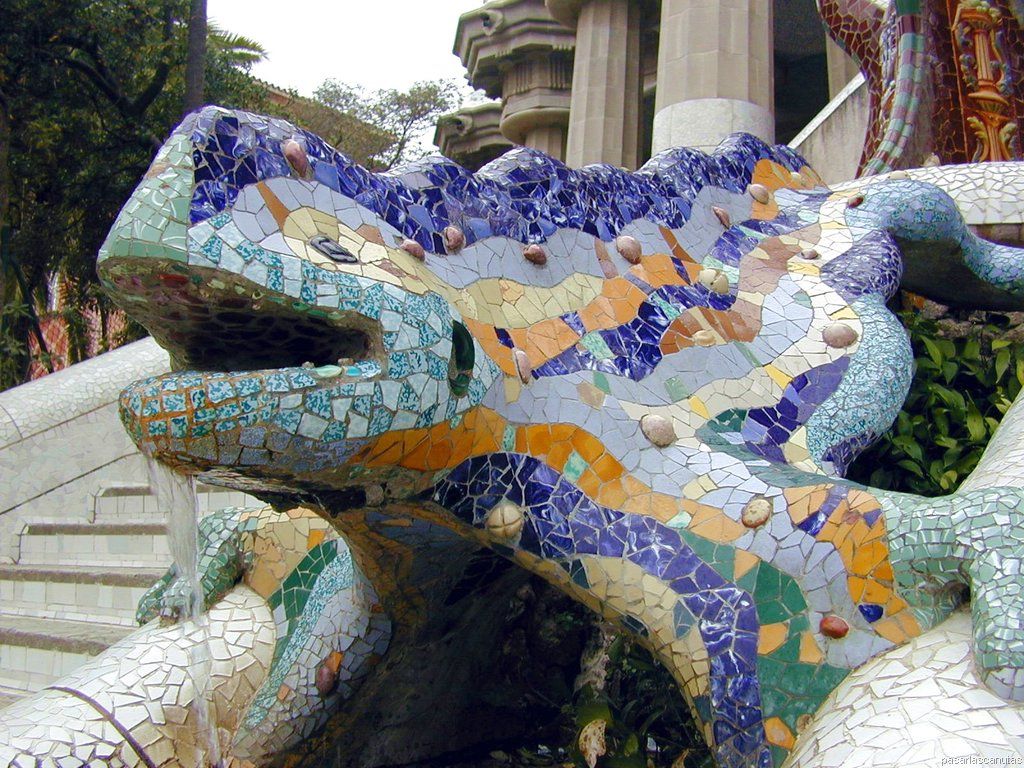
Photo: Catalan Art & Architecture Gallery
The Figueres house consists of ground floor, main floor, basement and attic. An unusual transition system became an original solution in the interior: a spiral staircase ends on a terrace surrounded by battlements, which offers a picturesque view of the city. In this project, Gaudí’s style was still in the process of being formed: it lacks the catchy Moorish accents and bright colors that later became the hallmarks of many of his later works.
Palau Güell
The palace was built as the main residence of Eusebi Güell in the El Raval district of central Barcelona between 1885 and 1890. It was Gaudí’s first major project commissioned by Güell.
Photo: Seth Lemmons/wikipedia.org
On the facade of the building are two pairs of large gates that were made specifically for horse-drawn carriages: guests could go out and immediately climb the stairs to the desired floor, and the carts went to the lower stables and cellars. The entrance arch is decorated with an iron lattice imitating a vine. In this project, for the first time, Gaudi’s idea was realized to decorate not only the facade, but also turn the roof into a work of art. It has 20 chimneys decorated using the trencadís technique. The building itself is faced with gray Garraf marble.
Photo: Thomas Ledl/wikipedia.org
The centerpiece of the interiors is the reception room, which is topped by a parabolic dome spanning several floors. It is painted in the deep dark blue color of the night sky, so that everyone who comes to the palace has a feeling of unity with nature. Gaudi made small holes in the dome, and hung lanterns inside the spire – so the light that seeps through them looks like stars twinkling in the sky.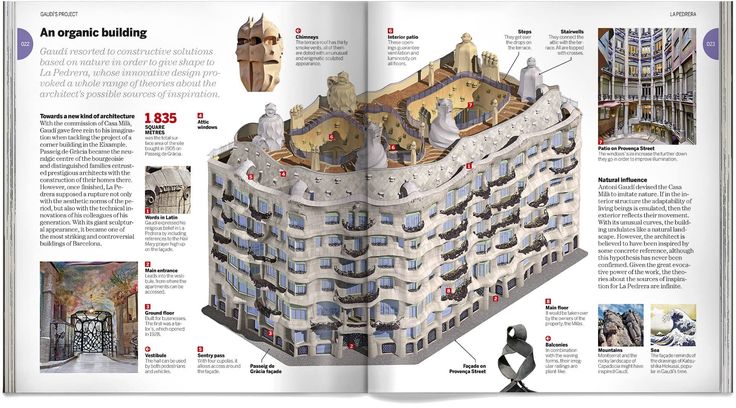
Photo: Jun Seita/wikipedia.org
Park Güell
Park Güell was the last project Eusebi Güell commissioned from Antoni Gaudí. It was created in 1900-1914 and is located in the upper part of Barcelona. On the territory of more than 17 hectares there is both a residential part and green areas of gardens. At the entrance to the park, the first thing that catches your eye is two buildings that look like gingerbread houses from fairy tales. The right pavilion with a decorative tower (pinnacle) and a five-pointed cross was created for the administration of the park, the left one was for the gatekeeper.
Photo: Sung Shin/Unsplash
The centerpiece of the park is the large upper terrace, which offers sweeping views of Barcelona. To enjoy it in comfort, Gaudí placed a long, snake-shaped bench on the terrace. It is decorated in the traditional Gaudí technique of trencadís. Mosaics made of marble particles, glass and broken tiles can also be seen and appreciated on the entrance pavilions, on the railing of the main staircase and in the Hall of the Hundred Columns.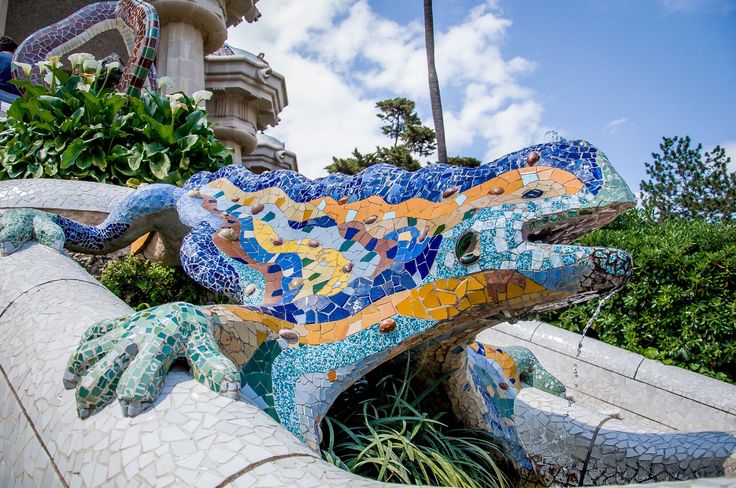
Photo: Håkon Grimstad/Unsplash
Gaudi was very careful about the natural landscape, so he tried to preserve the trees on the construction site as much as possible. The park has a special system for watering plants using viaducts, and their columns are stylized as tree trunks. For their unusual appearance, they received the name “Bird’s Nests”. Footpaths, paths and walking alleys built from local stone scatter from the main square.
Photo: Roy Tack/Unsplash
In 1963, in a cottage in the park where Gaudí lived, a house-museum named after him was opened, which contains furniture from the Casa Batlló and Mila built by the architect. And at 19In 84, Park Güell was included in the UNESCO World Heritage List.
Houses of architects: 10 buildings built for themselves
Casa Batlló
Casa Batlló is a reconstruction of the original building, built in 1877, owned since 1900 by the textile magnate José Batlló. It is located on Paseo de Gracia, one of the most important boulevards in the center of Barcelona.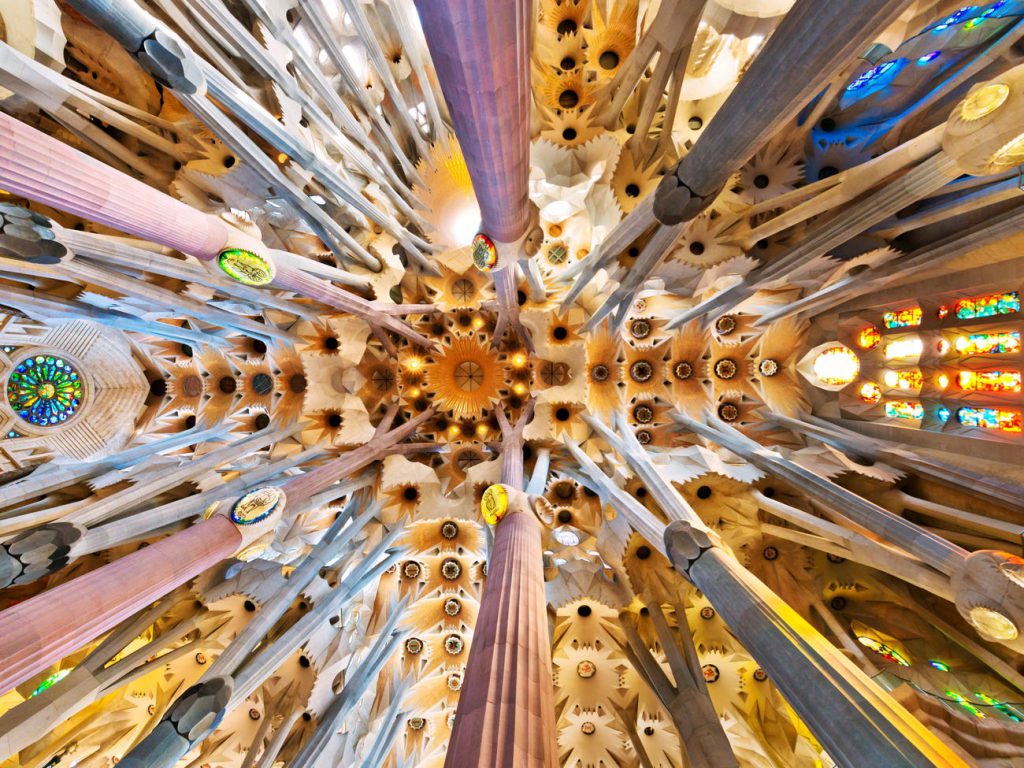
Photo: ChristianSchd/wikipedia.org
In the inner courtyard, to make the lighting even, Gaudí installed gradient tiles that change color as they move up from white to azure. For the same purpose, the patio windows vary in size, getting smaller towards the top.
Photo: Sara Terrones/wikipedia.org
This creates an amazing play of chiaroscuro. Furniture, which was made according to the project of the architect, is not mentioned so often in the context of his work.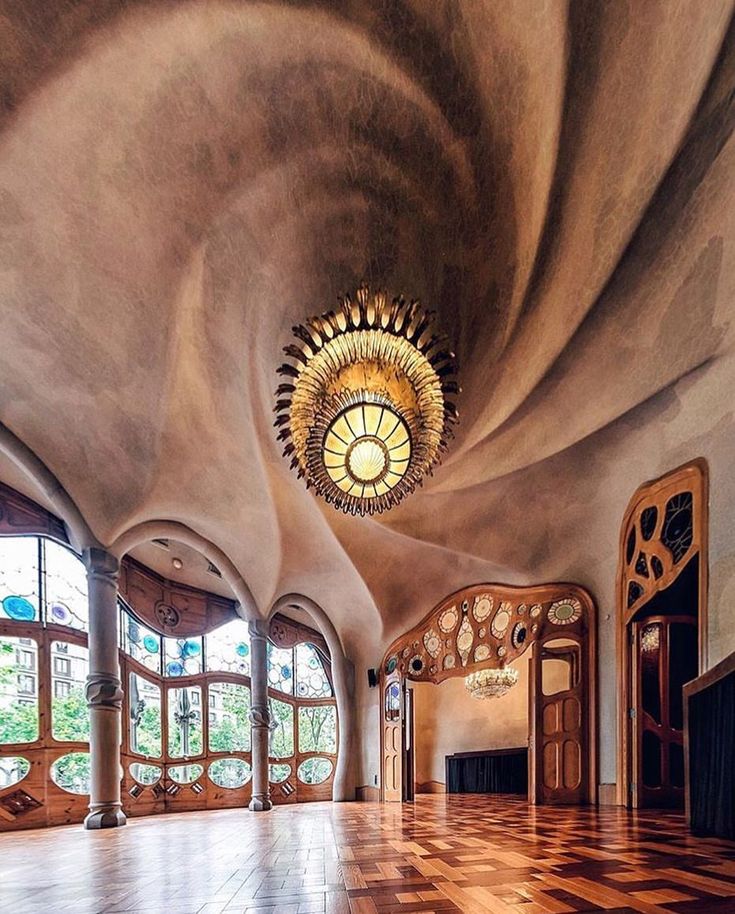
A stylized copy of Gaudí’s “House of Bones” will appear in Moscow
Mila House
The residential building, built by Gaudi in 1906-1910 for the Mila family, was his last secular work before he devoted himself entirely to the construction of the Sagrada Familia .
Photo: Thomas Ledl/wikipedia.org
Because of its massive façade, it was nicknamed La Pedrera (The Quarry). Casa Mila was innovative both architecturally and in terms of communications. It has a unique system of natural ventilation that allows you to abandon the air conditioners.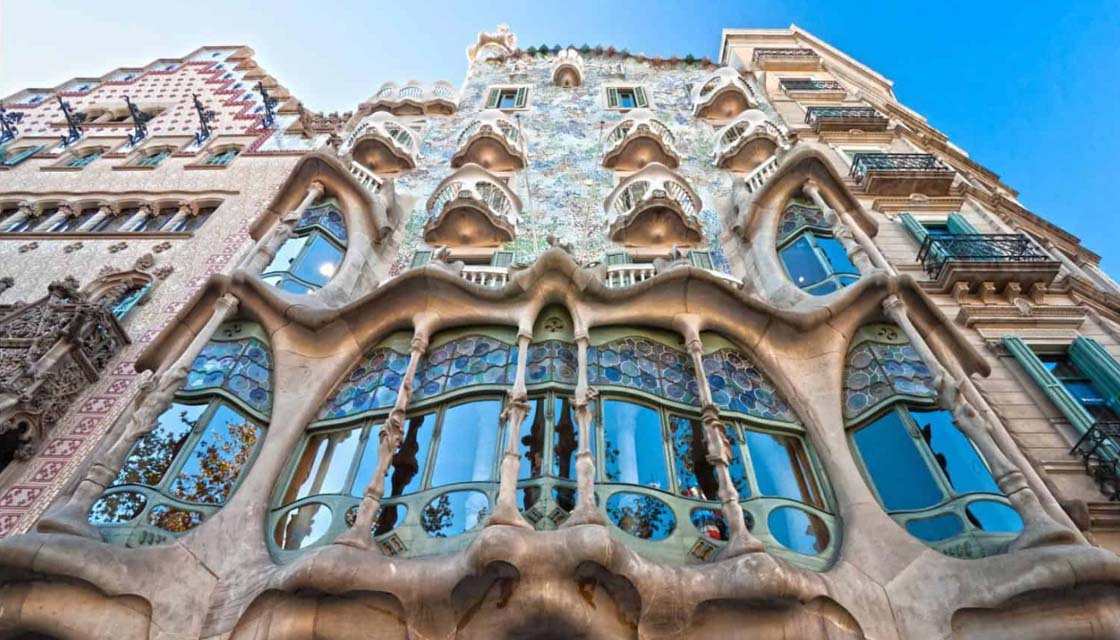
Photo: Pixabay
And the interior partitions in each of the apartments can be moved at will. The building also has no load-bearing and supporting walls, only load-bearing columns. The house has an underground garage, which was a very unusual solution for the beginning of the 20th century.
Photo: Pixabay
The architect combined the three courtyards into one, so that the building would have as much natural light and fresh air as possible. The relief of the roof repeats the wavy outlines of the facade, and it houses the exits of stairwells, ventilation and chimneys, transformed into unusual sculptures. They are decorated with trencadis mosaics. Casa Mila was the first building of the 20th century to be included in the UNESCO World Heritage List.
Sagrada Familia
Sagrada Familia remains Gaudí’s most famous and controversial creation. The first draft of the building was developed by the architect Francisco del Villar in 1882 – he planned to build it in the Gothic style.
According to the idea of the initiators, the funding comes only from the donations of the parishioners, who come “unevenly”, and this greatly slows down the construction. Also, the completion of the project delays the difficulty of making stone blocks. In addition, during the Spanish Civil War in July 1936, the entire workshop of Gaudí burned down along with his models and sketches of the church. They were partially restored in 1939-1949, and further construction continued on these models, in which the original intent of the architect was preserved. In 2010, the temple was consecrated by Pope Benedict XVI, and daily services are held there.
Photo: Enrico Perini/Pexels
The Sagrada Familia is designed in the form of a Latin cross, with an apse and a covered walkway.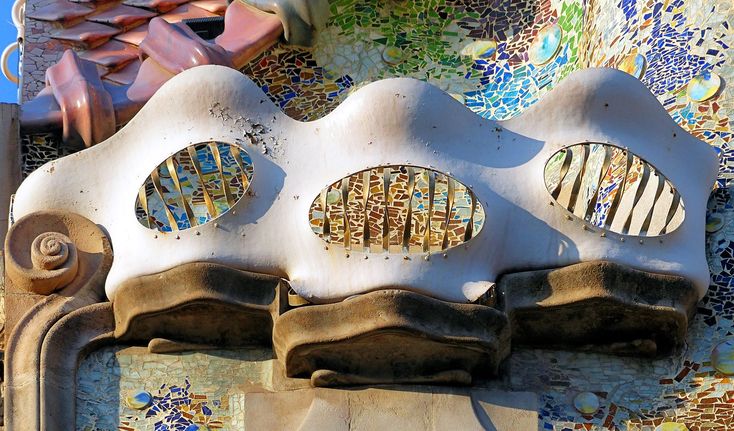
The eastern façade of the church is dedicated to the theme of the Nativity of Jesus Christ and is divided into three parts-portals, which represent Faith, Hope and Mercy. The Nativity Facade is the main entrance to the church; it is decorated with bas-reliefs and sculptural compositions dedicated to scenes from the Bible. In the central part there is a Christmas tree, under which a scene of the glorification of the Mother of God is carved out of stone.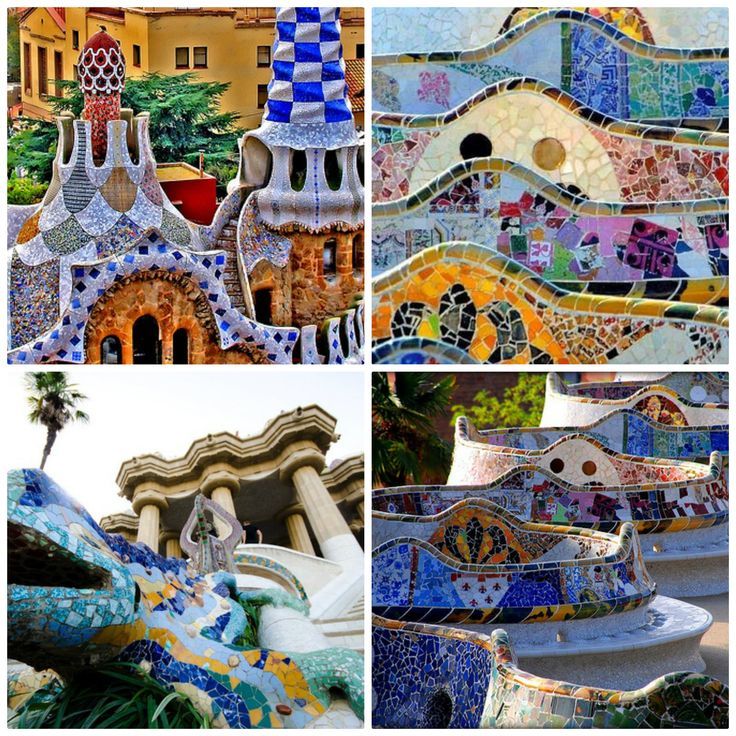
Photo: Andrea G/Unsplash
The inside of the temple also mimics nature: the vaults, which reach 60 m in height, branch out to the ceiling and create a structure that repeats the forest landscapes. This decision also has a functional meaning: thanks to the branching structures, Gaudí avoided the construction of buttresses, traditional for Gothic architecture – vertical straight supports to reinforce load-bearing walls.
On the opposite side of the temple is the facade of the Passion. In contrast to the facade of the Nativity, it looks more gloomy and concise. Gaudí’s idea was that the sculptures and images in the portals of the Passion façade symbolized sins and caused awe.
Photo: Joseph Gilbey/Unsplash
Gaudí devoted 12 years to Sagrada Familia, and at the time of the architect’s death, the basilica was only 20% complete. Antonio managed to build only part of the apse, the eastern facade and the crypt in which he was buried. Gaudi was an ardent Catholic, he guessed that he would not live to see the end of the project, but this did not stop him. When asked about the timing, he replied “My client is in no hurry.”
At the moment, the construction of the third facade (Glory), the interior design of the temple is underway. There is also a house-museum of the architect and a school on the territory. Gaudí discovered it at 1909 for the children of the workers who built the church. Previously, it was located on the site of the main facade of the temple, but then it was dismantled and moved.
Photo: Greg Lois/Pexels
All this time the construction of the Sagrada Família was illegal because there was no official license for it.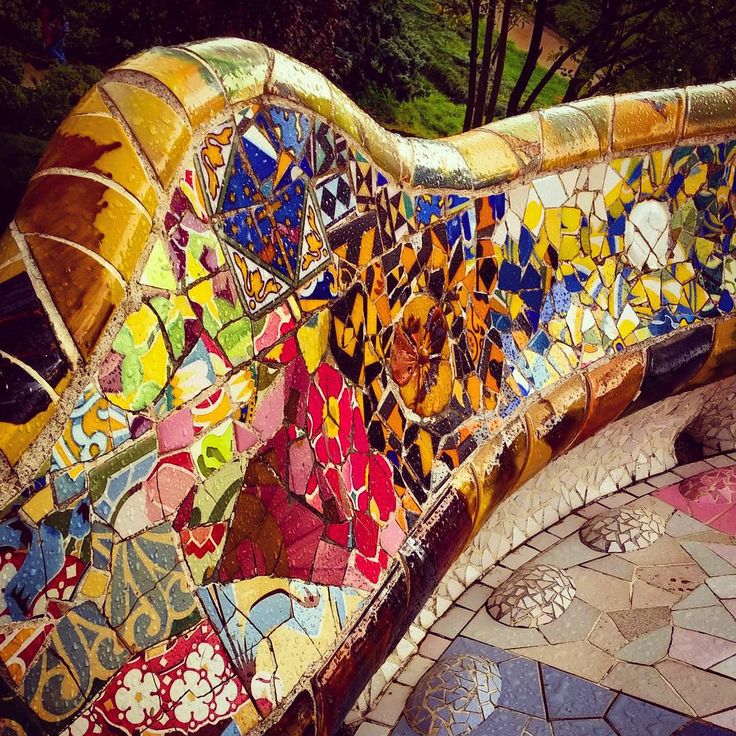
Gaudí’s most famous project will be completed in 2026
Gaudí’s style: comments from architects
Nikolai Faneev, lead architect of IND architects:
— Antonio Gaudí worked in the Art Nouveau style. Each direction in art, literature, architecture has a bright representative, with whom they begin to associate the direction, and Gaudi became such for modernity. When he “created”, there were strong changes in the social life of Europe, new ideas and ideologies appeared, and the architect did not quite correspond to the spirit of the times with his religious views.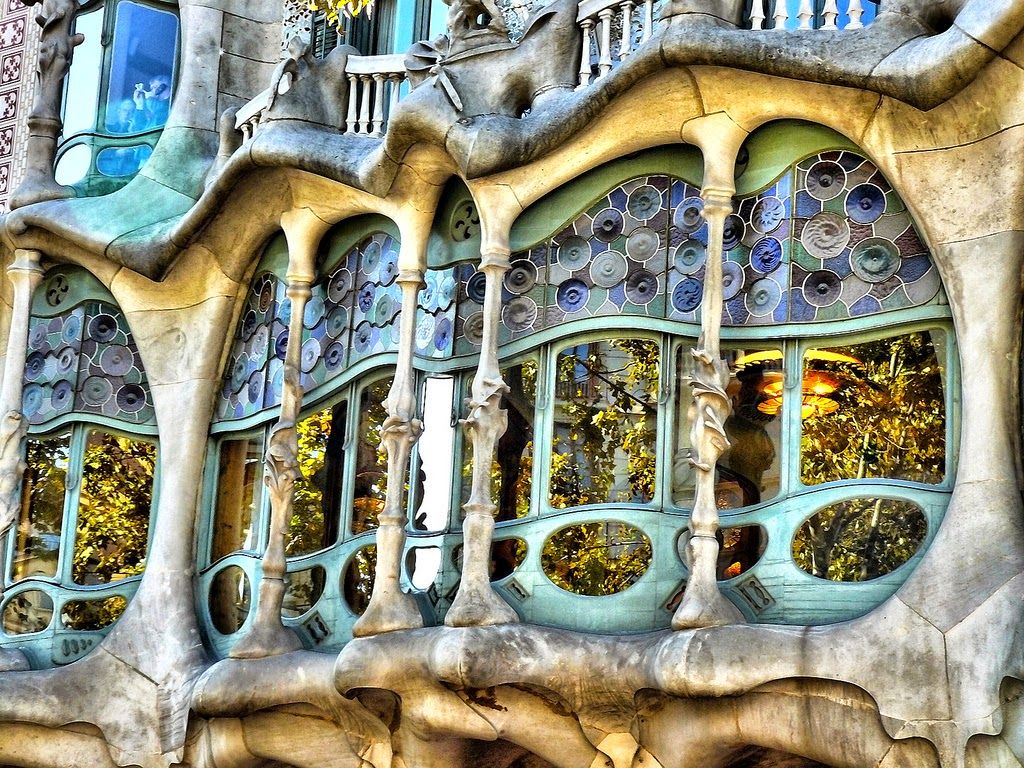
Gaudí’s architecture cannot be considered only as a visual image – it is impossible to understand it that way. A distinctive feature of the whole Art Nouveau was that the architects actively worked with the interiors. Gaudí’s interiors are an important part of his projects and his work. Another facet is the construction of buildings, it was in them that the genius of Gaudí manifested itself. The techniques used by him, as a rule, were already invented before him. But he differed in principles and approaches in work. Gaudi, like other representatives of Art Nouveau, skillfully used reinforced concrete, worked a lot with structures, turning them into artistic elements, a vivid example is parabolic arches. Gaudí’s architecture is dominated by natural and natural forms. Today we perceive reinforced concrete as an urban component, but in the hands of Gaudí it turned into plant images.
Gaudí is first and foremost an architect who works with structures and natural forms, a professional who pays attention to detail.
Sergey Nikeshkin, General Director of the Krupny Plan bureau:
— Despite frequent commissions and work on large objects in his hometown of Barcelona, Gaudí’s true popularity and recognition came after his death.
Among Gaudí’s works, his residential buildings in Barcelona stand out first of all – they are very characteristic, artistic and handicraft. They show that the architectural language of the author is bright, original and timeless. The architect’s most famous project is the Sagrada Familia (Sagrada Família). This is a unique precedent for world architecture when a project is being built for so long – the temple was laid in 1882 according to the project of Antonio Gaudi and continues to be built after his death, using drawings and developments.
Gaudí’s ideas, architecture and solutions did not become popular. This is due to his style, which, due to its uniqueness, cannot be copied or even imitated. Gaudí’s architecture is his personal statement, very personalized.
6 most famous works of Antonio Gaudi The master is the creator of his own unique style based on Art Nouveau. During his life, Gaudí implemented 18 architectural projects, seven of which are today included in the UNESCO World Heritage List.
His most famous buildings are in Barcelona. Palace Güell, Park Güell, Casa Batllo, Casa Mila and the life work of the Spaniard – Sagrada Familia Expiatory – this is an incomplete list of Gaudí’s masterpieces. By the way, the last one has not been completed yet! During his lifetime, the architect spent 40 years on it, and according to the plan, the construction of the temple will be completed no earlier than in 2026.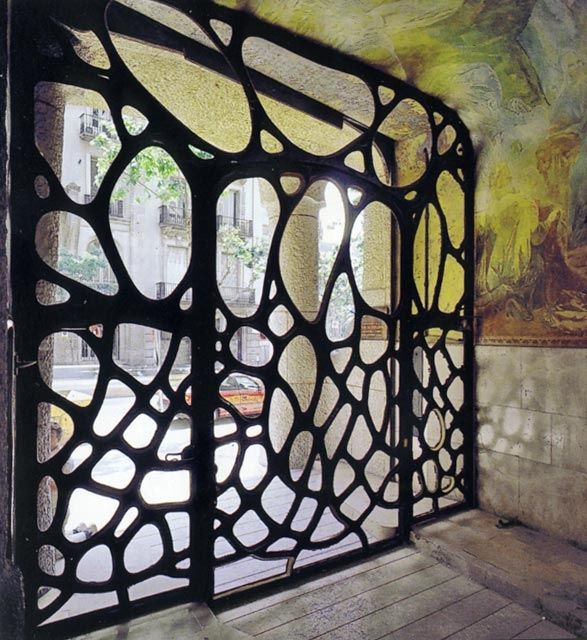
6th place. House Vicens
Vicens House is a private residential building that was built in 1883-1885 by order of Don Manuel Vicens y Montaner. The building is Gaudí’s first independent work. The facility is located in the Grazia district of Barcelona. From 1899 to the present day, the mansion belongs to the Hover family. Entry inside is prohibited; The building can only be admired from the outside. (Victor Wong) The house is made in Moorish Mudéjar style. Its facade is decorated with hand-painted tiles. (Ian Gampon)
Yellow marigolds are depicted on the tiles. (Ian Gampon)
5th place. Palace Güell
Güell Palace is a residential building that was built in 1885-1890 by order of Eusebi Güell. The building is designed in the style of Catalan modernism. The property is located in the Raval district of Barcelona. Visitors should pay special attention to the roof terrace and the central hall with a ceiling in the form of a starry sky. (Pirotek) The palace consists of four floors, a basement and a roof with a terrace.
4th place. Park Güell
Park Güell is a park that was built in 1900-1914 by order of Eusebi Güell. There are three houses on the territory of 17.18 hectares. Visitors should pay special attention to the fountain in the form of a mosaic Salamander, the “Hall of a Hundred Columns”, a bench in the form of a sea serpent. (Amy Goodman) Park Güell is a UNESCO World Heritage Site. (Ajuntament Barcelona) (YoungDoo Moon) (YoungDoo Moon) (KINO) (Jaime Pérez) (Paul Blair)
3rd place. Casa Batlló
Casa Batlló is a residential building that was rebuilt by Gaudí in 1904-1906 by order of Josep Batlló y Casanovas. The property is located in the Eixample district of Barcelona. The mansion itself resembles the curved back of a dragon, where the balconies are skulls and the columns are bones. (Luc Mercelis) Casa Batlló is included in the UNESCO World Heritage List.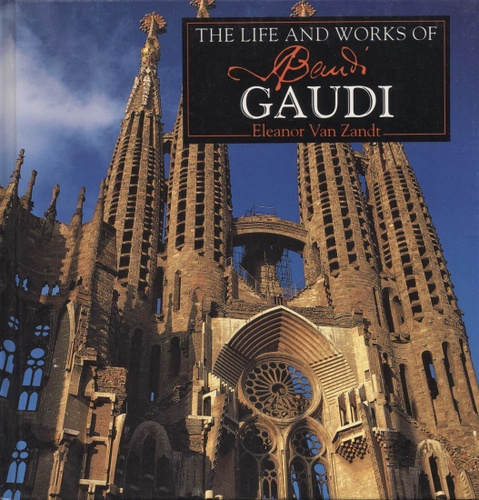
(Mstyslav Chernov) (mirsasha) (YoungDoo Moon) (Victor Wong) (YoungDoo Moon)
2nd place. House Mila
Mila House is a residential building that was built in 1906–1910 by order of the Mila family. The facility is located at the intersection of Passeig de Gracia Boulevard and Carré de Provença in Barcelona. The building has three courtyards, a roof terrace and an attic. (paula soler-moya) House of Mila is included in the UNESCO World Heritage List. (YoungDoo Moon) (Sebastian Niedlich) (Victor Wong) (Nathan Rupert)
1st place. Expiatory Church of the Holy Family
The Expiatory Temple of the Sagrada Familia – one of the most recognizable temples in Barcelona and the world – was not completed by Gaudí himself, who devoted about 40 years to it. Moreover, it has not been completed yet! Construction has been going on for 132 years exclusively on private donations. According to the Spanish government, the church will be completely completed no earlier than 2026.
Gaudi works: Works of Antoni Gaudí – UNESCO World Heritage Centre
Works of Antoni Gaudí – UNESCO World Heritage Centre
Outstanding Universal Value
Brief synthesis
The Works of Antoni Gaudí is a serial property consisting of seven buildings by the architect Antoni Gaudí (1852–1926) located in Barcelona and its surrounding areas. The property attests to the exceptional creative contribution of this architect to the development of architecture and construction technology in the 19th and early 20th centuries. The Park Güell, the Palau Güell, the Casa Milà-La Pedrera, the Casa Vicens, the Nativity Façade and the Crypt of the Sagrada Família, the Casa Batlló, and the Crypt of the Colònia Güell reflect an eclectic, very personal style to which Gaudí gave free rein in the field of architecture, as well as in the design of gardens, sculptures, and indeed all the arts.
The Works of Antoni Gaudí is an exceptional and outstanding creative contribution to the architectural heritage of modern times. His work is rooted in the particular character of the period, drawing on the one hand from traditional Catalan patriotic sources and on the other from the technical and scientific progress of modern industry. Gaudí’s work is a remarkable reflection of all these different facets of society and has a unique and singular character. In fact, his works are particularly associated with Modernisme, and in this sense, Gaudí can be regarded as the most representative and outstanding of the Modernista architects.
Gaudí’s work is an exceptional creative synthesis of several 19th-century artistic schools, such as the Arts and Crafts movement, Symbolism, Expressionism, and Rationalism, and is directly associated with the cultural apogee of Catalonia. Gaudí also presaged and influenced many forms and techniques of 20th-century Modernism.
Criterion (i): The work of Antoni Gaudí represents an exceptional and outstanding creative contribution to the development of architecture and building technology in the late 19th and early 20th centuries.
Criterion (ii): Gaudí’s work exhibits an important interchange of values closely associated with the cultural and artistic currents of his time, as represented in el Modernisme of Catalonia.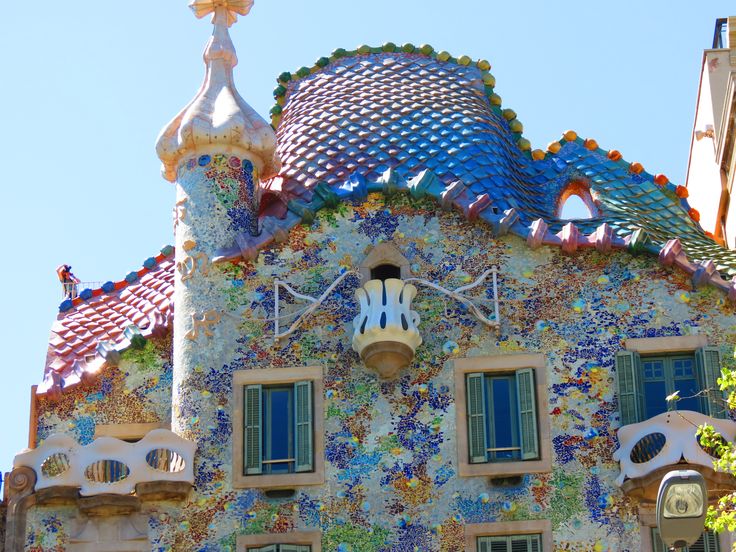
Criterion (iv): Gaudí’s work represents a series of outstanding examples of the building typology in the architecture of the early 20th century, residential as well as public, to the development of which he made a significant and creative contribution.
Integrity
In general, all the component parts of the property enjoy a high degree of integrity and have retained a good relationship with their surroundings, whether urban or natural.
The Palau Güell, originally a family home, is now a cultural and tourist facility that retains its architectural integrity, form, and original decoration. The Park Güell is still used as a public park and green space, the purpose for which it was designed; now combining this with tourist and cultural use, while conserving the original features in their entirety.
Authenticity
In general, all the buildings by Antoni Gaudí that are part of the serial property possess a fair degree of authenticity.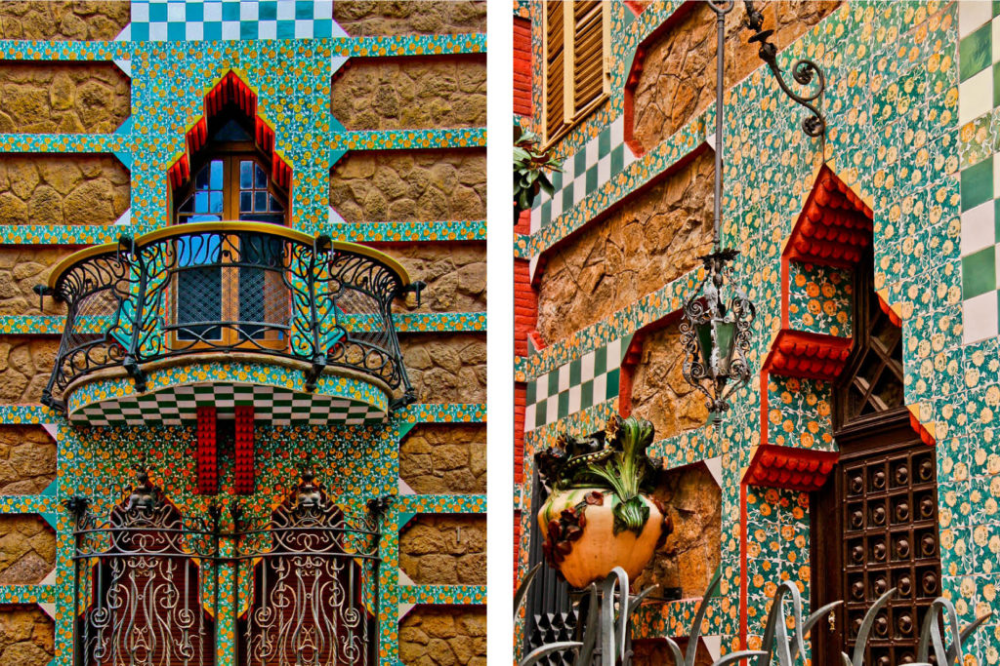
The Palau Güell has undergone a general restoration to improve its conservation and enhance its cultural use, highlighting the authenticity of its architectural and decorative features. The Park Güell has undergone a variety of minor and structural restorations to repair damage caused by its intensive public use and exposure to the elements. The Casa Milà-La Pedrera has been comprehensively restored to improve its state of conservation, highlight certain unique features such as the roof, attics, “noble” floor, etc., and to make it more suitable for cultural uses and public visits. The Casa Vicens has undergone only minor conservation and restoration work. The Casa Batlló has been restored to improve its state of conservation and enhance its use for cultural purposes.
At the Crypt of the Colònia Güell, the structure has been restored, preserving and consolidating Gaudí’s Crypt, substituting the stairs and the deteriorating temporary roof.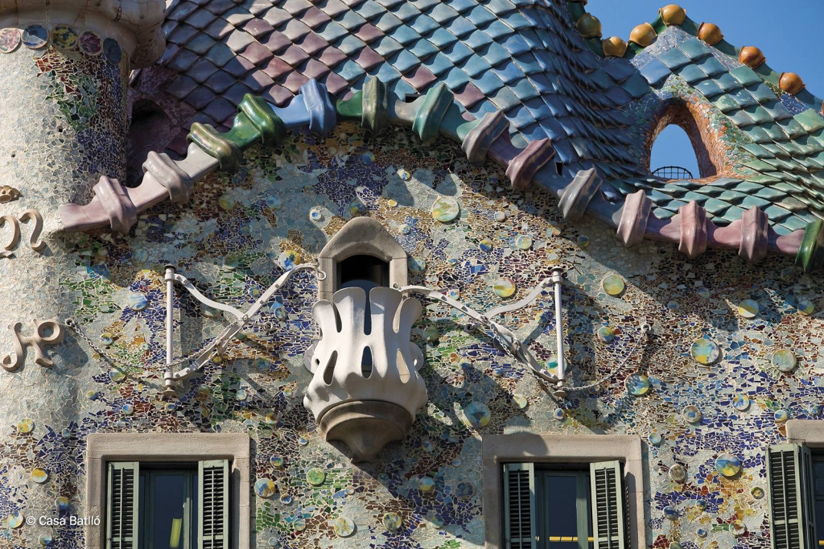
In the case of the Sagrada Família, the authenticity of the part built by Gaudí – the Nativity Façade and the Crypt – has been preserved in terms of its material, form, and workmanship.
Construction work on the church is continuing at the present time. The work originally performed by Gaudí must be considered in the context of the overall project that he himself had planned, which is now close to being brought to completion in accordance with the evidence and guidelines that have been drawn up and scientifically verified.
Protection and management requirements
Protection legislation includes Law 16/1985 of 25 June concerning Spanish Historical Heritage, Law 9/1993 of 30 September concerning Catalan Cultural Heritage, and Decree 276/2005 concerning Territorial Commissions for the Cultural Heritage.
In terms of management, there are numerous authorities involved in decision making at the levels of the State, the Autonomous Community, and the municipality. Similarly, ownership is varied: Park Güell is owned by the Barcelona City Council, Palau Güell by the Barcelona Provincial Council, Casa Milà-La Pedrera by the Fundació Catalunya – La Pedrera, and Casa Vicens is private property. Casa Batlló is owned by Inmobiliaria Casa Batlló SL, Sagrada Família by the Board of the Sagrada Família, and the Crypt of the Colònia Güell by Colònia Güell Consortium. Management of the property also has to reconcile diverse uses such as public garden (Park Güell), culture and tourism, and religious and residential use.
The Territorial Commission for the Cultural Heritage of Barcelona and the Territorial Commission of the city of Barcelona are ultimately responsible for the management and administration of the inscribed property, in accordance with the legislative and regulatory framework. In addition, different component parts have specific conservation, maintenance, and master plans to address particular conditions. The management of the property will need to respond effectively to the increased pressure from the growing number of visitors and continue its work on the protection and restoration of the structural and decorative elements, with attention paid to the behaviour and decay processes of the materials used (iron, ceramics, etc.).
Works of Antoni Gaudí – Gallery
tune Filter
The List
Works of Antoni Gaudí
- Description
- Maps
- Documents
- Gallery
- Video
- Indicators
Works of Antoni Gaudí (Spain)
© M & G Therin-Weise
Author: M & G Therin-Weise
Works of Antoni Gaudí (Spain)
© M & G Therin-Weise
Author: M & G Therin-Weise
Works of Antoni Gaudí (Spain)
© M & G Therin-Weise
Author: M & G Therin-Weise
Works of Antoni Gaudí (Spain)
© M & G Therin-Weise
Author: M & G Therin-Weise
Works of Antoni Gaudí (Spain)
© M & G Therin-Weise
Author: M & G Therin-Weise
Works of Antoni Gaudí (Spain)
© M & G Therin-Weise
Author: M & G Therin-Weise
Works of Antoni Gaudí (Spain)
© Barbara Blanchard
Author: Barbara Blanchard
Works of Antoni Gaudí (Spain)
© Barbara Blanchard
Author: Barbara Blanchard
Works of Antoni Gaudí (Spain)
© Barbara Blanchard
Author: Barbara Blanchard
Works of Antoni Gaudí (Spain)
© Barbara Blanchard
Author: Barbara Blanchard
Works of Antoni Gaudí (Spain)
© Barbara Blanchard
Author: Barbara Blanchard
Works of Antoni Gaudí (Spain)
© Barbara Blanchard
Author: Barbara Blanchard
top
remember my profile
Forgot your username or password?
Become a member
Biography of Antonio Gaudí
1852 Antonio Gaudí was born on June 25 in Reus, the son of Francesc Gaudí y Serra, a coppersmith from Ryudoms, and Antonia Cornet y Bertrand.
1869 Antonio travels to Barcelona with his brother Francesco. Francesco begins to study medicine, and Antonio is preparing to enter the architectural school. The father sells part of his property in Reus to pay for his sons’ education and moves to Barcelona.
1873 Gaudí begins studying architecture at the Escola Provincial d’Architecture, an architectural school that in 1875 was transformed into the Faculty of Architecture of the University of Barcelona.
1876-1878 In order to be able to pay for his studies, Gaudí works as a draftsman for Josep Fontsere, manager of the construction of the first public urban park in Barcelona, for the architect Francesc Paula Villar y Lozano, at the Padros y Borras machine factory, and for architect Leandre Serralach y Mas.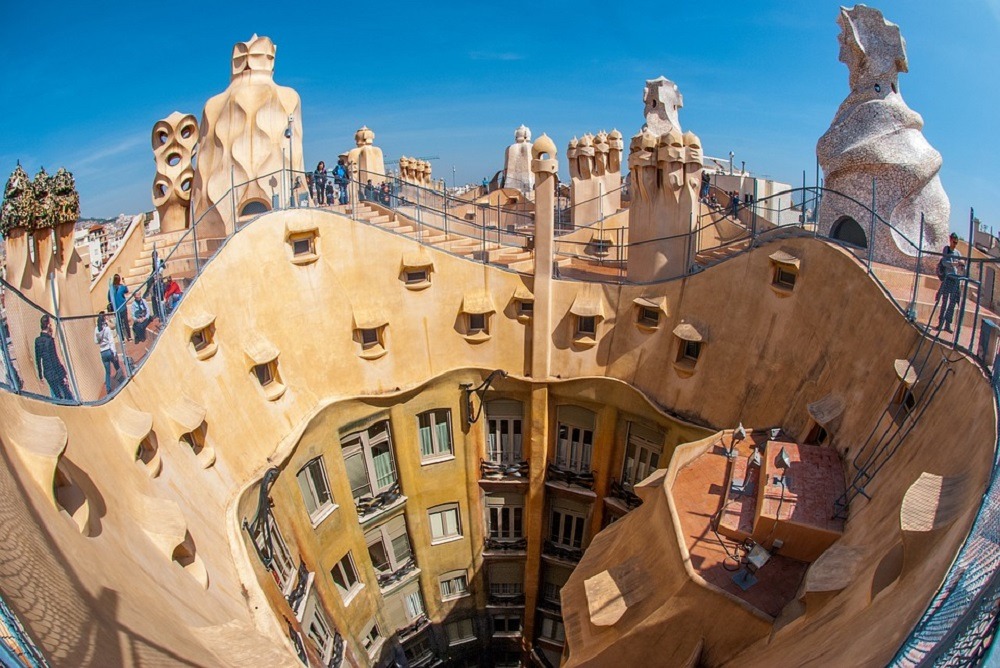
1878 On March 15, Gaudí receives his diploma in architecture.
In the workshop of the craftsman Eudaldo Punti, he has his own drafting table, and he begins to receive his first orders. Textile merchant Esteve Comella commissions Gaudí to design a window display for the Paris World’s Fair. Count Eusebio Güell y Basigalupi drew attention to this showcase, and since then he began to find small orders for Gaudí.
This year, Gaudí designed street lamps and also worked on a project for a workers’ camp for the textile cooperative Obrera Mataronense. If Gaudí’s lanterns can still be seen on the Plaza Real in Barcelona, then only one warehouse has come down to us from the buildings of the cooperative.
Gaudí, along with other members of the Association of Architects of Catalonia and the “Centre of excursionists”, gets acquainted with the architectural monuments of Catalonia.
The architect’s sister, Rosa, dies. Her daughter Rosita and father Gaudí settle down with him.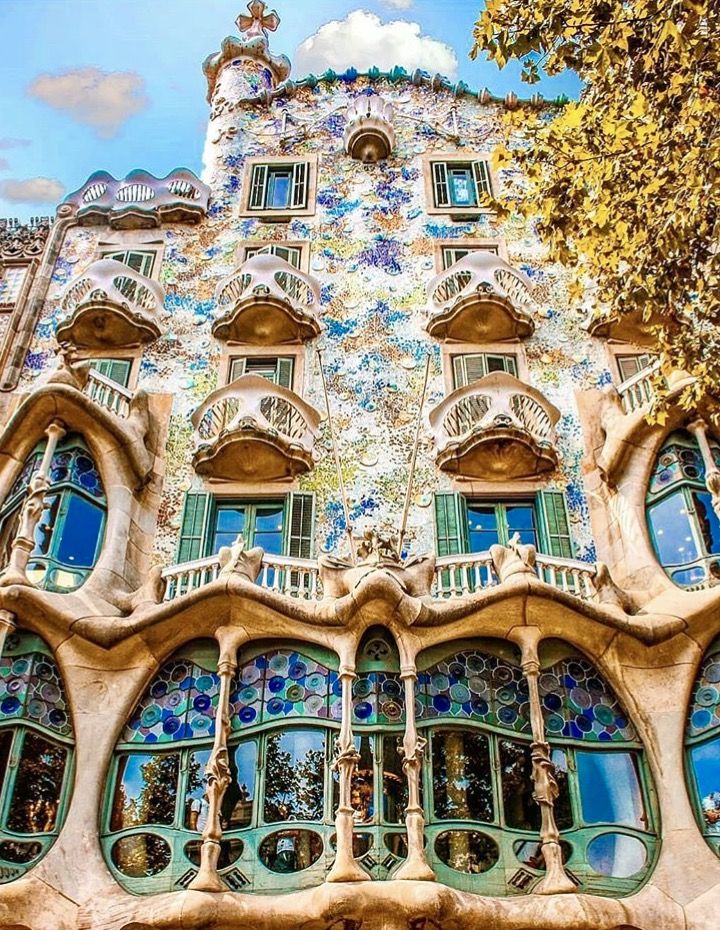
1880-1882 An architect designs an altarpiece for the cathedral in Tarragona. In February 1881, the architect publishes an article in the magazine La Reinaxensa in which he criticizes the exhibition of applied arts in Barcelona.
1882 Gaudí works in the workshop of his former teacher, Professor Joan Martorell y Monttels.
For Eusebio Güell, he designs the Hunting Pavilion at Garraf near Sitges, which was never built.
1883 From 1883 to 1888, Gaudí worked on the design of the House of Vicenza.
In the same year, he begins the construction of El Capriccio in Comillas (the work was then continued by the architect Cristofol Cascante y Coloma).
On November 3, at the suggestion of Joan Martorel, Gaudí was appointed chief architect for the construction of the Sagrada Familia. He succeeds Francisco de Paolo del Villar y Lozano, who started the project a year ago. Gaudi also begins the construction of several buildings in the Güell Estate, which ends in 1887.
1885 Gaudí designs the altarpiece for the private chapel of Josep Maria Bocabella y Verdaquer. This publisher and bookseller was the founder of the Society of the Admirers of St. Joseph, who was the organizer of the construction of the Sagrada Familia.
1886 An architect starts work on the Palau Güell in Barcelona, which was completed in 1890.
1888 Gaudí works on pavilions for this year’s World’s Fair in Barcelona. By order of the Marquis de Comillas, Gaudí exhibits a project for the Transatlantic Company in the Department of Navigation, and presents his own works in the Department of Arts. The burgomaster instructs him to rebuild the Senators’ Hall in the town hall, but this project remains unrealized.
1889 From the primate of the order of St. Theresa of Avip, Rev. Enric d’Osso i Cervelho, Gaudí receives an order to complete the construction of the School of St. Theresa.
1889-1893 Construction of the Bishop’s Palace in Astorga.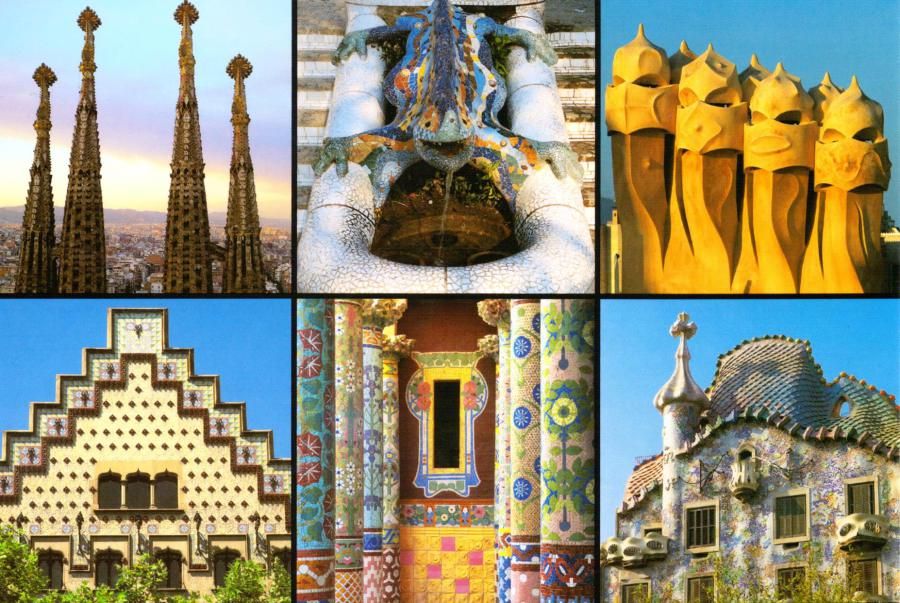
1891-1894 The House of Botines (House of Fernandez and Andreev, or House of Fernandez) was erected in Leon.
1892 Together with the Marquis de Comillas, Gaudí travels to Malaga and Tangier to study the area where Maximo Dias de Quijano, Marquis de Comillas, wanted to establish a missionary center for the Franciscan order.
1893 The crypt and walls of the apse of the Sagrada Familia were erected. As a result of Gaudí’s strict observance of the fast, his life is in danger.
1895 Architect designs the tomb of the Güell family in Montserrat; the project was not carried out. Also, Gaudi (together with his friend, the architect Francesc Berenguer y Mestres) erects several outbuildings on the Güell estate in Garraf.
1898-1900 Casa Calveta was built in Barcelona, which was awarded by the municipality as the best architectural project of 1900.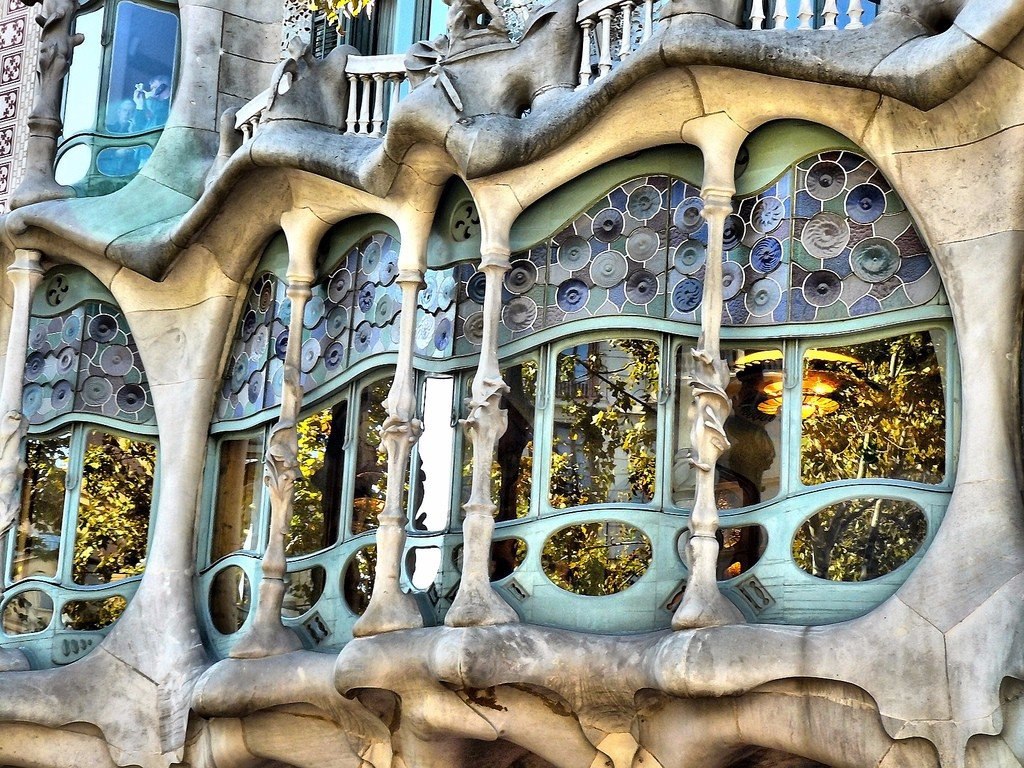
1899 Gaudí becomes a member of the Society of Artists of St. Luke and the Spiritual Society of Our Lady of Montserrat.
1900 Gaudí receives an order to create a sculptural ensemble for a monastery in Montserrat and begins work on this project, which was never completed. Work begins on the construction of a garden city, known today as Park Güell, arranged on the hillside of Muntanha Pelada in Gracia, a suburb of Barcelona (today this area is located within the city), commissioned by Eusebio Güell. Work stopped at 1914 year.
1900-1905 Commissioned by Doña Maria Sages, Gaudi builds Villa Bellesguard on the site of the former royal summer residence.
1902 Gaudí designs the fence and gate for the manor of the manufacturer Miralles in Barcelona.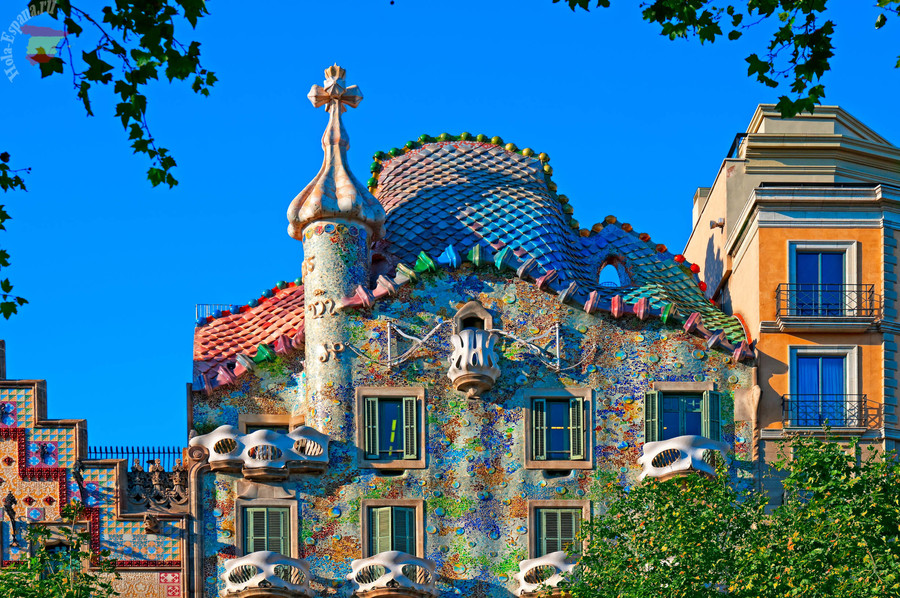
1903 The redevelopment of the Cathedral in Palma (Mallorca) by order of the Bishop of Mallorca, Pere Campins y Barcelo, has begun. The work, which Gaudí only occasionally oversaw, was stopped in 1914.
1904 Construction and interior design of Barcelona’s first cinema, Sala Merce; later the building was destroyed, but in 2002 it was rebuilt on a smaller scale.
Gaudí begins to rebuild Batlo House, which he finishes in 1906.
1906 The architect purchases a plot in Parc Güell in order to build a model building on it; after the house was built, the Gaudí family (his father and niece) moved into it.
The architect Josep Maria Juchol begins cooperation with Gaudí.
1906-1910 Casa Mila is being built in Barcelona, also called “La Pedrera” – “quarry”. Gaudi is working on the arrangement of the Artigas Garden park in La Pobla de Lillet.
1907 Work on the crypt in Colonia Güell resumes.
Gaudí receives an order for a skyscraper hotel project in Manhattan, New York.
1909 Construction of the parochial school attached to the Sagrada Familia.
1910 Due to health problems, Gaudí spends the spring with friends in Vis. On the occasion of the 100th anniversary of the birth of the philosopher Jaime Balmes, the architect designs two lamps made of basalt and cast iron for the Plaza Mayor in Vise.
In Paris, the Exhibition of Fine Arts was held, at which numerous works by Gaudí were exhibited. Gaudí himself did not appear at the exhibition.
1911 Exhibits from the Paris exhibition are presented at the architectural exhibition in Madrid.
1914 Gaudí stops work on all current projects and does not take new orders; he concentrated entirely on the construction of the Sagrada Familia.
1924 Gaudí, on his way to a religious procession, is arrested.
1925 Gaudí moves into a workshop next to the construction site of the Sagrada Familia. After the death of his relatives – his father (in 1906) and his niece (in 1912), work completely replaces his family.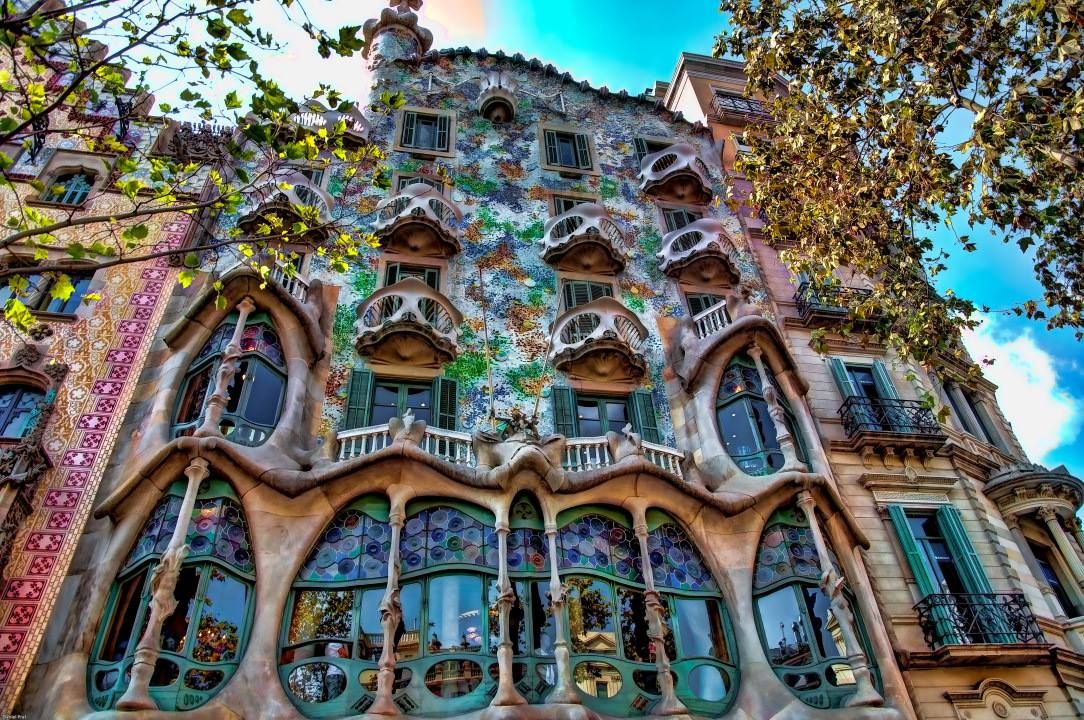
1926 7 June Gaudí hits a tram; June 10 Gaudí dies in the Hospital of the Holy Cross in Barcelona.
Antonio Gaudí’s hanging chain model
The use of catenary (also called chain or broken) arches is another characteristic feature of Gaudí’s architecture. The broken arch was also borrowed by the architect from nature. If you take, for example, a twig and start bending it, turning it into a parabolic arch, then sooner or later it will break. Moreover, it will break precisely in those places that will be loaded as much as possible. And the force of action is equal to the reaction. So it turns out that a smooth arch, which is more difficult to build, can be replaced by a broken line assembled from straight beams. It is only necessary that they converge in those places where stresses are concentrated. Gaudi did just that, although he could not mathematically calculate these arches. But on the other hand, he used his famous hanging chain model, which was actually invented not by Gaudi, but by the German architect Wilhelm Tappe at the end of the 18th century.
The suspended chain model allowed Gaudí to design and build both the crypt in the colony Güell and the Sagrada Familia, a neo-Gothic temple without buttresses and buttresses, in which the loads are taken up by inclined and vertical pillars, elongated exactly along the lines of force. And here it is interesting that the calculation of loads using a suspended model does not require mathematical calculations at all.
The suspension chain model works like this: first, a building plan is applied to the ceiling of the workshop, then a chain is attached to those places where the arch should rest on the ground. The chain sags under its own weight and forms a parabolic arch. Now the chain can be loaded by hanging sandbags from it. Under load, the arch will become broken. So, step by step, it is possible to model the entire power frame of the future building in chains. Then it remains to photograph it, measure the angles formed and transfer it to paper. No math and no additional buttresses.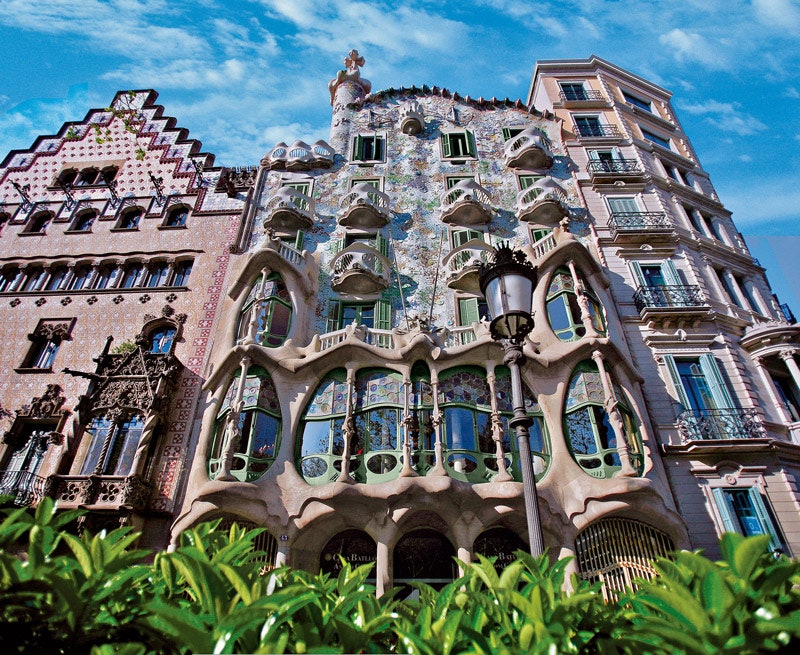
Sagrada Familia in terms of its geometric parameters (the length of the nave together with the apse is 95 m, the length of the transept is 60 m) is very similar to Cologne Cathedral, which Gaudi greatly appreciated, although he called its buttresses – “crutches”. And one of the tasks that the architect set for himself was to create a grandiose neo-Gothic temple, but without “crutches”.
As a building manager, Gaudí was also more of a man of the past. He behaved with the workers like a patron or the head of a construction artel. And literally lived on a construction site. When other architects spent most of their time preparing the project, Gaudí preferred to fine-tune everything on the spot. At the same time, he was stubborn, persistent and very demanding. Therefore, its construction usually lasted a long time.
Gaudi gardens: Pàgina no trobada | Web oficial Park Güell
Park Güell prices and times | Web oficial Park Güell
Due to conservation and maintenance works, some spaces might be under construction or restoration. We apologize for the inconvenience.
Park Güell is an iconic space in the city of Barcelona, declared UNESCO World Heritage Site which receives a large numbers of visitors each day. Regulating the entry ensures the conservation and maintenance of the monumental heritage, and guarantees a safe visit for neighbors as well as other visitors.The park is open all the year round.
icon-ticket
Buy tickets
/en/buy-tickets
icon-com_arribar
How to get there
/en/planning-your-visit/how-to-get-there
First and last time bands with tickets available for sale:
From 9:30 am to 7:30 pm.
The following times are reserved exclusively for neighbors and Gaudir Més members, and tourist visits are not allowed:
- “BON DIA BARCELONA”: From 7 to 9:30 am.
- “BON VESPRE BARCELONA”: From 8 to 10 pm.
For more information on free admission for citizens, check the ‘Park Güell and citizens’ section.
| RATES | PRICES |
|---|---|
| General ticket | 10 € |
| Children from 0 to 6 | 0 € |
| Children from 7 to 12 | 7 € |
| Over 65 and “Targeta Rosa Reduïda” card | 7 € |
| “Targeta rosa” card | 0 € |
| People with disabilities | 0 € |
| Acompanying people with disabilities | 7 € |
| MUHBA ticket / Ruta del Modernisme ticket * | 8 € |
| Gaudir Més members | 0 € |
All prices include VAT (21%).
*Discounts not cumulative with other promotions.
In order to ensure that you get a ticket, we advise you to buy one beforehand.
It is very important to make sure you arrive at the park with sufficient time to ensure that you do not miss your allocated visiting time.
To benefit from any type of discount or free tickets, you will need to present relevant documentation showing that you are entitled to those discounts when purchasing your ticket.
All visitors, including children ages 0 to 6, must show the appropriate entry ticket, including where entry is free of charge (except those with a local resident’s card or Gaudir Més register members, who can go straight to the park’s entrances).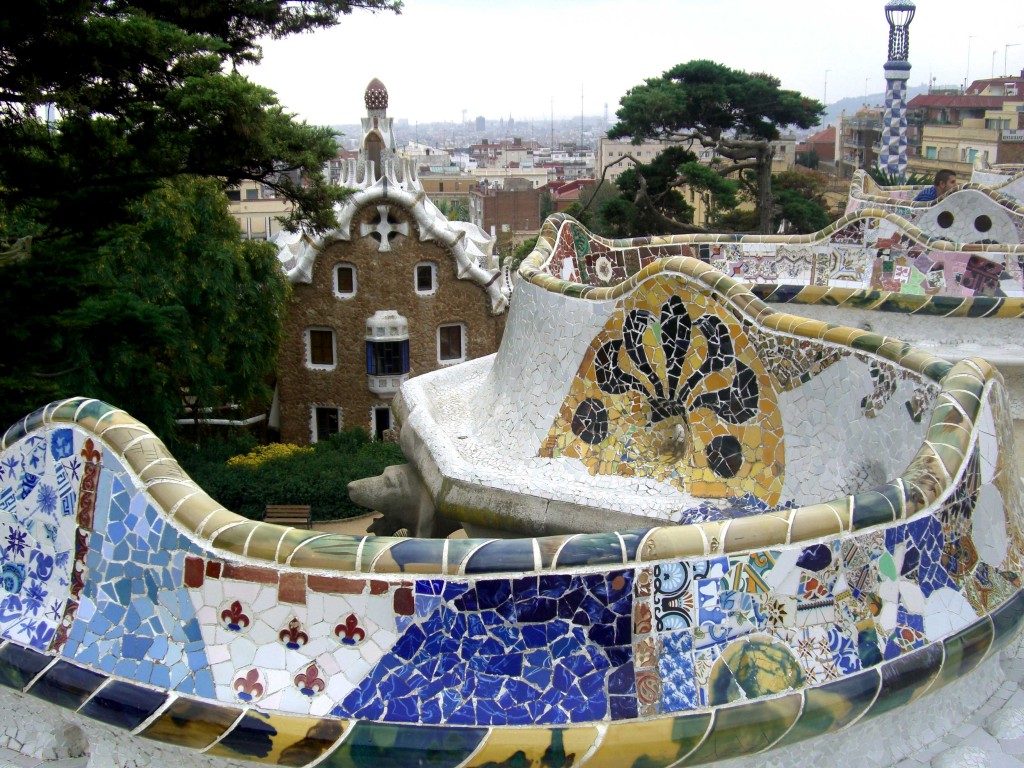
Park Güell by Antonio Gaudí
Page Content
| Antoni Gaudí Park Güell Entrance Dragon Fountain |
Park Güell was commissioned by Eusebi Güell who wanted to create a stylish park for Barcelona aristocracy.
| Antonio Gaudí Park Güell – large organic looking columns made from stone. |
The Park Güell express entry tickets are included FREE with the Barcelona City Pass. Click here to learn more.
The park contains amazing stone structures (see below), stunning tiling and fascinating buildings. You can see from this picture the Gaudí dragon fountain that is at the entrance to Güell Park. This dragon is adorned in beautiful coloured tiling and there is something rather hypnotic and magical about it.
Here you can see a walkway supported by twisting rock pillars that seem to be growing out of the ground like tree trunks.
Gaudí was strongly influenced by natural shapes and used them in his work.
| The Gatehouse at the entrance to Park Guell |
At the top of Güell Park is a terraced area where you get a wonderful view of the park and of Barcelona City. Here you will find multi-coloured tiled mosaic seats as shown in this picture. The vibrant colours of the tiles are truly breathtaking.
| Gaudi ceramic Mosaic in Park Guell |
| Antoni Gaudí Güell Park – mosaic seating area adorned with multi-coloured tiles |
| Park Güell by Antoni Gaudí The house in which Gaudí lived is now a museum. |
Park Güell also has a small house in the park which Gaudí lived in at one stage. The house has now been converted into a museum and contains interesting furniture also designed by Gaudí.
If you’re visiting the park by metro be prepared for at least a 20 minutes walk. The last 200 m walk is up a steep hill. If you have difficulties going up steep steps then a taxi or bus may be a better means of transport. You’ll find bus information at the tourist information office at Plaça de Catalunya.
Due to Park Güell’s location and size you’ll need to schedule at least half a day for a visit to Güell Park but it will be well worth the visit.
Photos of Park Güell.
How to get to Park Güell
Casa Fuster Hotel
Ronda Lesseps Hotel
Gaudí Casa Vicens
Carrer de les Carolines, 18 – 24
Gaudí Experience
Carrer Larrard, 41
Gaudí Park Güell
Carrer d’Olot
Gaudí House in Park Güell
Carretera del Carmel, 23A
Vallcarca Metro
Lesseps Metro
Fontana Metro
Legalitat Car Park
BSM Torrent de l’OllaCar Park
This map is copyright registered and protected and may not be copied.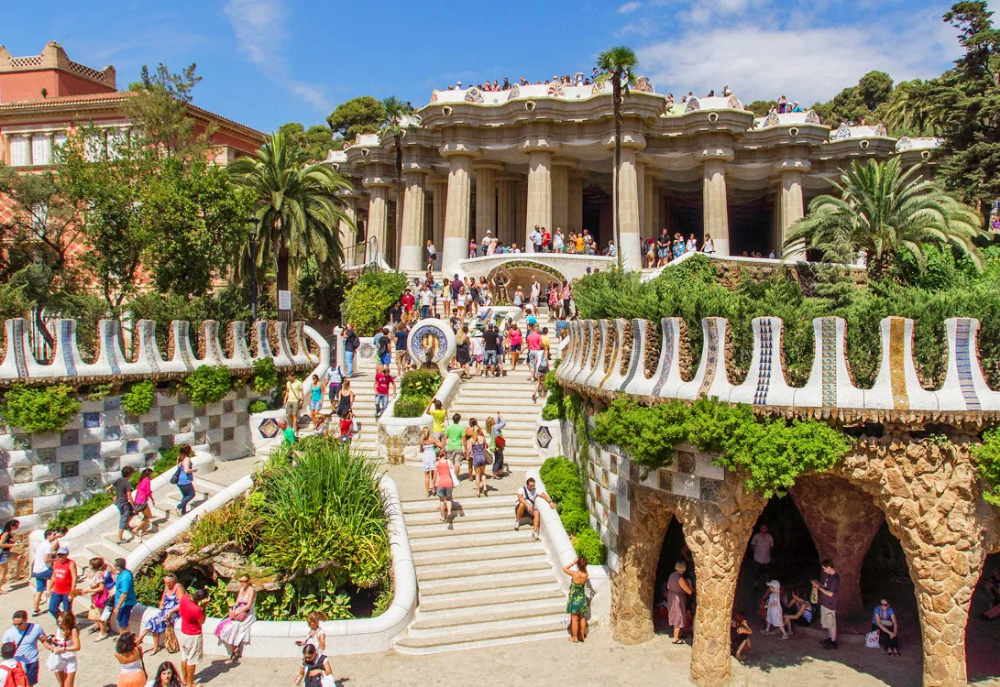
Metro stop “Lesseps” (Green Line, L3) On leaving the metro follow the street signposts for the park.
Hop on hop off sightseeing tourist bus stop
Nearest stop for Park Güell is “Park Güell” with the “hop on hop off” sightseeing bus
Public bus
Parc Güell: 24, 92
Olot / Marianao: 116
CAP Larrard: 24, 32, H6
Car parking
Car parking near Gaudí Park Güell
Opening hours for Park Güell
| Day | Time |
|---|---|
| 01 January – 12 February | 09:30 – 17:30 |
| 13 February – 27 March | 09:30 – 18:00 |
| 28 March – 30 October | 09:30 – 19:30 |
| 31 October – 31 December | 09:30 – 17:30 |
Entrance fee to Park Güell
The entrance fee gives access to the area of the of the park where the majority of Gaudí’s creations are situated.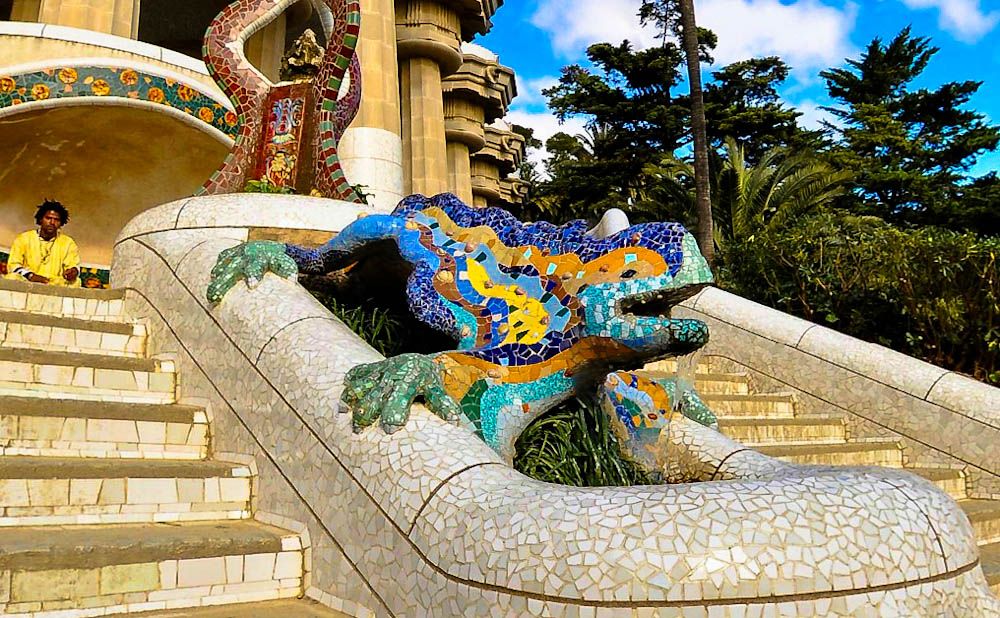
Location map showing the attractions in the paid entry area of Park Güell
| Ticket Office | Entrance | Attraction |
The entrance tickets do not give access to the Gaudí house museum in the park.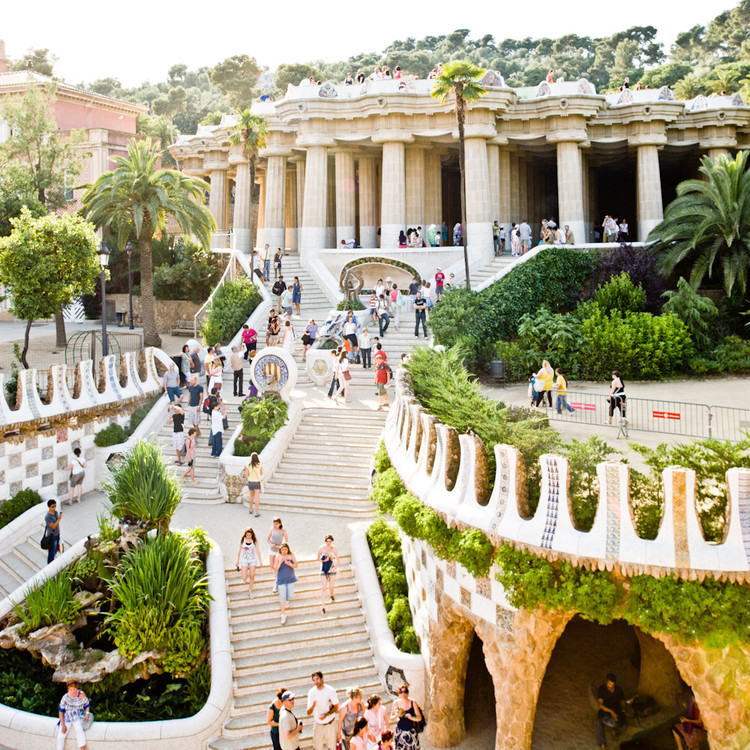
1. At the entrances to Park Güell
2. At the ATMs outside Park Güell
3. Lesseps or Vallcarca metro stations
Entrance Fees
Adults: €10.00
Children 7 – 12 years: €7.00
Infants 0 – 6 years: €0.00
Over 65 years: €7.00
Visitor with a disability: €7.00
There are some parts of the park that are free to enter however you will miss the best of Park Güell if you decide not to pay for entrance tickets.
Book your tickets online
Click to book your skip the line entrance tickets for Park Güell, including access to the monumental area and an optional audio guide
Professionally guided walking tour of Park Güell
Follow the link below to find out how you can go on a walking tour around Park Güell led by a professional guide. The guide will take you around the most interesting parts of Gaudí’s park along with giving you invaluable insights on Gaudí’s creations in the park.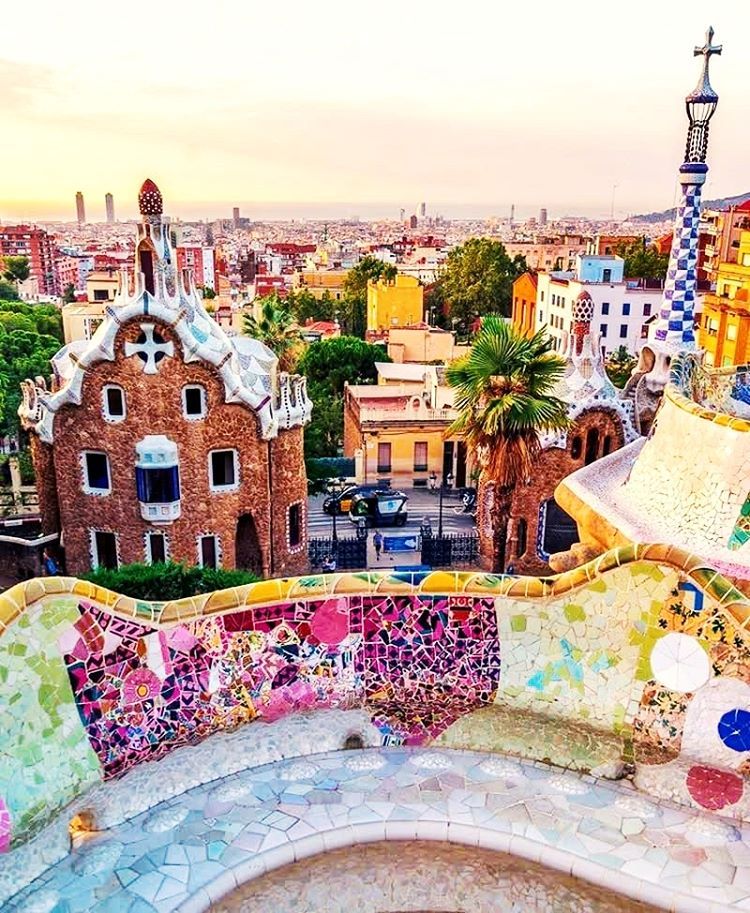
Click to book your tickets for your small group guided walking tour around Gaudi’s famous Park Güell which includes access to the Monumental area of the park
Your Park Guëll Tickets included with the Barcelona City Pass
The Park Guëll Skip the Line Entry tickets are included FREE with the Barcelona City Pass.
If you’re also interested in visiting the Sagrada Familia and in visiting the city you might prefer booking the Barcelona City Pass instead as it includes:
- skip-the-line tickets for the Park Guëll Monumental area,
- skip-the-line tickets for the Sagrada Familia,
- audioguides to visit the Park Guëll, that you would not get if you purchase your Park Guëll tickets without the Barcelona City Pass,
- audioguides to visit the Sagrada Familia,
- 24-hour tickets for the Barcelona Hop-On-Hop Off double decker bus,
- a 10% discount coupon to use on your next booking of tickets or tour in Barcelona.
Tickets will be sent directly to your smartphone and you won’t need to print them out. The tickets will enable you to visit the the Park Guëll and the Sagrada Familia using the fast-track entry lines so that you do not waste time in queuing. You will also be able to take the Barcelona Hop-On-Hop-Off bus to visit the city for an unlimited number of times during 24 hours by just showing your e-ticket when boarding the bus – no queues needed at a ticket office. The Barcelona hop on hop off bus has stops next to Park Guëll and Sagrada Familia which makes it very convenient to visit both attractions.
Click to book your Barcelona City Pass online
Can Artigas Gaudí Gardens: the architect’s secret masterpiece
Can Artigas Gaudí Gardens is an unknown masterpiece of the great architect, hidden at the foot of the Pyrenees, 130 km from Barcelona. Antoni Gaudí and Barcelona are inextricably linked, the city should be grateful to its ingenious inhabitant for the created architectural treasures that are so memorable that they make you come back to them again and again.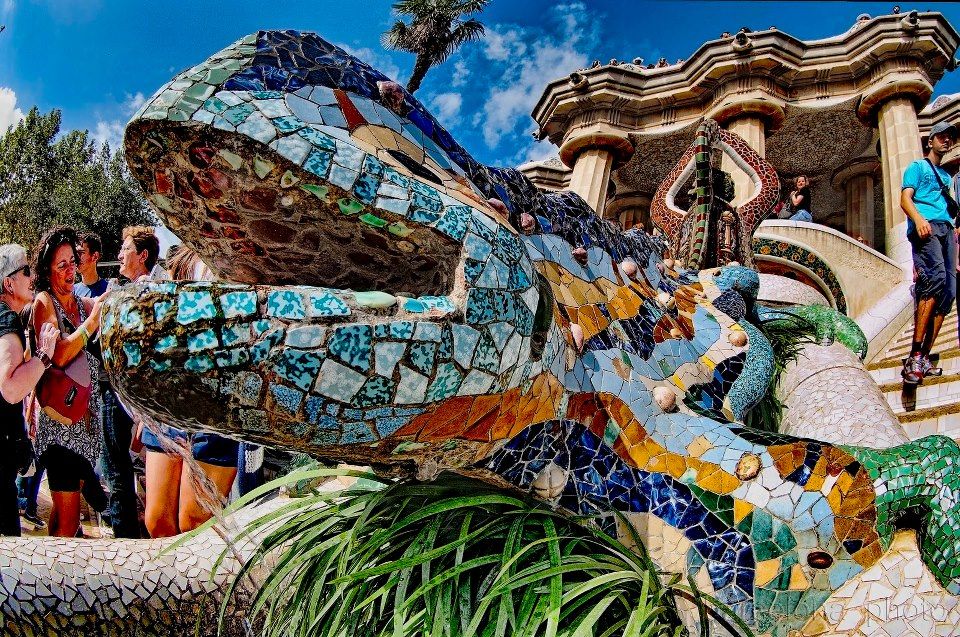
For example, Gaudí designed the wonderful gardens that Pobla de Lillet is rightfully proud of. The gardens of Can Artigas were created in an atmosphere of secrecy and for a long time were not associated with the name of Gaudí. Everything changed in 1971, when the authorship of a genius was discovered – the gardens were put in order and overnight became so attractive that they had a page on the Internet and a huge number of fans.
Can Artigas gardens: symbolism
In the Artigas Gardens, as in many of his other works, Gaudí used Christian symbols.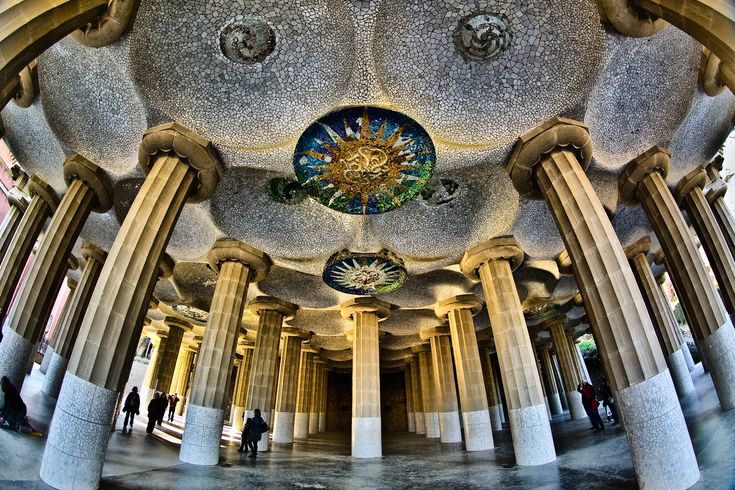
Can Artigas Gardens: arched chain
To enjoy the view from the top of the gardens, you will have to pass by dragons and stone serpents. Here, Gaudi used his favorite element – an arched chain that adorns a cave with a mineral spring. Gaudi also used in this creation of his and another favorite element of many works – a large number of Christian symbols, reminiscent of the frailty of human existence.
Tetromorphs are symbols of the four evangelists. Located in Can Artigas along the perimeter in the form of a cross:
- the angel San Mateo stands on the Cascade;
- the eagle of San Juan fits on the Crooked Bridge;
- the lion of San Marco is keenly vigilant on Pergola;
- a Bullspring is guarded by a San Lucas bull.
How the gardens of Can Artigas appeared
The gardens of Gaudi Can Artigas appeared in the town thanks to Gaudi and by chance. At 19In 05, Gaudí was discharged to Castellar de Nuc by his patron, philanthropist Eusebi Güell, who had a cement factory here. Gaudí was put in charge of building the Chalet de Catllaras, a proposed colony for the engineers who supplied the plant with coal. At the same time, Gaudi had to live in the neighboring town of Joan Artigas. The master was very grateful to the one who gave him shelter, and in gratitude brought the Gardens of Can Artigas to life.
Gaudí’s passion for his new brainchild was so strong that he sent the same craftsmen to build the gardens that embodied his ideas for Barcelona’s Parc Güell.
“Chalet de Catllaras” – the house for which Gaudi came to these places – today is in a very deplorable state and is waiting for reconstruction.
Artigas Gardens entrance fee
- Adult ticket: about 5€
- Children aged 6 to 13: less than €3
- Children under 6: Free
Opening hours
From January 1 to March 13:
- Saturday, Sunday and public holidays from 10:00 to 14:00.
March 14 to June 23:
- Saturday from 10:00 to 14:00 and from 15:15 to 18:30;
- Sunday from 10:00 to 14:00 and from 15:15 to 17:30.
From June 24 to September 11 every day:
- from 10:00 to 14:00;
- from 15:15 to 18:30.
From September 12 to October 31:
- Saturday from 10:00 to 14:00 and from 15:15 to 18:30;
- Sunday from 10:00 to 14:00 and from 15:15 to 17:30.
November 1st to December 31st:
- Saturdays, Sundays and holidays from 10:00 to 14:00.
How to get to the Gaudí Gardens Can Artigas
The Artigas Gardens are located 130 km from Barcelona, in the foothills of the Pyrenees. It is near the town of Ripoll.
From Barcelona you can take the Renfe train (direction Ripoll, Pujerda) to the Ripoll station (journey time about 1.5 hours). Then by bus to the town of Pueblo de Lillet (La Pobla de Lillet), where the gardens are located.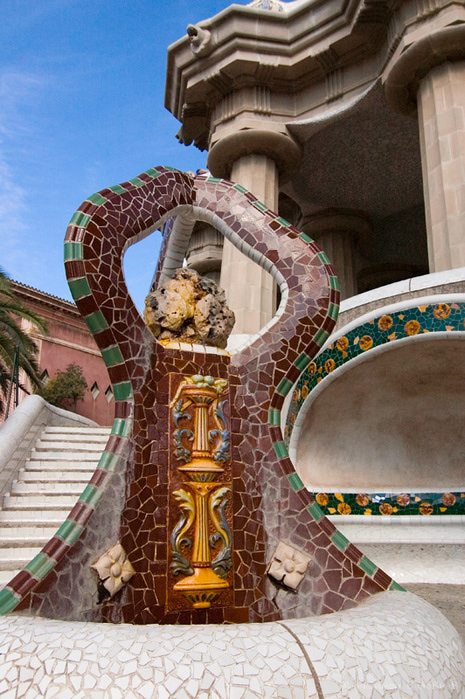
One-way fare: by train – about 10 euros, by bus – less than 5 euros.
- How to avoid queues at Barcelona attractions. Tickets for Sagrada Familia and Park Güell skip the line.
- How not to be deceived by local taxi drivers. Order a taxi in advance with fixed rates online. The most reliable service for ordering a taxi is KiwiTaxi .
- Excursions in Barcelona with locals will help you get to know this city for real. The best way to get comfortable in an unfamiliar city is to walk around it with a person who has lived here for many years.
- We advise you to take out travel insurance so that there are no unpleasant surprises while traveling to Barcelona.
-
Barcelona City Pass is a one-stop card that makes organizing your holiday in Barcelona easier and saves you a lot of time and money.
- Barcelona hotels: is our selection and recommendations.
- Bus Turistic is a tourist bus and a great way to get to all the necessary monuments of Barcelona quickly, with a breeze and comfort.
- Drimsim is a universal international SIM card and a free travel application. Best prices, fast internet and worldwide calls.
Artigas Gardens
Home / /
/
Mikhail Schwartz
At the foot of the Pyrenees, near the small town of La Pobla de Lilliet, hides a little-known monument of landscape architecture created by the brilliant architect Antoni Gaudí.
Artigas Gardens – a forgotten and rediscovered creation of Gaudi
The creation of the famous architect – Artigas Gardens (Jardins Artigas) – located in Catalonia, 130 km from Barcelona, on the banks of the Llobregat River (Llobregat).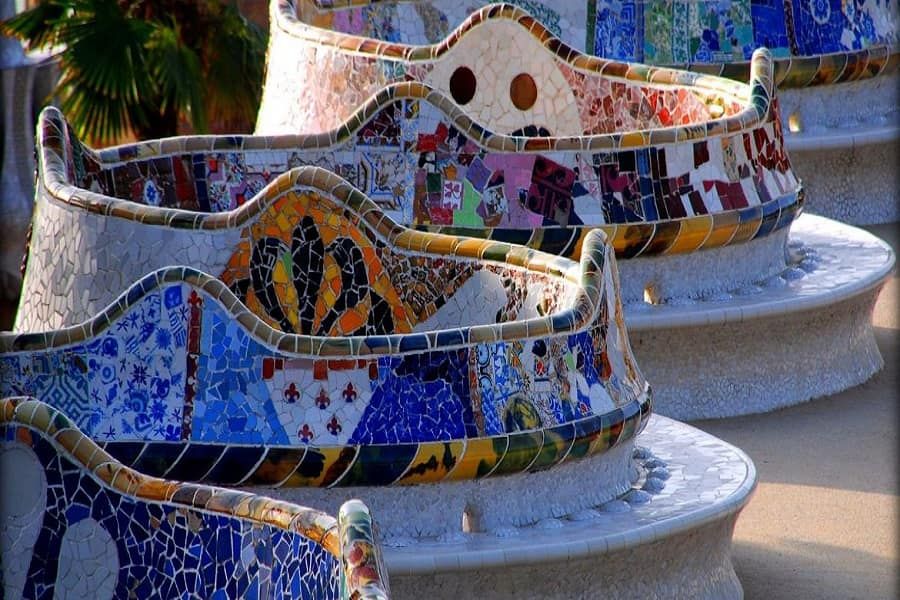
History of origin
Chalet built by Gaudí (photo: RAMÓN)
The park was created in 1903–10. for industrialist Joan Artigas Alart (Joan Artigas i Alart). Gaudí lived in his house (1902-1303), when he designed a residential chalet (Chalet de Catllaras) for the cement factory workers of Eusebio Güell. In gratitude for the warm welcome, the architect created a landscape project for Artigas – a “replica” of the famous Park Güell. Joan Artigas Alart, never had time to see the desired gardens, he died in December 1903. However, his son – Joan Artigas Casas (Joan Artigas i Casas), continued the embodiment of a great idea. By the autumn of 1906, the garden was almost completely completed, minor improvements continued for another 4 years.
Chalet de Catllaras, Gaudí’s home for cement factory workers, is now in ruins and awaiting restoration.
Location on the map.
In 1934, the son of the owner of the garden, Joan Artigas Casas, died. In the 1950s, the family moved to Barcelona. The gardens were abandoned, the sketches of the project burned down, no one knew about the authorship of Gaudi. In 1971, the El Correo Catalán newspaper published a version of the park’s alleged origin. It was officially confirmed, and restoration began in 1989.
Artigas Gardens
Waterfall Stone
Artigas Jardins are very small, you can walk them non-stop in 5 minutes, but for a careful and leisurely walk, lay down about 40 – 60 minutes. During this time, you will definitely have time to re-photograph all the architectural elements and enjoy the picturesque nature.
The garden is inscribed in a mountainous forest landscape, divided in two by the Llobregat River. At the lower level, by the river, is the La Cascada waterfall in the form of a large stone covered with moss. Further – a grotto, with a source of Magnesia, the water of which is rich in magnesium oxide.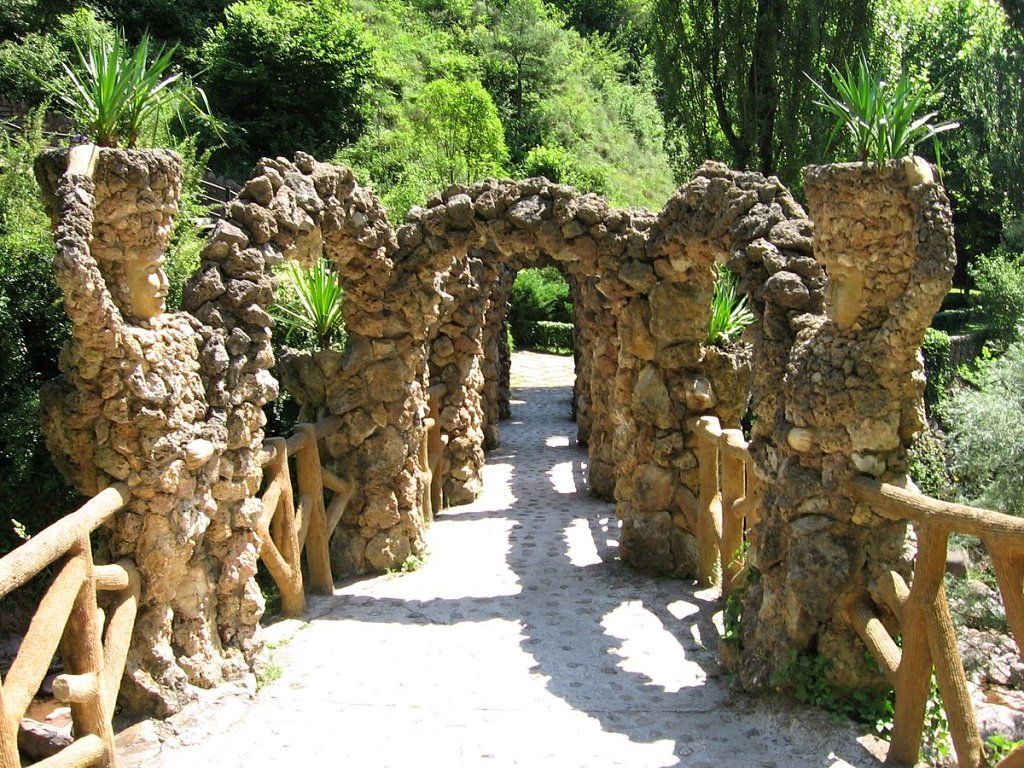
The construction of the garden began with the creation of an artificial cave that protected the source of healing water. Inside, benches and two windows were installed so that you can sit and admire the turbulent Llobregat.
Gaudi depicted four symbols of the Evangelists, placing them in the park in the form of a cross. Two sources: Lion (San Marco) – located on Pergola and Bull (St. Luke) – hidden in the shade of pine trees. An eagle (Saint John) tops the stairs on the way to the pavilion. The figure of the Angel (San Mateo) has not been preserved in the grotto.
The center of the park composition is a bridge with twisted arched stone railings and two figures by Ramon Millet at the entrance. At the highest point is the Glorietta gazebo, which offers a view of almost the entire territory of the garden.
Jardins Artigas ticket prices and opening hours:
- adults – €4.
20
- children (6 – 13 years old) – €2.10
- children (0 – 5 years old) – free of charge
The garden works according to a difficult schedule, there is always a break from 14:00 to 15:15 during the day.
January 1 and 6, December 25 and 26 – the gardens are closed.
Before traveling, check the opening hours on the city’s website or at the tourist offices.
From January 1st to March 18th:
- Saturdays, Sundays and holidays from 10:00 to 14:00.
From March 19 to June 24:
- Saturdays and holidays (March 24 – April 2, April 30, May 1 and 21) from 10:00 to 14:00 and 15:15 to 18:30
- Sunday from 10:00 to 14:00 and from 15:15 to 17:30.
From June 25 to September 11:
- every day from 10:00 to 14:00 and from 15:15 to 18:30.
From September 12 to October 28:
- Saturdays and holidays (October 12) from 10:00 to 14:00 and from 15:15 to 18:30
- Sunday from 10:00 to 14:00 and from 15:15 to 17:30.
From October 29 to December 31:
- Saturdays, Sundays and public holidays (December 6 and 7) from 10:00 to 14:00.
How to get to Artigas Gardens?
Despite the fact that La Pobla de Lillet is a small town, finding the way to Gaudí’s creation can be quite difficult. So we drove the whole city twice before we reached the goal.
The point is that the street Carrer de Salvador Torrents, along which we were driving a car, ended abruptly, and then there was a narrow Carrer del Ferrocarril in one lane with rails in the middle. It seemed that there were no prohibition signs, and the sign showed that the gardens were further away, but we did not dare to go to the “meeting fate”.
So we went circling around the city in search of an alternative road. Carefully following the signs, we again found ourselves in front of the Carrer del Ferrocarril with a narrow gauge railway in the center. It was decided to go along it, and on the maps.
Parking there is very small (free of charge), in season there may not be enough space on it.
And by the way, the train runs along the road! The red light signal lights up when the road is prohibited. But if nothing burns, then the road is free. True, it is not clear what to do with oncoming cars? But we were lucky – there was no oncoming.
From the parking lot to the Artigas Gardens, walk about 5 minutes along the tracks until you see the train station. They sell tickets to the garden and to the train, which travels around the city on purpose, delivering tourists to the most interesting places.
If you have time, leave your car at the tourist office (car on the map), buy a ticket for the Cement train and take your time, get to know the city of La Pobla de Lilliette and its main attractions.
Cement Train
Güell Heritage – Cement Train (Tren del Ciment). Since 2005, he has been carrying tourists.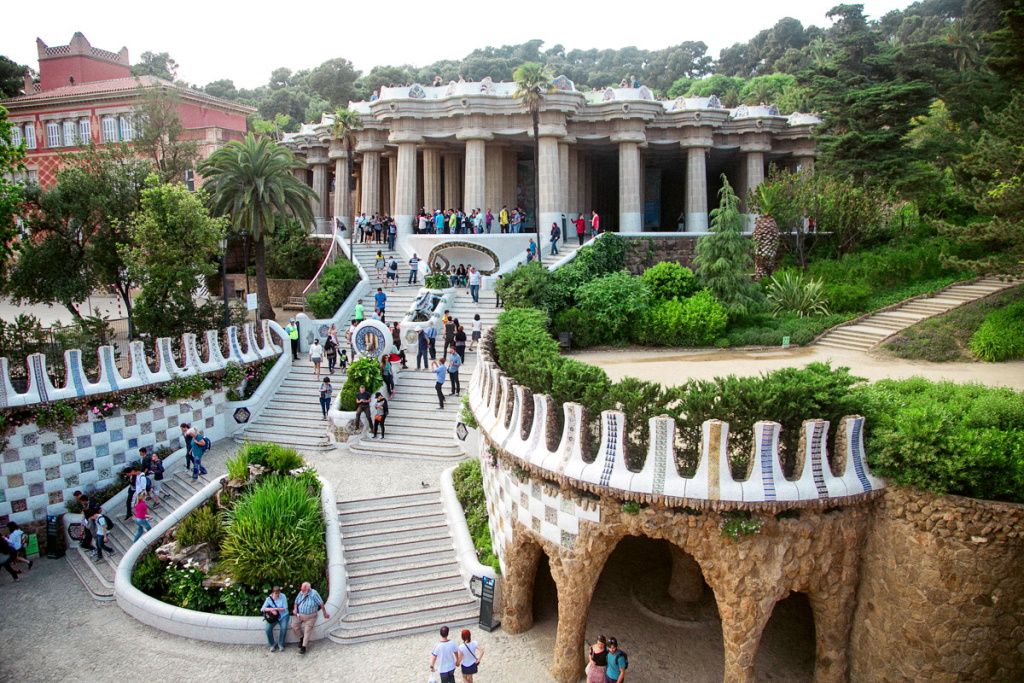
Ticket prices and opening hours of the Cement Train:
| one way | round trip | |
| adult | €4.60 | €7.75 |
| children (0-3 years old) | free | free |
| children (4-13 years old) | €2.80 | €4.60 |
In 2018, the train runs from 24 March to 25 November. See the official website for the exact timetable. There you can also find ticket prices and opening hours for the Artigas Gardens, the Cement Museum and the Train Exhibition.
Dates and opening hours of the museum and garden may differ from those of the train.

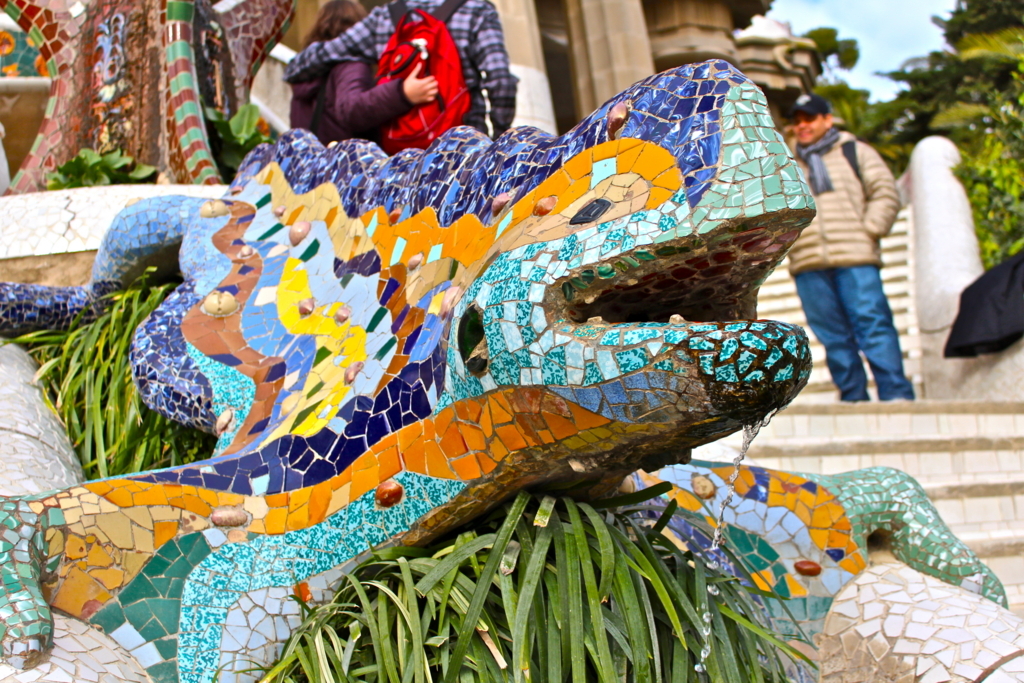 And in the center of the sculpture is a stone, as if symbolizing the “navel of the Earth” in Delphi. These elements support the snake theory.
And in the center of the sculpture is a stone, as if symbolizing the “navel of the Earth” in Delphi. These elements support the snake theory. 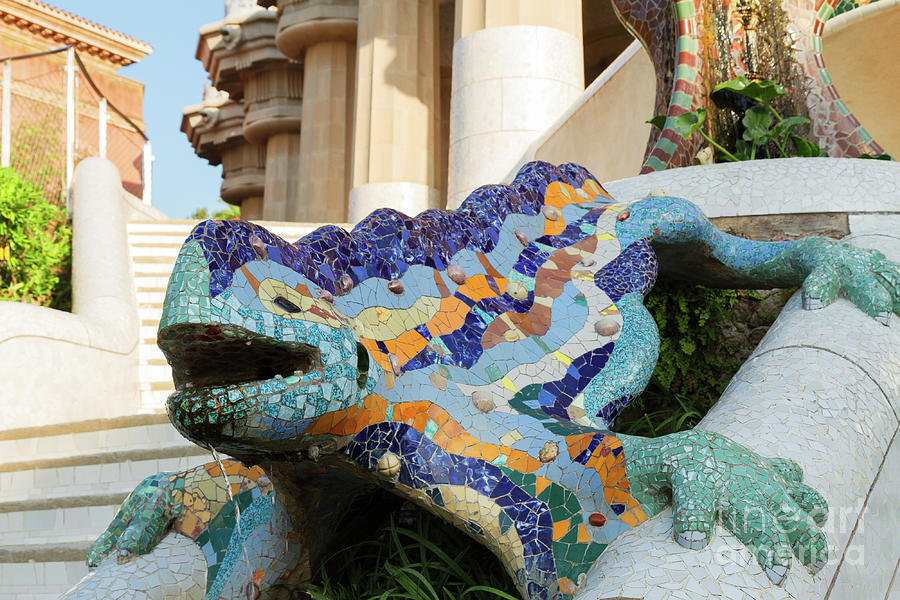 Order a taxi in advance with fixed rates online. The most reliable service for ordering a taxi is KiwiTaxi .
Order a taxi in advance with fixed rates online. The most reliable service for ordering a taxi is KiwiTaxi .
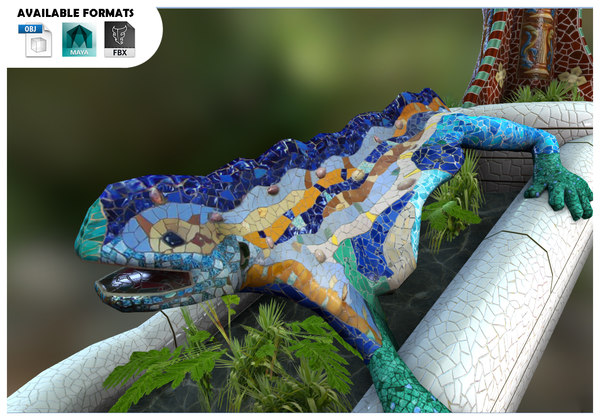 Best prices, fast internet and worldwide calls.
Best prices, fast internet and worldwide calls.
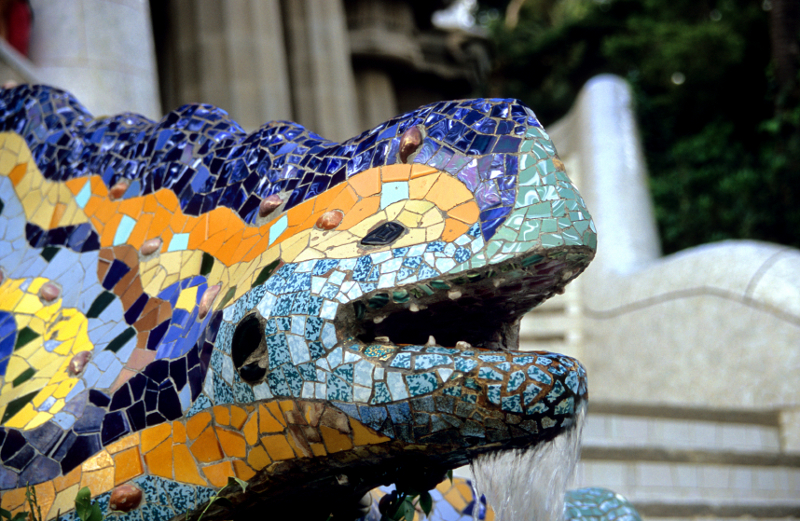 Inspired by the eleventh feat of the hero, Gaudi decided to recreate the divine garden of the Hesperides with its magical rejuvenating apples. Through the efforts of the architect, in the deserted, waterless and sparsely populated place of Montaña Pelada, which means Bald Mountain, the amazingly beautiful Park Güell with magnificent fountains, fantastic buildings and unique viewing platforms is spread.
Inspired by the eleventh feat of the hero, Gaudi decided to recreate the divine garden of the Hesperides with its magical rejuvenating apples. Through the efforts of the architect, in the deserted, waterless and sparsely populated place of Montaña Pelada, which means Bald Mountain, the amazingly beautiful Park Güell with magnificent fountains, fantastic buildings and unique viewing platforms is spread. 

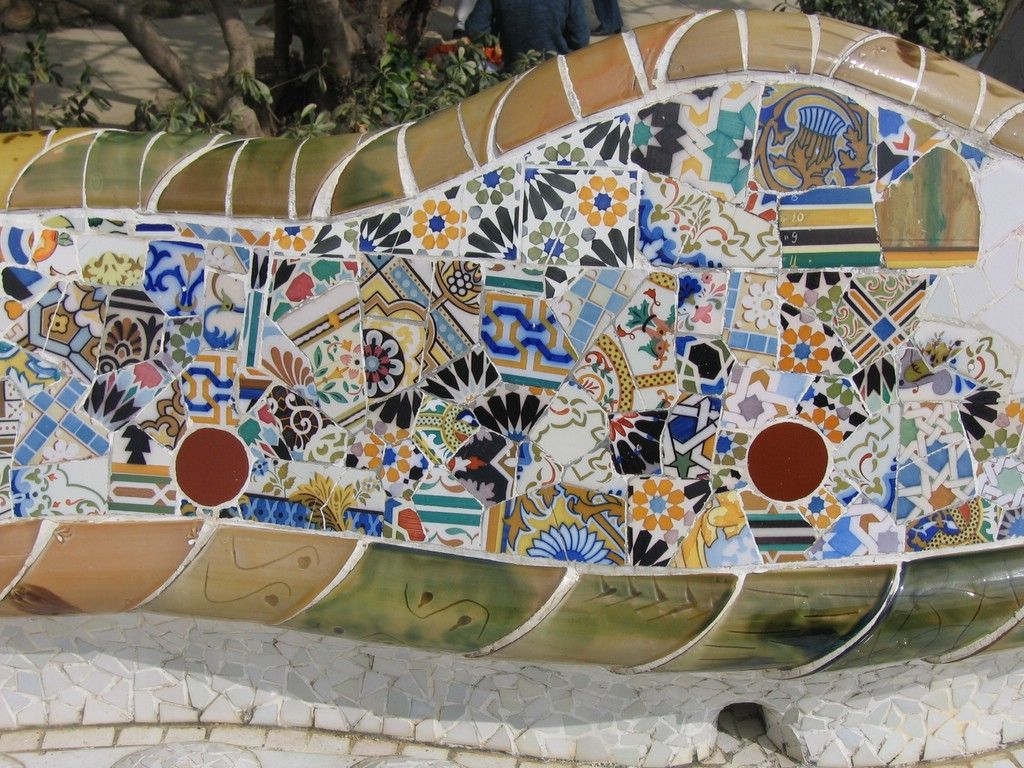
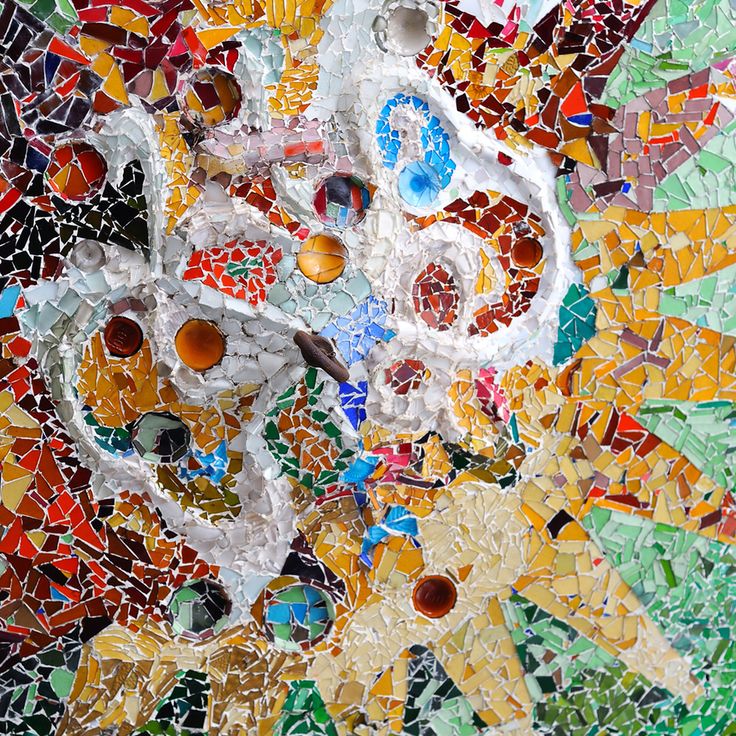 Let’s learn a little more about the man and some of his outstanding designs.
Let’s learn a little more about the man and some of his outstanding designs.
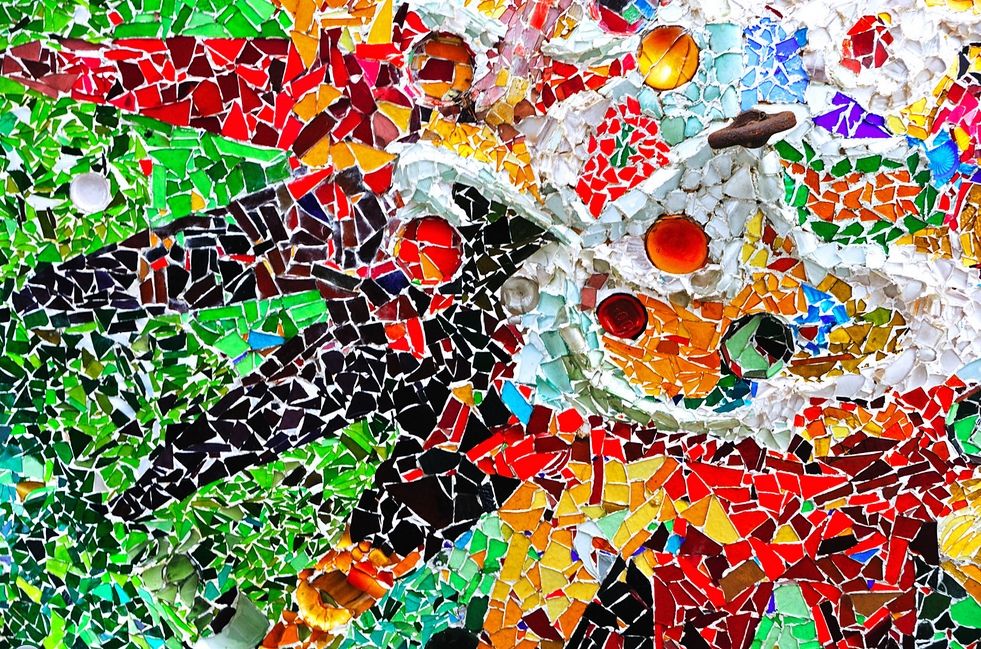 The church was created for workers at Güell’s textile factory, intended to blend with the workers’ homes and surrounding nature.
The church was created for workers at Güell’s textile factory, intended to blend with the workers’ homes and surrounding nature.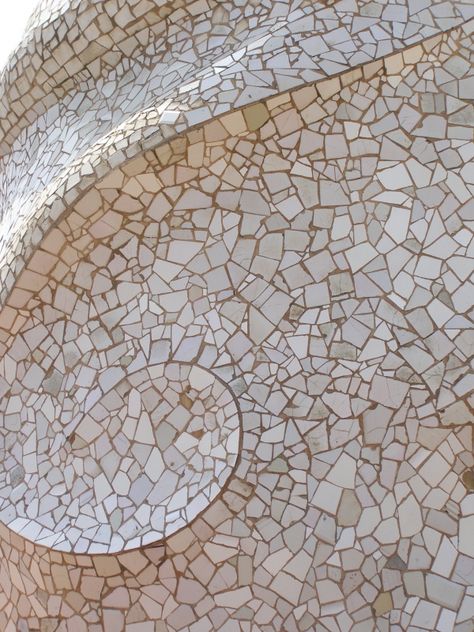 So if you’re ever visiting the fabled Catalan city, be sure to check out these wonderful Gaudì mosaics!
So if you’re ever visiting the fabled Catalan city, be sure to check out these wonderful Gaudì mosaics!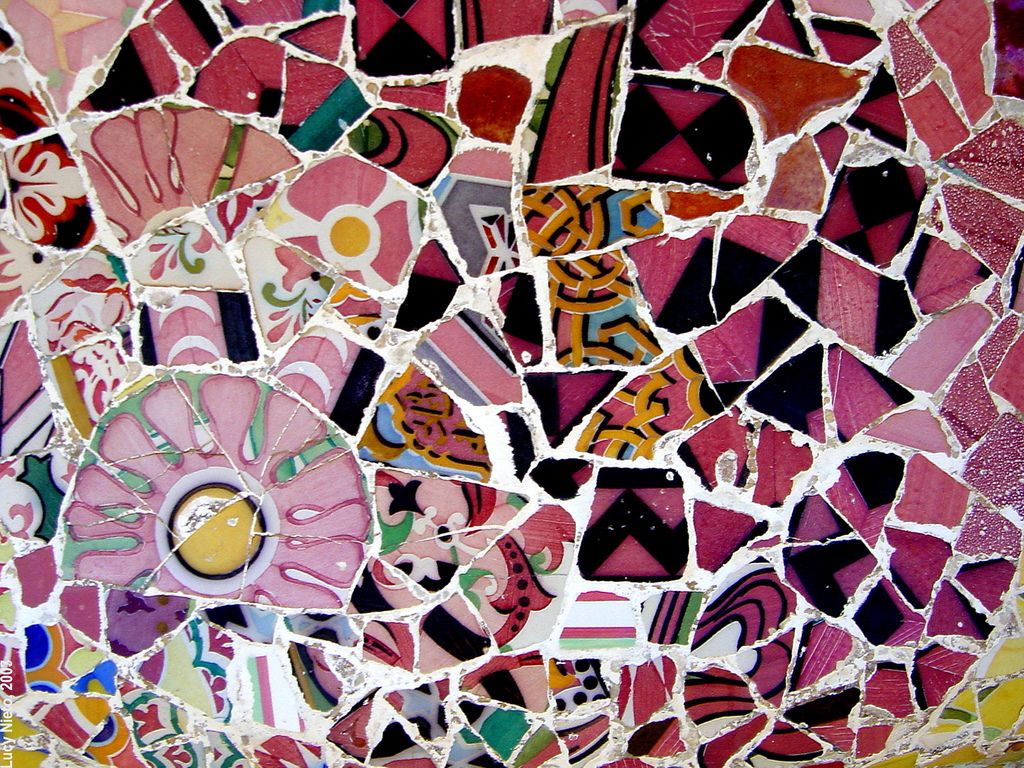 Mosaics made it possible to decorate the wavy surfaces used in the projects. Fragments of ceramics, which differed in color and size (but did not exceed 25 cm), were connected to each other using a cement mortar of lime, sand and water, embodying the idea of a mosaic.
Mosaics made it possible to decorate the wavy surfaces used in the projects. Fragments of ceramics, which differed in color and size (but did not exceed 25 cm), were connected to each other using a cement mortar of lime, sand and water, embodying the idea of a mosaic. 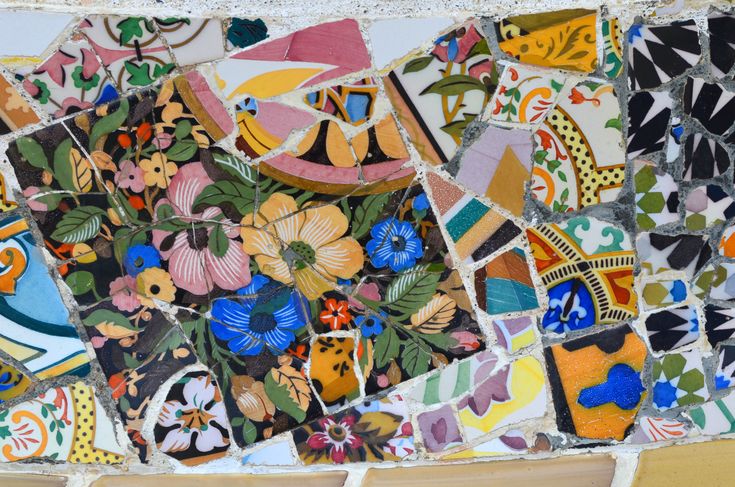 Antoni Gaudí searched for the source material for jewelry at one of the best ceramics factories in Catalonia, Pujol i Bausis. The architect also visited tableware manufactories to select unwanted cups, plates, vases, etc. Antonio Gaudi involved workers in the search for material for the mosaic, instructing them to pick up old dishes, tiles and bottles on the street.
Antoni Gaudí searched for the source material for jewelry at one of the best ceramics factories in Catalonia, Pujol i Bausis. The architect also visited tableware manufactories to select unwanted cups, plates, vases, etc. Antonio Gaudi involved workers in the search for material for the mosaic, instructing them to pick up old dishes, tiles and bottles on the street. 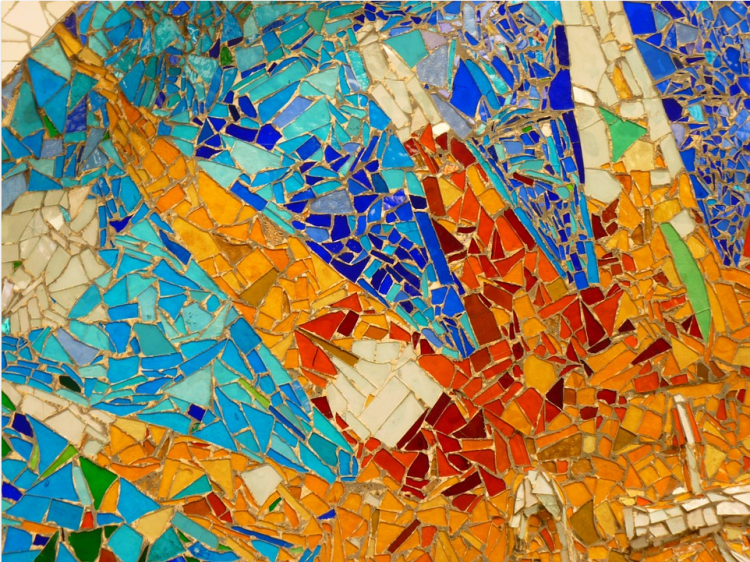 He assisted in the creation of such architectural projects as Casa Batlló and Casa Mila, as well as Parc Güell. His task was to create an abstract and surreal collage on a long curved bench in the shape of a sea serpent.
He assisted in the creation of such architectural projects as Casa Batlló and Casa Mila, as well as Parc Güell. His task was to create an abstract and surreal collage on a long curved bench in the shape of a sea serpent. 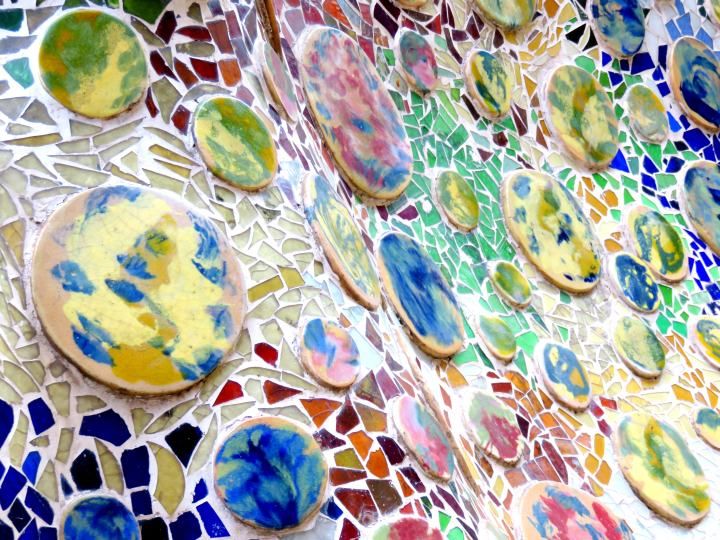 Antoni Gaudí used the brightest colors, creating original shades. His mosaic is necessary for the embodiment of symbolism and carries a certain meaning that complements the composition. Mosaics by Antonio Gaudí are a true work of art.
Antoni Gaudí used the brightest colors, creating original shades. His mosaic is necessary for the embodiment of symbolism and carries a certain meaning that complements the composition. Mosaics by Antonio Gaudí are a true work of art. 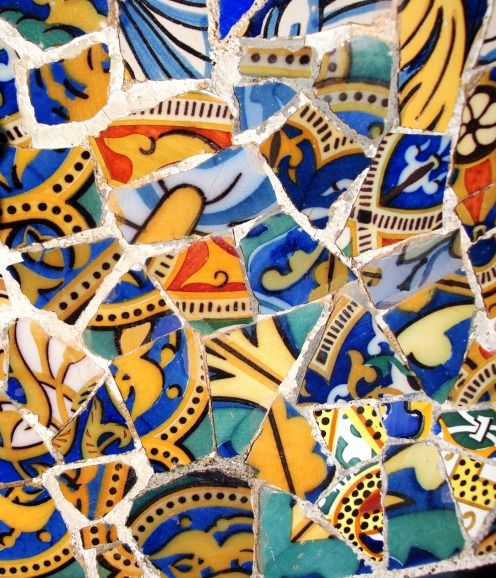 com/Mosaiccos).
com/Mosaiccos). 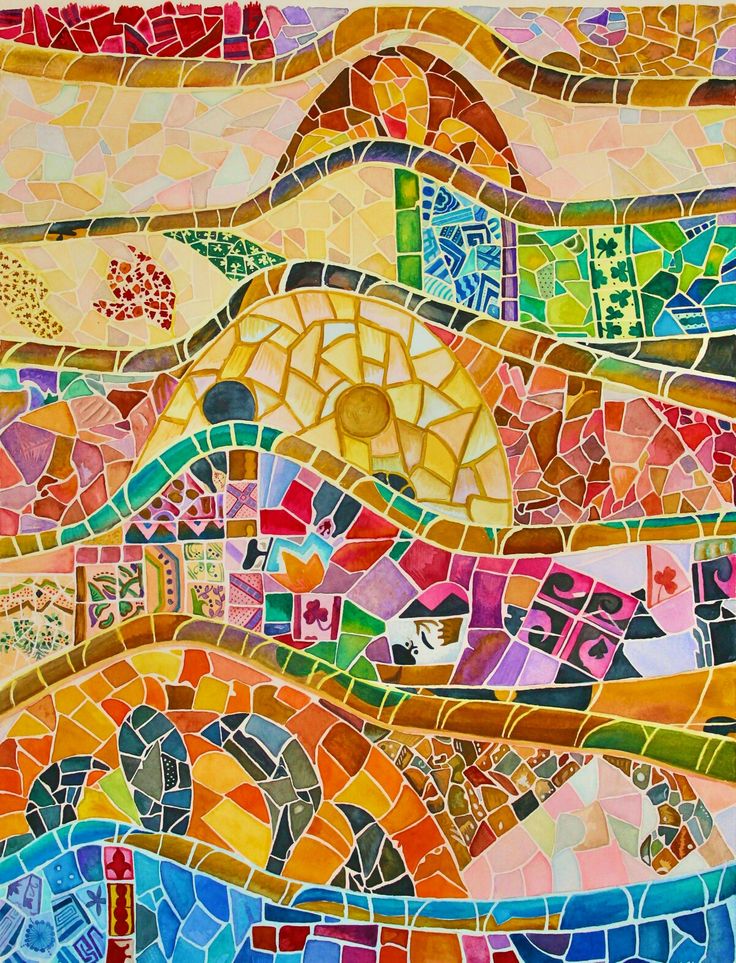
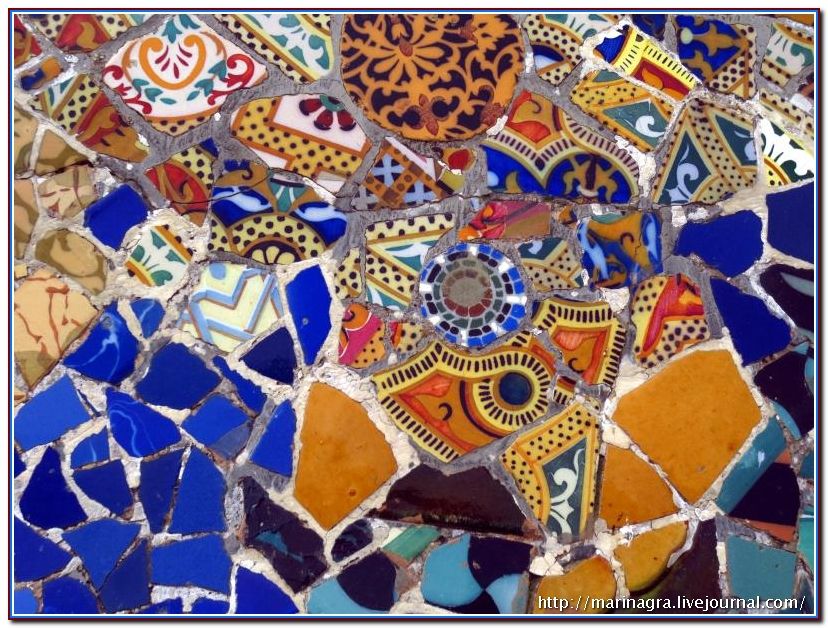
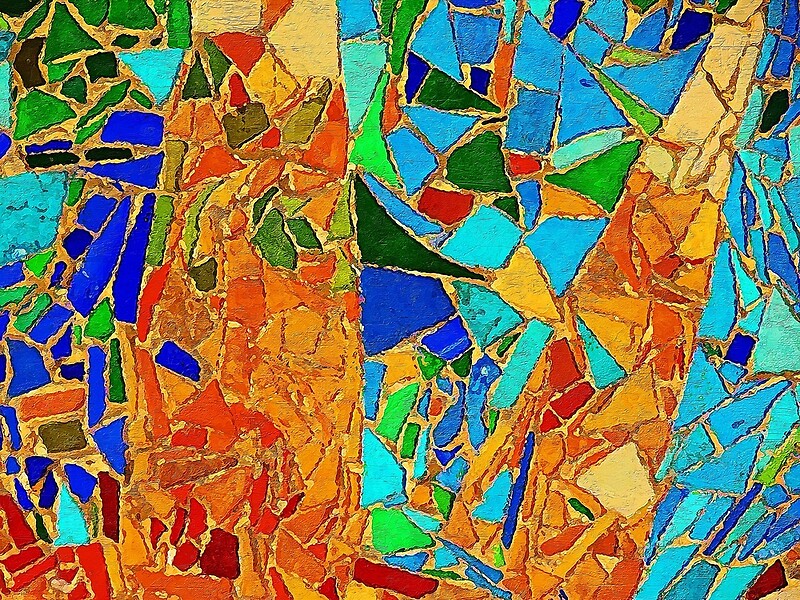
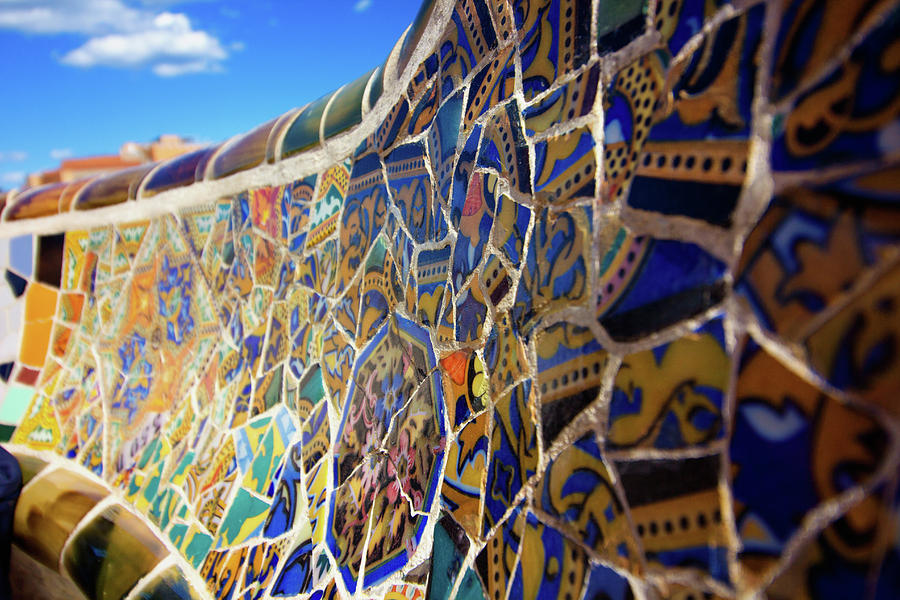
 Something of surprise
Something of surprise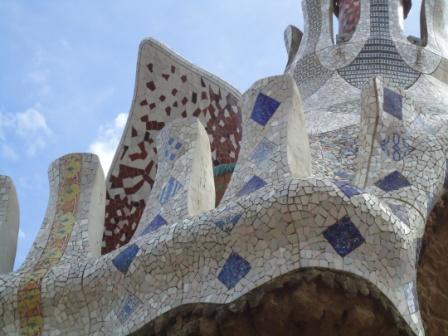
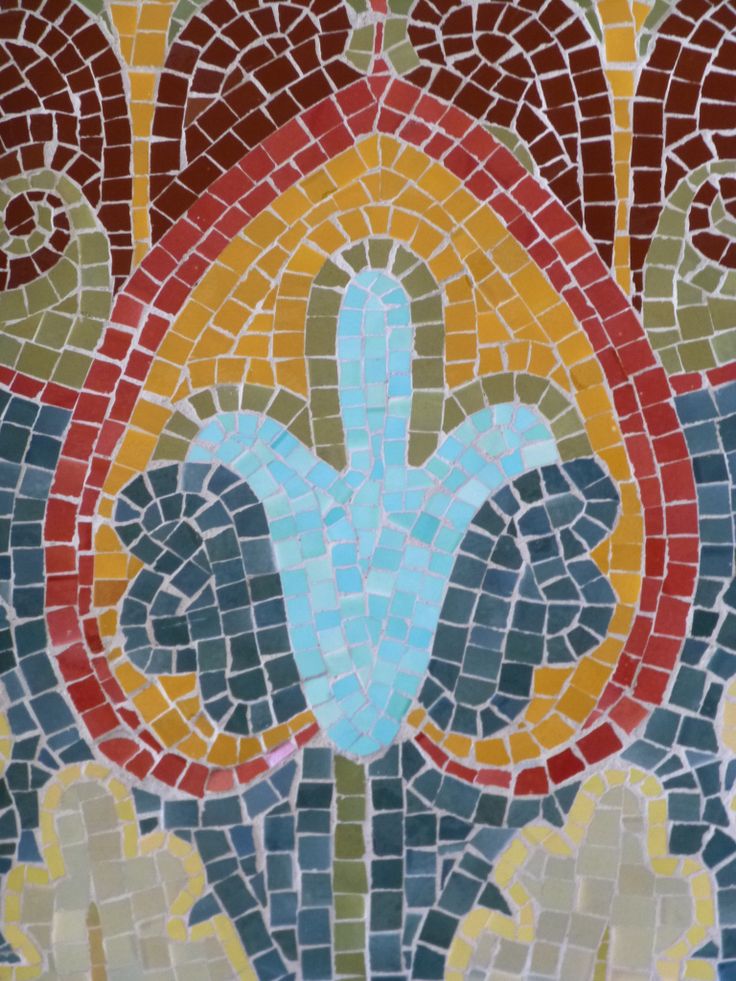
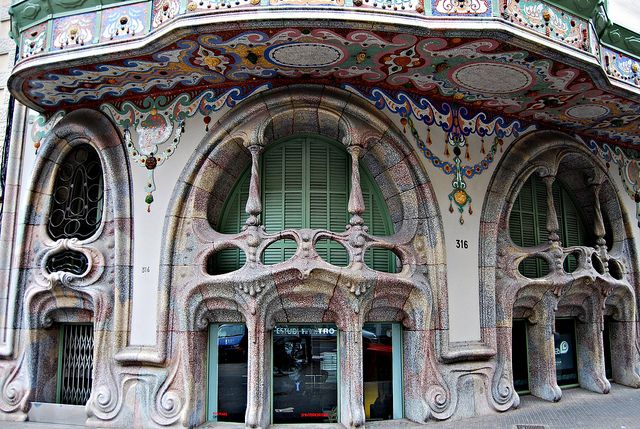 You can still see the remnants of what was supposed to Gaudi’s vision of an ideal township.
You can still see the remnants of what was supposed to Gaudi’s vision of an ideal township. 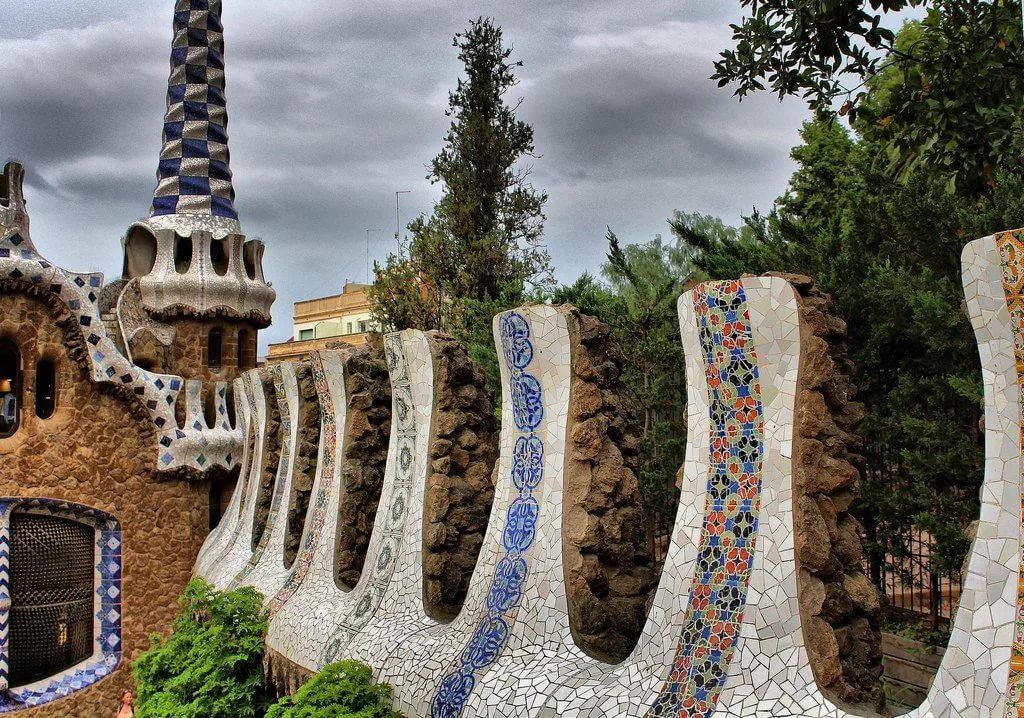 Expect some waiting as it is one of Barcelona’s most visited places. You can avoid queues by purchasing tickets in advance and also by purchasing a skip the line pass. Warm afternoons are the best time to check out the museum.
Expect some waiting as it is one of Barcelona’s most visited places. You can avoid queues by purchasing tickets in advance and also by purchasing a skip the line pass. Warm afternoons are the best time to check out the museum.  You can take the green line L3 to reach these stops. With the help of a pass, you can travel freely in and around the city.
You can take the green line L3 to reach these stops. With the help of a pass, you can travel freely in and around the city. 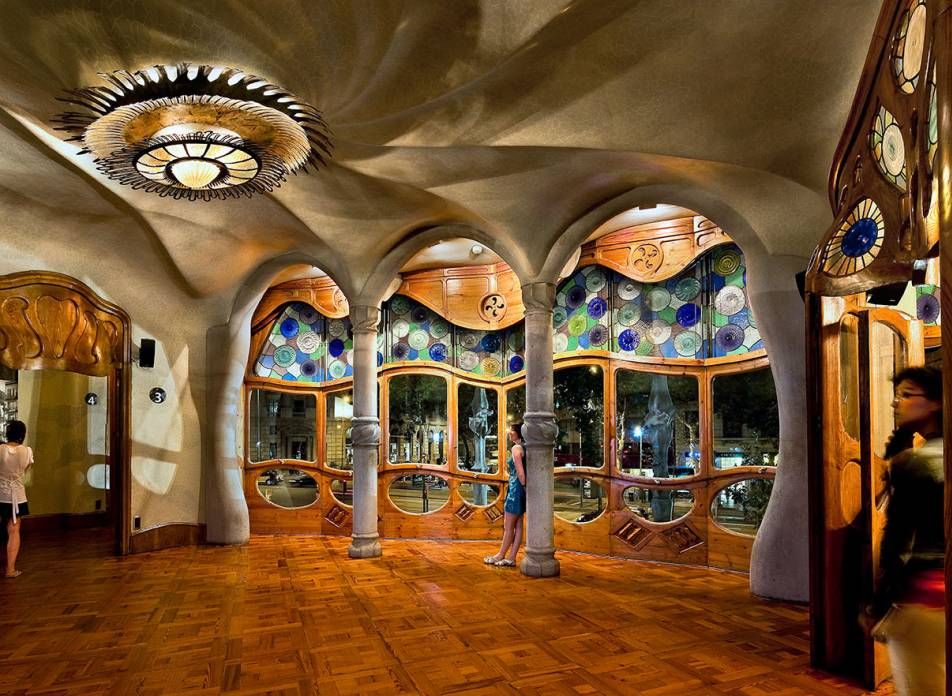 If you are in a hurry then the taxi is the safest option.
If you are in a hurry then the taxi is the safest option. 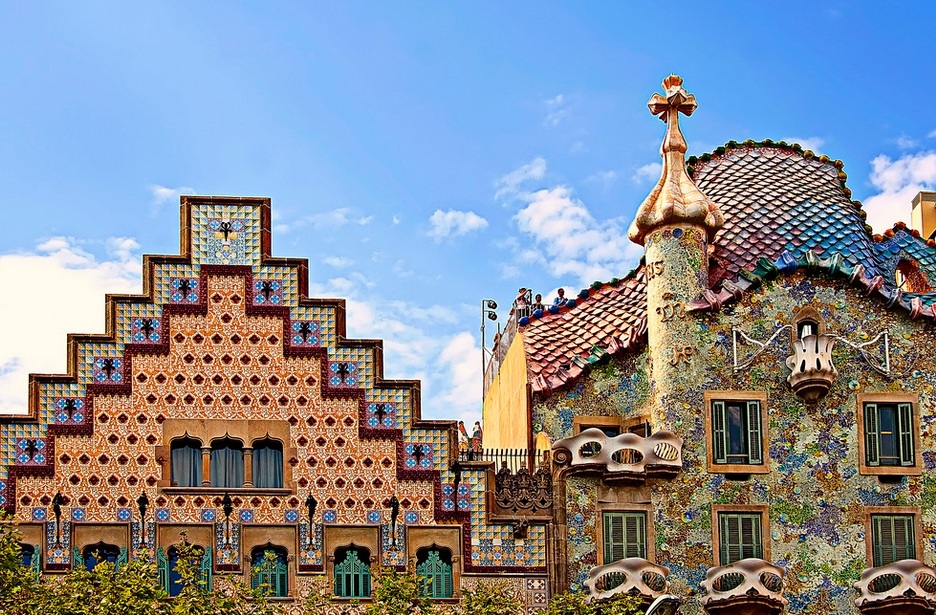
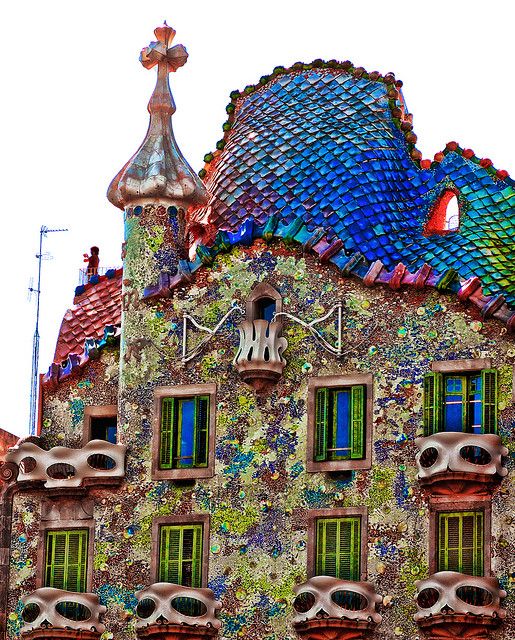
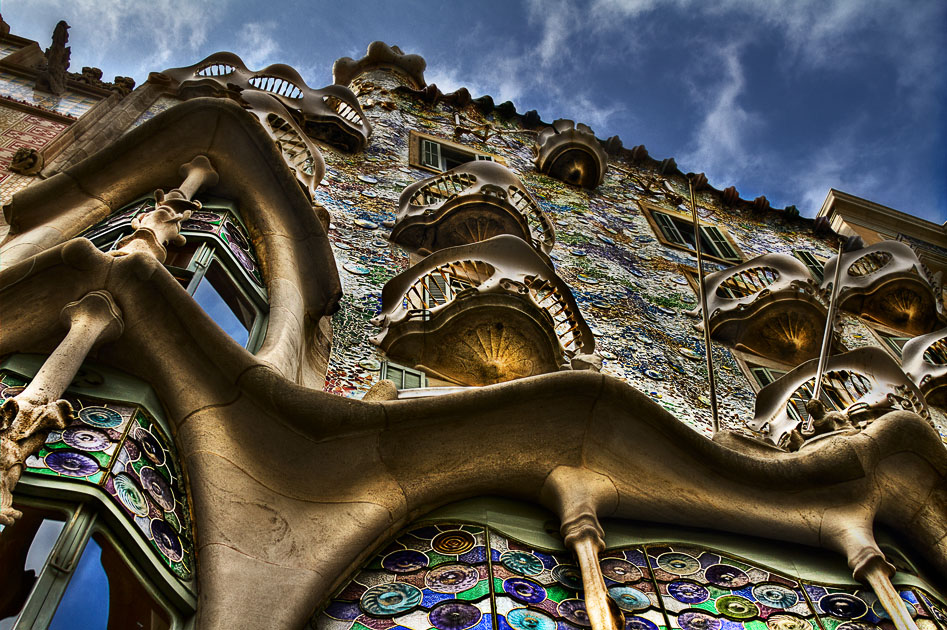
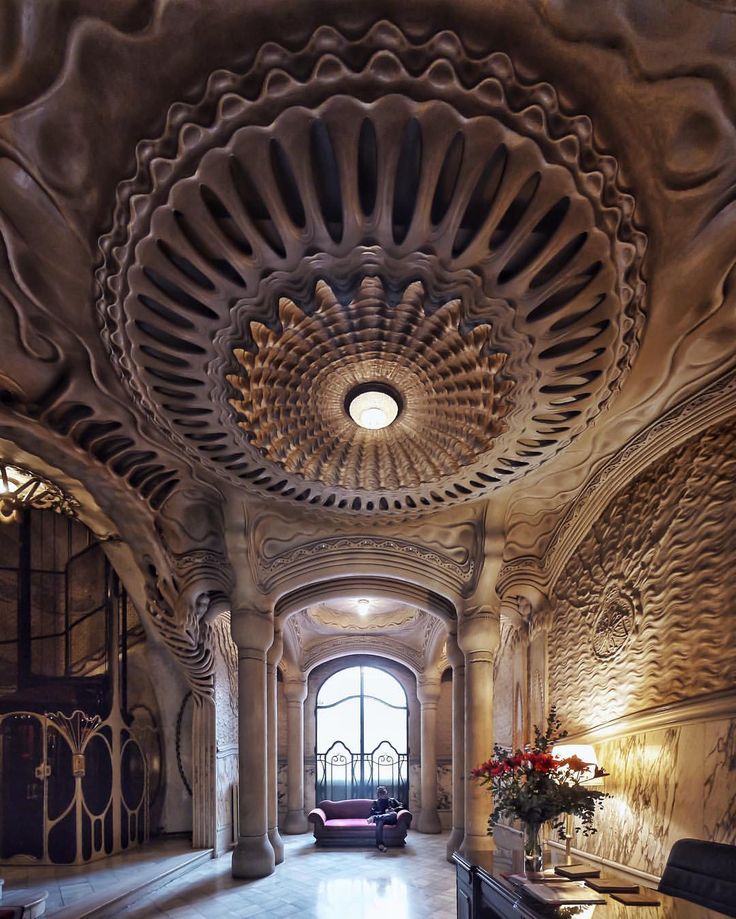 It is often called a jewelry box, and this is no coincidence.
It is often called a jewelry box, and this is no coincidence.
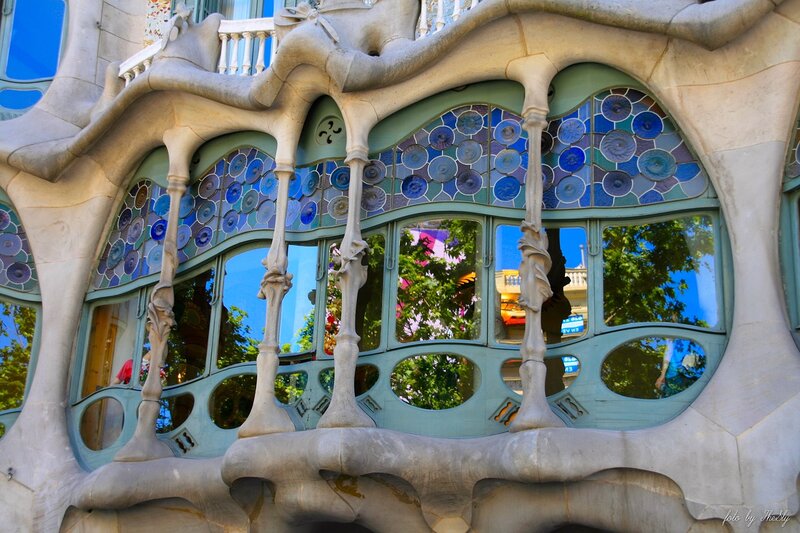 The new owner of the house first offered the architect to demolish the old building and build a new house in its place, but Gaudí abandoned this idea, deciding to reconstruct the old building. He radically changed the facade of the house and the interior layout of the premises.
The new owner of the house first offered the architect to demolish the old building and build a new house in its place, but Gaudí abandoned this idea, deciding to reconstruct the old building. He radically changed the facade of the house and the interior layout of the premises.  In this regard, many legends are composed about the house. Casa Batlló is often even called the “House of the Dragon”.
In this regard, many legends are composed about the house. Casa Batlló is often even called the “House of the Dragon”. 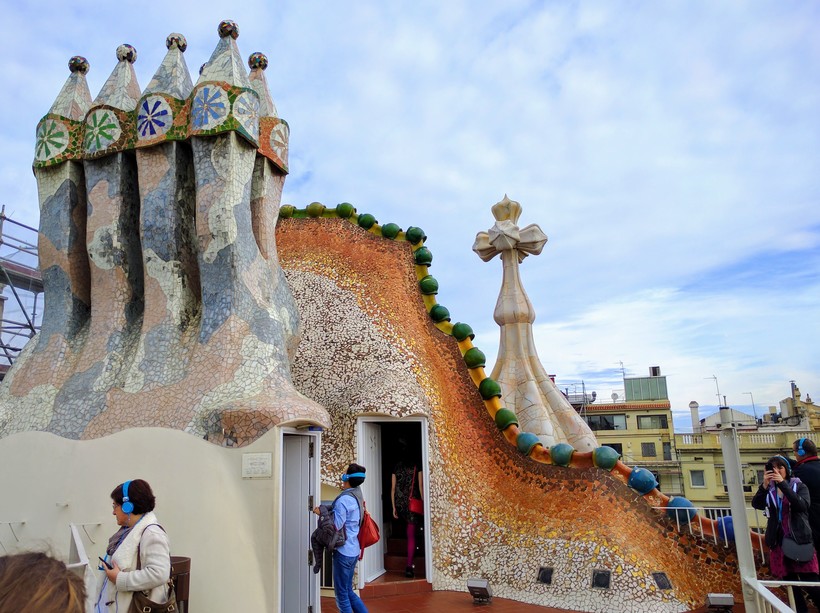
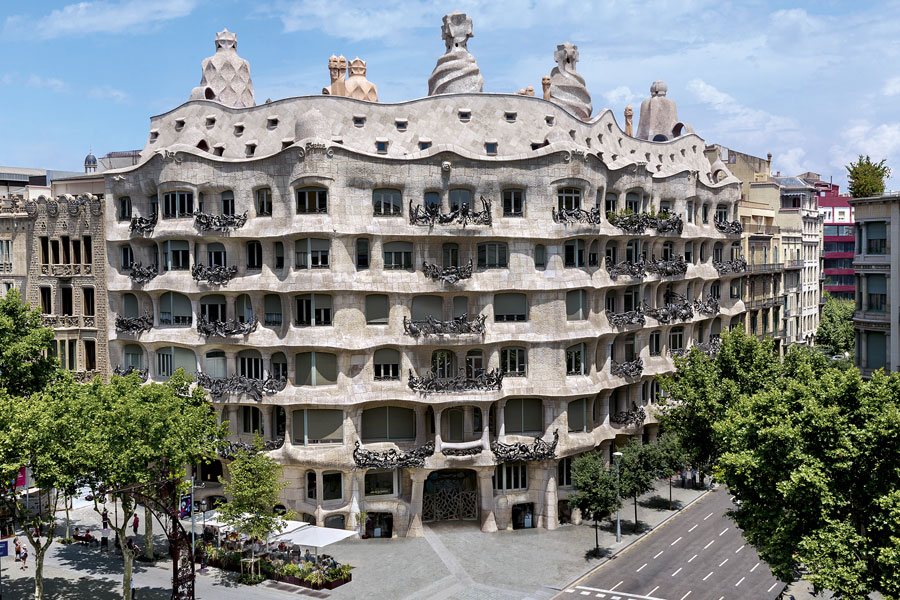 Entrance of visitors stops one hour before the closing of the museum.
Entrance of visitors stops one hour before the closing of the museum. 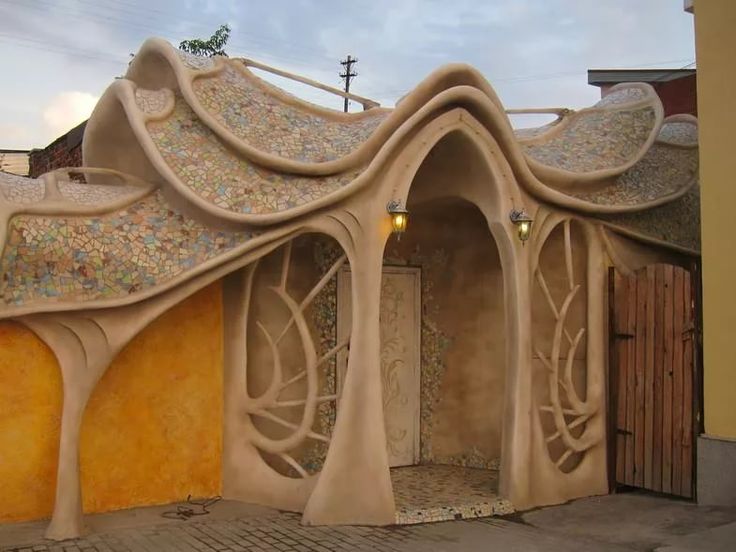
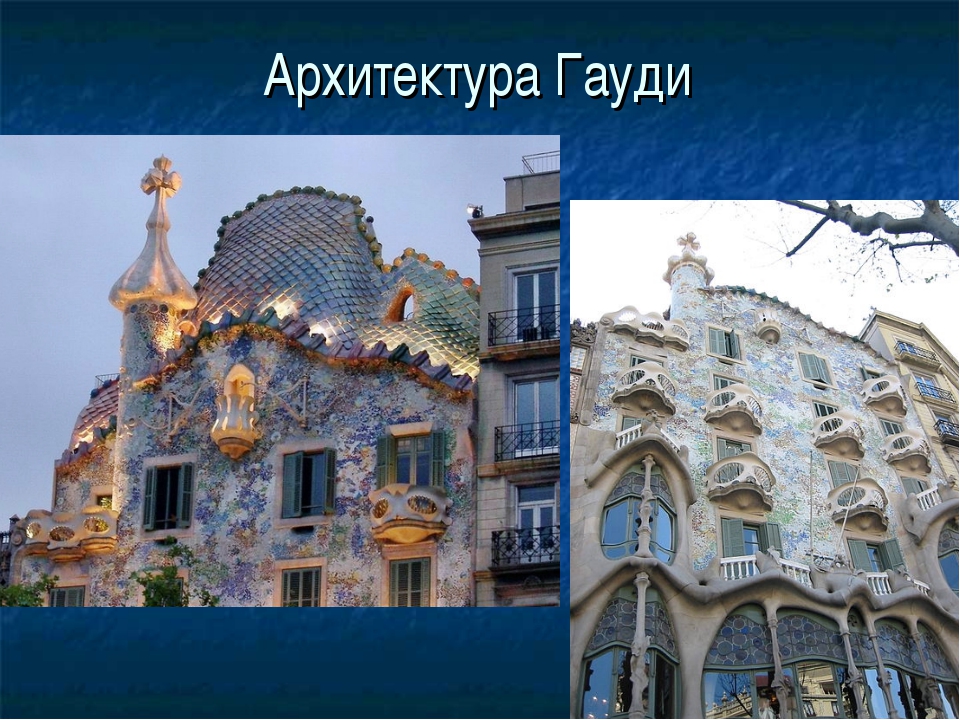
 Musicians, singers and dancers arrange their performances right on the roof of Casa Batlló. You can buy a ticket for a session that takes place after the official closing of the museum. First, take an hour tour of the house, and then go up to the rooftop, where you will be treated to drinks and a musical show.
Musicians, singers and dancers arrange their performances right on the roof of Casa Batlló. You can buy a ticket for a session that takes place after the official closing of the museum. First, take an hour tour of the house, and then go up to the rooftop, where you will be treated to drinks and a musical show. 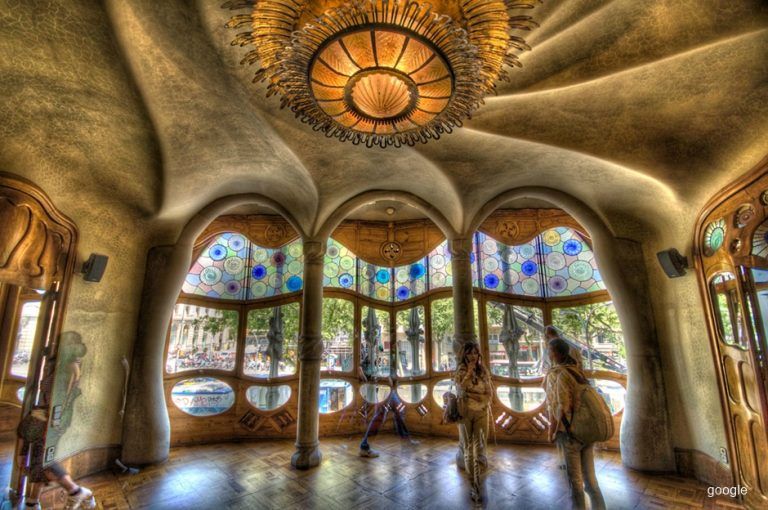
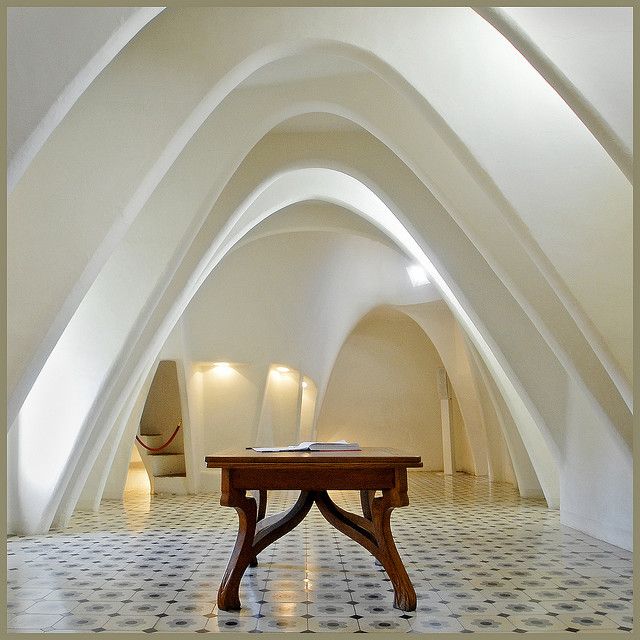
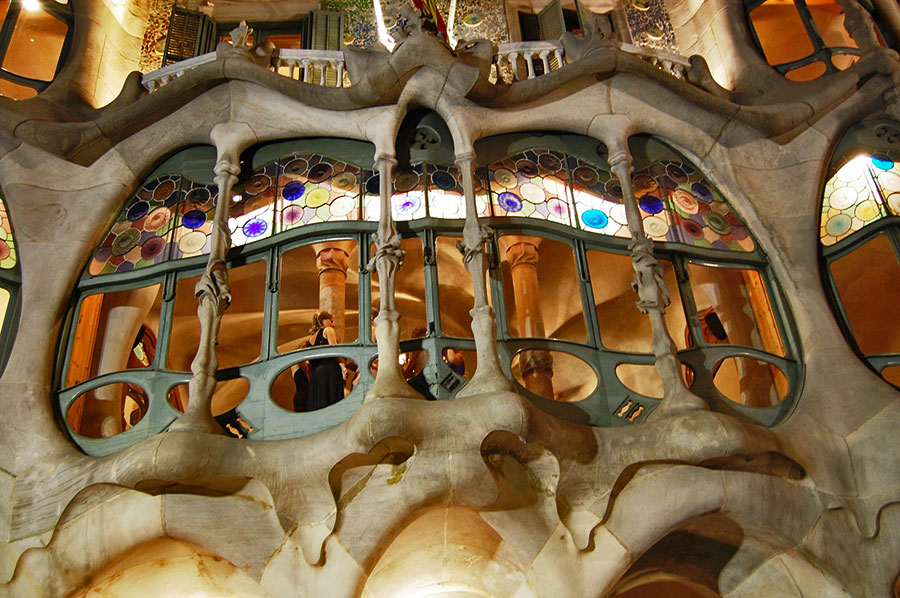
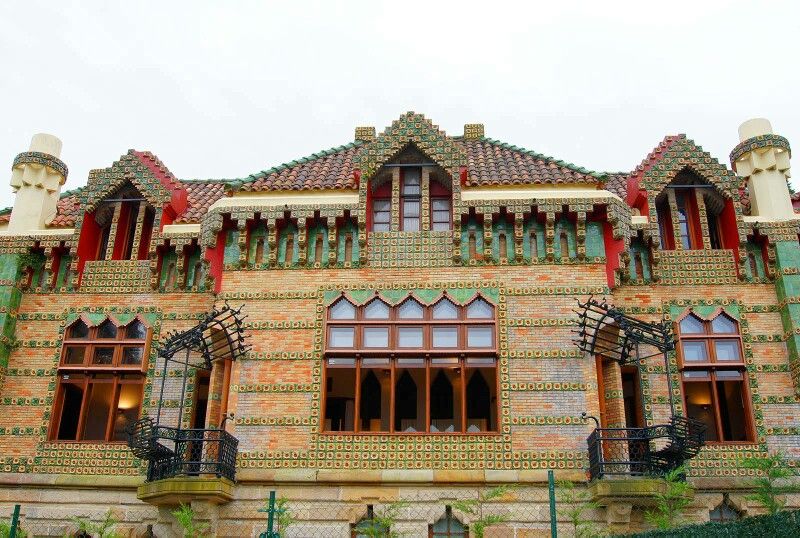 Initially, they planned to demolish the old-fashioned building and build a new one, but Gaudí convinced the entrepreneur.
Initially, they planned to demolish the old-fashioned building and build a new one, but Gaudí convinced the entrepreneur. 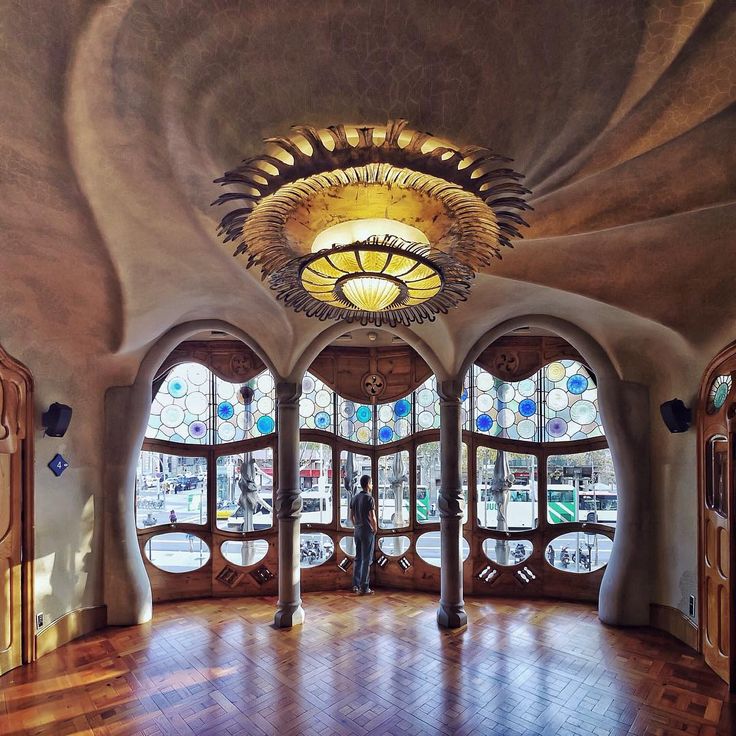
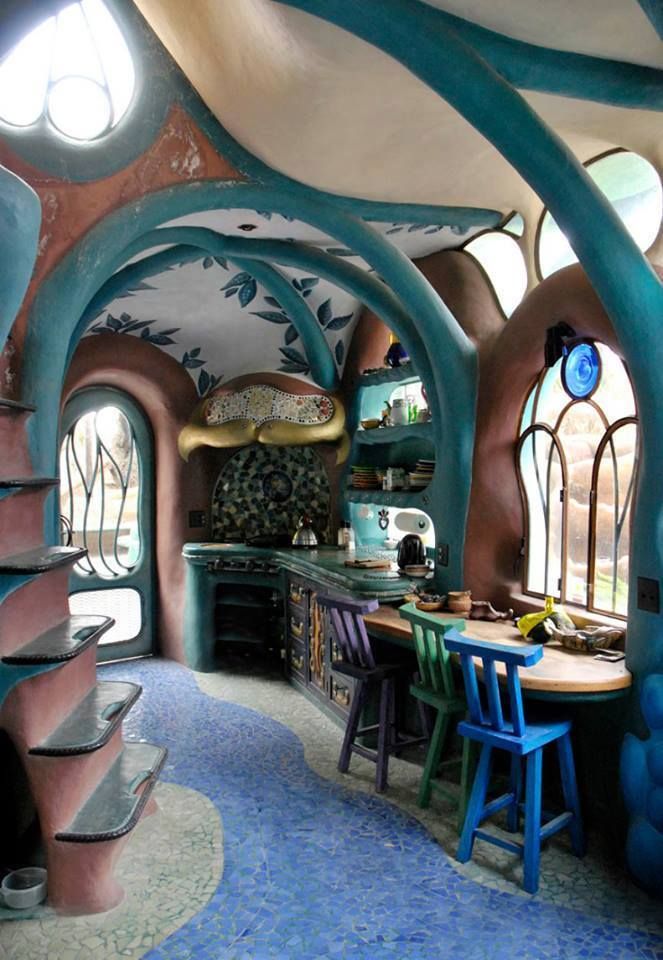 Also, journalists accredited in Barcelona and members of Club Super 3 are allowed to pass without money.
Also, journalists accredited in Barcelona and members of Club Super 3 are allowed to pass without money. 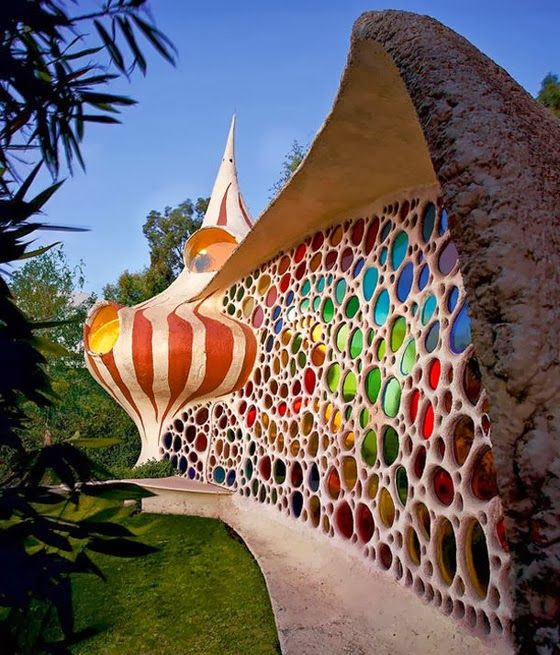
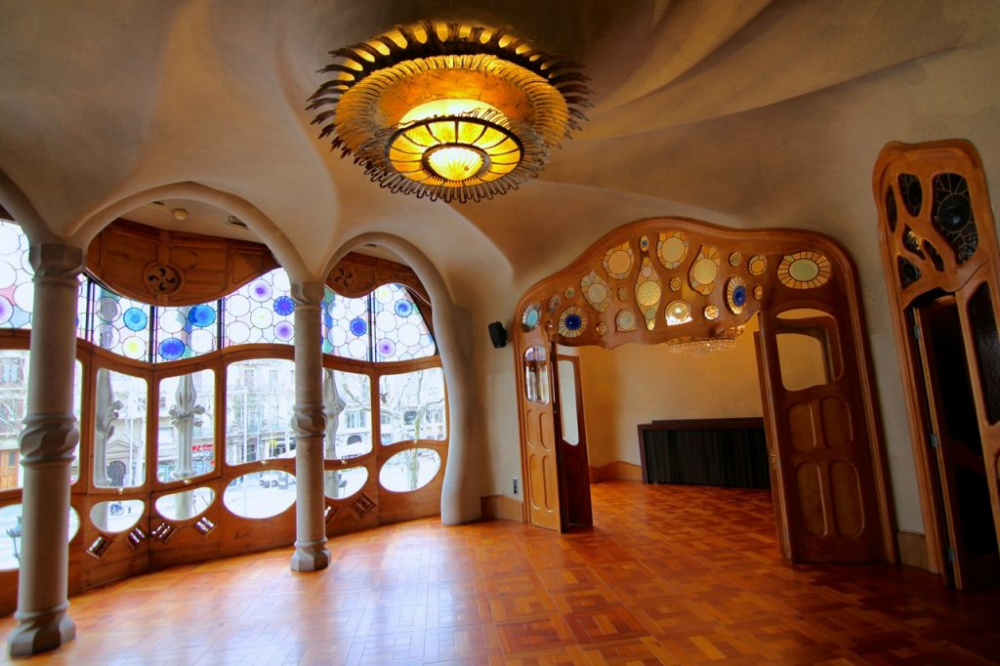

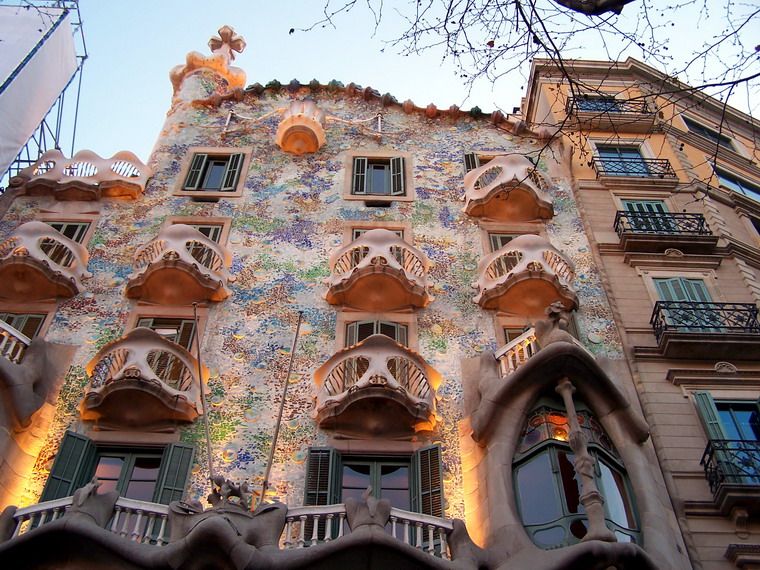
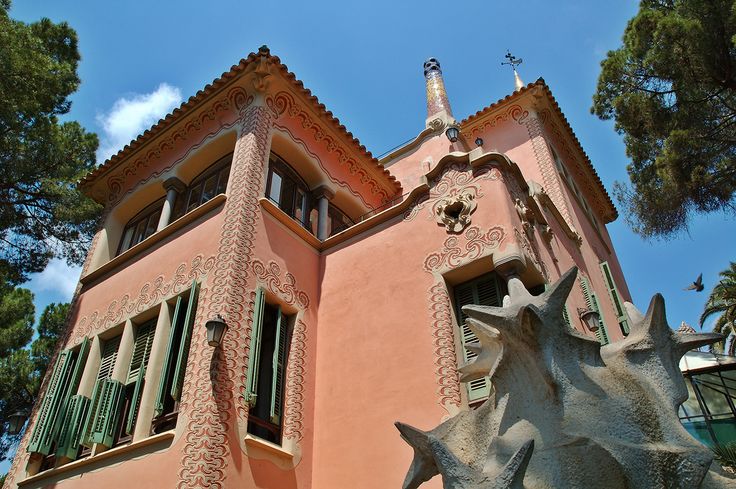 Built between 1883 and 1885, it’s a wonderful place to visit in order to see some of Gaudí’s early work.
Built between 1883 and 1885, it’s a wonderful place to visit in order to see some of Gaudí’s early work.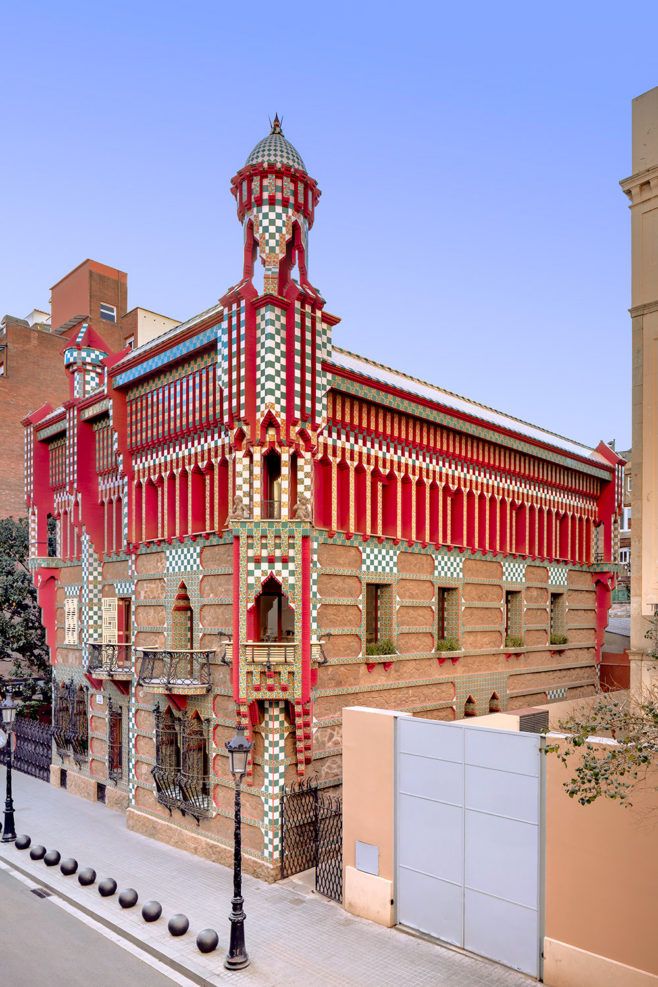 This 1½ hour guided tour is great value at just €21 per person, and can also be booked in advance through Get Your Guide.
This 1½ hour guided tour is great value at just €21 per person, and can also be booked in advance through Get Your Guide.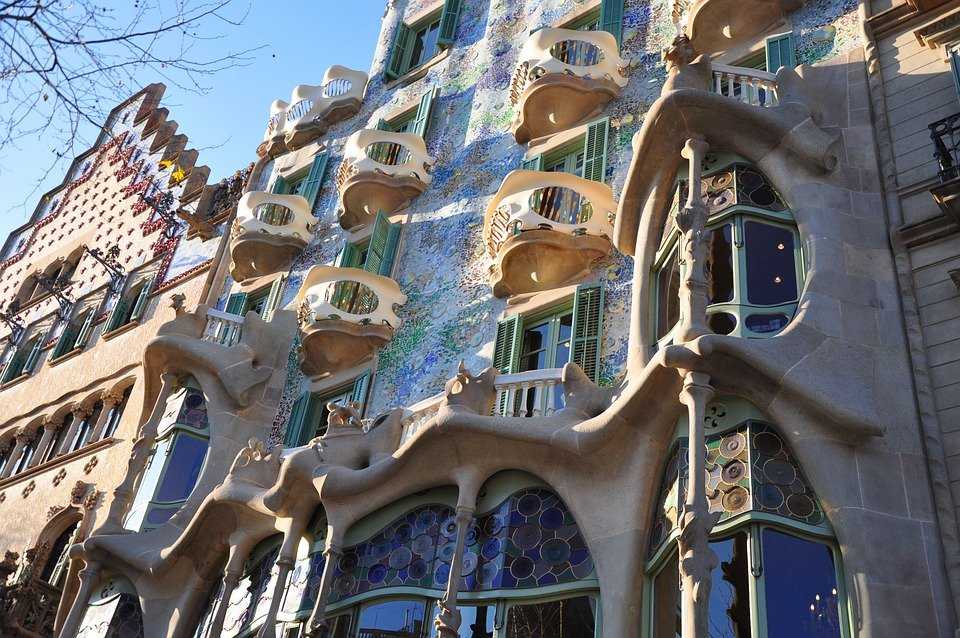 To top if off Casa Batlló also has a lovely rooftop terrace for you to enjoy.
To top if off Casa Batlló also has a lovely rooftop terrace for you to enjoy.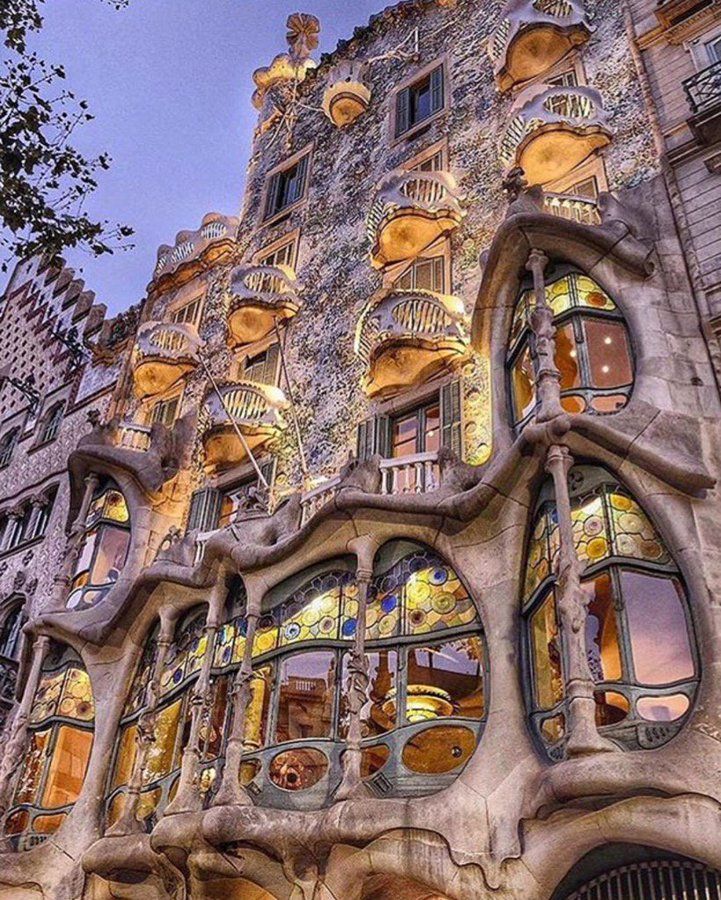 It has been under construction since 1882 and is still yet to be finished!
It has been under construction since 1882 and is still yet to be finished!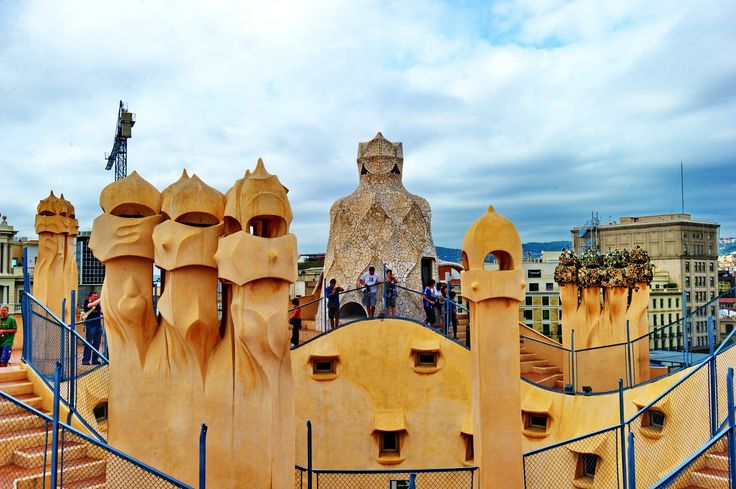 Fast track tickets are slightly more expensive at €31.60 per person, but it can end up saving quite a bit of time so is often worth the cost!
Fast track tickets are slightly more expensive at €31.60 per person, but it can end up saving quite a bit of time so is often worth the cost!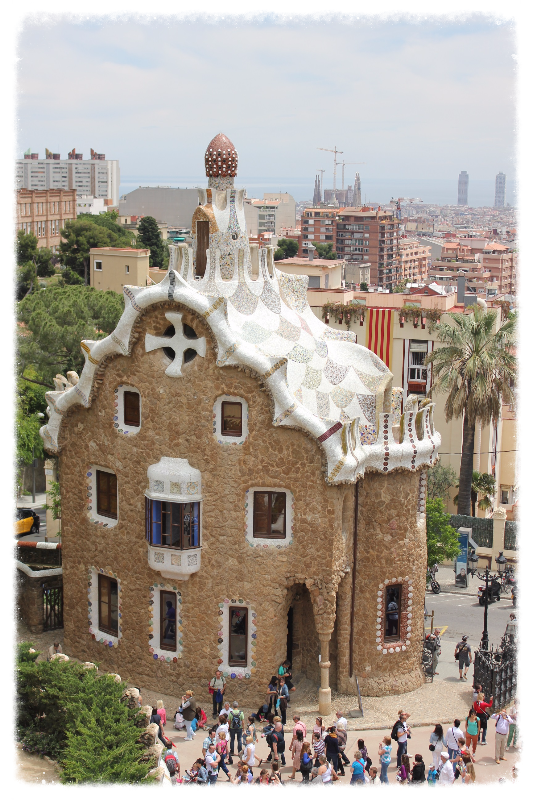
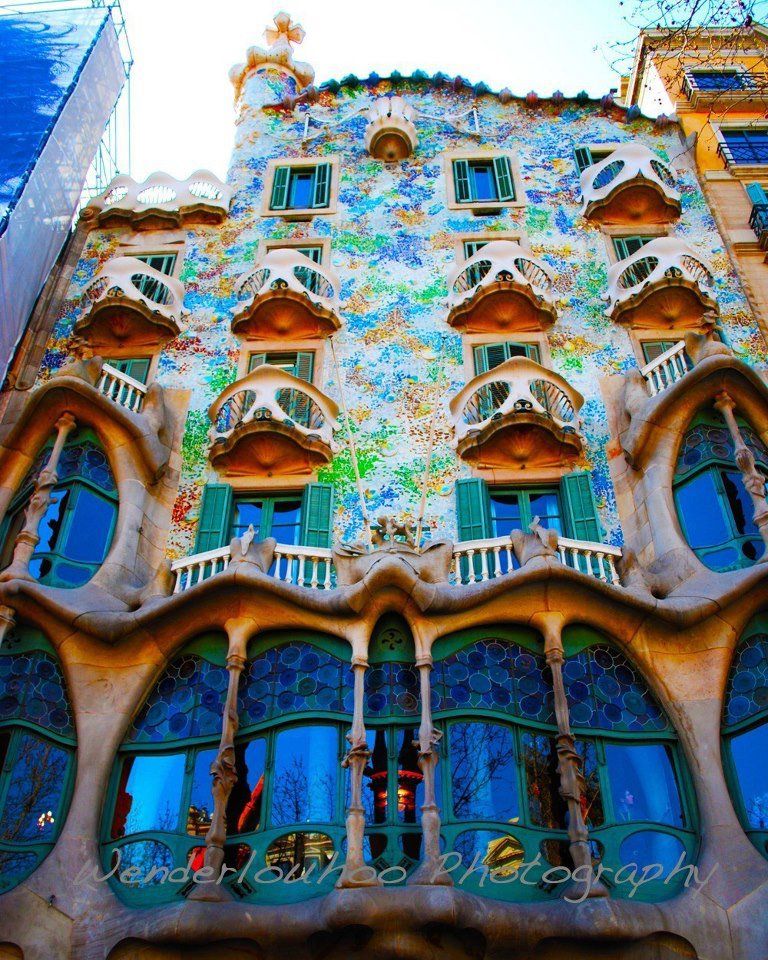 In fact, he designed quite a few structures around the city from homes, schools, parks, lamp posts, and even furniture.
In fact, he designed quite a few structures around the city from homes, schools, parks, lamp posts, and even furniture.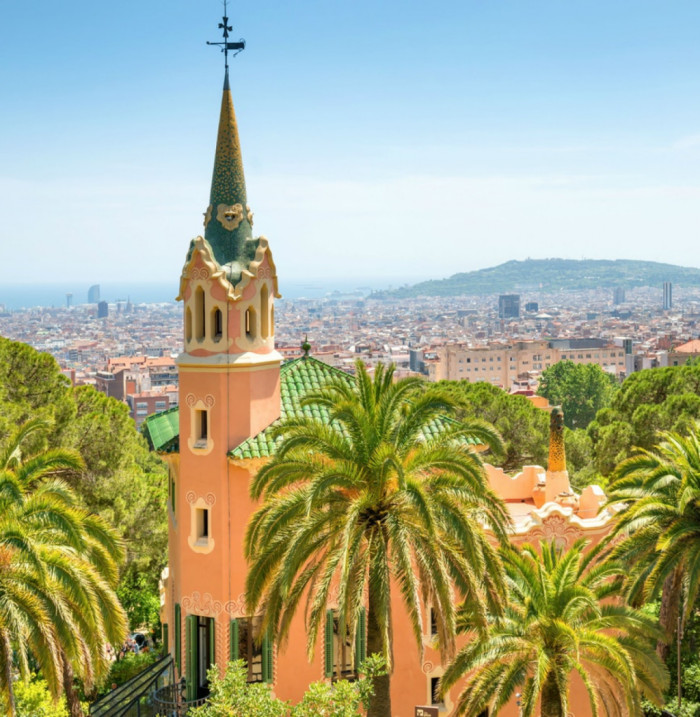 I highly recommend booking a stay in Gràcia to experience more of the local Barcelona life. Book a room at Casa Gràcia – See room rates & availability here.
I highly recommend booking a stay in Gràcia to experience more of the local Barcelona life. Book a room at Casa Gràcia – See room rates & availability here.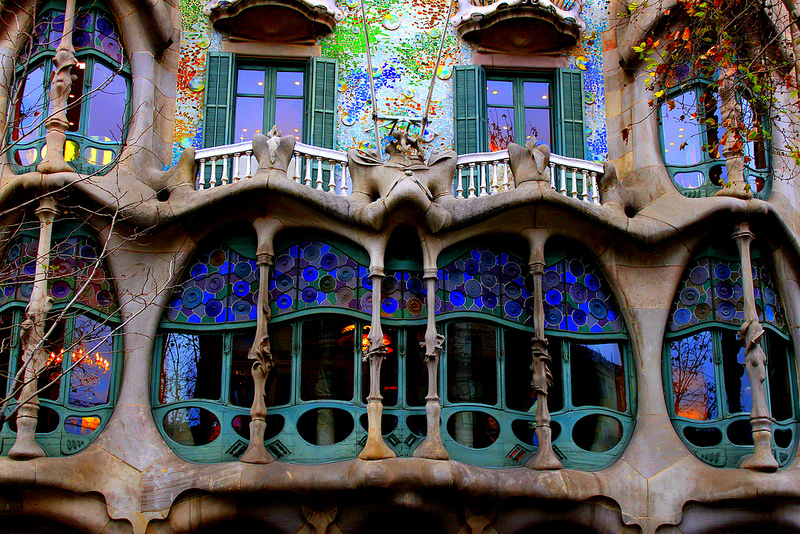 From the 1880s to the 1930s, it was all about moving away from industrial buildings and experimenting with new materials and visual styles. The trend was to use glass, metal, and tiles to turn them into art pieces.
From the 1880s to the 1930s, it was all about moving away from industrial buildings and experimenting with new materials and visual styles. The trend was to use glass, metal, and tiles to turn them into art pieces. In total, there are 14 Gaudí buildings you have to visit in Barcelona and that doesn’t include those outside of the city.
In total, there are 14 Gaudí buildings you have to visit in Barcelona and that doesn’t include those outside of the city.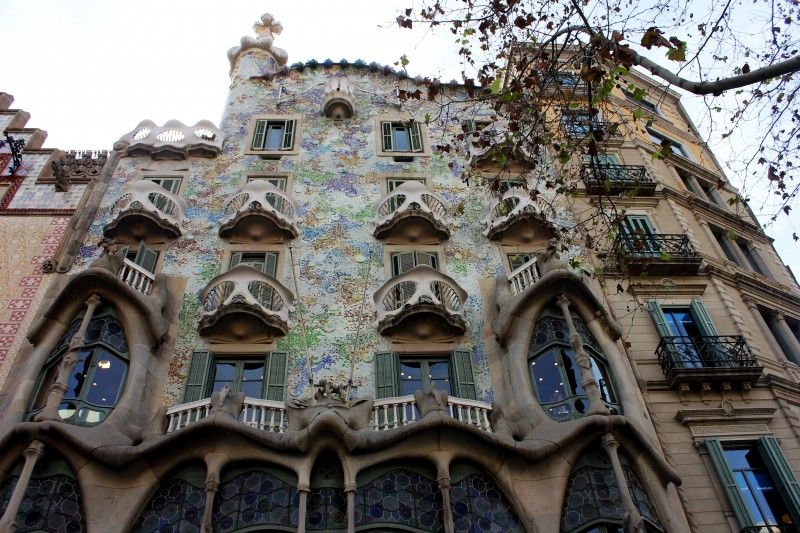 He devoted the next 43 years of his life to the Sagrada Familia until he died.
He devoted the next 43 years of his life to the Sagrada Familia until he died.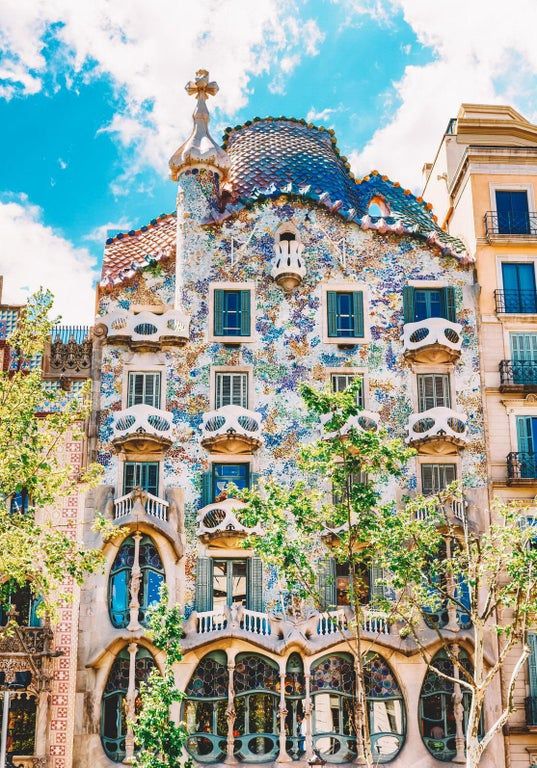 Casa Batlló
Casa Batlló
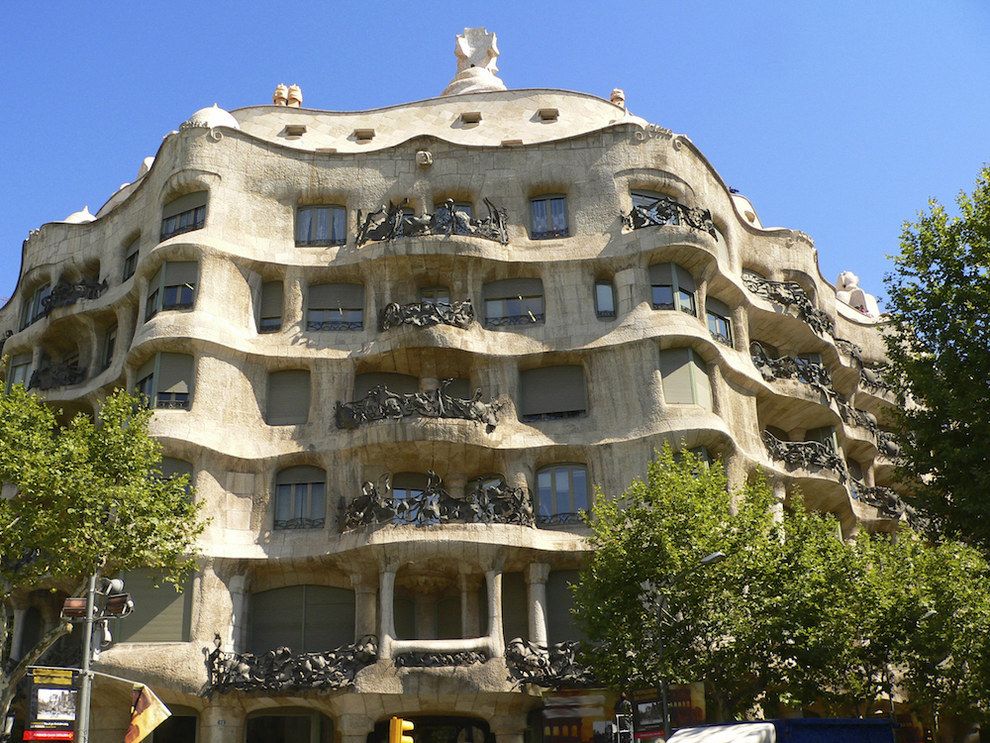 The restricted zone is the part with all of Gaudí’s work, but unfortunately, it isn’t free. Plus, to make matters worse, half of it is under restorations.
The restricted zone is the part with all of Gaudí’s work, but unfortunately, it isn’t free. Plus, to make matters worse, half of it is under restorations.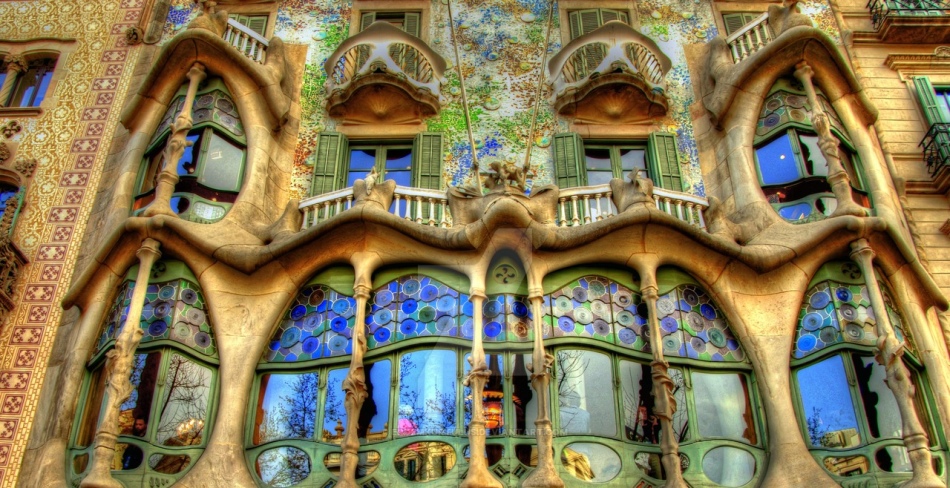
 The permanent exhibit is all about Gaudí’s furniture.
The permanent exhibit is all about Gaudí’s furniture.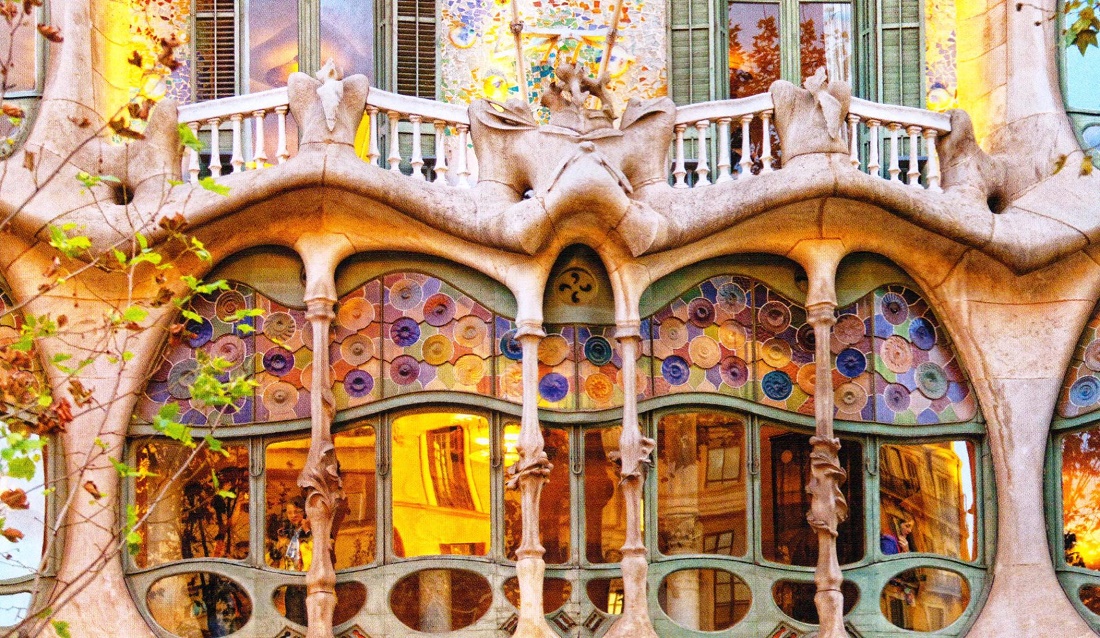 This is a must-do on any Gaudí Barcelona tour (more so than Casa Batlló in my mind).
This is a must-do on any Gaudí Barcelona tour (more so than Casa Batlló in my mind).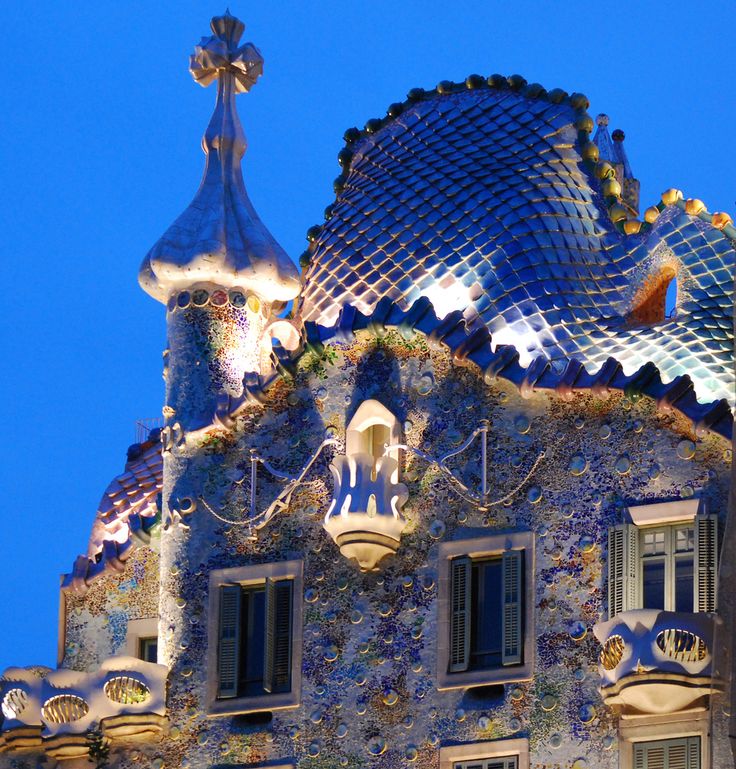
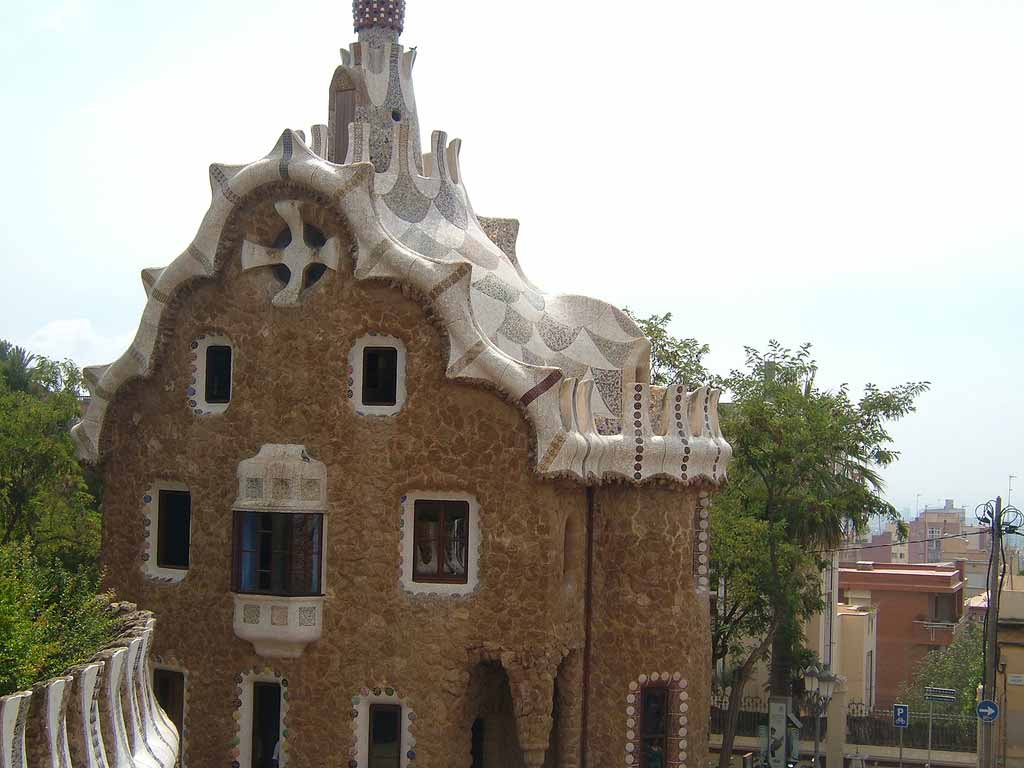 It’s a few blocks away from Passeig de Gracià so it’s quite easy to make a quick detour to see the outside.
It’s a few blocks away from Passeig de Gracià so it’s quite easy to make a quick detour to see the outside.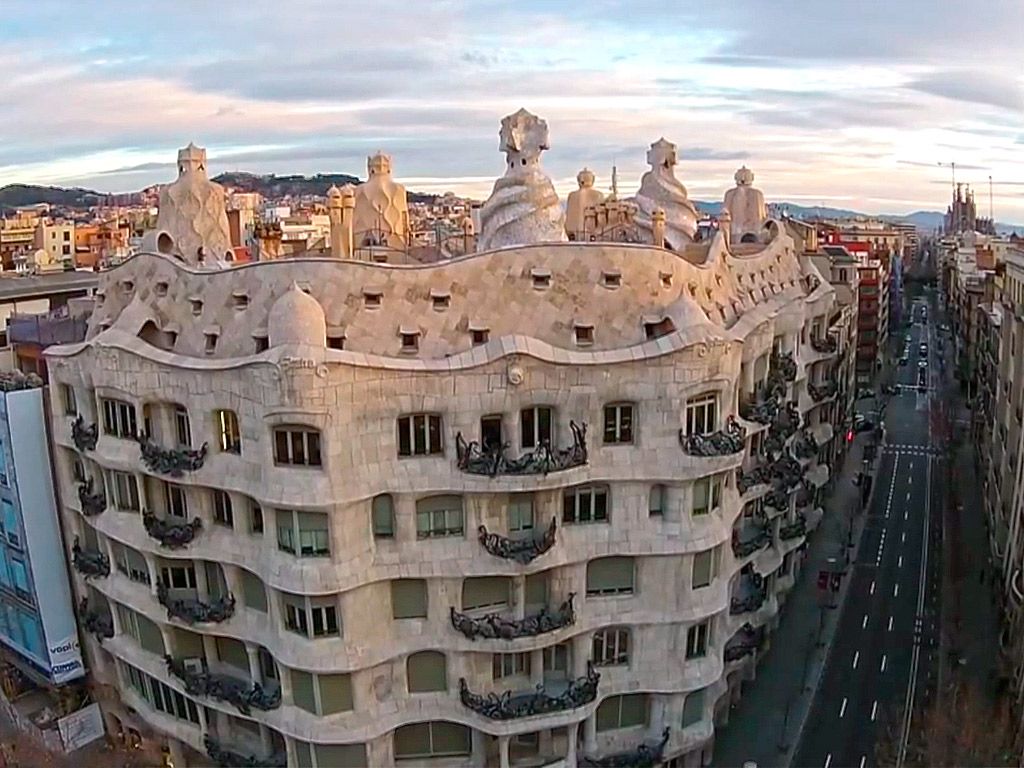 And keep track of your travels every day with my digital and printable travel journal.
And keep track of your travels every day with my digital and printable travel journal.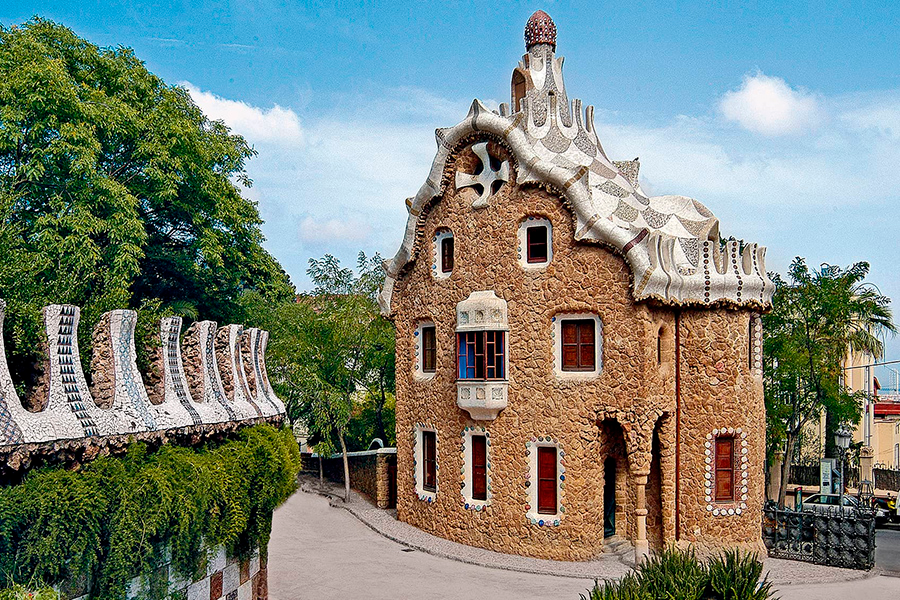 But you can go to admire the facade.
But you can go to admire the facade.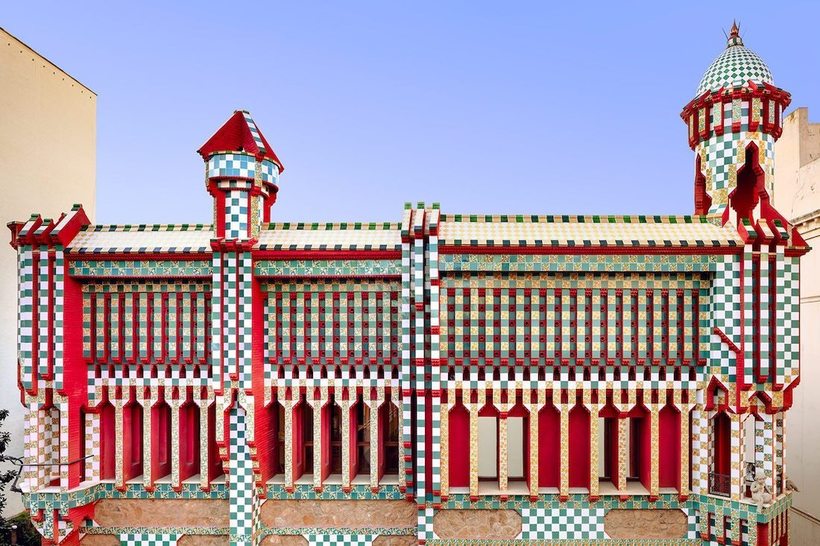
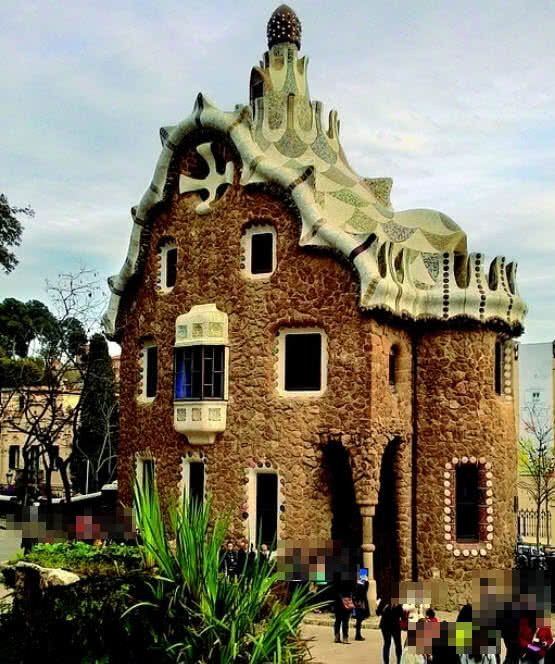 Most of the main attractions were designed by this architect. Gaudí’s Barcelona is replete with fiction and legends. Gaudi is a genius, this assessment is undeniable. And the houses of Gaudi in Barcelona are a vivid confirmation of this.
Most of the main attractions were designed by this architect. Gaudí’s Barcelona is replete with fiction and legends. Gaudi is a genius, this assessment is undeniable. And the houses of Gaudi in Barcelona are a vivid confirmation of this. 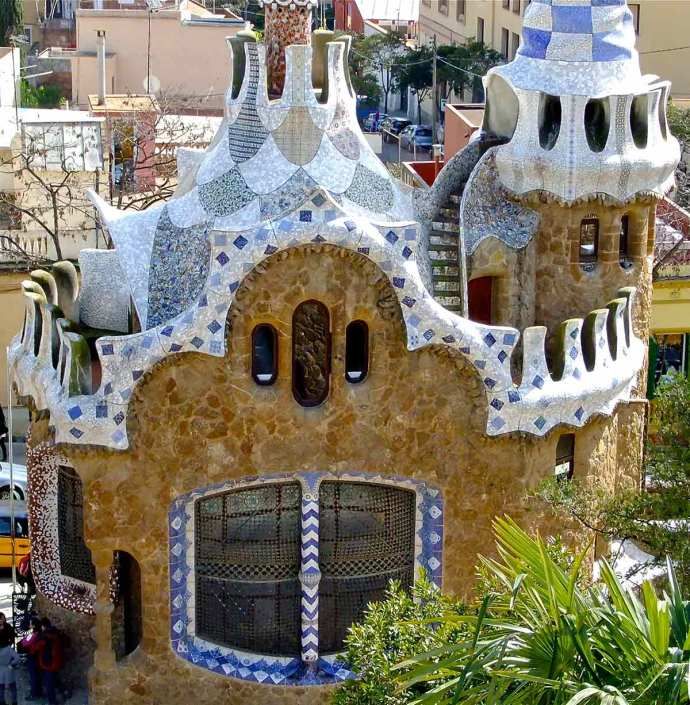
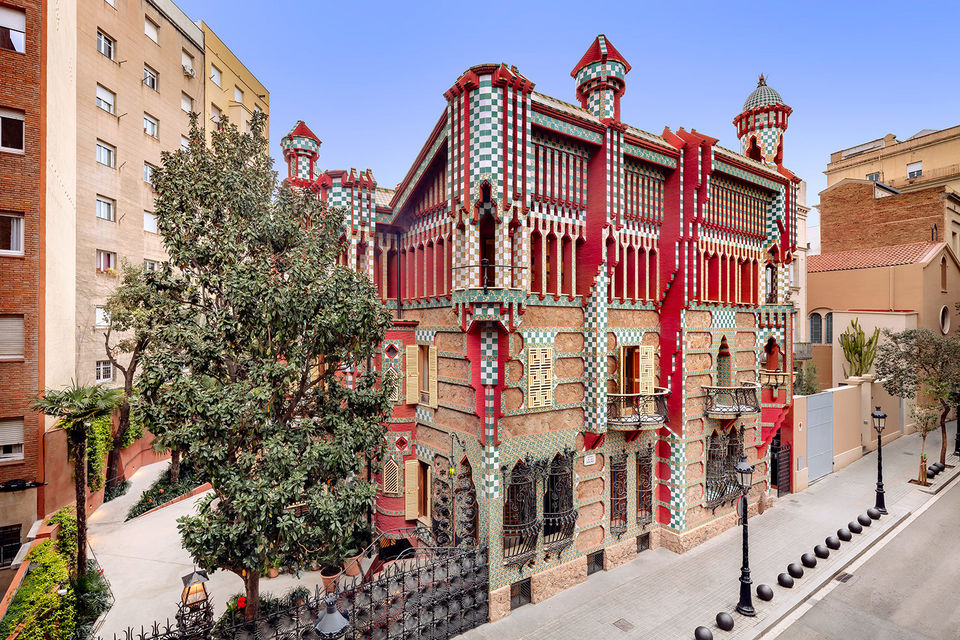 His works captivate the heart. Worshiping nature, the architect made every effort to create buildings in harmony with nature:
His works captivate the heart. Worshiping nature, the architect made every effort to create buildings in harmony with nature: 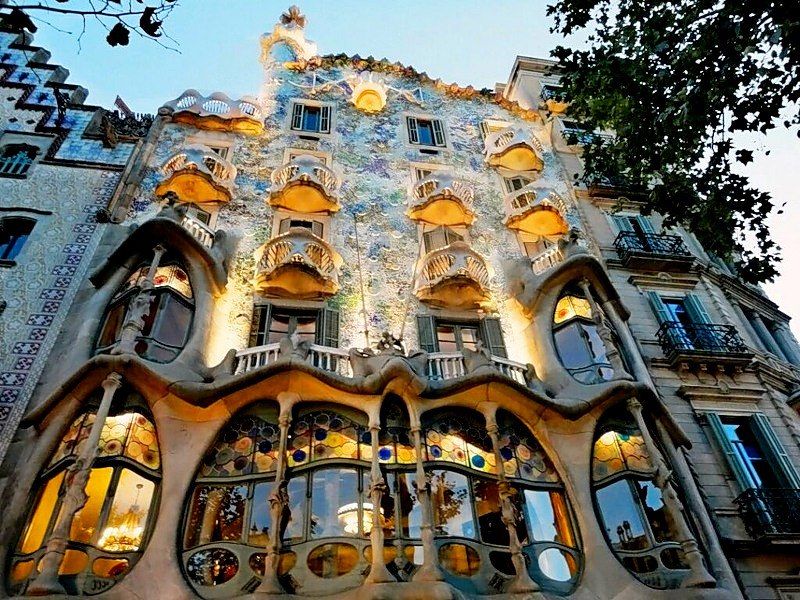 This includes a visit to Casa Batlló, Casa Mila and Casa Vicens.
This includes a visit to Casa Batlló, Casa Mila and Casa Vicens.  You can print, or you can use the barcode on any electronic medium (phone, tablet).
You can print, or you can use the barcode on any electronic medium (phone, tablet). 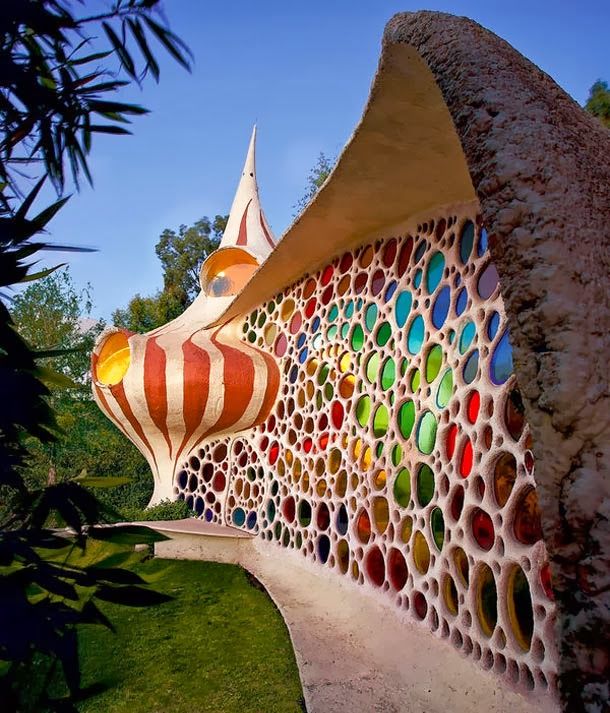
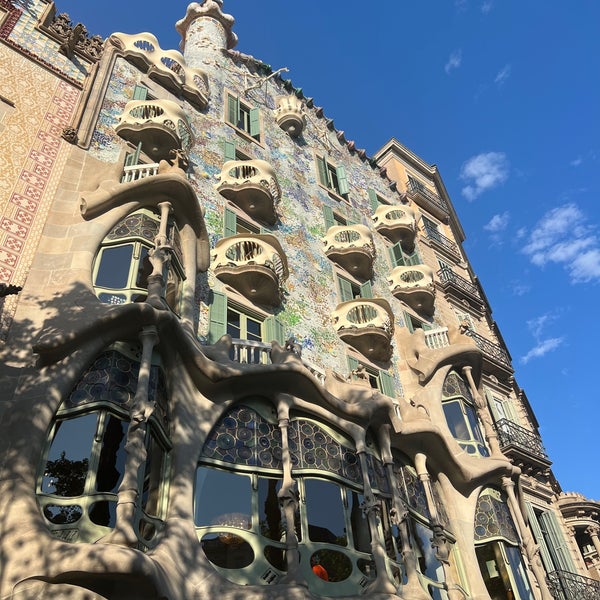
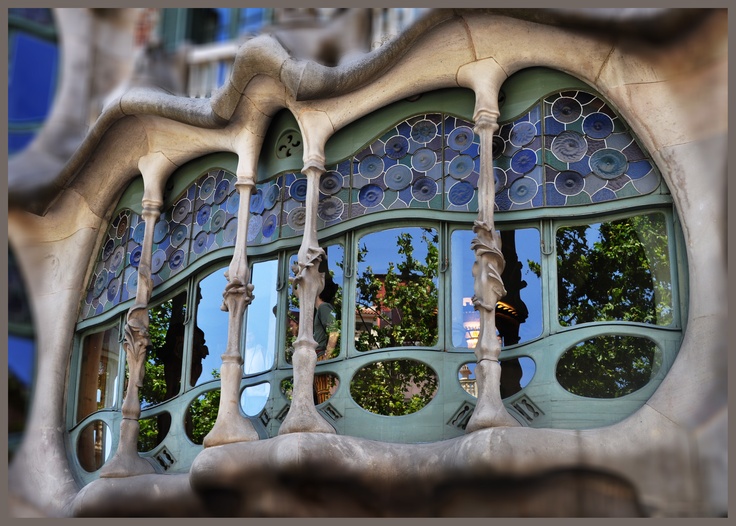

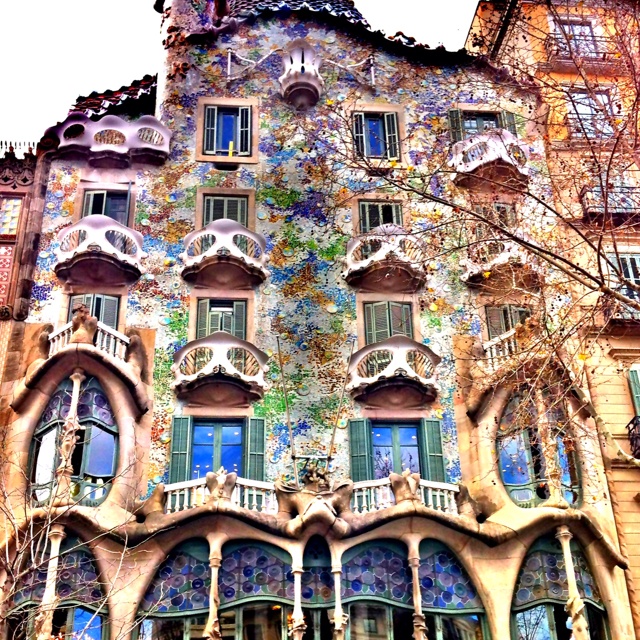 He attends all the iconic events of the Catalan capital and shares his impressions. Gastronomic expert.
He attends all the iconic events of the Catalan capital and shares his impressions. Gastronomic expert. 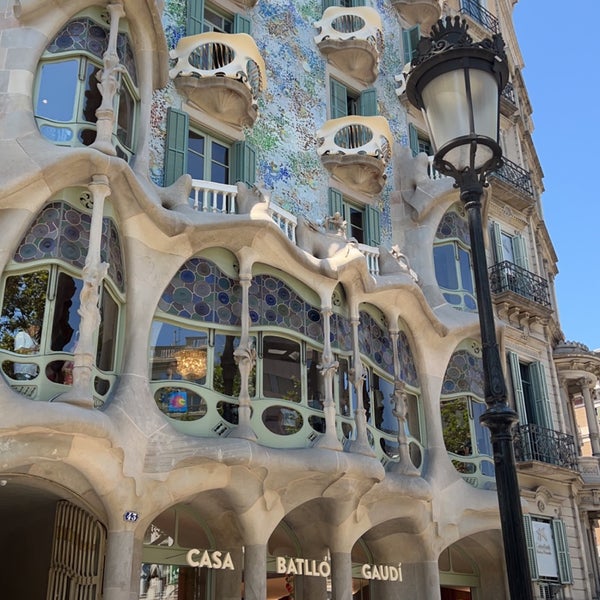
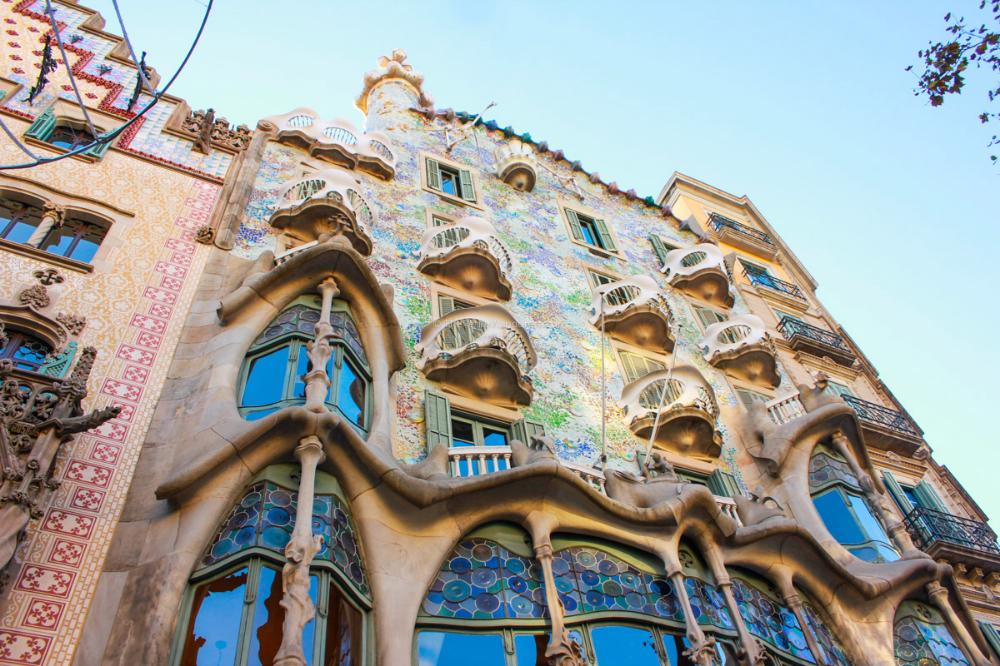
 Book your tickets online in advance and you won’t have to queue to get in.
Book your tickets online in advance and you won’t have to queue to get in.
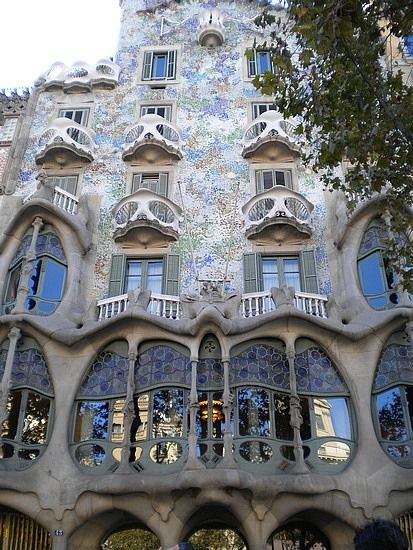
 You will also be able to take the Barcelona hop on hop off bus to visit the city for an unlimited number of times during 24 hours by just showing your e-ticket when boarding the bus – no queues needed at a ticket office. The Barcelona hop on hop off bus has stops next to Park Guëll and Sagrada Familia which makes it very convenient to visit both attractions.
You will also be able to take the Barcelona hop on hop off bus to visit the city for an unlimited number of times during 24 hours by just showing your e-ticket when boarding the bus – no queues needed at a ticket office. The Barcelona hop on hop off bus has stops next to Park Guëll and Sagrada Familia which makes it very convenient to visit both attractions. Also the actual style of construction appears somewhat different between the new and old parts of the building.
Also the actual style of construction appears somewhat different between the new and old parts of the building.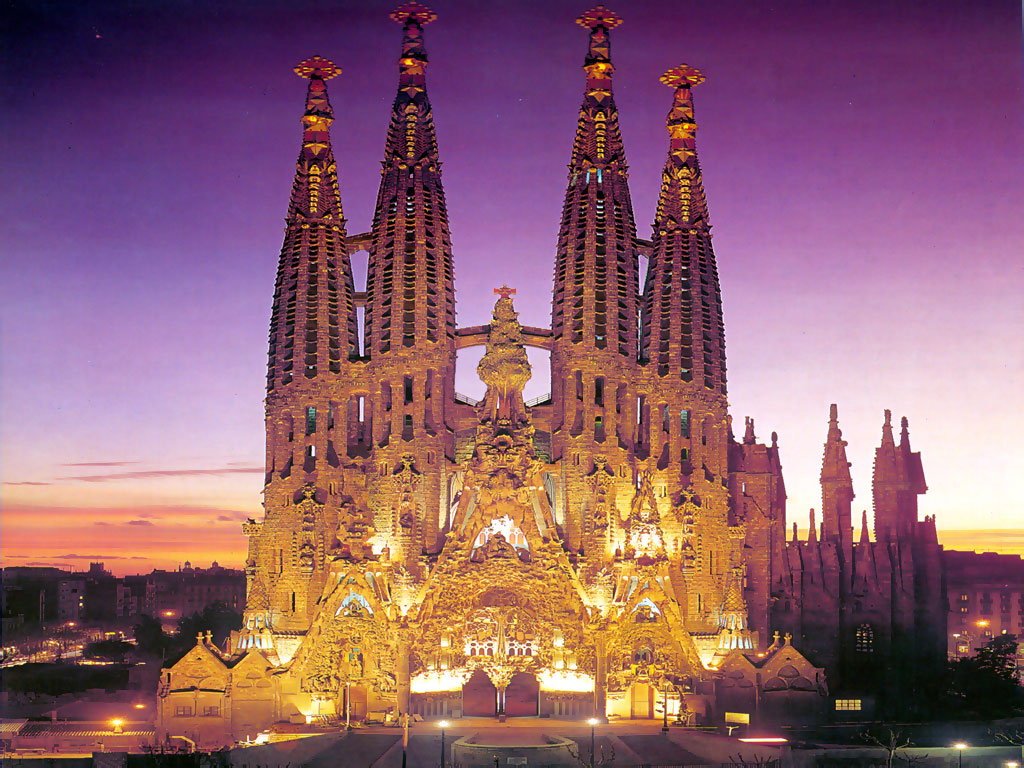
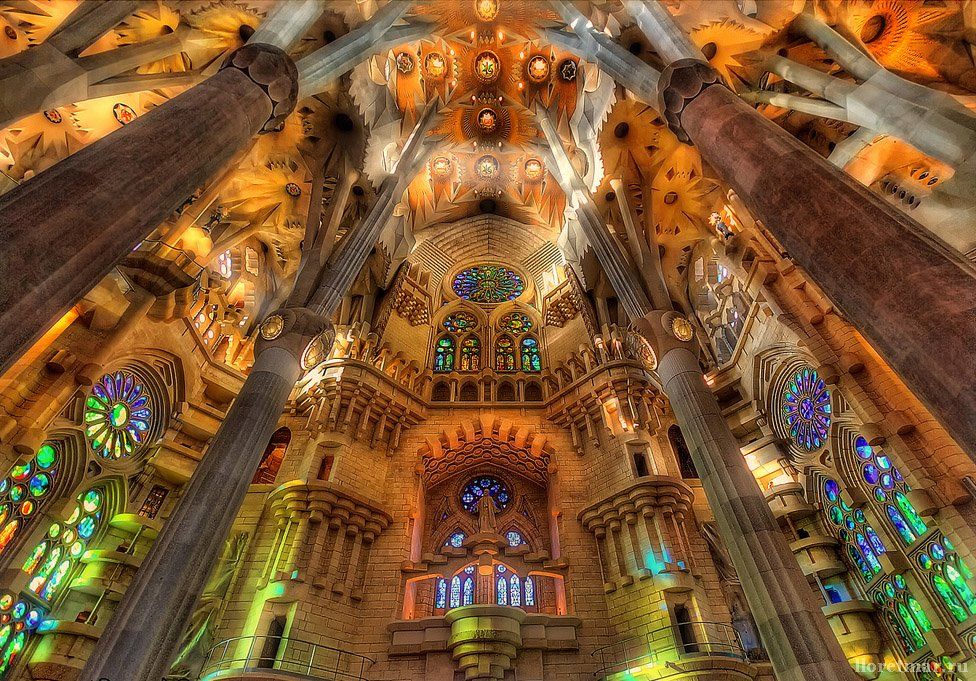 00
00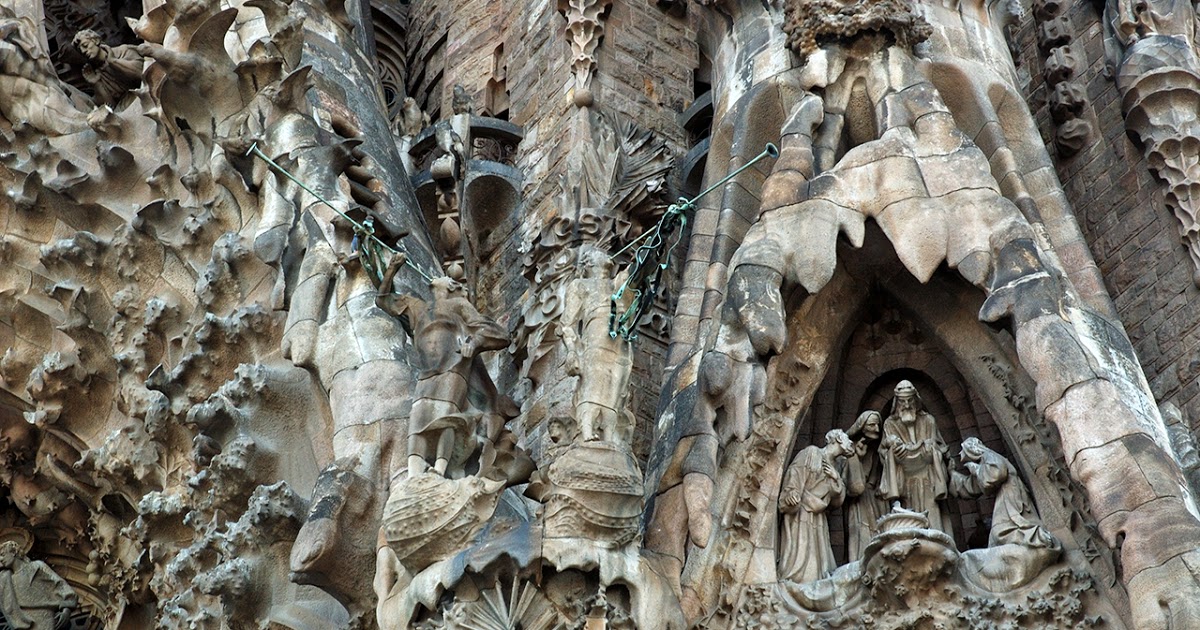
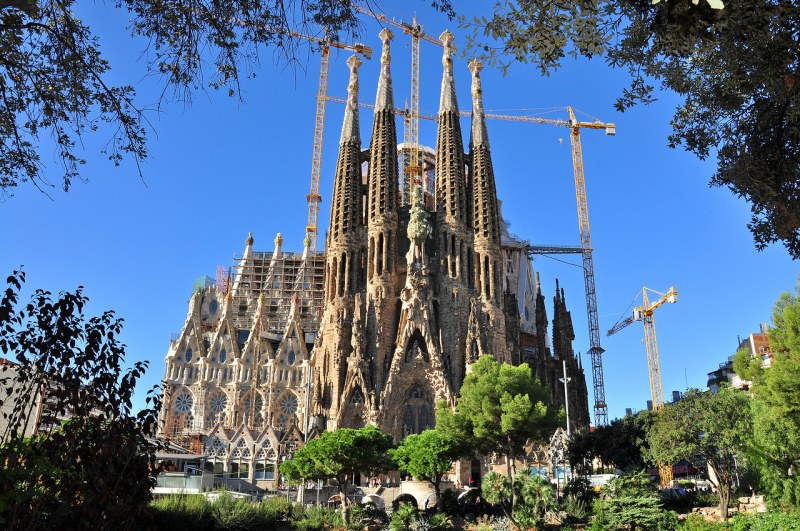 It is an unexpected sight in its urban setting, with its bold flying buttresses and twisted towers looming over the city.
It is an unexpected sight in its urban setting, with its bold flying buttresses and twisted towers looming over the city.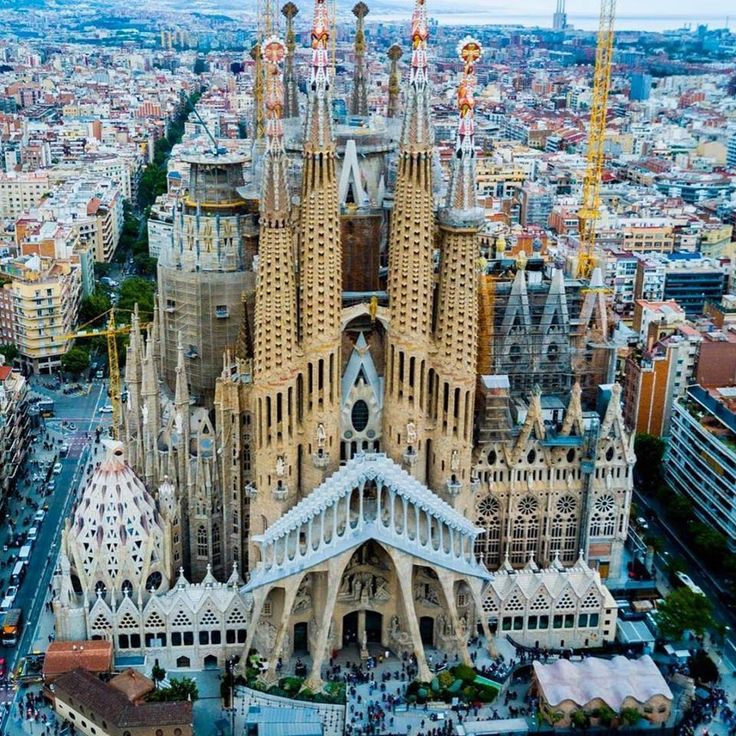
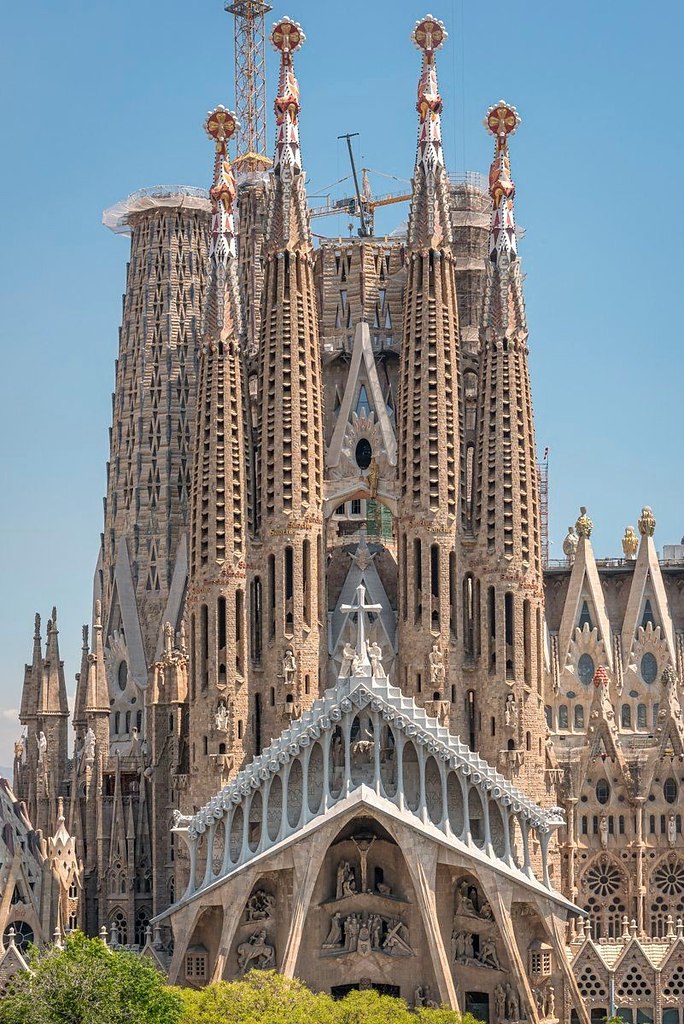 Each of the three facades is flanked by four bell towers representing the Apostles; the traitor Judas and the evangelists St. John and St. Matthew are replaced by St. Barnabas, St. Matthias, and St. Paul. The six central towers, representing Jesus and Mary surrounded by the four evangelists, serve as lanterns for the main nave and let light in from above.
Each of the three facades is flanked by four bell towers representing the Apostles; the traitor Judas and the evangelists St. John and St. Matthew are replaced by St. Barnabas, St. Matthias, and St. Paul. The six central towers, representing Jesus and Mary surrounded by the four evangelists, serve as lanterns for the main nave and let light in from above.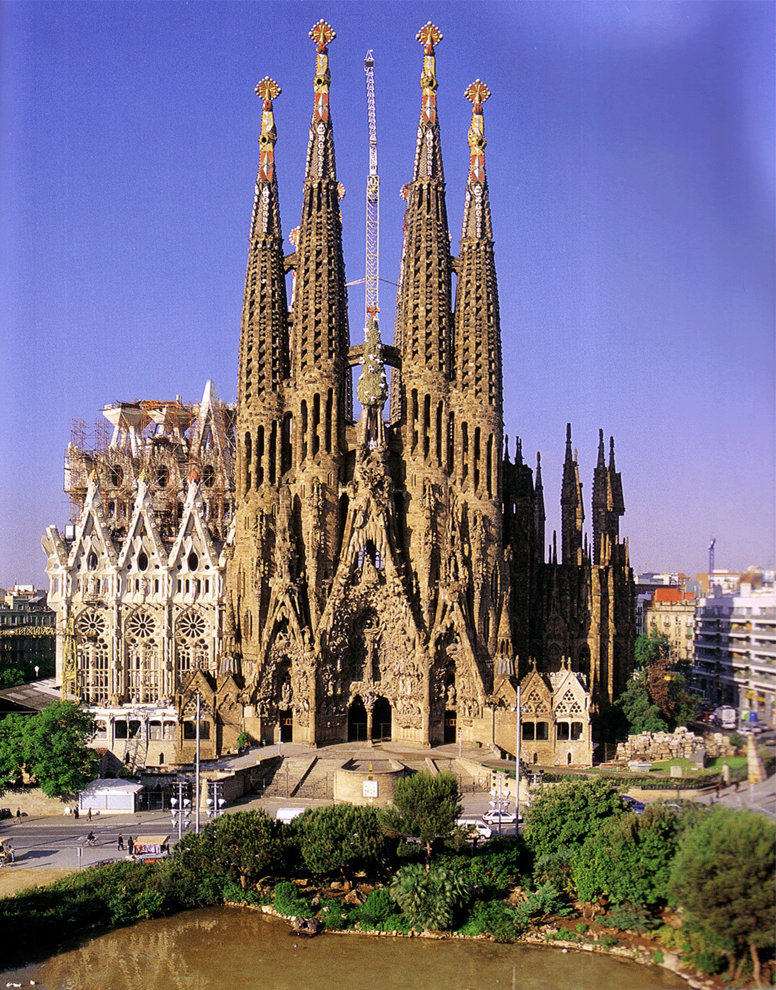
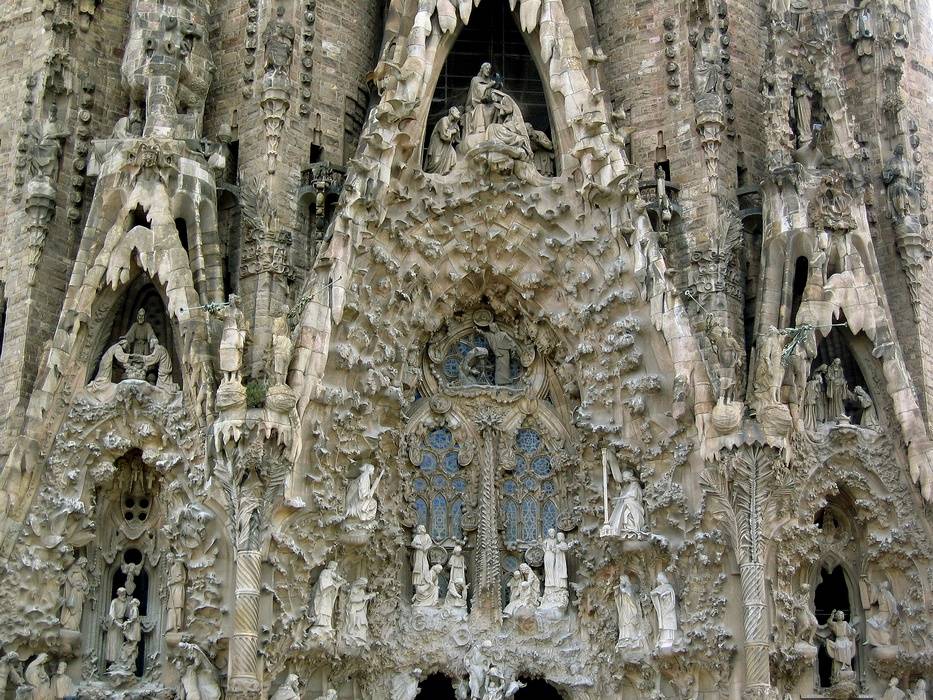 Mark and St. Luke were completed; they measure 135 metres (443 feet) tall. The remaining towers and most of the church’s structure were planned to be completed by 2026, the centennial of Gaudí’s death. It is expected to be the tallest church building in the world.
Mark and St. Luke were completed; they measure 135 metres (443 feet) tall. The remaining towers and most of the church’s structure were planned to be completed by 2026, the centennial of Gaudí’s death. It is expected to be the tallest church building in the world.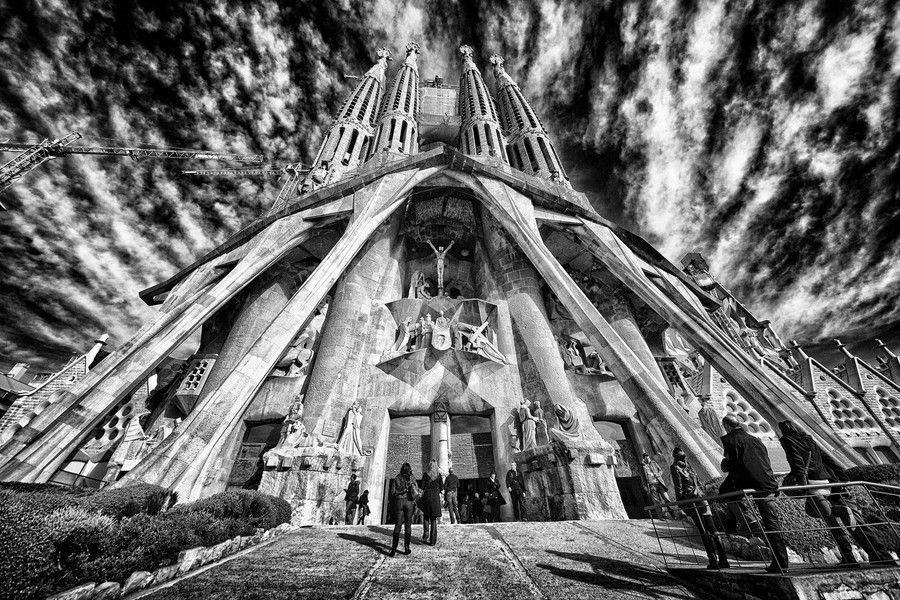
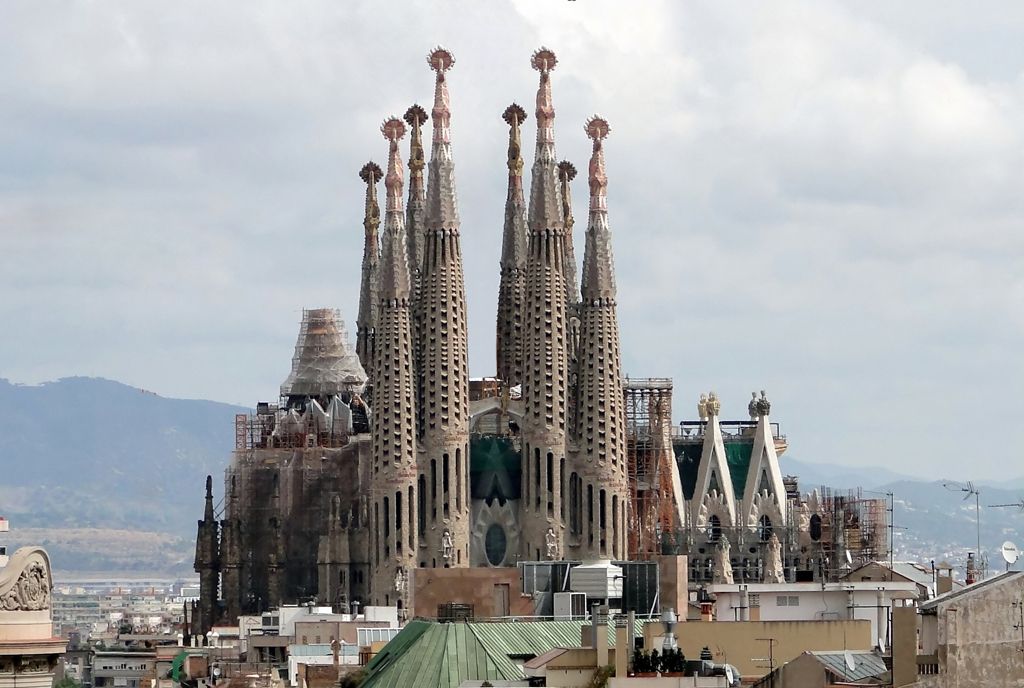 Also, the style of the new part of the building is slightly different from the old parts of the building.
Also, the style of the new part of the building is slightly different from the old parts of the building. 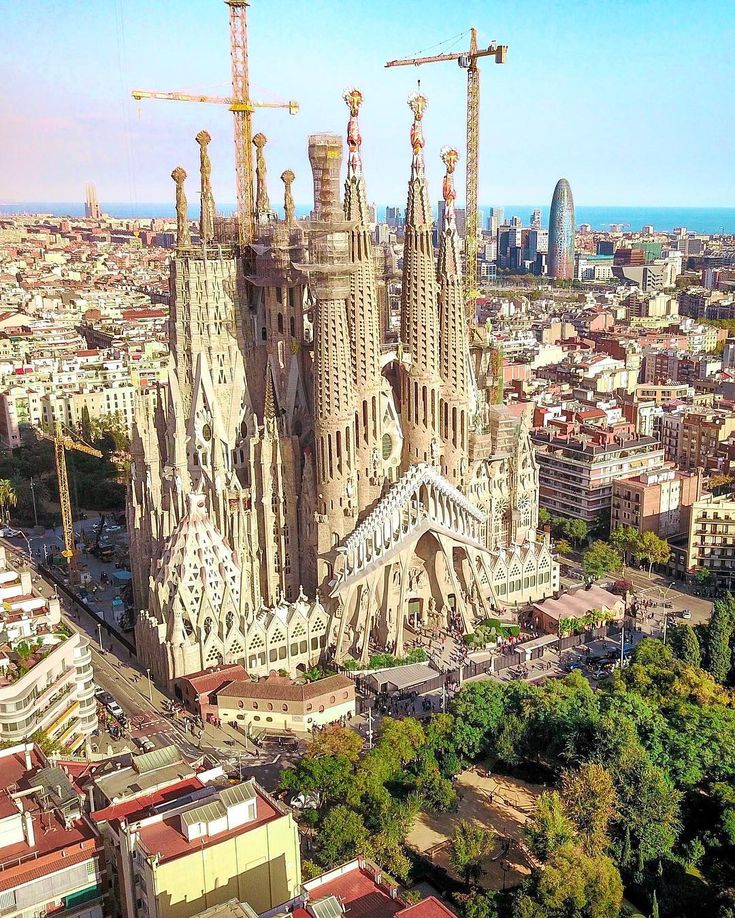
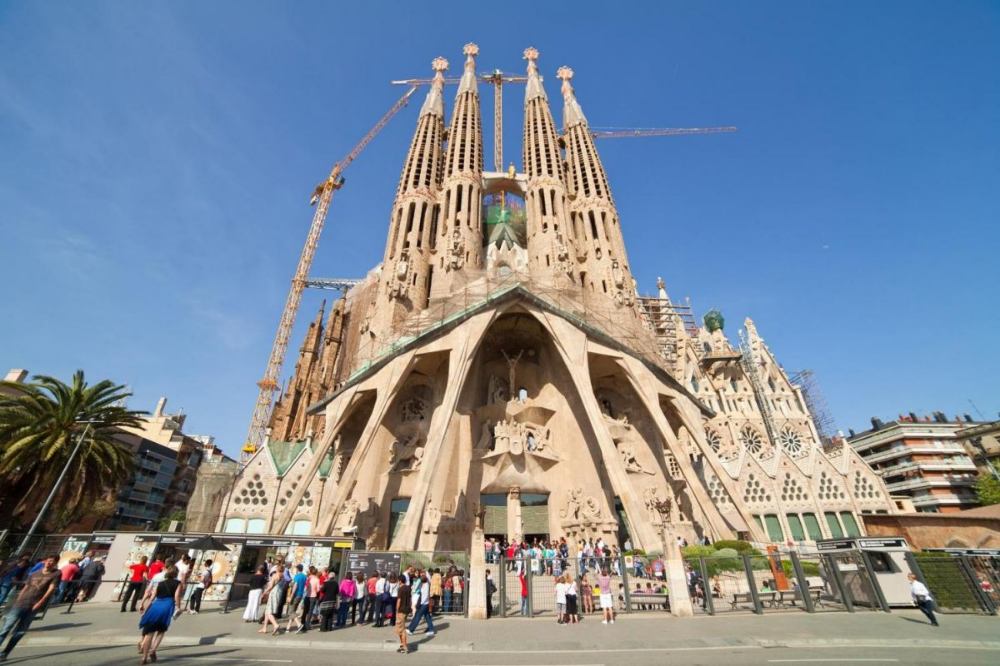 00
00 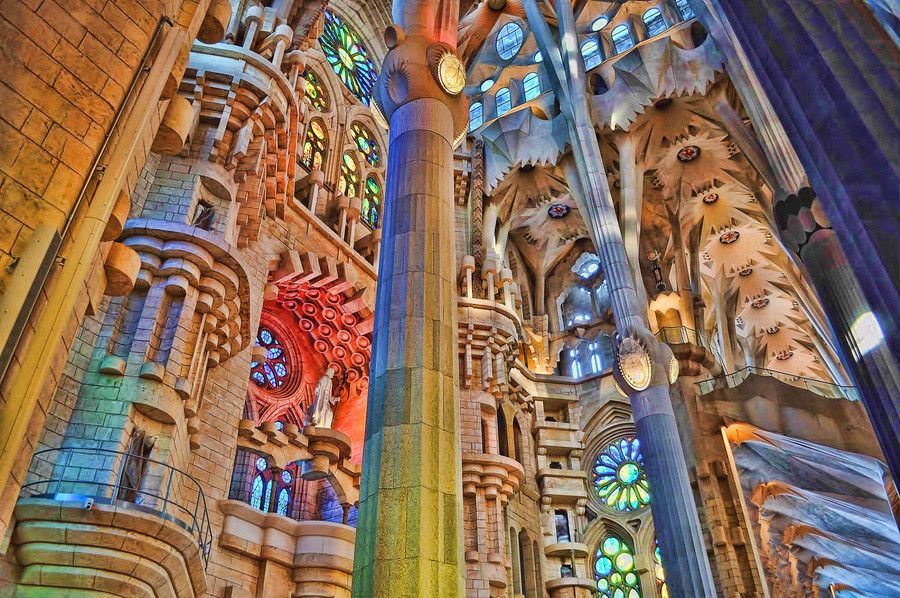
 2 million visitors per year), even the famous Prado Museum in Madrid and the Alhambra Palace in Granada cannot compete with it (2.9and 2.3 million visitors per year, respectively). In 2005, the facade of the Nativity and the crypt of the temple were included in the UNESCO World Heritage List in the section “Creations of Antoni Gaudí”.
2 million visitors per year), even the famous Prado Museum in Madrid and the Alhambra Palace in Granada cannot compete with it (2.9and 2.3 million visitors per year, respectively). In 2005, the facade of the Nativity and the crypt of the temple were included in the UNESCO World Heritage List in the section “Creations of Antoni Gaudí”. 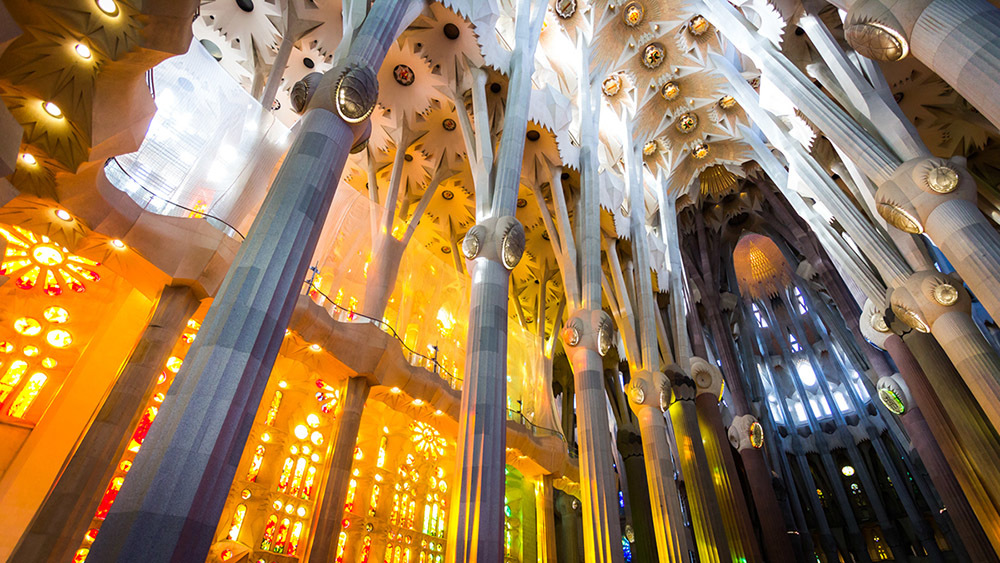 The master devoted his whole life to this project and even lived on the territory of the temple in a room specially equipped for him.
The master devoted his whole life to this project and even lived on the territory of the temple in a room specially equipped for him. 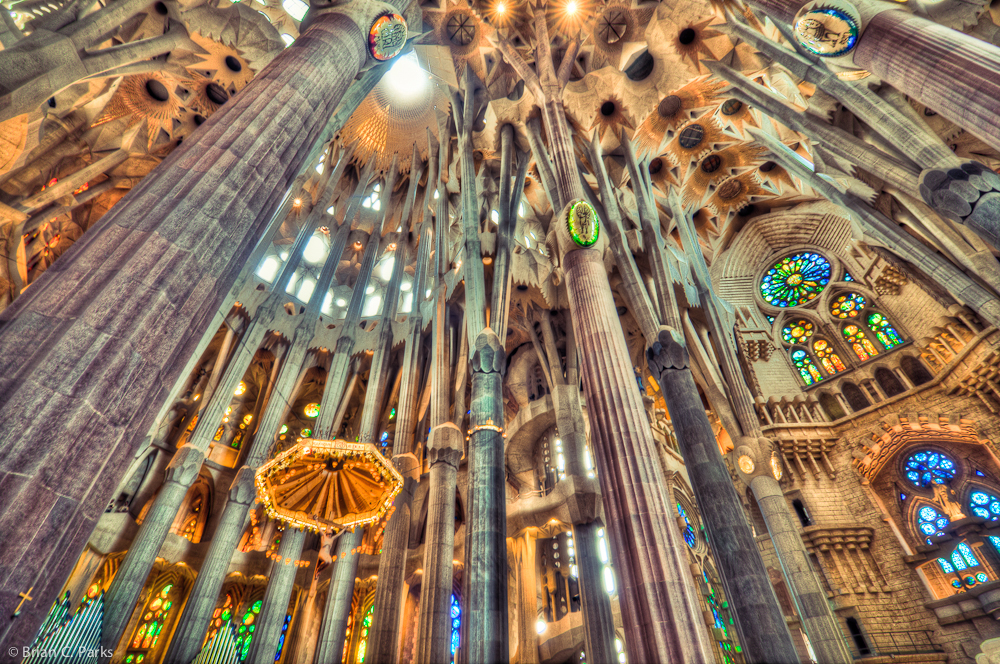 The temple has three facades: the Nativity, the Passion of the Lord and the Ascension of Christ. Upon completion of construction, the temple will be crowned with 18 towers: 4 on each facade, dedicated to 12 apostles; 4 towers in the center in honor of the Evangelists, surrounding the main tower of Jesus Christ; bell tower of the Virgin Mary. The spire of the tower of Jesus Christ will be crowned with a giant cross.
The temple has three facades: the Nativity, the Passion of the Lord and the Ascension of Christ. Upon completion of construction, the temple will be crowned with 18 towers: 4 on each facade, dedicated to 12 apostles; 4 towers in the center in honor of the Evangelists, surrounding the main tower of Jesus Christ; bell tower of the Virgin Mary. The spire of the tower of Jesus Christ will be crowned with a giant cross. 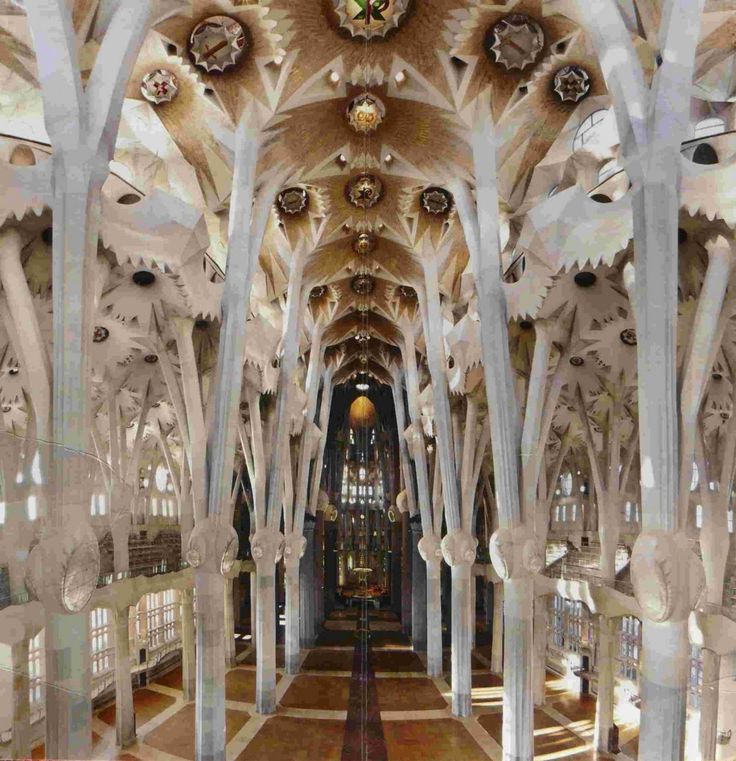 Now the temple is open to everyone, numerous excursions are held here.
Now the temple is open to everyone, numerous excursions are held here. 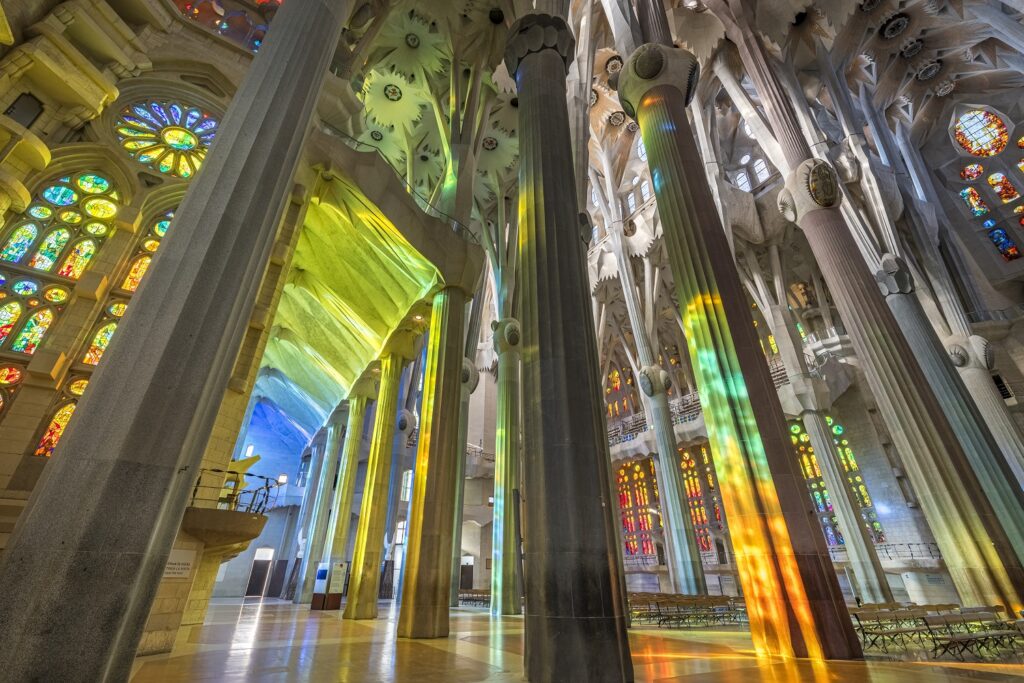
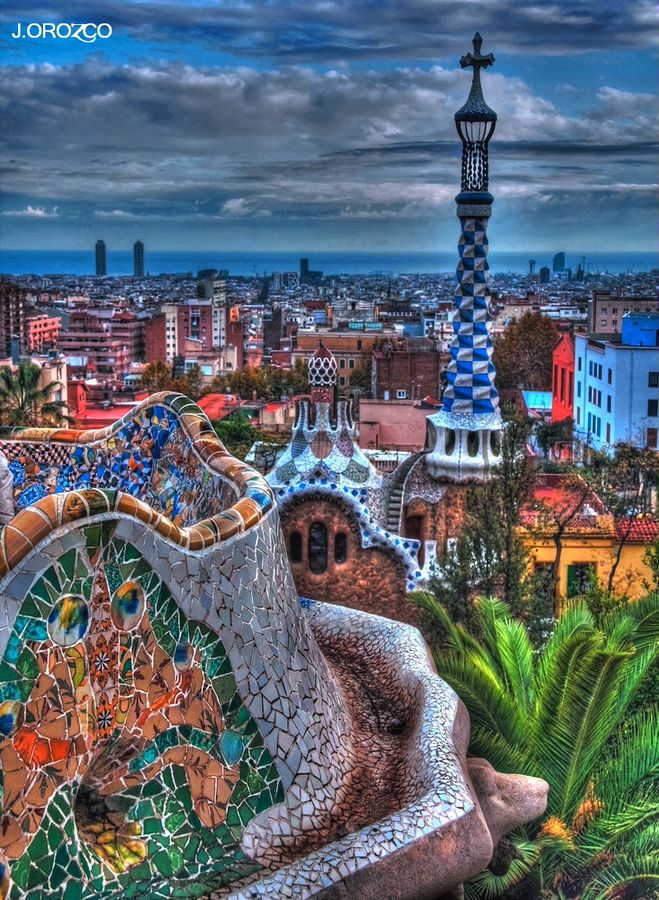
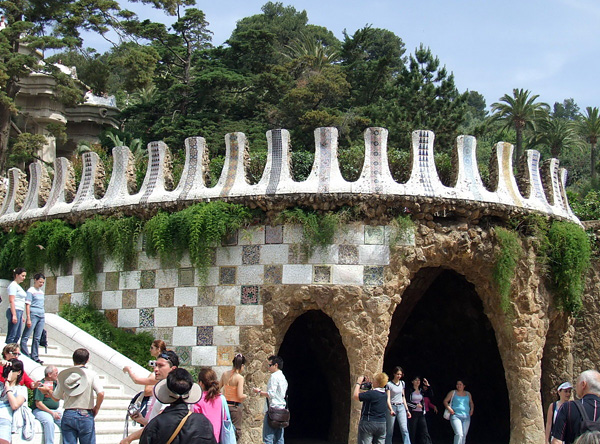
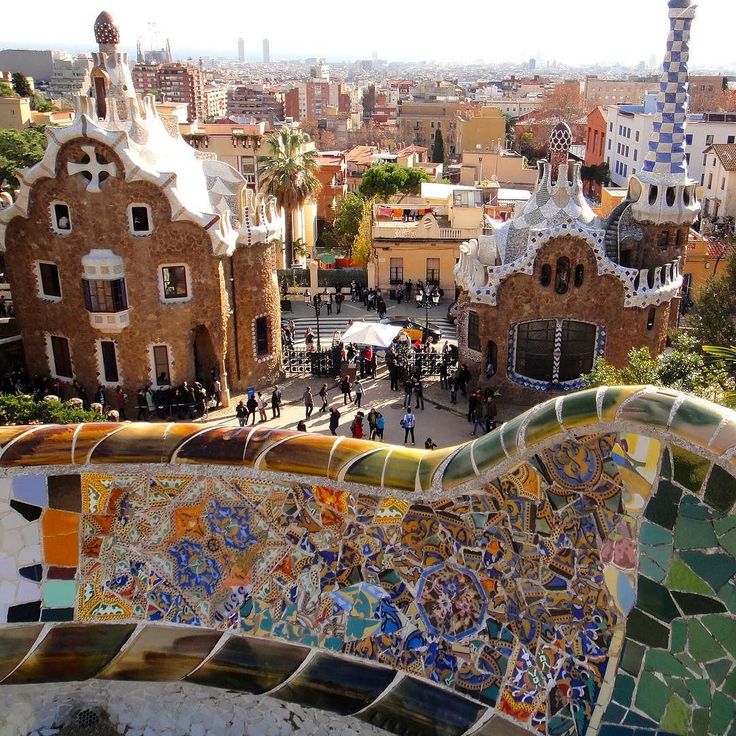
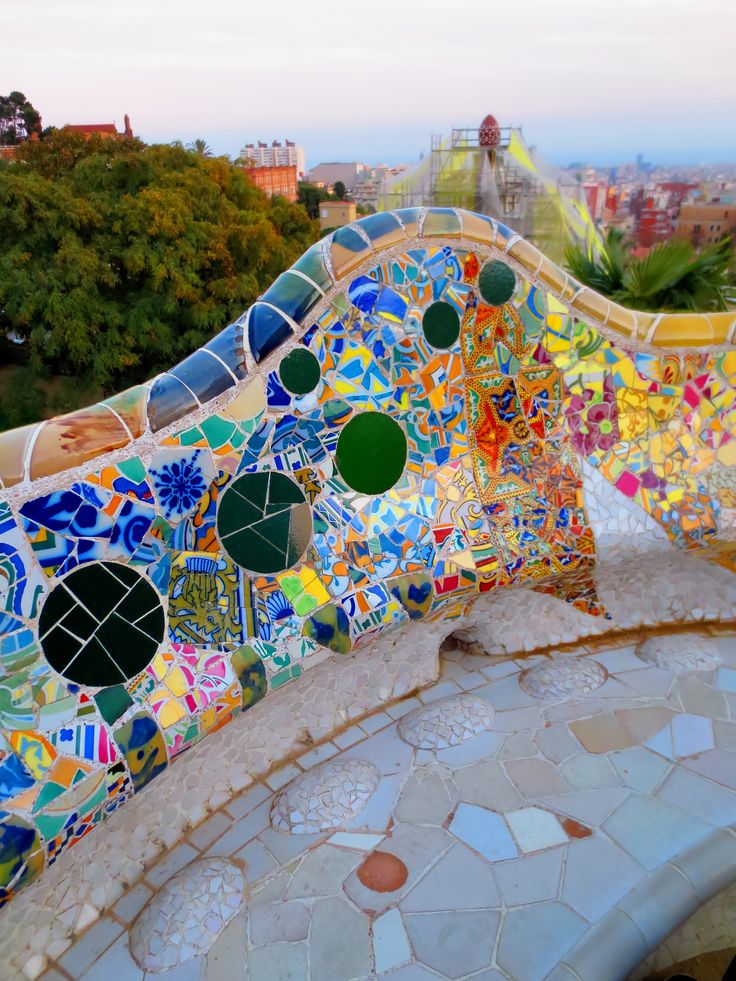
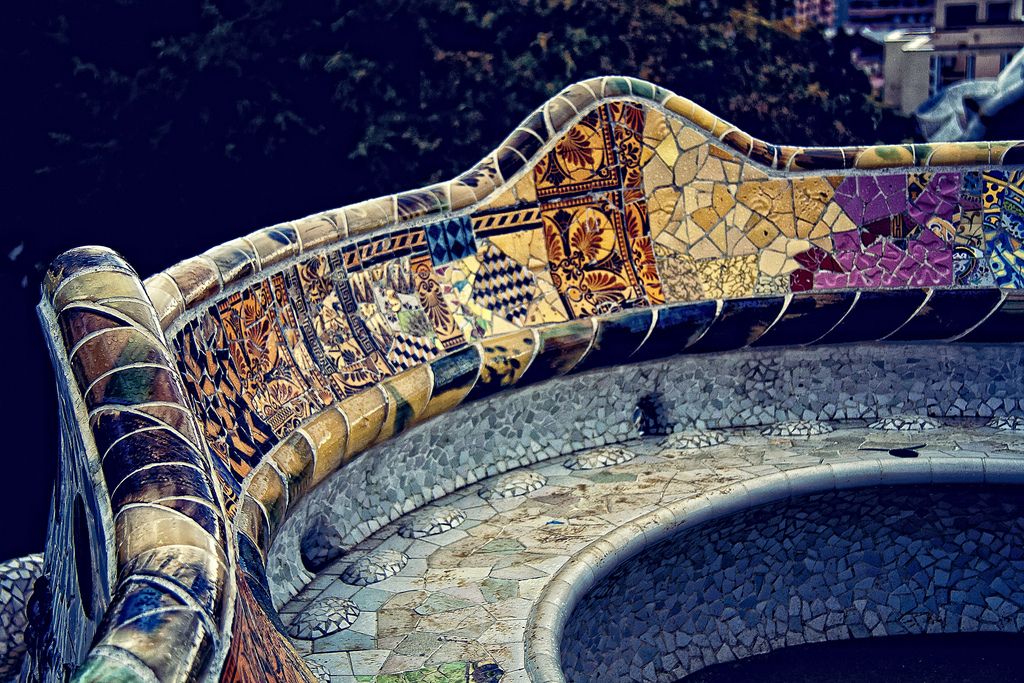
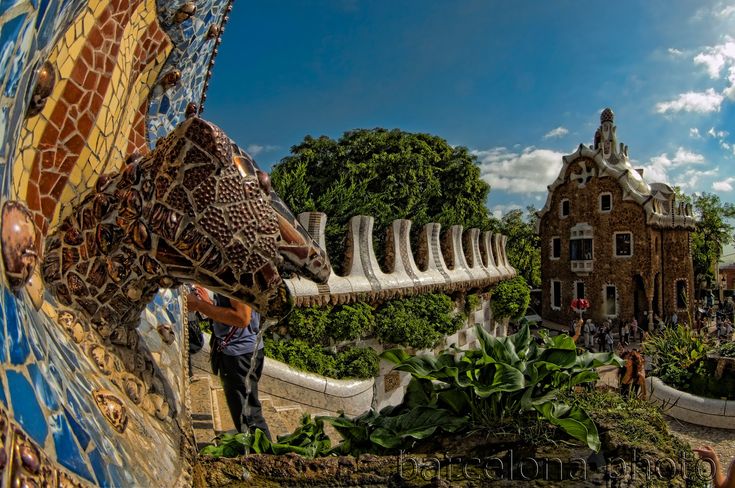
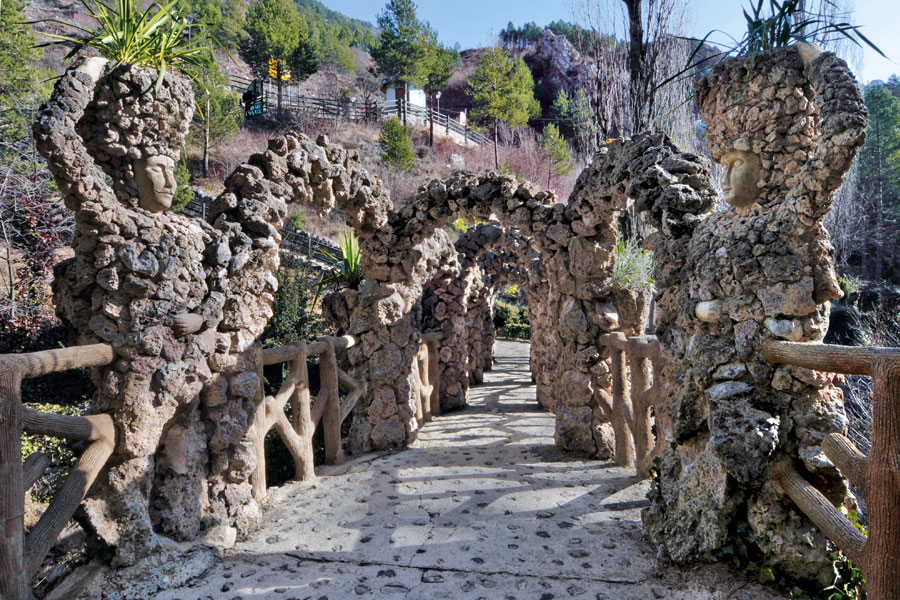 Location on the map.
Location on the map. 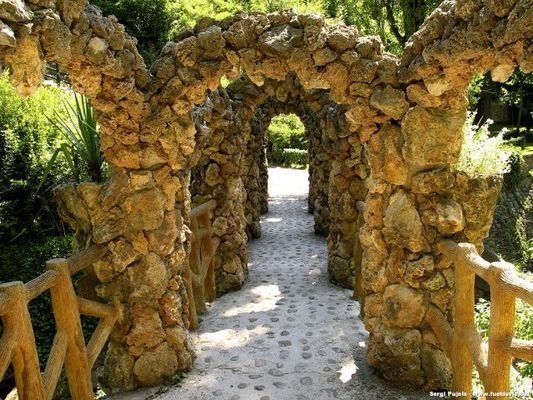 20
20 